Dr. Strangelove
description: a 1964 satirical film directed by Stanley Kubrick about nuclear war and political tensions between the United States and the Soviet Union.
195 results

Space Odyssey: Stanley Kubrick, Arthur C. Clarke, and the Making of a Masterpiece
by
Michael Benson
Published 2 Apr 2018
the flight had been delayed not by hours but by two days: Clarke to Meredith, April 11, 1964. “Its impressive technical virtuosity”: Arthur C. Clarke, “Son of Dr. Strangelove,” unpublished draft, January 23, 1967. where he mingled with: Neil McAleer, Visionary: The Odyssey of Sir Arthur C. Clarke (Baltimore: Clarke Project, 2010), 143. “lovely office on the thirty-second floor”: Clarke to Youd, June 19, 1964. “It was strange, being back in New York”: Clarke, “Son of Dr. Strangelove.” Kubrick arrived on time: LoBrutto, Stanley Kubrick, 261. “a rather quiet, average-height New Yorker”: Clarke, “Son of Dr. Strangelove.” “the somewhat bohemian look”: Jeremy Bernstein, “How About a Little Game,” New Yorker, November 12, 1966.
…
As for Kubrick, Clarke had seen Lolita at the Regal, one of Colombo’s colonial-era movie palaces, and been duly impressed. And as a daily listener to the BBC World Service, he was well aware that Dr. Strangelove was making waves internationally. In fact, just days before Caras’s letter, he’d received one from his rocket engineer friend Val Cleaver—designer of the Blue Streak missile that was supposed to serve as Britain’s nuclear deterrent but was now suffering a slow death due to budget cuts. Cleaver had just seen Kubrick’s new film. Dr. Strangelove is, in a word, a masterpiece. I’d never have believed it possible, and went into the cinema quite hostile and convinced it must be in the worst possible taste; merely curious because of the universal critical praise . . .
…
You can have the most exclusive address in New York—and the Kubricks had recently moved into a penthouse apartment on Lexington Avenue and Eighty-Fourth Street—but you can’t remove yourself from the city air. Still, Kubrick was in an excellent frame of mind. His film Dr. Strangelove, which had been out since late January, was doing exceedingly well, both commercially and critically. On February 5 Variety’s front-page headline had been an all-caps affair: “Flash! Stanley Kubrick’s Dr. Strangelove Breaks Every Opening-Week Record in History of Victoria Theatre (New York), Baronet Theatre (New York), Columbia Theatre (London).” Riding that wave, he was casting about for a new project, writing letters, and had even surprised Christiane by being unusually gregarious socially.
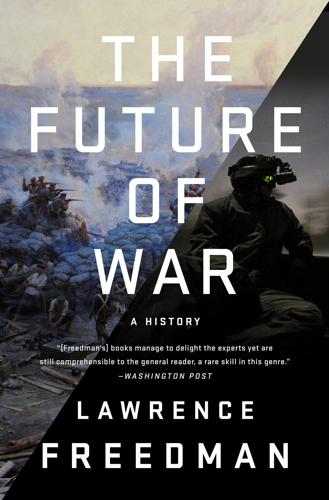
The Future of War
by
Lawrence Freedman
Published 9 Oct 2017
‘Meteors, Mischief, and War’. Bulletin of the Atomic Scientists 16 (1960): 292–296, 300. Schirmer, Jennifer. The Guatemalan Military Project: A Violence Called Democracy. Philadelphia, PA: University of Pennsylvania Press, 1998. Schlosser, Eric. ‘Deconstructing “Dr. Strangelove”’. New Yorker, 18 Jan. 18 2014. Available: http://www.newyorker.com/News/News-Desk/Deconstructing-Dr-Strangelove. Schnabel, Albrecht, and Thakur, Ramesh, eds. Kosovo and the Challenge of Humanitarian Intervention: Selective Indignation, Collective Action, and International Citizenship. New York: United Nations University Press, 2000. Schwab, Peter.
…
Herman Kahn, On Thermonuclear War (Princeton: Princeton University Press, 1960) 144. 25. The actor who played Strangelove, Peter Sellers, modelled him on Wernher von Braun, the German rocket scientist whose skills had been put to use after the war at the Army’s Redstone Arsenal. See Eric Schlosser, ‘Deconstructing “Dr. Strangelove”’, New Yorker, 18 Jan. 18 2014. Available: http://www.newyorker.com/News/News-Desk/Deconstructing-Dr-Strangelove 26. Kahn 228. 27. See Ghamari-Tabrizi. 28. Thomas Schelling, ‘Meteors, Mischief, and War’, Bulletin of the Atomic Scientists 16 (1960): 292–296, 300. 29. Alan Ferguson quoted in Freedman, Strategy 173. CHAPTER 8 1. Albert Wohlstetter, ‘The Delicate Balance of Terror’, Foreign Affairs 37.2 (1959). 2.
…
The implication was that a simple, apparently minor, mechanical failure could have unthinkable, catastrophic effects.20 Both novels were turned into well-regarded movies. The first and most memorable was Red Alert, except that director Stanley Kubrick turned it into a black comedy and renamed it Dr. Strangelove.21 The deranged general responsible for the disaster became Jack D. Ripper, convinced that Russia was seeking to pollute the ‘precious bodily fluids’ of Americans. He was in command of a wing of nuclear-armed B-52 bombers, which he ordered to attack Russia. As the president brought in the Soviet ambassador to warn him of the danger to his country, and to help the Russians shoot down the planes if they could, it transpired that the Soviet Union had created a doomsday device consisting of many buried bombs, laced with cobalt, to be detonated automatically should any nuclear attack strike the country.
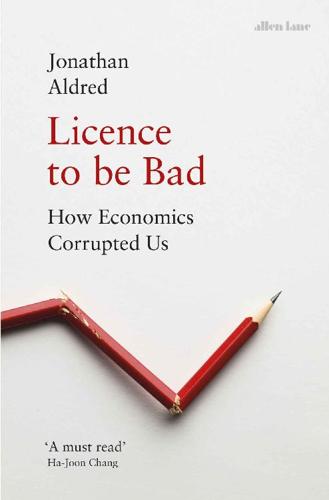
Licence to be Bad
by
Jonathan Aldred
Published 5 Jun 2019
John von Neumann is usually seen as the father of game theory. Nash may have been a genius, but he was almost a mathematical minnow in comparison to von Neumann. DR STRANGELOVE AND THE KAISER’S GRANDSON The 1964 film Dr Strangelove satirized the Cold War with its tale of impending Armageddon triggered by a crazy US air force general launching a nuclear first strike on the USSR. If you have seen the film, it is hard to forget Dr Strangelove himself, gesticulating wildly from his wheelchair in a strange Mitteleuropa accent. Bizarre though it may seem, the film drew heavily on real events. In 1956 President Eisenhower held regular secret meetings with a Hungarian mathematician confined to a wheelchair who would be taken back and forth by limousine to the White House from his bed at Walter Reed Hospital in Washington.
…
The patient was under armed guard day and night because he would frequently descend into deranged babbling, so it was feared he might spill military secrets if an enemy agent could get to his bedside. The patient, in what was to be the last year of his life, was John von Neumann, undoubtedly one of the inspirations for Dr Strangelove. (At one point in the film, Strangelove refers to research by the ‘Bland Corporation’.) Before his tragic decline ‘Johnny’ von Neumann’s genius was so overwhelming that it is hard to summarize. He was a mathematical prodigy: at the age of eight, when given any two eight-digit numbers, he could divide one by the other in his head.
…
Selten argued that some equilibria are inferior because they can only emerge when players make threats which are not credible. For example, the MAD (Mutually Assured Destruction) doctrine of nuclear deterrence relies on nuclear powers threatening catastrophic retaliation in response to a nuclear attack. But the threat is not credible if the recipient of the threat does not believe it would be carried out. In Dr Strangelove the Russians designed their Doomsday machine to trigger catastrophic retaliation automatically and irrevocably once an attack had been detected, removing any possibility of non-retaliation and hence making their threat completely credible.fn3 In business, a monopoly firm in a particular market will often loudly threaten a price war to any firm considering entering the market as a competitor.
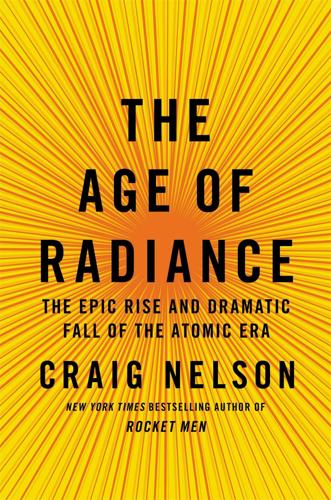
The Age of Radiance: The Epic Rise and Dramatic Fall of the Atomic Era
by
Craig Nelson
Published 25 Mar 2014
In February of 1950, he terrified the American public during a radio broadcast by describing how if cobalt was used as a tamper, a nuclear weapon could be designed that would bring an end to all life on earth, inspiring movie director Stanley Kubrick to fashion cobalt bombs for his satire Dr. Strangelove. Leo wrote to Stalin in 1947, and then to Khrushchev in 1960; Stalin never answered, but Khrushchev said he would meet him on September 27 at the Soviet mission to the United Nations. Szilard was promised fifteen minutes but unsurprisingly to any of his friends, the talk went on for two hours, with Khrushchev finally agreeing to the possibility of an international agency that would limit arms escalation and a communications hotline between the Soviet premier and the American president in case of nuclear crisis. That hotline would also appear in Dr. Strangelove, but would not exist in the real world until the Cuban Missile Crisis and its series of delayed telegrams made it clear to both sides that this was worthwhile.
…
I remember sitting there and repeating that phrase to myself: ‘Only 500 million people!’ ” On Thermonuclear War was one of the key inspirations for Stanley Kubrick’s 1964 Dr. Strangelove, with Peter Sellers’s title character being a mélange of Kahn, Teller, von Neumann, and Nazi rocketeer Wernher von Braun; his Austrian accent was inspired by Kubrick’s photographic consultant, Weegee. So much of Kahn’s book reappears in Dr. Strangelove—in such preposterous moments as George C. Scott’s general explaining, “Mr. President, I’m not saying we wouldn’t get our hair mussed. But I do say no more than ten to twenty million killed, tops, uh, depending on the breaks,” and the strategy of preserving the best of the American species in mine shafts, with two females for each male—that Kahn complained to Kubrick about being paid royalties.
…
And for those concerned about Denver, even though elevated Colorado gets between two and three times the cosmic-shower radiation of New Jersey, cancer rates in New Jersey are higher than they are in Colorado. Irrational. Confusing. Conflicted. These are hallmarks of the whole of nuclear history. What was once an era heralded by Curie, Einstein, and Oppenheimer became degraded to Dr. Strangelove, $50 billion wasted on Reagan’s failed Star Wars, the 1979 partial meltdown at Three Mile Island, the 1986 explosion at Chernobyl, and the 2011 crisis at Fukushima. We are now living in the twilight of the Atomic Age, the end of both nuclear arsenals and nuclear power, yet, simultaneously, radiation has become so ubiquitous in contemporary life that it is nearly invisible, at once everywhere and unnoticed.
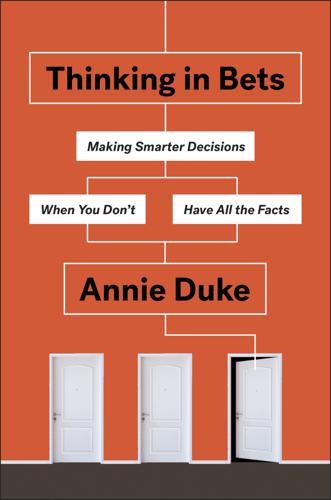
Thinking in Bets
by
Annie Duke
Published 6 Feb 2018
Classification: LCC HD30.6 .D85 2018 | DDC 658.4/0353—dc23 LC record available at https://lccn.loc.gov/2017042666 Version_1 To Lila and Henry Gleitman, generous of heart and intellect CONTENTS Title Page Copyright Dedication INTRODUCTION Why This Isn’t a Poker Book CHAPTER 1 Life Is Poker, Not Chess Pete Carroll and the Monday Morning Quarterbacks The hazards of resulting Quick or dead: our brains weren’t built for rationality Two-minute warning Dr. Strangelove Poker vs. chess A lethal battle of wits “I’m not sure”: using uncertainty to our advantage Redefining wrong CHAPTER 2 Wanna Bet? Thirty days in Des Moines We’ve all been to Des Moines All decisions are bets Most bets are bets against ourselves Our bets are only as good as our beliefs Hearing is believing “They saw a game” The stubbornness of beliefs Being smart makes it worse Wanna bet?
…
Poker players have the same struggle, with the added challenges of time pressure, in-your-face uncertainty, and immediate financial consequences. That makes poker a great place to find innovative approaches to overcoming this struggle. And the value of poker in understanding decision-making has been recognized in academics for a long time. Dr. Strangelove It’s hard for a scientist to become a household name. So it shouldn’t be surprising that for most people the name John von Neumann doesn’t ring a bell. That’s a shame because von Neumann is a hero of mine, and should be to anyone committed to making better decisions. His contributions to the science of decision-making were immense, and yet they were just a footnote in the short life of one of the greatest minds in the history of scientific thought.
…
Even after being diagnosed with cancer in 1955 at the age of fifty-two, he served in the first civilian agency overseeing atomic research and development, attending meetings, though in great pain, in a wheelchair for as long as he was physically able. Despite all he accomplished in science, somehow von Neumann’s legacy in popular culture is as one of the models for the title character in Stanley Kubrick’s apocalyptic comedy, Dr. Strangelove: a heavily accented, crumpled, wheelchair-bound genius whose strategy of relying on mutually assured destruction goes awry when an insane general sends a single bomber on an unauthorized mission that could trigger the automated firing of all American and Soviet nuclear weapons. In addition to everything else he accomplished, John von Neumann is also the father of game theory.
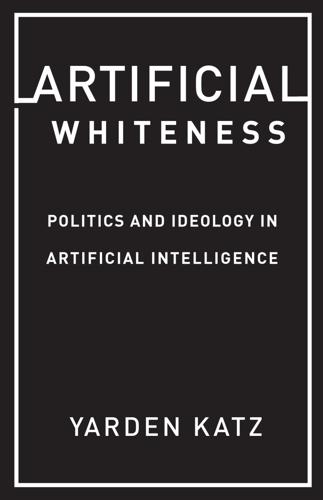
Artificial Whiteness
by
Yarden Katz
In some ways, this epistemic forgery is old and familiar. Stanley Kubrick’s film Dr. Strangelove Or: How I Learned To Stop Worrying And Love The Bomb (1964) cleverly conveys the trickery. As an all-out nuclear war with the Soviets looms, the U.S. president is weighing Dr. Strangelove’s plan to save a limited number of Americans (“a nucleus of human specimens”) in deep mineshafts. Mr. President recognizes the moral dilemma this plan poses: “Well I … I would hate to have to decide … who stays up and … who goes down.” Dr. Strangelove offers a way out: “Well, that would not be necessary Mr. President. It could easily be accomplished with a computer.”
…
It could easily be accomplished with a computer.” But Dr. Strangelove’s next lines undercut the notion, as he struggles to restrain his right arm (apparently having a mind of its own) from launching into a Nazi salute: “A computer could be set and programmed to accept factors from youth, health, sexual fertility, intelligence, and a cross section of necessary skills. Of course it would be absolutely vital that our top government and military men be included to foster and impart the required principles of leadership and tradition.” Dr. Strangelove goes on to justify other arrangements for the hypothetical bunker, notably a ten-to-one ratio of women to men, with the women chosen for possessing “highly stimulating” sexual characteristics (which the men of the war room agree is “an astonishingly good idea”).
…
See also DARPA Department of Homeland Security (DHS), 131–33 Department of Justice, 114, 135, 142, 275n39 Descartes, René, 21, 188, 287n7 Desert Storm, 52 DiAngelo, Robin, 171 Domingos, Pedro, 251n99 Dreyfus, Hubert, 33, 172, 189–93, 198, 203, 206, 238n11, 244nn37–38, 282n48, 287n11, 288nn12–13, 288n16, 288n19, 295n52, 299n79 Dreyfus, Stuart, 191 Dr. Strangelove, 118 Du Bois, W. E. B., 153, 157, 160, 171, 278n18 eBay, 260n39 economic inequality, 10, 63, 128 economics, 193: and neoliberal economics, 201; proximity to AI, 23, 30–31, 203, 259n35. See also neoliberalism Edwards, Paul, 21, 37, 239n20 Ekbia, H. R., 242n20, 295n52 electronic battlefield, 58 Embodied Mind, The, 203–6, 242n20 embodied and situated cognition: as alternatives to mainstream AI and cognitive science, 186–88, 299n79; and the enactive approach, 294n48; as epistemic styles of AI, 242n20; epistemic premises of, 203–7, 291n33, 294n48; militarized frame of, 207–10; shortcomings of, 221–24, 227; social and moral visions of, 187, 202, 205; and the war industry, 191, 216–21 embodiment: of AI systems, 13; of battlefield, 55, 212–16.

Attack of the 50 Foot Blockchain: Bitcoin, Blockchain, Ethereum & Smart Contracts
by
David Gerard
Published 23 Jul 2017
Chapter 7: Spending bitcoins in 2017 Bitcoin is full: the transaction clog Bitcoin for drugs: welcome to the darknet Ransomware Non-illegal goods and services Case study: Individual Pubs Chapter 8: Trading bitcoins in 2017: the second crypto bubble How to get bitcoins From the first bubble to the second Bitfinex: the hack, the bank block and the second bubble Chapter 9: Altcoins Litecoin Dogecoin Ethereum Buterin’s quantum quest ICOs: magic beans and bubble machines Chapter 10: Smart contracts, stupid humans Dr. Strangelove, but on the blockchain So who wants smart contracts, anyway? Legal code is not computer code The oracle problem: garbage in, garbage out Immutability: make your mistakes unfixable Immutability: the enemy of good software engineering Ethereum smart contracts in practice The DAO: the steadfast iron will of unstoppable code Chapter 11: Business bafflegab, but on the Blockchain What can Blockchain do for me?
…
The finest ICO remains PonzICO,326 a piece of “blockchain performance art” wherein earlier contributors are paid directly from later contributors, with the founder taking a meagre 50% off the top. His pitch – “In today’s age, it seems better to promote the plausibility of future profit rather than waste energy on actually delivering”327 – grossed $4000 as of June 2017.328 Chapter 10: Smart contracts, stupid humans Dr. Strangelove , but on the blockchain Smart contracts were originally quite separate from cryptocurrencies and blockchains. They were first proposed by Nick Szabo in 1994.329 You set up a legal agreement in the form of a computer program that triggers when particular conditions are met, and which cannot be interfered with once deployed.
…
Computer code maps very badly to real-world legal agreements, where the hard part is not normal operations, but what to do when things go wrong; immutability means you can’t fix problems, programmers need to write perfect bug-free programs first time every time, and the contract can’t be updated if circumstances or laws change; if the contract acts on real-world data, that data will often need human interpretation. And imagine your money working as reliably as your PC. Dr. Strangelove is the best-known story of an unstoppable smart contract going wrong, immune to human intervention. The US has sent nuclear bombers to the Soviet Union that can only be recalled with a code that nobody has; if any bombs hit, these will trigger the Soviet Union’s deterrent, an unstoppable doomsday device that cannot be dismantled or disarmed, and will explode on any attempt to.
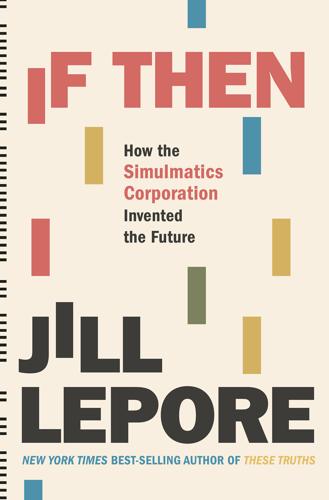
If Then: How Simulmatics Corporation Invented the Future
by
Jill Lepore
Published 14 Sep 2020
This also conveniently established, as would become relevant in court, that Burdick and Wheeler could not defend themselves from charges of plagiarism by saying they had never heard of George’s novel. This tangled legal battle ended in April 1963 when, in an out-of-court settlement, Columbia Pictures took over Fail Safe from ECA and guaranteed that it would not release the film until at least six months after the release of Dr. Strangelove.101 Kubrick’s Dr. Strangelove appeared in theaters in January 1964, Lumet’s haunting adaptation of Fail-Safe eight months later.102 Critics adored Lumet’s film, which was shot as a documentary, in black and white, and released without any musical scoring. Unlike Kubrick’s brilliantly devastating satire, Lumet’s film is dead serious and terrifying, all the more so because it depicts global thermonuclear war as triggered not by human error, as in Strangelove, but by computer error.103 Released in October 1964, Fail Safe failed at the box office.
…
In 1973, the avant-garde German filmmaker Rainer Werner Fassbinder adapted Simulacron-3 into World on a Wire, a terrifying futurist tour de force, a forerunner to the 1999 film The Matrix in which all of humanity lives in a simulation, locked, trapped, deluded, and dehumanized; Matrix’s main character, trying to set humanity free, hides stolen software inside a hollowed-out copy of Jean Baudrillard’s 1981 book, Simulacra and Simulation, a metatext about the meaningless “hell of simulation.”8 In fiction and film, Dr. Frankenstein yielded to Dr. Jekyll and, finally, to Dr. Strangelove, as mad science moved from biology to chemistry to physics. But Simulmatics’ fiction-and-film avatar—the mad scientist of computer science—is wildly outsized, the lengthening shadow of a very small man. The Simulations Enterprises of The 480 is a megacorporation, and the simulectronics specialists in Simulacron-3 are technical geniuses.
…
Upstairs, from the window of the guest room, Susie Greenfield could hear Child call out to her husband, in her inimitable, croaking, high-pitched voice.95 In the Pools’ backyard, Adam and his father set up a playhouse they’d built, in the shape of a miniature geodesic dome.96 The sun streaked through the honeycomb frame, and into their tiny world. Chapter 8 Fail-Safe Computers are too important to be left to the mathematicians. —Eugene Burdick and Harvey Wheeler, Fail-Safe, 1962 Peter Sellers with an IBM 7090 in Stanley Kubrick’s Dr. Strangelove, 1964. The fifteen-story New York Times Building at West Forty-Third Street looked like a bloated French château, with its arches and spires, except for the no-nonsense, sans serif, brightly lit “TIMES” sign bolted to its topmost turret. The building, a block from Times Square, was known as “the Factory,” and, especially out back, it looked like one: its skidded truck bays and greased lifts had for decades hoisted printing presses and line-casting machines and press plates and received shipments of gigantic rolls and reams of paper.

Command and Control: Nuclear Weapons, the Damascus Accident, and the Illusion ofSafety
by
Eric Schlosser
Published 16 Sep 2013
Nevertheless, in the aftermath of the crisis, public anxieties about nuclear war soon focused on the dangers of SAC’s airborne alert. The great risk—as depicted in the 1964 films Fail-Safe and Dr. Strangelove—wasn’t that a hydrogen bomb might accidentally explode during the crash of a B-52. It was that an order to attack the Soviet Union could be sent without the president’s authorization, either through a mechanical glitch (Fail-Safe) or the scheming of a madman (Dr. Strangelove). The plot of both films strongly resembled that of the novel Red Alert. Its author, Peter George, cowrote the screenplay of Dr. Strangelove and sued the producers of Fail-Safe for copyright infringement. The case was settled out of court.
…
And it ended with an apocalyptic metaphor for the arms race, conjuring a Soviet doomsday machine that’s supposed to deter an American attack by threatening to launch a nuclear retaliation, automatically, through the guidance of a computer, without need of any human oversight. The failure of the Soviets to tell the United States about the contraption defeats its purpose, inadvertently bringing the end of the world. “The whole point of the doomsday machine is lost,” Dr. Strangelove, the president’s eccentric science adviser, explains to the Soviet ambassador, “IF YOU KEEP IT A SECRET!” The growing public anxiety about accidental war prompted a spirited defense of America’s command-and-control system. Sidney Hook, a prominent conservative intellectual, wrote a short book dismissing the fears spread by Cold War fiction.
…
And Roswell L. Gilpatric, one of McNamara’s closest advisers, assured readers of the New York Times that any malfunction in the command-and-control system would make it “‘fail safe,’ not unsafe.” Gilpatric also suggested that permissive action links would thwart the sort of unauthorized attack depicted in Dr. Strangelove. In fact, there was nothing to stop the crew of a B-52 from dropping its hydrogen bombs on Moscow—except, perhaps, Soviet air defenses. The Go code was simply an order from SAC headquarters to launch an attack; bombers on airborne alert didn’t have any technological means to stop a renegade crew.

Slouching Towards Bethlehem
by
Joan Didion
Published 1 Jan 1968
(Foreman is a director who at first gives the impression of having a little style, but the impression is entirely spurious, and prompted mostly by his total recall for old Eisenstein effects.) Stanley Kubrick’s Dr. Strangelove, which did have a little style, was scarcely a picture of relentless originality; rarely have we seen so much made over so little. John Simon, in the New Leader, declared that the “altogether admirable thing” about Dr. Strangelove was that it managed to be “thoroughly irreverent about everything the Establishment takes seriously: atomic war, government, the army, international relations, heroism, sex, and what not.”
…
I doubt that more can be expected of the motion-picture industry. Men who do have interesting individual voices have for some time now been making movies in which those voices are heard; I think of Elia Kazan’s America America, and, with a good deal less enthusiasm for the voice, of Stanley Kubrick’s Dr. Strangelove. But it is not only the “interesting” voices who now have the opportunity to be heard. John Frankenheimer was quoted in Life as admitting: “You can’t call Hollywood ‘The Industry’ any more. Today we have a chance to put our personal fantasies on film.” Frankenheimer’s own personal fantasies have included All Fall Down, in which we learned that Warren Beatty and Eva Marie Saint were in love when Frankenheimer dissolved to some swans shimmering on a lake, and Seven Days in May, which, in its misapprehension of the way the American power elite thinks and talks and operates (the movie’s United States Senator from California, as I recall, drove a Rolls-Royce), appeared to be fantasy in the most clinical sense of that word.
…
Variety) spoof of international relations; the army as a laugh line has filtered right down to Phil Silvers and “Sergeant Bilko”; and, if “government” is something about which the American Establishment is inflexibly reverent, I seem to have been catching some pretty underground material on prime time television. And what not. Dr. Strangelove was essentially a one-line gag, having to do with the difference between all other wars and nuclear war. By the time George Scott had said “I think I’ll mosey on over to the War Room” and Sterling Hayden had said “Looks like we got ourselves a shootin’ war” and the SAC bomber had begun heading for its Soviet targets to the tune of “When Johnny Comes Marching Home Again,” Kubrick had already developed a full fugue upon the theme, and should have started counting the minutes until it would begin to pall.
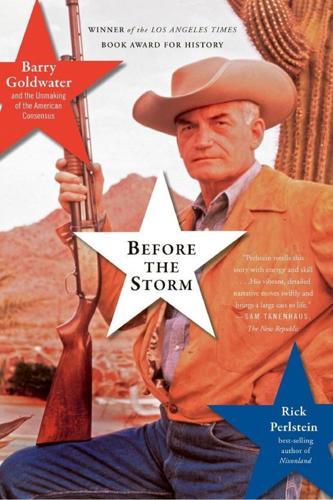
Before the Storm: Barry Goldwater and the Unmaking of the American Consensus
by
Rick Perlstein
Published 17 Mar 2009
“For some it’s a General Walker. Now it’s a General Scott.” He might as well have been saying “It’s a Barry Goldwater.” Seven Days in May was a soppy morality play whose power to move minds paled in comparison to a third film gracing the screens of the nation as the New Hampshire primary hit its stride. Dr. Strangelove, Or: How I Learned to Stop Worrying and Love the Bomb was a war picture. But the country that heard Jimmy Stewart, in Strategic Air Command, exclaim of his B-47, “She’s the most beautiful thing I’ve ever seen in my life!” had never seen a war picture like this. It was a slapstick comedy, whose subject was the damaged psyche of an age.
…
The secretary of defense tied himself in knots to explain that stalemate—a “balance of terror”—and not superiority was a better goal, because an increase in our nuclear capability might be interpreted by Russia as enough to destroy their second-strike capability, perhaps to provoke a surprise preemptive strike out of fear America might do it first and leave the Soviets without the means to defend themselves. Though, spoken out loud, the idea sounded rather insane. Dr. Strangelove’s director, Stanley Kubrick, paid very close attention to these sorts of things. For years his bedside reading had been treatises thick with the mathematical formulae of “game theory,” purporting to rationally explain the best strategies to deter a nuclear war—or, should it come to that, to win one.
…
As the simpering President (he looks like Adlai Stevenson) fervidly negotiates with the Soviet premier over the phone to convince him not to unleash his arsenal in retaliation, the Soviet ambassador steps into the room to explain the futility of the entire discussion: Any nuclear explosion over the Motherland, he dryly explains, will automatically set off a new, top secret “doomsday machine” with the power to destroy all life on earth. Out of the shadows glides a queer man in a wheelchair—Dr. Strangelove, America’s director of weapons research—who muses, impressed, in a thick German accent (suggesting at once the three towering emigre giants of American strategic thinking: Edward Teller, Harvard professor Henry Kissinger, and Herman Kahn, whose boast that America could limit its casualties in a nuclear exchange to a mere twenty million people inspired the movie’s best joke) about how perfectly logical all of it is.
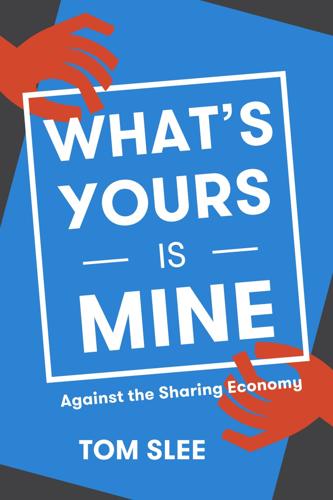
What's Yours Is Mine: Against the Sharing Economy
by
Tom Slee
Published 18 Nov 2015
January 3, 2015. http://www.economist.com/news/briefing/21637355-freelance-workers-available-moments-notice-will-reshape-nature-companies-and?fsrc=scn/tw_ec/there_s_an_app_for_that. Tiku, Nitasha. “Airbnb’s New Office Has a Replica of the Dr. Strangelove War Room.” Valleywag, December 3, 2013. http://valleywag.gawker.com/airbnbs-office-has-a-replica-of-the-dr-strangelove-wa-1475788543. ———. “Uber and Its Shady Partners Are Pushing Drivers into Subprime Loans.” Valleywag. Accessed May 31, 2015. http://valleywag.gawker.com/uber-and-its-shady-partners-are-pushing-drivers-into-su-1649936785. Titmuss, Richard M., and Ann Oakley.
…
Given that most of the Airbnb activity takes place in Manhattan and Brooklyn where multiple-dwelling buildings predominate, it seems likely that a majority of Airbnb listings, and over two-thirds of its income, came from Entire Home rentals that were breaking New York’s short-term rental law. Airbnb has built a replica of the original apartment’s living room in its headquarters (along with a replica of the war room from Dr. Strangelove)19 but that living room no longer represents the company’s business. The Private Room rentals, represented on the company web site by pictures of hosts welcoming guests to their dinner table, have also been relegated to a minority. Most of Airbnb’s money comes from exchanges where the host and guest may never meet except to exchange a key.
…
Schneiderman; Internet Association, “The Internet Association Files Amicus Brief to Quash the NYAG Subpoena against Airbnb.” 15 Chesky, “Who We Are, What We Stand for.” 16 Tam, “New York AG’s Office.” 17 Flamm, “Strange Bedfellows in Airbnb Dispute.” 18 Krueger, “On Behalf of Regular New Yorkers, Sen. Krueger Responds to Airbnb’s ‘Three Principles.’” 19 Tiku, “Airbnb’s New Office Has a Replica of the Dr. Strangelove War Room.” 20 The Office of New York State Attorney General Eric T. Schneiderman, “Airbnb in the City.” 21 Airbnb, “Airbnb’s Economic Impact on New York City.” 22 Bingham, “The Sharing Economy: Q&A With Airbnb’s Chip Conley.” 23 UNWTO, “Annual Report 2013.” 24 Kassam, “Naked Italians Spark Protests against Antics of Drunken Tourists in Barcelona.” 25 Essers, “Amsterdam Using Airbnb Listing Service to Identify Illegal Rentals.” 26 Haverkort, “Airbnb Is Allowed in Amsterdam.” 27 Hantman, “Good News from Amsterdam.” 28 News, “Amsterdammers Can Rent Their Homes to Tourists via Airbnb after All.” 29 Hantman, “More Good News in Amsterdam.” 30 News, “Amsterdammers Can Rent Their Homes to Tourists via Airbnb after All.” 31 van Daalen, “Airbnb to Collect Tourist Taxes in Amsterdam.” 32 News, “Amsterdammers Break Airbnb Rules: Long Lets with Too Many People.” 33 Robinson, “Moving Forward in Barcelona.” 34 Robinson, “Update from Barcelona: Airbnb Policy Blog.” 35 Kuchler, “Airbnb to Collect and Remit Taxes for Hosts in Paris.” 36 French, Schechner, and Verbergt, “How Airbnb Is Taking Over Paris.” 37 Schofield, “Short-Let Apartments Spark Paris Row as Airbnb Thrives.” 38 French, Schechner, and Verbergt, “How Airbnb Is Taking Over Paris.” 39 Njus, “Portland Legalizes Airbnb-Style Short-Term Rentals.” 40 Peltier, “Airbnb Faces Big Fines in Portland If Hosts Don’t Get City Permits.” 41 Mesh, “City Commissioner Nick Fish Berates Airbnb Lobbyist.” 42 Davies, “Activists Vow to Buy Abandoned Cinema and Save Rome’s Bohemian Soul.”
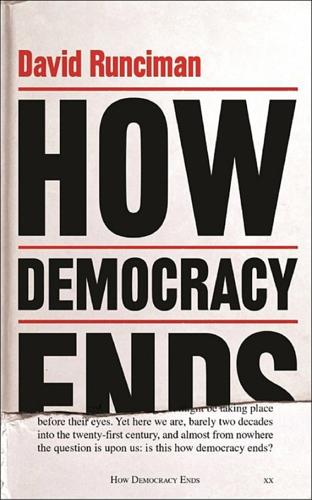
How Democracy Ends
by
David Runciman
Published 9 May 2018
Their case is persuasive. But its democratic credentials are practically non-existent. Nuclear disarmament has been turned into another problem for the grown-ups in the room to resolve. At the height of the Cold War, nuclear weapons were the drivers of political paranoia. Stanley Kubrick’s 1964 masterpiece Dr Strangelove or: How I Learned to Stop Worrying and Love the Bomb is the great cinematic representation of the paranoid style in American politics. It satirised the world of conspiracy theories and it helped to fuel them. The inevitable secrecy of the nuclear state made it ripe for the wildest kinds of suspicion – in the upside-down universe of Mutually Assured Destruction (MAD) nothing was too crazy to be believable.
…
The aim was to ensure that the optimal strategy was pursued at all times. Something as deadly serious as nuclear conflict should be immune from fickle human judgements about who gets to decide what. The best way to achieve that was to treat nuclear deterrence as a kind of game with its own set of rules. This is the approach that Dr Strangelove satirises: in order to save the world we must be prepared to destroy it many times over, if that’s what the game book of nuclear strategy dictates. It’s MAD. But it makes sense in its own terms. Yet game theory and democracy cannot be kept entirely apart. They bleed into each other. This is partly because democracy has turned out to be useful for playing certain kinds of games.
…
The lesson of the Cold War and beyond is that democracy can co-exist with existential risk, but not on terms that make sense to either side. Thinking about the end of the world is too much for democracy to cope with, but not enough to kill it off. Democracy persists, unhappily joined to a partner it cannot really tolerate. This is not the world of Dr Strangelove any more. I have passed time in the company of people who spend their days worrying about existential risk. The researchers into the coming age of intelligent robots, superbugs and planetary destruction are mild-mannered and well-meaning. They have no beef with democracy and when the occasion requires they will pay tribute to its virtues.
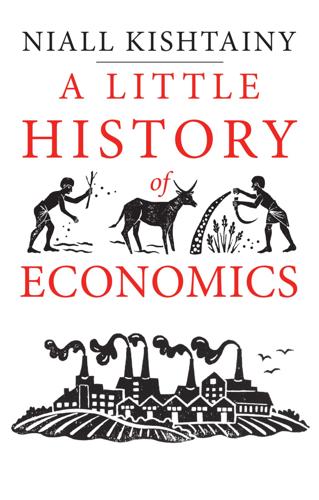
A Little History of Economics
by
Niall Kishtainy
Published 15 Jan 2017
The era became known as the Cold War: the two sides were involved in a huge arms race and threatened each other with deadly nuclear weapons. Dr. Strangelove was a 1964 film that poked fun at the rivalry, and as well as being a gripping story, it’s an excellent introduction to the era of game theory and to some of the basic ideas. During the Cold War, the American military paid for research into areas helpful to national security and game theory was one of them. Many game theorists worked for the RAND (‘research and development’) Corporation, a military research organisation. In the film, Dr Strangelove is the American president’s director of weapons research, an eccentric genius with dark glasses and a funny accent who advises on military tactics.
…
The problem with threats is that they aren’t always believable. You might think that I’ll never follow through on them because low prices would lose me too much money. In the case of Maxwell House and Folger’s, though, the threats worked: Maxwell House succeeded in discouraging Folger’s from expanding into New York City. But the story of Dr. Strangelove shows how hard it is to make effective threats. To discourage a nuclear attack, you tell your enemy that you’ll definitely retaliate. But once your enemy has launched their missile they know you won’t launch yours because two missiles would wipe out life on the planet. In the film, a rogue American general orders a nuclear bomb to be dropped on the Soviet Union.
…
The American president tries to call off the attack, but the general has shut himself off from communications. The president summons the Soviet ambassador who reveals that the Soviets have installed a ‘doomsday machine’, a massive bomb that will destroy all life if detonated. It’s set to go off automatically if an attack is launched on the Soviet Union, and there’s no way of turning it off. Dr Strangelove explains to the president the logic of the machine: by making it automatic and irreversible the machine creates a believable threat and so should deter your enemy from attacking. The film’s grim joke is that this works only if everyone knows about it: ‘Vy didn’t you tell za vorld?!’ yells Strangelove at the ambassador.

Winds of Change
by
Peter Hennessy
Published 27 Aug 2019
Nearby is the Map Room, from where, had they reached Box Hill in time, the nuclear retaliation decision would have been taken – the most thought-provoking part of the vast site. It’s about fifty feet long and thirty feet wide, lit with fluorescent tubes and with a large whiteboard at one end (perhaps the British equivalent of Dr Strangelove’s ‘Big Board’ in the classic 1964 Stanley Kubrick/Peter Sellers film of that name24). Overlooking it is a viewing area – a decision-takers’ gallery that old Cabinet Office hands believe is where the Prime Minister, advised by the Chief of the Defence Staff, would have made the awesome decision whether or not to authorize nuclear release.25 The nearest I came to this extraordinary place in my Cotswolds years was as the snow melted in March 1963.
…
It could mean that he could blunder into war another time.’269 This was the spirit in which Whitehall conducted its ‘Post-Cuba Review of War Book Planning’, which Macmillan commissioned the Cabinet’s Home Defence Committee to undertake ‘in order’, he explained to the new Cabinet Secretary, Sir Burke Trend (Brook retired in January 1963), ‘to ensure that it was sufficiently flexible to enable us to act quickly and appropriately to a sudden emergency, in which we might have no more than two or three days’ warning of the outbreak of war.’270 A number of changes resulted, including a power whereby the Prime Minister could institute the Precautionary Stage without consulting the Cabinet.271 The HDC also oversaw the drafting of an Emergency Powers (Defence) Bill, to be rushed through Parliament in the last hours of peace, that would pass their powers to a War Cabinet and the dozen ministers in charge of the twelve regional seats of government with drastic responsibilities involving life, death, money, food and property after an attack so ‘as to amount to a voluntary abdication by Parliament of the whole of their functions for the period of the emergency’.272 As we have seen, there was to be no bunker for MPs and peers. While the Cabinet’s Home Defence Committee absorbed the practical significance of Cuba in the deepest Whitehall secrecy, Stanley Kubrick pondered it in film, which led to his enduring classic and masterpiece Dr Strangelove, or, How I Learned to Stop Worrying and Love the Bomb, which was first screened in 1964.273 But the Cuban missile crisis has never ceased to be good box office. Roger Donaldson’s Thirteen Days, when it appeared in 2000 (2001 in the UK), grippingly portrayed Kennedy’s handling of his military advisers on Excomm as they pressed for a swift air strike against the missile sites on Cuba.274 Strangelove is about a Third World War-by-accident caused by an insane Strategic Air Command General, Jack Ripper, sending his B-52s beyond their start lines to their targets in Russia and the failure of command-and-control systems when a near-wrecked aircraft, captained by the unforgettable Texan Major Kong (Slim Pickens), whose radio communications have been destroyed, drops its H-bomb (with a Stetsoned Kong riding it down like a bronco) on a Soviet missile base.
…
Roger Donaldson’s Thirteen Days, when it appeared in 2000 (2001 in the UK), grippingly portrayed Kennedy’s handling of his military advisers on Excomm as they pressed for a swift air strike against the missile sites on Cuba.274 Strangelove is about a Third World War-by-accident caused by an insane Strategic Air Command General, Jack Ripper, sending his B-52s beyond their start lines to their targets in Russia and the failure of command-and-control systems when a near-wrecked aircraft, captained by the unforgettable Texan Major Kong (Slim Pickens), whose radio communications have been destroyed, drops its H-bomb (with a Stetsoned Kong riding it down like a bronco) on a Soviet missile base. The Soviets’ fictional ‘doomsday machine’ on an island in the Arctic then proceeds to retaliate automatically. And, as the world ends, the sinister ex-Nazi scientific adviser Dr Strangelove (Peter Sellers) advises the US President (also Peter Sellers) to retreat to a deep mineshaft, with a surplus of beautiful women, to sit out the radiation while a new master race is bred below ground. The film is full of glorious one-liners, the best being the President’s outburst as General Buck Turgidson (George C.
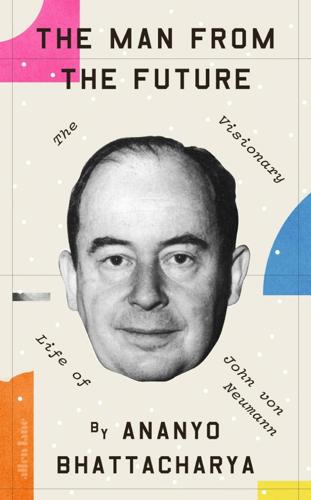
The Man From the Future: The Visionary Life of John Von Neumann
by
Ananyo Bhattacharya
Published 6 Oct 2021
That book would change economics, make game theory integral to fields as disparate as political science, psychology and evolutionary biology and help military strategists to think about when leaders should – and should not – push the nuclear button. With his unearthly intelligence and his unflinching attitude to matters of life and death, von Neumann was one of a handful of scientists who inspired the iconic Stanley Kubrick character Dr Strangelove. After the atom bombs he helped to design were dropped on Hiroshima and Nagasaki, von Neumann turned his efforts to building possibly the world’s first programmable electronic digital computer, the ENIAC. Initially his aim was to calculate whether or not it would be possible to build a more powerful bomb – the hydrogen bomb.
…
The RAND study, entitled Selection and Use of Strategic Bases, proved completely unpalatable to the Air Force.74 Wohlstetter’s team briefed officials on over ninety occasions but met near-uniform intransigence. ‘I hope none of you are taken in by all this slide-rule razzmatazz,’ one colonel scoffed after hearing their presentation. A major obstacle proved to be SAC’s chief, the cigar-chomping Curtis LeMay, who would serve as a model for a couple of the bellicose generals in Dr Strangelove. Even more uncompromising than Arnold, LeMay had led the Twentieth Air Force’s campaign of carpet-bombing Japanese cities. ‘All war is immoral,’ he once declared. ‘If you let that bother you, you’re not a good soldier.’ LeMay’s preferred nuclear strategy, the ‘Sunday Punch’, was ‘Massive Retaliation’ by another name: a no-holds-barred attack on the Soviet Union with every atom bomb at SAC’s disposal in response to any aggression.
…
The table, headed ‘Tragic but Distinguishable Postwar States’, listed numbers of dead (from 2 to 160 million) against the time Kahn thought that the economy would take to recover (up to 100 years). It was the sort of blithe strategizing that Stanley Kubrick, who read Kahn’s book closely, would satirize so brilliantly in Dr Strangelove.83 ‘Now, the truth is not always a pleasant thing,’ says the film’s ultra-hawkish general, Buck Turgidson, as he makes the case for a massive strike on the Soviet Union, but it is necessary now to make a choice, to choose between two admittedly regrettable, but nevertheless distinguishable postwar environments: one where you got twenty million people killed, and the other where you got a hundred and fifty million people killed … Mr President, I’m not saying we wouldn’t get our hair mussed.
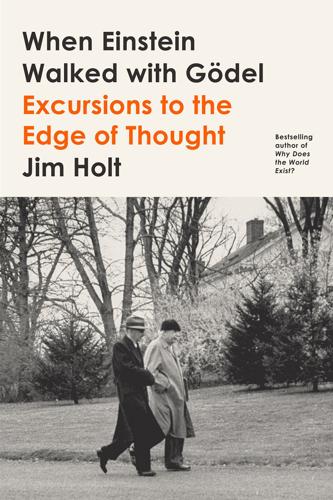
When Einstein Walked With Gödel: Excursions to the Edge of Thought
by
Jim Holt
Published 14 May 2018
Perhaps, Leavitt invites us to imagine, the message Turing wanted to convey is one that has so far been overlooked: “In the fairy tale the apple into which Snow White bites doesn’t kill her; it puts her to sleep until the Prince wakes her up with a kiss.” This note of macabre camp doesn’t suit a man who eschewed all forms of egoistic fuss as he solved the most important logic problem of his time, saved countless lives by defeating a Nazi code, conceived the computer, and rethought how mind arises from matter. 16 Dr. Strangelove Makes a Thinking Machine The digital universe came into existence, physically speaking, late in 1950, in Princeton, New Jersey, at the end of Olden Lane. That was when and where the first genuine computer—a high-speed, stored-program, all-purpose digital-reckoning device—stirred into action.
…
Its birth helped ratchet up, by several orders of magnitude, the destructive force available to the superpowers during the cold war. And the man most responsible for the creation of that first computer, John von Neumann, was himself among the most ardent of the cold warriors, an advocate of a preemptive military attack on the Soviet Union, and one of the models for the film character Dr. Strangelove. “The digital universe and the hydrogen bomb were brought into existence at the same time,” the historian of science George Dyson has observed. Von Neumann had seemingly made a deal with the devil: “The scientists would get the computers, and the military would get the bombs.” And many scientists at the institute were by no means happy with this deal—including one who wrote STOP THE BOMB in the dust on von Neumann’s car.
…
ALAN TURING IN LIFE, LOGIC, AND DEATH Andrew Hodges, Alan Turing: The Enigma (Walker, 2000). David Leavitt, The Man Who Knew Too Much: Alan Turing and the Invention of the Computer (Norton, 2006). Martin Davis, Engines of Logic: Mathematics and the Origin of the Computer (Norton, 2000). 16. DR. STRANGELOVE MAKES A THINKING MACHINE George Dyson, Turing’s Cathedral: The Origins of the Digital Universe (Pantheon, 2012). Norman MacRae, John von Neumann: The Scientific Genius Who Pioneered the Modern Computer, Game Theory, Nuclear Deterrence, and Much More (Pantheon, 1992). 17. SMARTER, HAPPIER, MORE PRODUCTIVE Nicholas Carr, The Shallows: What the Internet Is Doing to Our Brains (Norton, 2010).

Army of None: Autonomous Weapons and the Future of War
by
Paul Scharre
Published 23 Apr 2018
(Similarly, the Soviets could program their ships to run the blockade without any option for turning back, but there would be no way to prove to the Americans they had done so.) Stanley Kubrick’s 1964 film Dr. Strangelove explores the bizarre logic of deterrence and mutual assured destruction. In the film, the Soviet ambassador explains to an assembled group of American military and political leaders that the Soviet Union has built a “doomsday machine” which, if the Soviet Union is attacked, will automatically launch a massive nuclear counterattack that will destroy humanity. The title character Dr. Strangelove explains, “because of the automated and irrevocable decision-making process, which rules out human meddling, the doomsday machine is terrifying . . . . and completely capable and convincing.”
…
Krulak, ““The Strategic Corporal: Leadership in the Three Block War,” Marines Magazine (January 1999). 309 “affirmative human decision”: “No agency of the Federal Government may plan for, fund, or otherwise support the development of command control systems for strategic defense in the boost or post-boost phase against ballistic missile threats that would permit such strategic defenses to initiate the directing of damaging or lethal fire except by affirmative human decision at an appropriate level of authority.” 10 U.S.C. 2431 Sec. 224. 310 “you still have the problem that that’s”: David Danks, interview, January 13, 2017. 310 “[B]efore we sent the U-2 out”: Robert McNamara, Interview included as special feature on Dr. Strangelove or: How I Learned to Stop Worrying and Love the Bomb (DVD). Columbia Tristar Home Entertainment, (2004) [1964]. 311 “We’re going to blast them now!”: William Burr and Thomas S. Blanton, eds., “The Submarines of October,” The National Security Briefing Book, No. 75, October 31, 2002, http://nsarchive.gwu.edu/NSAEBB/NSAEBB75/.
…
Herman Kahn, On Escalation: Metaphors and Scenarios (New Brunswick and London: Transaction Publishers, 2010), 10-11. 311 “takes the steering wheel”: Kahn, On Escalation, 11. 312 “how would the Kennedy Administration”: Horowitz, “Artificial Intelligence, War, and Crisis Stability,” November. 312 “because of the automated and irrevocable”: Dr. Strangelove or: How I Learned to Stop Worrying and Love the Bomb, directed by Stanley Kubrick (1964). 313 “Dead Hand”: Nicholas Thompson, “Inside the Apocalyptic Soviet Doomsday Machine,” WIRED, September 21, 2009, https://www.wired.com/2009/09/mf-deadhand/. Vitalii Leonidovich Kataev, interviewed by Ellis Mishulovich, May 1993, http://nsarchive.gwu.edu/nukevault/ebb285/vol%20II%20Kataev.PDF.

How the Mind Works
by
Steven Pinker
Published 1 Jan 1997
Heritability of happiness baseline: Lykken & Tellegen, 1996. 392 Gains versus losses: Kahneman & Tversky, 1984; Ketelaar, 1995, 1997. 393 Hedonic treadmill: Brickman & Campbell, 1971; Campbell, 1975. 394 Murray and Esther: From Arthur Naiman’s Every Gay’s Guide to Yiddish. 395 Crime and discounting the future: Wilson & Herrnstein, 1985; Daly & Wilson, 1994; Rogers, 1994. 395 Myopic discounting: Kirby & Herrnstein, 1995. 395 Self-control and rational consumers: Schelling, 1984, p. 59 396 Two selves: Schelling, 1984, p. 58. 397 The selfish replicator: Williams, 1966, 1992; Dawkins, 1976/1989, 1982; Dennett, 1995; Sterelny & Kitcher, 1988; Maynard Smith, 1982; Trivers, 1981, 1985; Cosmides & Tooby, 1981; Cronin, 1992. 397 Selection of replicators, groups, and branches: Gould, 1980b; Wilson & Sober, 1994; Dennett, 1995; Williams, 1992; Dawkins, 1976/1989, 1982. 400 Kin selection: Williams & Williams, 1957; Hamilton, 1963, 1964; Maynard Smith, 1964; Dawkins, 1976/1989; Trivers, 1985. 402 Reciprocal altruism: Williams, 1966; Trivers, 1971, 1985; Dawkins, 1976/1989; Cosmides & Tooby, 1992; Brown, 1985, p. 93. 404 Reciprocal altruism and the emotions: Trivers, 1971, 1985; Alexander, 1987a; Axelrod, 1984; Wright, 1994a. The moral sense: Wilson, 1993. 404 Reciprocal altruism and social psychology research: Trivers, 1971, 1981. 406 Within-group amity = between-group enmity: Dawkins, 1976/1989; Alexander, 1987. 408 Dr. Strangelove: from Peter George, Dr. Strangelove, Boston: G. K. Hall, 1963/1979, pp. 98–99. 409 Thinking the unthinkable: Poundstone, 1992. 409 Paradoxical tactics: Schelling, 1960. 412 The emotions as doomsday machines and other paradoxical tactics: Schelling, 1960; Trivers, 1971, 1985; Frank, 1988; Daly & Wilson, 1988; Hirshleifer, 1987. 413 Fairness and the Falklands: Frank, 1988.
…
If only you didn’t have the choice! If only your missiles had been wired to a reliable nuclear-fireball-detector and went off automatically. The Soviets would not have dared to attack, because they would have known retaliation was certain. This train of reasoning was taken to its logical conclusion in the novel and film Dr. Strangelove. A deranged American officer has ordered a nuclear bomber to attack the Soviet Union, and it cannot be recalled. The president and his advisors meet in the war room with the Soviet ambassador to persuade him, and by telephone the Soviet leader, that the imminent attack is an accident and that the Soviets should not retaliate.
…
They installed the machine because it was cheaper than pinpoint missiles and bombers, and because they feared the United States might be building one and wanted to prevent a Doomsday gap. President Muffley (played by Peter Sellers) confers with the country’s top nuclear strategist, the brilliant Dr. Strangelove (played by Peter Sellers): “But,” Muffley said, “is it really possible for it to be triggered automatically and at the same time impossible to untrigger?” … Doctor Strangelove said quickly, “But precisely. Mister President, it is not only possible, it is essential. That is the whole idea of this machine.
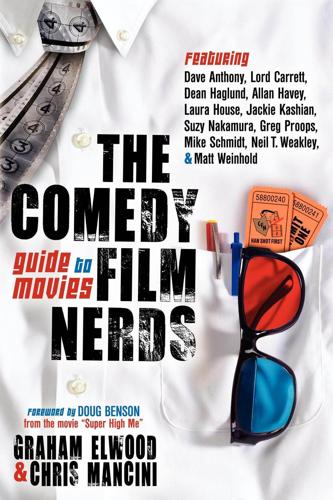
The Comedy Film Nerds Guide to Movies
by
Graham Elwood
and
Chris Mancini
Published 31 May 2012
I mean it’s just—it’s what you call in the movie business, “not good.” A good movie satire lets you in on a larger joke, but don’t forget that it can challenge you too. As long as you’re laughing you don’t have to think directly about war (Robert Altman’s M.A.S.H.), politics (Stanley Kubrick’s Dr. Strangelove or: How I Learned to Stop Worrying and Love the Bomb), or even controversial movies themselves (South Park: Bigger, Longer, & Uncut). Comedy is a way to see something from a distilled perspective, or at least another one. It’s the best way to tackle difficult or even taboo subject matter. Dare you laugh about violent crime or the life of a serial killer in Man Bites Dog?
…
HONORABLE MENTIONS: Ghostbusters (1984) The first big budget, comedy/fantasy/action movie. Saving the world with irreverence. Midnight Run (1988) Robert DeNiro does comedy way before Analyze This and Meet the Parents, and I can watch Joey Pants scream into that phone forever. Bridesmaids (2011) This is not a “chick” movie. This is a funny movie. Dr. Strangelove or: How I Learned to Stop Worrying and Love the Bomb (1964) Peter Sellers and George C. Scott in a Stanley Kubrick black comedy? Are you kidding me? Monty Python and the Holy Grail (1974) Bits and skits and King Arthur. Required comedy viewing. Planes, Trains & Automobiles (1987) It never gets old.
…
(2004) – 75 Diggstown (1992) – 170 The Dirty Dozen (1967) – 102 Dirty Harry (1971) – 156, 158 District 9 (2009) – 8 Doctor Zhivago (1965) – 84 Dogtown and Z-Boys (2001) – 128, 130 Donnie Brasco (1997) – 153, 158 Don’t Look Back (1967) – 71 Double Indemnity (1944) – 110, 135 Dr. No (1962) – ix Dr. Strangelove or: How I Learned to Stop Worrying and Love the Bomb (1964) – 57, 62 DragonHeart (1996) – 39 Dragonslayer (1981) – 39 Drive (2011) – 91 Duck Soup (1933) – 116, 122, 135, 140 Dumb & Dumber (1994) – 60 E E.T. (1982) – 70 Earth Girls Are Easy (1988) – 75 Edward Scissorhands (1990) – 59 Eight Crazy Nights (2002) – 86 El Mariachi (1992) – 95 Elf (2003) – 60 Elvis: That’s The Way It Is (1970) – 71 Empire (1964) – 173 Enchanted (2007) – 46 The Endless Summer (1966) – 130, 166 The Enforcer (1976) – 155 Enter The Dragon (1973) – 189, 193 Eragon (2006) – 38 Eraser (1996) – 92 Eraserhead (1977) – 200 Escape from the Planet of the Apes (1971) – 9 Escape to Athena (1979) – 105 Event Horizon (1997) – 4 Everyone Says I Love You (1996) – 117 Evil Dead (franchise 1981-present) – 49, 204 Evil Dead II (1987) – 201, 202, 204 Excalibur (1981) – 32, 38 The Exorcist (1973) – 47 Exorcist 2: The Heretic (1973) – 50 Expelled: No Intelligence Allowed (2008) – 132 The Expendables (2010) – 92, 93 The Expendables 2 (2012) – 92 F Face/Off (1997) – 96 Fahrenheit 451 (1966) – 5 Fantasia (1940) – 78, 120 Fantastic Four: Rise of the Silver Surfer (2007) – 25, 30 Fantastic Planet (1973) – 77 Fargo (1996) – 57 The Fast and the Furious (franchise 2001-present) – 91 Fast Times at Ridgemont High (1982) – 61 Fast Five (2011) – 91 Fatal Deviation (1998) – 195 Fever Pitch (2005) – 171 Field of Dreams (1989) – 170 The Fighter (2010) – 14 The Filth and The Fury (2000) – 74 Finding Nemo (2003) – 81, 181, 183 Finian’s Rainbow (1968) – 119 The Fisher King (1991) – 202 Fists of Fury (1971) – 191, 195 Five Deadly Venoms (1978) – 195 Flash Gordon (1980) – 9 Flower Drum Song (1961) – 123 The Fog (2005) – 227 Fog of War (2003) – 130 Follow the Fleet (1936) – 118 For a Few Dollars More (1965) – 16 Force 10 From Navarone (1978) – 105 Forest Warrior (1996) – 17 Forgetting Sarah Marshall (2008) – 146 The Fox and the Hound (1981) – 185 Foxy Brown (1974) – 158 Frankenstein (1931) – 49 Freaks (1932) – 49 Fred: The Movie (2000) – 132 Freddy Got Fingered (2001) – 60, 62 The French Connection (1971) – 156, 157 Friday the 13th (franchise 1980-2009) – 4, 45, 214 Fritz the Cat (1972) – 78, 79 From Beyond (1986) – 231 From Russia With Love (1963) – ix Full Metal Jacket (1987) – 102, 104 Funny Face (1957) – 118 Funny Girl (1968) – 120 Furry Vengeance (2010) – 183 G Galaxy Quest (1999) – 4 Game of Death (1978) – 190 Garfield (2004) – 181, 183 Gattaca (1997) – 9 The General (1926) – 135 George Harrison: Living in the Material World (2011) – 71 George of the Jungle 2 (2003) – 209 Get Carter (1971) – 227 Get Carter (2000) – 227 Get Smart (2008) – 226 Ghost Dog: The Way of the Samurai (1999) – 195 Ghost Rider (2007) – 21 Ghost World (2001) – 28, 29 Ghostbusters (1984) – 62, 167 Ghostbusters II (1989) – 63 G.I.
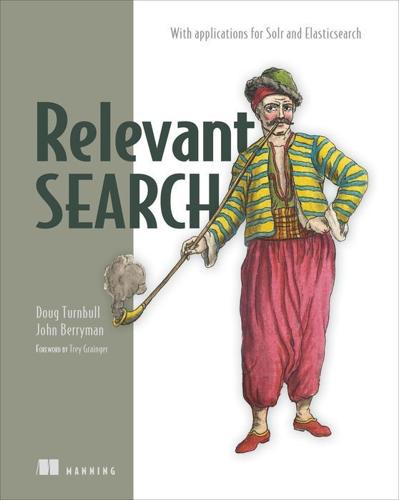
Relevant Search: With Examples Using Elasticsearch and Solr
by
Doug Turnbull
and
John Berryman
Published 30 Apr 2016
Now let’s use the _analyze endpoint to examine the tokens produced from a sample sentence: GET my_library/_analyze?analyzer=standard_clone& text="Dr. Strangelove: Or How I Learned to Stop Worrying and Love the Bomb" In chapter 3, we showed how the analyzer can be used to gather the tokens, start and end offsets, token types, and positions, but here we’re interested in only the tokens. In this case, the tokens produced are as follows: [dr][strangelove][how][i][learned][stop][worrying][love][bomb] And as expected, the tokens have been stripped of punctuation and lowercased, and the common words have been removed.
…
Using the English analyzer, our forgetful movie searcher will have better luck finding the movie. Let’s demonstrate this by looking at the tokens produced from both the correct title and the incorrect query. Listing 4.3. Tokenization of query and document text using the English analyzer GET my_library/_analyze?analyzer=english_clone& text="Dr. Strangelove: Or How I Learned to Stop Worrying and Love the Bomb" [dr][strangelov][how][i][learn][stop][worri][love][bomb] GET my_library/_analyze?analyzer=english_clone& text="mr. weirdlove: don't worry, I'm learning to start loving bombs" [mr][weirdlov][don't][worri][i'm][learn][start][love][bomb] As indicated by the bold text, you’ve gone from zero matching tokens with the standard analyzer to four matching tokens when using the English analyzer.
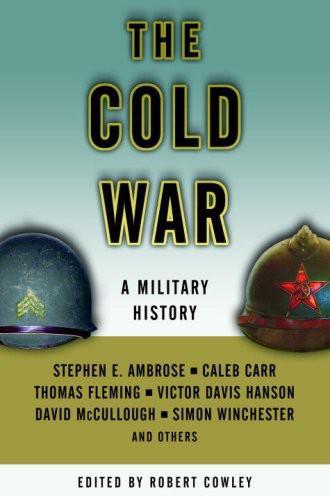
The Cold War
by
Robert Cowley
Published 5 May 1992
LeMay's nuclear fascination was in evidence as late as a 1984 interview, in which the seventy-eight-year-old retired general still lamented his inability as commander of America's strategic air forces to gain unquestioned access to nuclear weapons “and to take some action on my own” if—as Buck Turgidson puts it in Dr. Strangelove—“the normal chain of command has been disrupted.” In 1968, when he ran for vice president on George Wallace's third-party ticket, LeMay published the polemical America Is in Danger, which in part outlined a strategic air campaign against Red China. On occasion, he quoted Dr. Edward Teller—the model for Dr. Strangelove himself—about the advantages of nuclear proliferation. “One could also question the basic premise,” LeMay added, “that stability itself is always desirable.”
…
Another time he said that the only foolproof antisubmarine system was “to boil the ocean with nukes.” As for Cuba: “Fry it.” Or North Vietnam: Bomb it “back into the Stone Age.” Not surprisingly, LeMay became the object of antiwar sport, W. C. Fields brandishing a nuke. Indeed, Buck Turgidson and Jack D. Ripper, two characters in Stanley Kubrick's memorable send-up, Dr. Strangelove, seem almost a composite of the man. LeMay's reputation may never recover from those twin portrayals. But his detractors could never give him credit for what he was, a sure-handed tactician and unsentimental realist who happened to be one of the great captains of American history: a Ulysses S.
…
His books include The Western Way of War, Fields Without Dreams, Carnage and Culture, The Soul of Battle, Ripples of Battle, and a history of the Peloponnesian War, A War Like No Other. He writes a weekly column for the Chicago Tribune and is writing a novel set in ancient Greece about the freeing of the Helots. He still lives on the farm outside Fresno where he grew up. IN DR. STRANGELOVE, Stanley Kubrick's 1964 black satire about a nuclear Armageddon, George C. Scott portrays the chairman of the Joint Chiefs of Staff, gum-chewing, jingoistic, right-wing nut General Buck Turgidson. Along with his wing commander, General Jack D. Ripper (the cigar-chomping Sterling Hayden), Turgidson welcomes the chance to unleash the nuclear firepower of America's bombers in the final showdown against the “Russkies.”

City: A Guidebook for the Urban Age
by
P. D. Smith
Published 19 Jun 2012
CITY By the same author Doomsday Men: The Real Dr Strangelove and the Dream of the Superweapon Einstein Metaphor and Materiality: German Literature and the World-View of Science 1780-1955 Contents Introduction 1. ARRIVAL The City in the Lake The Golden Door Skyline The Central Station 2. HISTORY Origins The Ideal City New Town Necropolis The City Wall 3. CUSTOMS Writing Street Language ‘Kilroy was here’ The Voice of the Street Carnival!
…
George Orwell, The Road to Wigan Pier (San Diego; n.d.), 86–7; cited in Matthias Reiss, ‘Marching on the Capital: National Protest Marches of the British Unemployed in the 1920s and 1930s’, in Reiss (2007), 168; on the Jarrow march, see ibid., 149. 55. In 2004, the Peace March was revived and, as in 1958, a rally was held in Trafalgar Square at the start before four hundred marchers walked to Aldermaston. See P. D. Smith, Doomsday Men: The Real Dr Strangelove and the Dream of the Superweapon (London: Penguin, 2007), 437. 56. VE Day was on 8 May 1945. On the CND demonstrations, see P. D. Smith, ‘“Gentlemen: You are mad!”: Mutual Assured Destruction and Cold War Culture’, in Dan Stone, ed., The Oxford Handbook on Postwar European History (Oxford: OUP, 2012). 57.
…
(Oxford: OUP, 2008), 189. 61. ‘When History Has Forgotten New York’, New York Times (31 May 1925), 12, cited from Nick Yablon, Untimely Ruins: An Archaeology of American Urban Modernity, 1819–1919 (Chicago: University of Chicago Press, 2009), 2. 62. Kurt Vonnegut, cited from P. D. Smith, Doomsday Men: The Real Dr Strangelove and the Dream of the Superweapon (London: Allen Lane, 2007), 319. 63. Vonnegut interview by James Naughtie, The Culture Show (BBC2, 2005). 64. Kurt Vonnegut, Slaughterhouse-Five (London: Vintage, 2000), 130. 65. Cited from Jeff Byles, Rubble: Unearthing the History of Demolition (New York: Harmony Books, 2005), 247. 66.
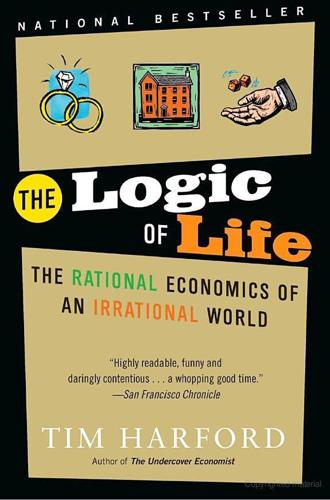
The Logic of Life: The Rational Economics of an Irrational World
by
Tim Harford
Published 1 Jan 2008
This is what any shop assistant does when they tell you they’re not authorized to offer you a discount. But such tactics can backfire, just as they do for the person who never uses her gym subscription. In the film Dr. Strangelove, the Russians build a doomsday device, a computer that will launch every Soviet warhead if it detects any signs of an American attack. Such a device is obviously risky, but by making retaliation certain it should make the surprise attack far less likely. This is reasoning that Dr. Strangelove, the fictional von Neumann, explains. Needless to say, predictable human error intervenes and things do not go quite according to plan. (Whom did the director Stanley Kubrick consult while scripting the movie?
…
In the late 1940s, he favored a surprise nuclear assault on the Soviet Union, before they were able to develop the bomb themselves. “If you say why not bomb them tomorrow, I say why not today?” he told Life magazine. Von Neumann, who spent the last months of his life in a wheelchair after being struck by bone cancer in his fifties, was an inspiration for the deranged and similarly wheelchair-bound film character Dr. Strangelove. (The actor, Peter Sellers, claimed that the Mitteleuropean accent was based not on von Neumann but on Kissinger.) Von Neumann died in 1957, a few years before the cold war reached its defining crises in Berlin and then Cuba. In game theory von Neumann had crafted a tool that promised to analyze both poker and war.

Forty Signs of Rain
by
Kim Stanley Robinson
Published 29 May 2004
You’re Phil’s gold standard. But look, if now isn’t a good time…” “No no, Joe’s asleep on my back. It’s fine. I’m still just kind of freaked out.” “Sure, I can imagine. Listen we can do it later, although I must say we do need to get this thing staffed out soon or else Phil might get caught short. Dr. Strangelove”—this was their name for the President’s science advisor—“has been asking to see our draft too.” “I know, okay talk to me. I can tell you what I think anyway.” So for a while as he walked he listened to Roy read sentences from his draft, and then discussed with him the whys and wherefores, and possible revisions.
…
The discomfort of Joe’s weight was more than compensated for by the quiet, and so as usual he kept Joe snoozing on his back. When he had his material open, and had read up on tidal power generation cost/benefit figures from the UN study on same, he called Roy back, and they got the job finished. The revised draft was ready for Phil to review, and in a pinch could be shown to Senator Winston or Dr. Strangelove. “Thanks Charlie. That looks good.” “I like it too. It’ll be interesting to see what Phil says about it. I wonder if we’re hanging him too far out there.” “I think he’ll be okay, but I wonder what Winston’s staff will say.” “They’ll have a cow.” “It’s true. They’re worse than Winston himself.
…
Charlie, where are you? We need you down here right now.” “I’m already down here.” “Really? That’s great. Charlie?” “Yes, Roy?” “Look, Charlie, sorry to bother you, but Phil is out of town and I’ve got to meet with Senator Ellington in twenty minutes, and we just got a call from the White House saying that Dr. Strangelove wants to meet with us to talk about Phil’s climate bill. It sounds like they’re ready to listen, maybe ready to talk too, or even to deal. We need someone to get over there.” “Now?” “Now. You’ve got to get over there.” “I’m already over there, but look, I can’t. I’ve got Joe here with me. Where is Phil again?”
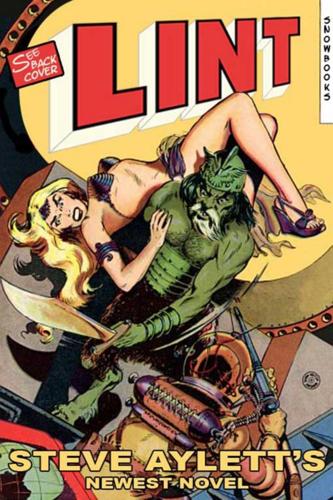
Lint
by
Steve Aylett
Published 2 May 2005
His report on the martial arts conference consisted of a line drawing of a honeysuckle. 02.ch11-20.lint 3/18/05 3:57 PM Page 89 FOURTEEN HOLLYWOOD HACK Banish m’Colleagues ° The Gloom Is Blinding ° Fanny fire ° Kiss Me, Mr. Patton ° mannered and epicene ° ghost of corporate future ° five curses Lint had always thought Hollywood impregnable to talent and in the mid-sixties was still chiding Terry Southern for “selling out” with the success of Dr. Strangelove. But Lint was hard up when publishers such as Doubleday and NEL seemed briefly to develop a taste for his earlier stories. It transpired that Doubleday had begun reprinting his material with such exuberance because they thought he was dead. This increased the shock when he appeared in their offices wearing a dress, the Random-rejected Banish m’Colleagues in hand.
…
195 “Death as a Friend in Catty and the Major” 60 Deathlok the Demolisher 136 “Debate This, You Mother” 3 “Degraded Image Quality in the Catty 4” 60 Denim Bear 29 Depp, Johnny 179, 188 Despair and the Human Condition 4, 91–92 Dewar, Jim 40 Dewhurst, Hugh “Banzer” 24, 32 Diana, Chris 133, 136, 175 03.ch21-bm.lint 214 3/18/05 4:05 PM Page 214 STEVE AYLETT Diebold, Sue 142 Die Miami 5, 172–175 “Digestion and the World” 13 Dog Arrives Altered, a Mistake in Scale, A 79 Dollfuss, Engelbert 100 Doomed and Confident 172, 173, 174, 175 Dostoyevsky, Fyodor 10 Doubleday 4, 34, 82, 89, 130, 172, 176, 178, fn. 2, fn. 5 Dragons of Aggrazar 82–88, 181 “Dragon of the Starry Deeps” 20 Dr. Strangelove 89 Dr. Zhivago 149 Dulles, Allen 107 Dune 172 Dyche, John 155 Dylan, Bob 148 Eagleburger, Lyndon 146 Eaglestone, Sean 168 “Earth Sandwich” 62, fn. 8 Easy Prophecy series 5, 69, 156, 159, 172–175 effortless incitement 2, 10, 44 Empty Trumpet series 3, 128 “Encroaching Threat, The” 72–76 Energy Draining Church Bazaar, The 127–130, 143, 148–156 Engram, Jeff Quiros 195 Enkhornish, Kimmel H. 191 “Escape from the Belly” 34 Esswell, Stan 156 Estes, Billy Sol 104 Evers, Medgar 102 Everywhere We Go, People Die (see Hart to Hart) “Eye in the Belly” fn. 14 “Face It, Face It, Friend” 56 Fall, The 136, 148 FalseCartoon.com 60 “False Hope for Lenny” 35 Fanatique 124, 131, 143, 145, 162, 167, 169, 189 Fantastic Belt 136 Fantastic Lemon experience 83, 109–114, 123, 127, 138, 183, 197 Fatal Knowledge 29 “Fearing My Jelly” fn. 4 “Feelgood” 24 “Fenchurch Conspiracy, The” 53 Ferdinand, Francis 100 Ferdinand, Sofia 100 Ferrie, David 105, fn. 11 Fields, W.
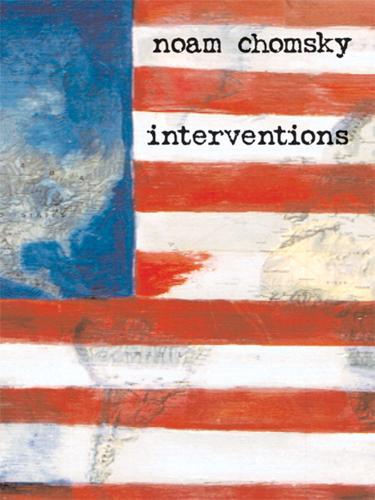
Interventions
by
Noam Chomsky
John Negroponte: From Central America to Iraq Democracy Building Must Begin at Home The Disconnect in American Democracy “We” Are Good Imperial Presidency and Its Consequences The Iraq Debacle and International Order “Democracy Promotion” in the Middle East The Universality of Human Rights Dr. Strangelove Meets the Age of Terror The Social Security Non-Crisis The Hidden Agenda in the Iraq War The Legacy of Hiroshima and the Present Terror 9/11 and the Doctrine of Good Intentions The Bush Administration during Hurricane Season “Intelligent Design” and Its Consequences South America at the Tipping Point The Hidden Meaning of the Iraqi Elections The Hamas Victory and “Democracy Promotion” Asia, the Americas, and the Reigning Superpower “Just War” Theory and the Real World Disarming the Iran Nuclear Showdown Viewing Lebanon as if through a Bombsight Latin American Declares Its Independence Alternatives for the Americas What is at Stake in Iraq The Cold War Between Washington and Tehran The Great Soul of Power Index Editor’s Note by Greg Ruggiero For the past seventeen years Noam Chomsky has contributed many titles to the Open Media Series, including his runaway international bestseller, 9-11, and the work that launched the series itself—a transcript of an antiwar speech Chomsky gave at Harvard University in November 1990.
…
I mention these scattered examples to remind ourselves that we are not merely engaged in seminars on abstract principles, or discussing remote cultures that we do not comprehend. We are speaking of ourselves, and the moral and intellectual values of the privileged communities in which we live. If we do not like what we see if we look into the mirror honestly, we have every opportunity to do something about it. Dr. Strangelove Meets the Age of Terror APRIL 28, 2005 Next week a United Nations conference of 180 signatory nations will review the Nuclear Non-Proliferation Treaty (NPT), commonly regarded as the foundation of any serious hope to avoid the catastrophe that is virtually guaranteed by the logic of nuclear weapons.
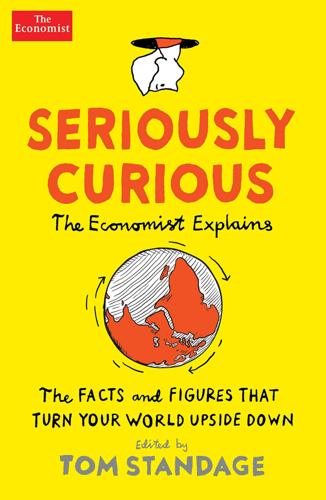
Seriously Curious: The Facts and Figures That Turn Our World Upside Down
by
Tom Standage
Published 27 Nov 2018
By 2017 three of the top ten players in the world (numbers two, four and seven) were American. Indeed, one of them, Fabiano Caruana, moved to St Louis in 2015. What does “digitally remastering” a film really mean? In April 2017 Rialto Pictures and Studiocanal released The Graduate (1967) in a “new digital print” in honour of the film’s 50th anniversary. A 2016 version of Dr Strangelove (1964) boasts a “restored 4K digital transfer”. Citizen Kane (1941) “dazzles anew” in a “superb 75th-anniversary high-definition” digital restoration. Most film buffs understand these terms to be vaguely synonymous with improvement. But what does the process of “restoration” and “remastering” involve?
…
For more explainers and charts from The Economist, visit economist.com Index A Africa child marriage 84 democracy 40 gay and lesbian rights 73, 74 Guinea 32 mobile phones 175–6 see also individual countries agriculture 121–2 Aguiar, Mark 169 air pollution 143–4 air travel and drones 187–8 flight delays 38–9 Akitu (festival) 233 alcohol beer consumption 105–6 consumption in Britain 48, 101–2 craft breweries 97–8 drink-driving 179–80 wine glasses 101–2 Alexa (voice assistant) 225 Algeria food subsidies 31 gay and lesbian rights 73 All I Want for Christmas Is You (Carey) 243 alphabet 217–18 Alternative for Germany (AfD) 223, 224 Alzheimer’s disease 140 Amazon (company) 225 America see United States and 227–8 Angola 73, 74 animals blood transfusions 139–40 dog meat 91–2 gene drives 153–4 size and velocity 163–4 and water pollution 149–50 wolves 161–2 Arctic 147–8 Argentina gay and lesbian rights 73 lemons 95–6 lithium 17–18 Ariel, Barak 191 Arizona 85 arms trade 19–20 Asia belt and road initiative 117–18 high-net-worth individuals 53 wheat consumption 109–10 see also individual countries Assange, Julian 81–3 asteroids 185–6 augmented reality (AR) 181–2 August 239–40 Australia avocados 89 forests 145 inheritance tax 119 lithium 17, 18 shark attacks 201–2 autonomous vehicles (AVs) 177–8 Autor, David 79 avocados 89–90 B Babylonians 233 Baltimore 99 Bangladesh 156 bank notes 133–4 Bateman, Tim 48 beer consumption 105–6 craft breweries 97–8 Beijing air pollution 143–4 dogs 92 belt and road initiative 117–18 betting 209–10 Bier, Ethan 153 Bils, Mark 169 birds and aircraft 187 guinea fowl 32–3 birth rates Europe 81–3 United States 79–80 black money 133–4 Black Power 34, 35 Blade Runner 208 blood transfusions 139–40 board games 199–200 body cameras 191–2 Boko Haram 5, 15–16 Bolivia 17–18 Bollettieri, Nick 197 bookmakers 209–10 Borra, Cristina 75 Bosnia 221–2 brain computers 167–8 Brazil beer consumption 105, 106 Christmas music 243, 244 end-of-life care 141–2 gay and lesbian rights 73 murder rate 45, 46 shark attacks 202 breweries 97–8 Brexit, and car colours 49–50 brides bride price 5 diamonds 13–14 Britain alcohol consumption 101–2 car colours 49–50 Christmas music 244 cigarette sales 23–4 craft breweries 98 crime 47–8 Easter 238 gay population 70–72 housing material 8 inheritance tax 119 Irish immigration 235 life expectancy 125 manufacturing jobs 131 national identity 223–4 new-year resolutions 234 police body cameras 191 sexual harassment 67, 68, 69 sperm donation 61 see also Scotland Brookings Institution 21 Browning, Martin 75 bubonic plague 157–8 Bush, George W. 119 C cables, undersea 193–4 California and Argentine lemons 95, 96 avocados 90 cameras 191–2 Canada diamonds 13 drones 188 lithium 17 national identity 223–4 capitalism, and birth rates 81–2 Carey, Mariah 243 Carnegie Endowment for International Peace 21 cars colours 49–50 self-driving 177–8 Caruana, Fabiano 206 Charles, Kerwin 169 cheetahs 163, 164 chess 205–6 Chetty, Raj 113 Chicago 100 children birth rates 79–80, 81–3 child marriage 84–5 in China 56–7 crime 47–8 and gender pay gap 115–16, 135–6 obesity 93–4 Chile gay and lesbian rights 73 lithium 17–18 China air pollution 143–5 arms sales 19–20 avocados 89 beer consumption 105 belt and road initiative 117–18 childhood obesity 93 construction 7 dog meat 91–2 dragon children 56–7 flight delays 38–9 foreign waste 159–60 lithium 17 rice consumption 109–10 Choi, Roy 99 Christian, Cornelius 26 Christianity Easter 237–8 new year 233–4 Christmas 246–7 music 243–5 cigarettes affordability 151–2 black market 23–4 cities, murder rates 44–6 Citizen Kane 207 citrus wars 95–6 civil wars 5 Clarke, Arthur C. 183 Coase, Ronald 127, 128 cocaine 44 cochlear implants 167 Cohen, Jake 203 Colen, Liesbeth 106 colleges, US 113–14 Colombia 45 colours, cars 49–50 commodities 123–4 companies 127–8 computers augmented reality 181–2 brain computers 167–8 emojis 215–16 and languages 225–6 spam e-mail 189–90 Connecticut 85 Connors, Jimmy 197 contracts 127–8 Costa Rica 89 couples career and family perception gap 77–8 housework 75–6 see also marriage cows 149–50 craft breweries 97–8 crime and avocados 89–90 and dog meat 91–2 murder rates 44–6 young Britons 47–8 CRISPR-Cas9 153 Croatia 222 Croato-Serbian 221–2 D Daily-Diamond, Christopher 9–10 Davis, Mark 216 De Beers 13–14 death 141–2 death taxes 119–20 democracy 40–41 Deng Xiaoping 117 Denmark career and family perception gap 78 gender pay gap 135–6 sex reassignment 65 Denver 99 Devon 72 diamonds 13–14, 124 digitally remastering 207–8 Discovery Channel 163–4 diseases 157–8 dog meat 91–2 Dorn, David 79 Dr Strangelove 207 dragon children 56–7 drink see alcohol drink-driving 179–80 driverless cars 177–8 drones and aircraft 187–8 and sharks 201 drugs cocaine trafficking 44 young Britons 48 D’Souza, Kiran 187 E e-mail 189–90 earnings, gender pay gap 115–16, 135–6 Easter 237–8 economy and birth rates 79–80, 81–2 and car colours 49–50 and witch-hunting 25–6 education and American rich 113–14 dragon children 56–7 Egal, Muhammad Haji Ibrahim 40–41 Egypt gay and lesbian rights 73 marriage 5 new-year resolutions 233 El Paso 100 El Salvador 44, 45 emojis 215–16 employment gender pay gap 115–16, 135–6 and gender perception gap 77–8 job tenure 129–30 in manufacturing 131–2 video games and unemployment 169–70 English language letter names 217–18 Papua New Guinea 219 environment air pollution 143–4 Arctic sea ice 147–8 and food packaging 103–4 waste 159–60 water pollution 149–50 Equatorial Guinea 32 Eritrea 40 Ethiopia 40 Europe craft breweries 97–8 summer holidays 239–40 see also individual countries Everson, Michael 216 exorcism 36–7 F Facebook augmented reality 182 undersea cables 193 FANUC 171, 172 Federer, Roger 197 feminism, and birth rates 81–2 fertility rates see birth rates festivals Christmas 246–7 Christmas music 243–5 new-year 233–4 Feuillet, Catherine 108 films 207–8 firms 127–8 5G 173–4 flight delays 38–9 Florida and Argentine lemons 95 child marriage 85 Foley, William 220 food avocados and crime 89–90 dog meat 91–2 lemons 95–6 wheat consumption 109–10 wheat genome 107–8 food packaging 103–4 food trucks 99–100 football clubs 211–12 football transfers 203–4 forests 145–6, 162 Fountains of Paradise, The (Clarke) 183 fracking 79–80 France career and family perception gap 78 Christmas music 244 exorcism 36–7 gender-inclusive language 229–30 job tenure 130 sex reassignment 66 sexual harassment 68–9 witch-hunting 26, 27 wolves 161–2 G gambling 209–10 games, and unemployment 169–70 Gandhi, Mahatma 155 gang members 34–5 Gantz, Valentino 153 gas 124 gay population 70–72 gay rights, attitudes to 73–4 gender sex reassignment 65–6 see also men; women gender equality and birth rates 81–2 in language 229–30 gender pay gap 115–16, 135–6 gene drives 153–4 Genghis Khan 42 genome, wheat 107–8 ger districts 42–3 Germany beer consumption 105 job tenure 130 national identity 223–4 sexual harassment 68, 69 vocational training 132 witch-hunting 26, 27 Ghana 73 gig economy 128, 130 glasses, wine glasses 101–2 Goddard, Ceri 72 Google 193 Graduate, The 207 Greece forests 145 national identity 223–4 sex reassignment 65 smoking ban 152 Gregg, Christine 9–10 grunting 197–8 Guatemala 45 Guinea 32 guinea fowl 32–3 guinea pig 32 Guinea-Bissau 32 Guo Peng 91–2 Guyana 32 H Haiti 5 Hale, Sarah Josepha 242 Hanson, Gordon 79 Hawaii ’Oumuamua 185 porn consumption 63–4 health child obesity 93–4 life expectancy 125–6 plague 157–8 and sanitation 155 high-net-worth individuals (HNWIs) 53 Hiri Motu 219 holidays Easter 237–8 St Patrick’s Day 235–6 summer holidays 239–40 Thanksgiving 241–2 HoloLens 181–2 homicide 44–6 homosexuality attitudes to 73–4 UK 70–72 Honduras 44, 45 Hong Kong 56 housework 75–6, 77–8 Hudson, Valerie 5 Hungary 223–4 Hurst, Erik 169 I ice 147–8 Ikolo, Prince Anthony 199 India bank notes 133–4 inheritance tax 119 languages 219 rice consumption 109 sand mafia 7 sanitation problems 155–6 Indonesia polygamy and civil war 5 rice consumption 109–10 inheritance taxes 119–20 interest rates 51–2 interpunct 229–30 Ireland aitch 218 forests 145 St Patrick’s Day 235–6 same-sex marriage 73 sex reassignment 65 Italy birth rate 82 end of life care 141–2 forests 145 job tenure 130 life expectancy 126 J Jacob, Nitya 156 Jamaica 45 Japan 141–2 Jighere, Wellington 199 job tenure 129–30 jobs see employment Johnson, Bryan 168 junk mail 189 K Kazakhstan 6 Kearney, Melissa 79–80 Kennedy, John F. 12 Kenya democracy 40 mobile-money systems 176 Kiribati 7 Kleven, Henrik 135–6 knots 9–10 Kohler, Timothy 121 Kyrgyzstan 6 L laces 9–10 Lagos 199 Landais, Camille 135–6 languages and computers 225–6 gender-inclusive 229–30 letter names 217–18 and national identity 223–4 Papua New Guinea 219–20 Serbo-Croatian 221–2 Unicode 215 World Bank writing style 227–8 Latimer, Hugh 246 Leeson, Peter 26 leisure board games in Nigeria 199–200 chess 205–6 gambling 209–10 video games and unemployment 169–70 see also festivals; holidays lemons 95–6 letter names 217–18 Libya 31 life expectancy 125–6 Lincoln, Abraham 242 lithium 17–18 London 71, 72 longevity 125–6 Lozère 161–2 Lucas, George 208 M McEnroe, John 197 McGregor, Andrew 204 machine learning 225–6 Macri, Mauricio 95, 96 Macron, Emmanuel 143 Madagascar 158 Madison, James 242 MagicLeap 182 Maine 216 Malaysia 56 Maldives 7 Mali 31 Malta 65 Manchester United 211–12 manufacturing jobs 131–2 robots 171–2 summer holidays 239 Maori 34–5 marriage child marriage 84–5 polygamy 5–6 same-sex relationships 73–4 see also couples Marteau, Theresa 101–2 Marx, Karl 123 Maryland 85 Massachusetts child marriage 85 Christmas 246 Matfess, Hilary 5, 15 meat dog meat 91–2 packaging 103–4 mega-rich 53 men career and family 77–8 housework 75–6 job tenure 129–30 life expectancy 125 polygamy 5–6 sexual harassment by 67–9 video games and unemployment 169 Mexico avocados 89, 90 gay and lesbian rights 73 murder rate 44, 45 microbreweries 97–8 Microsoft HoloLens 181–2 undersea cables 193 migration, and birth rates 81–3 mining diamonds 13–14 sand 7–8 mobile phones Africa 175–6 5G 173–4 Mocan, Naci 56–7 Mongolia 42–3 Mongrel Mob 34 Monopoly (board game) 199, 200 Monty Python and the Holy Grail 25 Moore, Clement Clarke 247 Moretti, Franco 228 Morocco 7 Moscato, Philippe 36 movies 207–8 Mozambique 73 murder rates 44–6 music, Christmas 243–5 Musk, Elon 168 Myanmar 118 N Nadal, Rafael 197 national identity 223–4 natural gas 124 Netherlands gender 66 national identity 223–4 neurostimulators 167 New Jersey 85 New Mexico 157–8 New York (state), child marriage 85 New York City drink-driving 179–80 food trucks 99–100 New Zealand avocados 89 gang members 34–5 gene drives 154 water pollution 149–50 new-year resolutions 233–4 Neymar 203, 204 Nigeria board games 199–200 Boko Haram 5, 15–16 population 54–5 Nissenbaum, Stephen 247 Northern Ireland 218 Norway Christmas music 243 inheritance tax 119 life expectancy 125, 126 sex reassignment 65 Nucci, Alessandra 36 O obesity 93–4 oceans see seas Odimegwu, Festus 54 O’Reilly, Oliver 9–10 Ortiz de Retez, Yñigo 32 Oster, Emily 25–6 ostriches 163, 164 ’Oumuamua 185–6 P packaging 103–4 Pakistan 5 Palombi, Francis 161 Papua New Guinea languages 219–20 name 32 Paris Saint-Germain (PSG) 203 Passover 237 pasta 31 pay, gender pay gap 115–16, 135–6 Peck, Jessica Lynn 179–80 Pennsylvania 85 Peru 90 Pestre, Dominique 228 Pew Research Centre 22 Phelps, Michael 163–4 Philippe, Édouard 230 phishing 189 Phoenix, Arizona 177 Pilgrims 241 plague 157–8 Plastic China 159 police, body cameras 191–2 pollution air pollution 143–4 water pollution 149–50 polygamy 5–6 pornography and Britain’s gay population 70–72 and Hawaii missile alert 63–4 Portugal 145 Puerto Rico 45 punctuation marks 229–30 Q Qatar 19 R ransomware 190 Ravenscroft, George 101 Real Madrid 211 religious observance and birth rates 81–2 and Christmas music 244 remastering 207–8 Reynolds, Andrew 70 Rhodes, Cecil 13 rice 109–10 rich high-net-worth individuals 53 US 113–14 ride-hailing apps and drink-driving 179–80 see also Uber RIWI 73–4 robotaxis 177–8 robots 171–2 Rogers, Dan 240 Romania birth rate 81 life expectancy 125 Romans 233 Romer, Paul 227–8 Ross, Hana 23 Royal United Services Institute 21 Russ, Jacob 26 Russia arms sales 20 beer consumption 105, 106 fertility rate 81 Rwanda 40 S Sahara 31 St Louis 205–6 St Patrick’s Day 235–6 salt, in seas 11–12 same-sex relationships 73–4 San Antonio 100 sand 7–8 sanitation 155–6 Saudi Arabia 19 Scotland, witch-hunting 25–6, 27 Scott, Keith Lamont 191 Scrabble (board game) 199 seas Arctic sea ice 147–8 salty 11–12 undersea cables 193–4 secularism, and birth rates 81–2 Seles, Monica 197 self-driving cars 177–8 Serbia 222 Serbo-Croatian 221–2 Sevilla, Almudena 75 sex reassignment 65–6 sexual harassment 67–9, 230 Sharapova, Maria 197 sharks deterring attacks 201–2 racing humans 163–4 shipping 148 shoelaces 9–10 Silk Road 117–18 Singapore dragon children 56 land reclamation 7, 8 rice consumption 110 single people, housework 75–6 Sinquefeld, Rex 205 smart glasses 181–2 Smith, Adam 127 smoking black market for cigarettes 23–4 efforts to curb 151–2 smuggling 31 Sogaard, Jakob 135–6 Somalia 40 Somaliland 40–41 South Africa childhood obesity 93 diamonds 13 gay and lesbian rights 73 murder rate 45, 46 South Korea arms sales 20 rice consumption 110 South Sudan failed state 40 polygamy 5 space elevators 183–4 spaghetti 31 Spain forests 145 gay and lesbian rights 73 job tenure 130 spam e-mail 189–90 sperm banks 61–2 sport football clubs 211–12 football transfers 203–4 grunting in tennis 197–8 Sri Lanka 118 Star Wars 208 sterilisation 65–6 Strasbourg 26 submarine cables 193–4 Sudan 40 suicide-bombers 15–16 summer holidays 239–40 Sutton Trust 22 Sweden Christmas music 243, 244 gay and lesbian rights 73 homophobia 70 inheritance tax 119 overpayment of taxes 51–2 sex reassignment 65 sexual harassment 67–8 Swinnen, Johan 106 Switzerland sex reassignment 65 witch-hunting 26, 27 T Taiwan dog meat 91 dragon children 56 Tamil Tigers 15 Tanzania 40 taxes death taxes 119–20 Sweden 51–2 taxis robotaxis 177–8 see also ride-hailing apps tennis players, grunting 197–8 terrorism 15–16 Texas 85 Thailand 110 Thanksgiving 241–2 think-tanks 21–2 Tianjin 143–4 toilets 155–6 Tok Pisin 219, 220 transgender people 65–6 Trump, Donald 223 Argentine lemons 95, 96 estate tax 119 and gender pay gap 115 and manufacturing jobs 131, 132 Tsiolkovsky, Konstantin 183 Turkey 151 turkeys 33 Turkmenistan 6 U Uber 128 and drink-driving 179–80 Uganda 40 Ulaanbaatar 42–3 Uljarevic, Daliborka 221 undersea cables 193–4 unemployment 169–70 Unicode 215–16 United Arab Emirates and Somaliland 41 weapons purchases 19 United Kingdom see Britain United States and Argentine lemons 95–6 arms sales 19 beer consumption 105 chess 205–6 child marriage 84–5 Christmas 246–7 Christmas music 243, 244 drink-driving 179–80 drones 187–8 end of life care 141–2 estate tax 119 fertility rates 79–80 food trucks 99–100 forests 145 gay and lesbian rights 73 getting rich 113–14 Hawaiian porn consumption 63–4 job tenure 129–30 letter names 218 lithium 17 manufacturing jobs 131–2 murder rate 45, 46 national identity 223–4 new-year resolutions 234 plague 157–8 police body cameras 191–2 polygamy 6 robotaxis 177 robots 171–2 St Patrick’s Day 235–6 sexual harassment 67, 68 sperm banks 61–2 Thanksgiving 241–2 video games and unemployment 169–70 wealth inequality 121 unmanned aerial vehicles (UAVs) see drones V video games 169–70 Vietnam weapons purchases 19 wheat consumption 110 Virginia 85 virtual reality (VR) 181, 182 Visit from St Nicholas, A (Moore) 247 W Wang Yi 117 Warner, Jason 15 wars 5 Washington, George 242 Washington DC, food trucks 99 waste 159–60 water pollution 149–50 wealth getting rich in America 113–14 high-net-worth individuals 53 inequality 120, 121–2 weather, and Christmas music 243–5 Weinstein, Harvey 67, 69 Weryk, Rob 185 wheat consumption 109–10 genome 107–8 Wilson, Riley 79–80 wine glasses 101–2 Winslow, Edward 241 wireless technology 173–4 witch-hunting 25–7 wolves 161–2 women birth rates 79–80, 81–3 bride price 5 career and family 77–8 child marriage 84–5 housework 75–6 job tenure 129–30 life expectancy 125 pay gap 115–16 sexual harassment of 67–9 suicide-bombers 15–16 World Bank 227–8 World Health Organisation (WHO) and smoking 151–2 transsexualism 65 X Xi Jinping 117–18 Y young people crime 47–8 job tenure 129–30 video games and unemployment 169–70 Yu, Han 56–7 Yulin 91 yurts 42–3 Z Zubelli, Rita 239
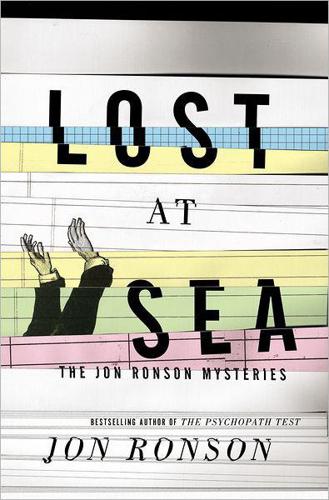
Lost at Sea
by
Jon Ronson
Published 1 Oct 2012
Kubrick must have been at the end of his tether, he says, because on a number of occasions he said to Tony, “Before you send an angry letter, imagine how it would look if it got into the hands of Time Out.”) The reason for Kubrick’s annoyance in this particular letter was because he’d heard that the Beatles were going to use a landscape shot from Dr. Strangelove in one of their movies. “The Beatle film will be very widely seen,” Kubrick writes, “and it will make it appear that the material in Dr. Strangelove is stock footage. I feel this harms the film.” There are a similar batch of telexes from 1975: “It would appear,” Kubrick writes in one, “that ‘Space: 1999’ may very well become a long-running and important television series.
…
Albans—or a “secret lair” according to a Sunday Times article of that year—behaving presumably like some kind of mad hermit genius. Nobody even knew what he looked like. It was sixteen years since a photograph of him had been published. He’d gone from making a film a year in the 1950s (including the brilliant, horrific Paths of Glory), to a film every couple of years in the sixties (Lolita, Dr. Strangelove, and 2001: A Space Odyssey all came out within a six-year period), to two films per decade in the seventies and eighties (there had been a seven-year gap between The Shining and Full Metal Jacket), and now, in the 1990s, absolutely nothing at all. What was he doing in there? According to rumors, he was passing his time being terrified of germs and refusing to let his chauffeur drive over 30 mph.

Risk: A User's Guide
by
Stanley McChrystal
and
Anna Butrico
Published 4 Oct 2021
Like hammer-carrying men looking for nails, they recommended that US forces conduct air strikes against the Soviet targets in Cuba and potentially move to invade afterward. As deliberations began, even President Kennedy regarded air strikes as the most viable option—aligning with the more aggressive approach. This wasn’t a scene from the dark comedy Dr. Strangelove. Nor was it confirmation that these World War II veterans were bloodthirsty warmongers. Instead, passionately committed to their nation’s defense, they predictably reflected the perspective they’d developed over a lifetime. Kennedy respected (and initially agreed) with their recommendations, but he also wanted to avoid having his options prescribed for him as they had been for the Bay of Pigs invasion—and so he leveraged ExComm to diversify the views and options presented.
…
President Kennedy regarded air strikes: Aleksandr Fursenko and Timothy Naftali, “One Hell of a Gamble”: Khrushchev, Castro, and Kennedy, 1958-1964 (W. W. Norton & Company, 1998), chap. 12, Kindle; May and Zelikow, The Kennedy Tapes: Inside the White House During the Cuban Missile Crisis, 47–72. Dr. Strangelove: In this film, a general fixed his sights on a massive nuclear war—other generals and politicians aim to stop his pursuits. coalesced into two major options: Kennedy, Thirteen Days, Section 3; Poole, “Joint Chiefs of Staff and National Policy,” 171; Fursenko and Naftali, One Hell of a Gamble, chap. 12.
…
Douglas, 110–11 Dionysius II, 15, 132 Diversity, xix an antidote to groupthink, 101, 107–8 benefits of, 99–102, 117–18 and biases, 123 and boards of directors, 113–15, 118 of capability, 101–2, 116–18, 200 connected to other factors, 37, 171 fusion cells model and, 101, 115–17 lack of, 101, 105–8, 110, 114–15, 192, 200 leadership and, 196–97, 200, 215–16 must be operationalized, 118 requires deliberate action, 117–18 and risk alignment/assessment, 258 successful examples of, 110–13, 116–17, 204, 215 symptoms of challenges in, 102 symptoms/solutions for, 240, 243 of thought, 101–2, 108, 110–18, 192, 196–97, 200 vital role of, xxi, 11, 13, 102, 115 “Don’t be evil” value, 59–64, 242, 250 dot-com crash, 31, 141 Dr. Strangelove (film), 110 drones, 61, 91, 137, 138, 139, 152, 204 Ebony, 151 economic crash (2008), 80, 82 recessions, 82, 160, 255–56 Edmund Pettus Bridge, 99, 128, 148 efficiency, 184–85, 241 Eisenhower, Dwight, 103, 111–12 Enron, 80, 83 equality, 99–100, 126, 149, 151 European military customs, 191–92, 198 evolution, theory of, 175–76 ExComm, 109–12, 118 Fail Safe (film), 88–89 Fanning, Shawn, 176 fatalism, 176, 221, 285–86 Federal Aviation Administration (FAA), 268 Federal Bureau of Investigation (FBI), 116, 119–20 Federal Deposit Insurance Corporation (FDIC), 196 Federal Emergency Management Agency (FEMA), 171 Federal Reserve Bank of Boston, 211 Ferrari, xxi–xxii, 166–70, 242 financial industry, 79–83, 113–15, 121–22, 193–96, 199 Finland, 181–82 fireside chats, 194, 195, 196, 198 1st Battalion, 504th Parachute Infantry Regiment, 227–29 Flagg, James Montgomery, 65–66 Flint, Michigan, 179, 241 Floyd, George, 101 FlyVA, 246–52, 255–59, 261–62, 264–65, 267–69, 272–73, 275–76, 279–80, 282–84 Fonda, Henry, 88 Fong-Jones, Liz, 62 Food and Drug Administration (FDA), xv Formula 1 racing, xxi–xxii, 160, 166–67, 168, 169–72, 242 Fort Bragg, North Carolina, 45, 48, 125 Fort Duquesne, 186–87, 188, 189–90 Fort Hood, Texas, 125 Fort Sumter, 127 Fosbury, Dick, xxii, 173, 174, 175–76, 178, 274–75 France, 229–30 Franklin, Benjamin, 189 Franks, Tommy, 128–29, 130 Freeman, Douglas Southall, 191 French and Indian War, 186–87, 188, 189, 190, 191–92, 198 Fridays for Future movement, 145, 146 fusion cells model, 101, 115–17 Gallagher, Edward, 68 Galuten, Albhy, 178, 180 gender, 101, 118, 200 General H.
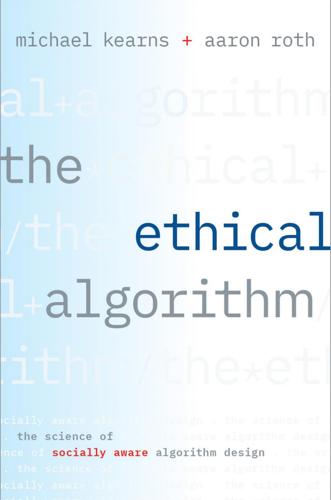
The Ethical Algorithm: The Science of Socially Aware Algorithm Design
by
Michael Kearns
and
Aaron Roth
Published 3 Oct 2019
During the Cold War, researchers at the RAND Corporation (a long-standing think tank for political and strategic consulting) and elsewhere used game-theoretic models to try to understand the possible outcomes of US-Soviet nuclear war and détente—efforts that were memorably if darkly lampooned in the 1964 Stanley Kubrick film Dr. Strangelove, which ends with the Prisoner’s Dilemma–like nuclear annihilation of the world. But the lasting influence and scope of game theory (which has also been widely applied to evolutionary biology and many other fields far from its origins) bears testament to the value of deeply understanding a “toy” version of a complex problem.
…
See also gender data and bias; racial data and bias disease prediction models, 30–33, 54, 96 diversity, 125–26 divorce proceedings, 40–41, 48, 51–52 DNA data, 30–31, 54–56 Doll, Richard, 34 doomsday scenarios, 184–85 downstream effects, 194 driving times. See traffic and navigation problems Dr. Strangelove (film), 100 drug use data, 51–52 Dwork, Cynthia, 26, 36 dynamic effects, 194 echo chamber equilibrium, 123–26 economics applied to dating apps, 94–96 economic scarcity and dating apps, 94 and scope of topics covered, 19–20 The Economist, 145–46 email scams, 137–41, 154 embarrassing polls, 40–45 emergent phenomena, 10 empirical machine learning, 76 employment decisions, 15 encryption, 31–34, 37 Equifax, 32 equilibrium states and dating apps, 95–96 echo chamber equilibrium, 123–25 and game theory, 97–101 and navigation problems, 103 and two-route navigation problems, 107 and user preferences, 97 error rates in algorithms and differential privacy, 42–43 error-minimization, 70, 75, 78–79 and facial recognition, 15–16 and fairness vs. accuracy, 78–84 and image recognition competition, 165–66 and scientific research, 136 ethical principles and accuracy vs. fairness balance, 82–84, 192–93 and adaptive data analysis, 159–60 and algorithmic morality, 176–78 and algorithms as regulatory measure, 16–17 and concerns about algorithm use, 3–4 current state of ethics research, 169–70 design of ethical algorithms, 189–90, 193–95 ethics boards, 179 infancy of ethical algorithm field, 21 and machine vs. human learning, 6–7 and scope of topics covered, 19–21 and threat of optimization gone awry, 179 and unique challenges of algorithms, 7 European Union, 15 existential threat of machine learning, 179–82, 189–90 exploitation, 71–72 exploration period, 70–72, 93 exponential intelligence explosion, 185–88 Facebook advertising, 14–15 and design of algorithms, 4–5 and differential privacy, 51–52 and echo chamber equilibrium, 124–25 and image recognition algorithms, 145–46 News Feed, 8, 19–20 profit motive, 191–92 and promotion of diversity, 125 facial recognition, 15–16 fairness accuracy/fairness trade-off, 63, 69, 74–84, 87, 192–93 and algorithmic morality, 175–76 and algorithms as regulatory measure, 16–18 and biases, 57–63 and concerns about algorithm use, 3 and current state of ethics research, 169–70 and data collection bias, 90–93 and dating apps, 96–97 definitions of, 69–72 design of ethical algorithms, 190 differing notions of, 84–86 and dynamic effects of algorithms, 193–94 “fairness gerrymandering,” 86–90, 134–35 and forbidden inputs, 66–69 and goals of ethics research, 171 and “merit,” 72–74 and scope of topics covered, 18–21 and statistical parity, 69–72 and supervised machine learning, 63–64 and theoretical computer science field, 13 and threat of optimization gone awry, 184–85 and vectors, 65–66 “fake news,” 124–25 false negatives, 73–74, 84–85 false positives, 84–85, 189–90, 193 false rejections, 73, 91, 171 family data, 54–56 “fast takeoff” scenario, 185–88 FATE—fairness, accuracy, transparency, and ethics, 16–17 Federal Bureau of Investigation (FBI), 49–50 feedback loops, 19–20, 92, 95–96, 184–85 Felten, Ed, 187–88 filter bubble, 124 financial status data, 65–66 Fitbits, 50–51 fitness tracking data, 50–51 food science, 143–45, 158–59 forbidden inputs, 66–69 foreign policy, 15 forensic evidence, 54–56 formalization of goals, 194.

The Soil Will Save Us
by
Kristin Ohlson
Published 14 Oct 2014
The Times writer tagged them as “food cultists from old-line vegetarians to youthful Orient-inspired ‘macrobiotic’ dieters with their emphasis on whole grains, especially rice, plus reactionaries yearning to turn back all clocks, urban dropouts in search of simpler, more natural life styles, ecologists who are worried about the long-range environmental effects of some chemicals, Dr. Strangelove paranoids who read poison plots on the ingredient labels of pancakes mixes and increasingly, rather ordinary folk to whom pronouncements about the perils of cyclamates, phosphates, etc., have stirred a wariness about all man-made chemicals, particularly those that get into their food, or that they think do.” I number myself among the Drs. Strangelove. The Times article portrays J.I. as a somewhat endearing crackpot, but, really, so many of his concerns were incredibly prescient.

On the Edge: The Art of Risking Everything
by
Nate Silver
Published 12 Aug 2024
Musk has also flirted with effective altruism, having endorsed MacAskill’s book and at one point having hired an EA-adjacent wealth advisor, the former poker player Igor Kurganov. At other times, though, supposed altruism can have an uncanny way of converging with self-interest. Like in the scene at the end of Dr. Strangelove, where Strangelove proposes a ratio of ten women to one man to repopulate humanity in underground bunkers in the event of a nuclear war—and insists that of course top military and government leaders like him must be included among the lucky few—those who draw up plans to protect the future of humanity rarely fail to secure a seat for themselves in the escape pod.
…
And ironically, one reason deterrence may have worked is because River types misunderstand human nature. The idea behind MAD is that a rational actor won’t use nuclear weapons because if they do, their superpower rival will retaliate and nuke them into oblivion, the most −EV outcome imaginable. This was the premise of Dr. Strangelove;[*17] in the film, the Soviets had built a doomsday machine that would automatically retaliate if it detected a nuclear attack, taking the decision out of human hands. This was intended to eliminate any possibility of the United States attempting a debilitating first strike and wriggling its way out of MAD by not giving Russia a chance to respond.
…
It might not mean the literal destruction of humanity—this depends on how you model the effects of nuclear winter, meaning the prolonged and pronounced climatic cooling that would occur because of the soot that would be ejected into the stratosphere from nuclear firestorms. “The idea that it would bomb us back to the Stone Age, and we’d never get out again, is pretty accurate,” said Paul Edwards, a Stanford climatologist who teaches a class on existential risk. *17 The character of Dr. Strangelove is thought to have been partially inspired by von Neumann. *18 This equates to roughly a 5 percent chance. *19 For instance, many people prefer a guaranteed $300 to a coin flip where they either win $1,000 or lose $100, even though the coin flip has a higher EV. This is what Kahneman and Tversky called “prospect theory

Atomic Accidents: A History of Nuclear Meltdowns and Disasters: From the Ozark Mountains to Fukushima
by
James Mahaffey
Published 15 Feb 2015
v=0FIhafVX_6I&feature=related 110 On May 3, 1958, Frederic de Hoffman announced the introduction of the Test, Research, and Isotope reactor of General Atomic, or the TRIGA. It was a brilliant design, started as an exercise for young nuclear engineers by Dr. Edward Teller, co-inventor of the H-bomb and the inspiration for the movie “Dr. Strangelove, Or How I Learned to Stop Worrying and Love the Bomb.” Dr. Freeman Dyson, also a nuclear genius, contributed to the concept, and the design was influenced by findings at the NRTS in the BORAX and SPERT programs. The TRIGA pool reactor was “safe even in the hands of a young graduate student,” which is saying a lot.
…
There were now four such devices, spread out over a large blackened area on the ice covering the fjord, about seven and a half miles west of Thule, that had fallen out of the plane as it crashed. To police the area of debris would not be an easy effort. The first thing the Air Force did was to give the task a name: Project Crested Ice, or, unofficially, “Dr. Freezelove,” based on the name of a Stanley Kubrick film from 1964, Dr. Strangelove, or How I Learned to Stop Worrying and Love the Bomb. All the Americans had seen the film. It was unfamiliar to the Greenlanders. Weather conditions for the cleanup project were extreme, with temperatures as low as 76 degrees below zero and winds up to 89 miles per hour. Sunlight would not peek over the horizon until February 14.
…
v=0FIhafVX_6I&feature=related SPERT 2. http://www.youtube.com/watch?v=aqg7FEirbK4&feature=related Chapter 5: Making Everything Else Seem Insignificant in the UK Arnold, Lorna. Windscale 1957: Anatomy of a Nuclear Accident. New York: Palgrave Macmillan, 2007. Goodchild, Peter. Edward Teller: The Real Dr. Strangelove. Cambridge, MA: Harvard University Press, 2004. Jensen, S. E. and Nonbol, E. Description of the Magnox Type of Gas Cooled Reactor (MAGNOX). Roskilde, Denmark: Nordic Nuclear Safety Research, NKS-2, 1999. Windscale. http://www.youtube.com/watch?v=ElotW9oKv1s&feature=relmfu Chapter 6: In Nuclear Research, Even the Goof-ups are Fascinating Ashley, R.
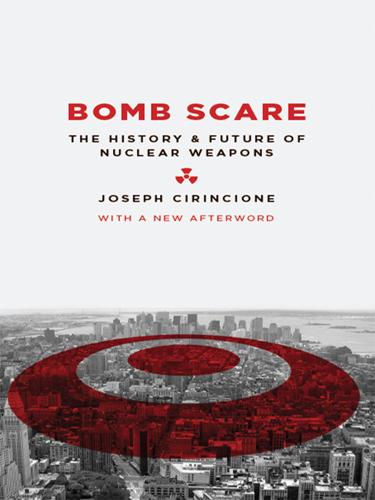
Bomb Scare
by
Joseph Cirincione
Published 24 Dec 2011
The new shopping plazas opening up in the growing suburbs regularly showed in their parking lots models of prefabricated fallout shelters that could be buried in the backyard. Nuclear fears found artistic expression in books such as On the Beach and movies including Fail-Safe and most famously, Dr. Strangelove, or How I Learned to Stop Worrying and Love the Bomb. Russia’s launch of Sputnik, the world’s first satellite, in 1957 brought home a chilling new reality: atomic bombs could now be carried by long-range missiles that could destroy cities within thirty minutes of launching. Anyone who was a child of that era can remember at least one moment when they were safely riding a bike or tucked in bed and the sound of a plane or a siren made them suddenly think, “This might be it.
…
See also national security model Deutch, John deuterium developing countries disarmament. See nuclear arms reduction Dobrynin, Anatoly domestic political model, and military establishment, overview, and political leadership, as proliferation barrier, and public opinion, and regional tensions, and scientific establishment, and U.S. policies Donnelly, Thomas Dr. Strangelove, or How I Learned to Stop Worrying and Love the Bomb dual-use capability. See also fuel production economic drivers, and environmental costs, and fuel production controls, and Libya, and nuclear weapons development costs, overview, as proliferation barrier, and Ukraine Egypt Einhorn, Robert Einstein, Albert Eisenhower, Dwight D.
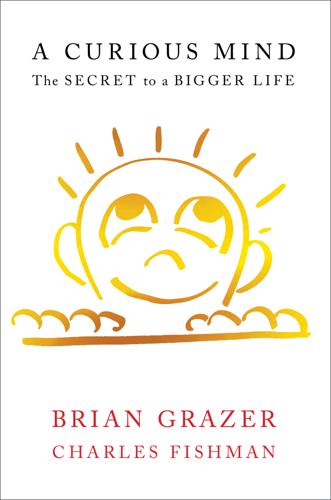
A Curious Mind: The Secret to a Bigger Life
by
Brian Grazer
and
Charles Fishman
Published 6 Apr 2014
By the time I was working as a movie producer, Teller was in his seventies, but he had found a fresh role advocating for and helping to design President Ronald Reagan’s controversial Star Wars missile defense shield, formally called the Strategic Defense Initiative. Teller was a cantankerous, difficult personality—he was widely rumored to be the inspiration for the title character “Dr. Strangelove” in Stanley Kubrick’s 1964 movie. I wanted to meet him simply because I wanted to understand the personality of someone who could be passionate about inventing the most destructive weapon in the history of humanity. It was, not surprisingly, almost impossible to get an appointment with Teller.
…
See persistence Diana (British princess), 226–29 DiCaprio, Leonardo, 50 different, confidence to be, 119–23, 125–26 Diller, Barry, 29 dinner parties, curiosity, 265 diplomats: curiosity of, 54 directors: as “boss,” 141 See also: specific person Disney, 17, 29, 107, 129 doctors: curiosity of, 53–54 doing nothing, 129 Donahue, Troy, 174 The Doors (movie), 164, 172 Dr. Strangelove (movie), 64 “driveway moments”: radio and, 79, 80, 280 drug cartel, Mexican, 93–94 Dumbo (movie), 66 dyslexia, 84–85, 86 Eastwood, Clint, 50 education, 13–14, 21, 84–86, 193 Edwards, Betty, 157 8 Mile (movie), 36, 47–48, 49, 168, 169 Eisner, Michael, 29, 129 Eminem, 47, 48, 49 emotional curiosity, 24–25, 31–32, 90–91 empathy: curiosity as creating, 133, 157 engineers: curiosity of, 55, 57 entertainment business: and audience expectations, 112 “bosses” in, 141 conversation as central to, 19 curiosity as central to, 20 curiosity conversations and, 22–23 Glashow’s curiosity about, 90 Grazer’s initial interest in, 5 Grazer’s views about, 17–18 insularity of, 23 “making your case” in, 137–40 “no’s” in, 33, 61, 101–102, 116–18, 170–71 reality in, 76–79 rules for, 122 self-confidence as important in, 33 See also: Hollywood; specific person E.T. the Extra-Terrestrial (movie), 51, 108 etiquette, 87–88, 91, 96 experience: and ideas, 177, 178–79, 200 taste and, 181, 182–83 F.

The Economic Singularity: Artificial Intelligence and the Death of Capitalism
by
Calum Chace
Published 17 Jul 2016
Scenario planning has been practised by military leaders since time immemorial. It was given the name by Herman Kahn, who wrote narratives about possible futures for the US military while working for the RAND Corporation in the 1950s. (His suggestion that a nuclear war might be both winnable and survivable made him one of the inspirations for Dr Strangelove in the classic 1964 movie.[ccclv]) Scenario planning was adopted by Shell Oil after it (along with the rest of the industry) was disastrously wrong-footed by the rise of the oil cartel OPEC in the 1970s.[ccclvi] Scenario planning is more art than science, but it can be a valuable discipline.
…
There have been numerous less permanent initiatives, such as the 2015-16 research programme of Fundacion Bankinter, one of Spain’s leading banks. (Disclosure: I am involved in that one.) [cccliv] http://archive.fortune.com/magazines/fortune/fortune_archive/2003/09/15/349149/index.htm [ccclv] Paul Boyer, 'Dr. Strangelove', a chapter in “Past Imperfect: History According to the Movies” edited by Mark C. Carnes [ccclvi] http://s05.static-shell.com/content/dam/shell/static/public/downloads/brochures/corporate-pkg/scenarios/explorers-guide.pdf [ccclvii] http://www.jfklibrary.org/Research/Research-Aids/Ready-Reference/JFK-Quotations.aspx

Liquid: The Delightful and Dangerous Substances That Flow Through Our Lives
by
Mark Miodownik
Published 5 Sep 2018
It still goes on in modern times; for instance, as recently as 2014, the entire city of Flint, Michigan, in the USA, was poisoned by lead in the water due to government incompetence. The outbreak of cholera in Yemen, which began in 2016, and is now nearing one million cases, was caused by the breakdown of a clean water supply. Not surprisingly, the fear of mass infection and poisoning has become a common motif in fiction over time, perhaps most famously in the film Dr Strangelove, in which General Jack D. Ripper identifies the fluoridation of water in the USA as a Communist plot to undermine the American way of life: ‘I can no longer sit by and allow the international Communist conspiracy to sap and impurify all of our precious bodily fluids,’ says General Ripper, before initiating a nuclear attack on the USSR.
…
Thus the fear of water contamination is as great today as ever, and yet the water coming down from the clouds, the origin of most of the water we drink, is equally difficult to protect. Clouds know no territorial boundaries; one nation’s experiments, disasters or actions can and do affect the rest of the world in the most intimate way. Dr Strangelove was made as satire, but the suspicion and fear surrounding the potential contamination of what we put into our bodies is real and will probably never go away. ‘Foreign substances introduced into our precious bodily fluids without the knowledge of the individual, certainly without any choice, that’s the way your hardcore Commie works,’ says General Jack D.
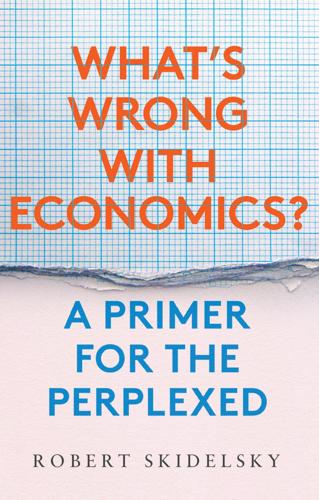
What's Wrong With Economics: A Primer for the Perplexed
by
Robert Skidelsky
Published 3 Mar 2020
It was not Calvinism which made northern Europe the centre of economic development, but the expulsion of Jews from Spain and Portugal in the 1490s. See W. Sombart, 1913. 18. Polanyi, 2002 [1944]: 46–7 19. The breakdown of the relationship between the arm and the mind was amusingly portrayed in the film, Dr. Strangelove or How I learned to stop worrying and love the bomb, in which Dr. Strangelove (played by Peter Sellers) could not stop his arm shooting up in an involuntary Nazi salute. 20. Lawson, 1997 21. The ‘theory of rational addiction’ claims that ‘addictions, even strong ones, are usually rational in the sense of involving forward-looking maximization with stable preferences’ (Becker and Murphy, 1988).
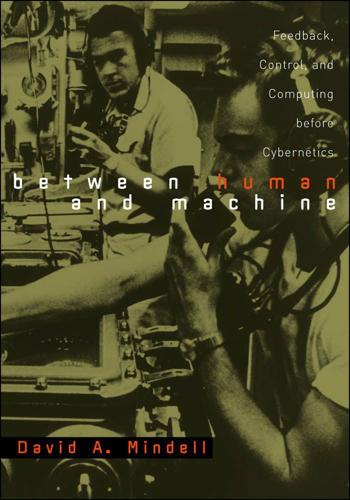
Between Human and Machine: Feedback, Control, and Computing Before Cybernetics
by
David A. Mindell
Published 10 Oct 2002
Even after the era of heroic flyers, World War II continued to blur the boundaries between mechanical and organic. Radar operators manipulated blips on screens as they fought automated attackers, and aircraft made human bodies into new and terrible weapons. During the Cold War, computerized command and control systems generated a vision (à la Dr. Strangelove ) wherein the end of the world would be directed, in real time, by men in a data-processing center. By 1969, barely a generation after Mumford’s book, Neil Armstrong’s landing on the moon presented a cybernetic image to succeed Lindbergh’s: his vision structured by instruments, his hand on a stick controlling a powerful engine, his actions aided and mediated by a digital computer and a room of ground controllers a world away.
…
As David Noble has pointed out, numerically controlled (N/C) machine tools, developed by the MIT Servo Lab, among others, brought computers and control into age-old struggles between managers and skilled machinists. Kurt Vonnegut’s first novel, Player Piano , explored the social dislocations that might result from large-scale use of digital computing and industrial automation. 16 In Stanley Kubrick’s Dr. Strangelove , control rooms set the stage for a play about the end of the world in which erratic humans battled unerring automatic systems for control of nuclear arsenals. In music, the solid-body electric guitar emerged in the 1950s to reduce feedback through an amplifier, but musicians began incorporating the unusual sounds into their work.
…
See also Rockefeller Differential Analyzer differential equations, 109 , 153 , 155 , 161 , 227 , 235 , 303 digital as term, 174 , 295 Digital Computer Laboratory (MIT), 315 digital computing, 4 , 7 –10, 17 –18, 97 , 168 , 291 , 300 , 316 , 321 and accuracy, 298 , 319 vs . analog, 10 , 23 , 139 , 293 –97, 304 , 306 , 318 –19 and cybernetics, 276 –306 and electronics, 306 , 313 at MIT, 306 , 315 , 387 n48 and NDRC, 206 , 304 –6, 31 8 and Relay Interpolator, 303 and representation, 8 , 135 , 168 and Rockefeller Differential Analyzer, 173 , 298 and signals, 134 –35 and Stibitz, 174 , 297 , 304 –6, 319 and switching, 51 –53, 304 –5 direct-current (DC), 45 , 51 , 109 , 149 “Directional Stability of Automatically Steered Bodies” (Minorsky), 140 director fire, 25 –28, 31 –32, 84 –85, 100 defined, 342 n18 and Navy, 28 –30 and synchronous systems, 48 –49 distortion, 111 , 128 , 231 , 360 n77 in amplifiers, 116 –18, 235 , 356 n30 in representation, 14 –15 Dr. Strangelove (film), 2 , 316 Draper, Charles Stark, 13 , 102 , 200 , 209 , 230 , 268 , 366 n12, 372 n30, 382 n22 and Brown, 212 –14 and BuOrd, 220 –21 and Four Horsemen, 177 gunsight of, 221 –24, 227 , 260 , 264 –65, 311 laboratory of, 227 , 230 , 267 and Sperry, 178 –79, 202 Dreyer, Frederic, 28 Dreyer Table, 28 Dudley, Homer, 122 , 132 Dupree, Hunter, 185 dynamics, 6 , 275 , 316 dynamic systems, 141 , 239 , 241 , 263 , 286 , 289 , 340 n17, 358 n54 stability in, 120 , 123 , 135 , 139 dynamic testers, 301 , 376 n25 and Army, 240 –42 Barber Coleman, 239 –42, 249 , 299 , 301 and NDRC, 239 –41, 300 –302, 329 , 331 , 334 programming of, 299 –300 tape, 300 –302, 317 , 331 , 389 n79 Texas Tester, 301 E.
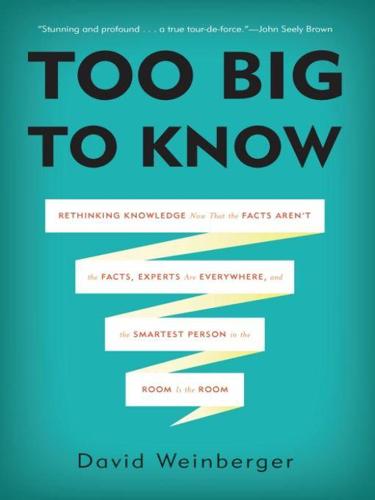
Too Big to Know: Rethinking Knowledge Now That the Facts Aren't the Facts, Experts Are Everywhere, and the Smartest Person in the Room Is the Room
by
David Weinberger
Published 14 Jul 2011
The egg-shaped Kahn made a career by (as the title of his best-selling book put it) Thinking the Unthinkable: how to win a nuclear war. This hyper-rational approach could recommend a nuclear arms strategy because it would kill “only” 10 million people. Kahn entered public awareness as an egghead cheerfully detached from the carnage he contemplated, and was ridiculed in Dr. Strangelove, Or How I Learned to Stop Worrying and Love the Bomb, even as he wielded considerable influence on the Kennedy administration. Experts became cemented in our heads as highly rational, unswayed by personal and political considerations, and sometimes out of touch with lived reality. In 1970, there were about two dozen think tanks.
…
See Science at Creative Commons Crick, Francis Crisis of knowledge CrisisCommons.org Crowds Crowdsourcing information amateur scientists British Parliamentarians’ use of expertise and leadership effectiveness Netflix contest open-notebook science Culture, information overload and Cybercascades Cyberchiefs: Autonomy and Authority in Online Tribes (O’Neil) Darnton, Robert DARPA (Defense Advanced Research Projects Agency) Darwin, Charles amateur scientists’ contributions barnacle studies Hunch.com and insight and leap of thought long-form thinking science and publishing Data accuracy of published data crowdsourcing scientific and medical information data commons evaluating metadata information and overaccumulation of scientific data scientific knowledge Data.gov Data-information-knowledge-wisdom (DIKW) hierarchy Davis, John Debian Decision-making advantages of networked corporate and government networked decision-making Debian community Dickover’s social solutions facing reality Wikipedia policy Defaults Democracy echo chambers hiding knowledge and increasing group polarization reason, truth, and knowledge Denney, Reuel Deolalikar, Vinay Derrida, Jacques Descartes, René Dialogue, exploring diversity through Dickens, Charles Dickover, Noel Diderot, Denis The Difference (Page) Discourses Diversity appropriate scoping decreasing intelligence echo chambers forking moderating negative effects of of expertise race and gender respectful conversations over DNA Dr. Strangelove, Or How I Learned to Stop Worrying and Love the Bomb (film) Doctorow, Cory Dogger Bank Incident The Double Helix (Watson) Double-entry bookkeeping Dublin Core standard Dwarf planets eBird.org E-books Echo chambers Edge.org Ehrlich, Paul Einstein@Home Eliot, T.S.

The Internet Is Not the Answer
by
Andrew Keen
Published 5 Jan 2015
If the Soviets could launch such an advanced technology as Sputnik into space, then what was to stop them from launching nuclear missiles at the United States? This paranoia of a military apocalypse, “the specter of wholesale destruction,” as Eisenhower put it, so brilliantly satirized in Stanley Kubrick’s 1964 movie, Dr. Strangelove, dominated American public life after the Sputnik launch. “Hysterical prophesies of Soviet domination and the destruction of democracy were common,” noted Katie Hafner and Matthew Lyon in Where Wizards Stay Up Late, their lucid history of the Internet’s origins. “Sputnik was proof of Russia’s ability to launch intercontinental ballistic missiles, said the pessimists, and it was just a matter of time before the Soviets would threaten the United States.”22 The Cold War was at its chilliest in the late fifties and early sixties.
…
Nuclear war, once unthinkable, was being reimagined as a logistical challenge by game theorists at military research institutes like the RAND Corporation, the Santa Monica, California–based think tank set up by the US Air Force in 1964 to “provide intellectual muscle”23 for American nuclear planners. By the late 1950s, as the United States developed hair-trigger nuclear arsenals that could be launched in a matter of minutes, it was becoming clear that one of the weakest links in the American military system lay with its long-distance communications network. Kubrick’s Dr. Strangelove had parodied a nuclear-armed America where the telephones didn’t work, but the vulnerability of its communications system to military attack wasn’t really a laughing matter. As Paul Baran, a young computer consultant at RAND, recognized, America’s analog long-distance telephone and telegraph system would be one of the first targets of a Soviet nuclear attack.
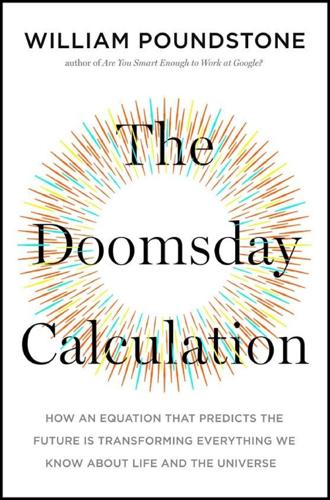
The Doomsday Calculation: How an Equation That Predicts the Future Is Transforming Everything We Know About Life and the Universe
by
William Poundstone
Published 3 Jun 2019
With more bombs being transported more miles, the authors computed that a major catastrophe was near-inevitable in just a few years. The report sketched countermeasures, ranging from the mundane to the bizarre. It proposed electrifying the bomb’s arming switches, so that anyone touching them would get a mild shock, lessening the chance of accidentally hitting the wrong button. As to the Dr. Strangelove scenario of a deranged individual starting World War III, the report argued for psychological screening of all who worked with the bombs. The most practical ideas were to put combination locks on bombs and to arrange that two individuals must act simultaneously to arm a bomb. The RAND group was reporting to General Curtis LeMay, a no-nonsense war hero who fretted about American leadership being too politically correct to use its nuclear weapons.
…
Carter describes this as “a thesis developed particularly by Leslie (and from a slightly different point of view by Gott),” leaving his own role unmentioned. The Postapocalyptic Future Should World War III start tomorrow, it probably would not kill everyone. (“I’m not saying we wouldn’t get our hair mussed,” as the general says in Dr. Strangelove.) But a major nuclear war and its aftermath would disrupt agriculture, trade, and infrastructure, ending civilization as we know it. Willard Wells, a Carlsbad, California, physicist, asserts that the standard doomsday argument places too much emphasis on human extinction. More likely the future will be postapocalyptic.

Poking a Dead Frog: Conversations With Today's Top Comedy Writers
by
Mike Sacks
Published 23 Jun 2014
At a time when our press just had their tails between their legs, this guy stood up and called out the inanity and insanity, the criminality of what was going on. It was amazing. There are so many great, bold comedies. Look at the [2006, Mike Judge–directed] movie Idiocracy. It’s about a future where everyone is an idiot. If we were living in slightly hipper times that would have been our Dr. Strangelove. Brilliant movie. Just a buck knife down the middle of the tree. Mike Judge went after specific targets, like Starbucks. But it was kind of overlooked, which happens. In the future, according to the movie, Starbucks will be giving out hand jobs. So brave. Maybe audiences just didn’t get the satire, but it is brilliant.
…
(1980) Amarcord (1973) American Graffiti (1973) An American in Paris (1951) Animal Crackers (1930) Annie Hall (1977) The Apartment (1960) Army of Darkness (1992) Arsenic and Old Lace (1944) Back to the Future (1985) The Bad News Bears (1976) Bananas (1971) The Band Wagon (1953) The Bank Dick (1940) Barton Fink (1991) Beetlejuice (1988) Being There (1979) Best in Show (2000) Better Off Dead (1985) Big Deal on Madonna Street (1958) The Big Lebowski (1998) The Birdcage (1996) Blazing Saddles (1974) The Blues Brothers (1980) Boogie Nights (1997) Born Yesterday (1950) Bottle Rocket (1996) Boudu Saved from Drowning (1932) Brazil (1985) Broadway Danny Rose (1984) Bullets Over Broadway (1994) The ’Burbs (1989) Cabin in the Sky (1943) Caddyshack (1980) Catch-22 (1970) The Circus (1928) City Lights (1931) A Clockwork Orange (1971) Closely Watched Trains (1966) The Cocoanuts (1929) Coming to America (1988) The Court Jester (1956) Crimes and Misdemeanors (1989) Dames (1934) A Day at the Races (1937) Dazed and Confused (1993) Design for Living (1933) Dirty Rotten Scoundrels (1988) Down by Law (1986) Dr. Strangelove (1964) Drag Me to Hell (2009) Duck Soup (1933) Ed Wood (1994) Election (1999) The Evil Dead (1981) Evil Dead 2 (1987) Eyes Wide Shut (1999) Fargo (1996) Ferris Bueller’s Day Off (1986) The Fireman’s Ball (1967) A Fish Called Wanda (1988) The Foot Fist Way (2006) The Fortune (1975) Four Lions (2010) Gates of Heaven (1978) The General (1926) Get Shorty (1995) Ghostbusters (1984) The Gold Rush (1925) Good Morning (1959 The Goonies (1985) The Graduate (1967) Grand Illusion (1937) The Great Race (1965) The Groove Tube (1974) Groundhog Day (1993) Hail the Conquering Hero (1944) Heaven Can Wait (1943) His Girl Friday (1940) Horse Feathers (1932) The Hudsucker Proxy (1994) I Vitelloni (1953) I Wanna Hold Your Hand (1978) I’m Gonna Git You Sucka (1988) The Incredibles (2004) It Happened One Night (1934) It’s a Gift (1934) It’s Always Fair Weather (1955) The Jerk (1979) Jules and Jim (1962) The Kentucky Fried Movie (1977) The King of Comedy (1983) Kung Fu Hustle (2004) L’Atalante (1934) The Ladykillers (1955) The Last Detail (1973) The Lavender Hill Mob (1951) Let It Ride (1989) The Life Aquatic with Steve Zissou (2004) The Life and Death of Colonel Blimp (1943) Little Murders (1971) Lolita (1962) The Long Goodbye (1973) Lost in America (1985) Love and Death (1975) Loves of a Blonde (1965) M*A*S*H (1970) The Man in the White Suit (1951) The Man with Two Brains (1983) A Matter of Life and Death (1946) The Merry Widow (1934) Midnight Run (1988) The Miracle of Morgan’s Creek (1944) Modern Romance (1981) Mon Oncle (1958) Monkey Business (1931) Monsters, Inc. (2001) Monty Python and the Holy Grail (1975) Monty Python’s Life of Brian (1979) Mr.
…
What’s interesting is that Richard treated every word you wrote as if it were scripture. Gene was looser. For Gene, the dialogue was just a starting point. You knew satirical writer Terry Southern quite well, didn’t you? We were good friends, particularly in his late years. Do you think Terry’s contribution was important to Dr. Strangelove? Terry co-wrote the script with Stanley Kubrick and Peter George, but Kubrick later claimed that Terry’s role wasn’t as significant as many people thought. I would trust Terry’s account in this area. He was always collaborating and getting into awful squabbles about credits. He was a generous man and easily taken advantage of—picked apart, really—by the wolves.
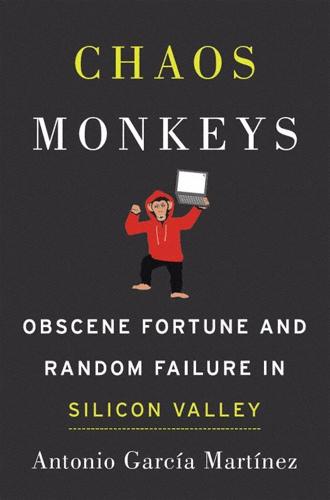
Chaos Monkeys: Obscene Fortune and Random Failure in Silicon Valley
by
Antonio Garcia Martinez
Published 27 Jun 2016
(God is certainly also doing Goldman’s work, from the looks.) And so, after a particularly competitive round of Friday afternoon push-ups and ID bingo, a memo about office decorum went out to the entire floor. It boiled down to a reminder that betting was prohibited on the trading floor. It reminded me of that classic scene in Dr. Strangelove in which the character played by George C. Scott gets into a wrestling match with the Russian ambassador inside the control room at the Pentagon, and is sternly admonished: “Gentlemen, you can’t fight in here. This is the war room!” No fucking in the brothel either, dear comrades! While on Wall Street, I had the good fortune to witness the tail end of an epochal historical transformation.
…
A reporter from Business Insider with the porn star name of Courtney Comstock called with follow-up questions on the New York tech scene (she’d later write about my Goldman Sachs piece as well). A random tech conference in Stockholm invited me to come speak, expenses paid. People were forwarding the post to renowned New York investors like Chris Dixon and asking for commentary. The social media hills were alive with the sound of AdGrok, and I felt like Slim Pickens at the end of Dr. Strangelove: a-hootin’ and a-hollerin’ and waving my cowboy hat around, riding the atomic bomb down to the ground, eager for the great mushroom cloud. As a strategy, this worked better than expected. Traffic to AdGrok grew exponentially, like Fibonacci’s rabbits. We were hitting fifty thousand page views a day, which wouldn’t be much for The Atlantic, but was a lot for a startup that until the day before had . . . well . . . something like a dozen page views a day.
…
See also Internet advertising; marketing brand, 39–40 budgets, 461 business model, 191, 325 direct-mail, 381, 385–86, 391 direct-response, 362–63 display, 154 fuzzy world, 388 immature markets, 318 as inducement, 450 investors, 83 Jobs and, 485 mathematics for, 28 as name-calling, 380–81 newspaper, 36–37 ROAS, 81 truth in, 54 Zuckerberg knowledge, 393–94 AdWords, 106, 186, 222, 286, 300, 364 Airbnb for cars, 241 founders, 78 Internet advertising, 25 logo, 124 success, 50 taking off, 198 as visionary, 164 alpha products, 44 Altman, Sam, 160–62, 178 Amazon Amazon Web Services, 103, 155, 233 meeting with A9 team, 429–30 mobile commerce, 484 scheming, 382 shopping cart, 328 AmEx, 301 Amit, Alon, 217 analytics software, 448 Andreessen, Marc, 25, 47 Andretti, Mario, 94 Android phones, 198, 282 angel investors, 110–13, 115, 117, 154, 206 Animal House, 399 antibiotics, 293 Apple Apple OS X, 47 joining, 346 platform control, 485 product launches, 365 scheming, 382 application programming interface (API), 186 aQuantive, 454 Arjay Miller Scholar, 110 Association for Computing Machinery, 368 Atari, 124, 149 Atlas, 383, 453–55 AT&T, 315, 324 Audience Network (AN), 486 August Capital, 154, 156, 159 Ayala, 496 Badros, Greg, 3, 410, 454, 457 Bain, Adam, 184, 188–90, 203, 478–79, 494 Baker Scholar, 110 Bakshy, Eytan, 368 bar-code reading, 51 batch, 105 Battles, Matt, 430 Beacon, 335 bedroom communities, 338 beer and diapers, 363 Beltway Boomers, 385 Belushi, John, 399 Best Buy, 328 best effort, 418 beta products, 44 Bezos, Jeff, 428 Big Brother, 384, 402 Bin Laden, Osama, 384 birth, 59–60 black-hat hackers, 314 Blackwell, Trevor, 60 Bluebeard (Vonnegut), 43 BMW, 31, 39, 130, 218, 265, 372 Boland, Brian, 382, 398 digital marketing and, 389 first meeting, 3–4 in great debate, 459–61 on integration, 443 middle manager, 463–64 reporting to, 277 seducing, 408 slides, 7–8 Sponsored Stories and, 371 stripping of duties, 452 Bolshevism, 356 Bond, Jon, 173 boot camp, 269 Bosworth, Andrew (“Boz”), 2, 444–46, 457–60, 473–74 Boyd, John, 436, 437 The Boy Kings (Losse), 445 brand advertising, 39–40 Brazil, 377–78 Brazil, Alan, 22–23 British Trader babies, 58–59, 170, 304–5 child support to, 306–7 family, 84 meeting, 54–56 relationship, 165, 168, 245 separating, 169–70, 303 Brogramming, 400 Bronson, Po, 308 Brown, Bonnie, 357 bugs, 269 Bulfinch, Thomas, 447 bumping phones, 218 Burberry, 39, 362, 372 Burke, Galyn, 349 Bushnell, Nolan, 149–50 business development, 429–30, 464, 494 Business Insider, 101 Campbell, Joseph, 259 Candy Crush, 383, 384 cap, 114–17 capitalism beef with, 411–12 extremes, 355–56 marching onward, 22 Silicon Valley, 74 spectacle, 181 speed of, 25 victorious, 124 wheels of, 36 work of, 23 Car and Driver, 261 Carrey, Jim, 424 Carthago delenda est, 288–90, 428, 492–93 Casablanca, 418 Castro, Fidel, 65, 354, 456 Cato the Elder, 289 Century 21, 21 channeling, 360 chaos monkey, 103 character development, 190 Charles River Ventures, 126–27 China, 374–75 Choe, David, 333 Chrome, 484 Chrysler, 349 Church of Latter Day Saints, 356 Churchill, Winston, 167, 411 Citibank, 57 CityVille, 228 class-action lawsuits, 81 Clavier, Jean-François (“Jeff”), 160 Clickable, 83 clickbait-y publishing, 81, 101 clickthrough rates, 309, 368, 450–51, 487 clown car, 428–29 Clune, David, 312 Coca-Cola, 311 Coelius, Zach, 396–99 cognitive dissonance, 361 Cole, Rodger, 132–34, 138 Comcast Ventures, 105 common investors, 397 communism, 355–56 company culture, 74 company-wide Q&A, 348–49 conference names, 311 connected world, 285 consultancy firms, 70 consumption patterns, 385, 412 conversion data, 318 turning data into cash, 274 tracking software, 222 Conway, Ron, 98 cookies data, 392 dropping, 387 pool, 484 reading, 6, 387 retargeting, 381–82 corporate culture, 88, 262, 332, 335, 464 corporate development, 97, 180, 209, 254, 256, 494 corporate mergers, 341 cost per mille (CPM), 275, 348, 386, 424, 486 countdown clock, 347 Country Casuals, 385 Coupa Cafe, 84 Cox, Chris, 278, 356 leadership, 410 at on-boarding, 260–64 Craigslist, 52, 54, 99 The Creamery, 229 credit derivatives, 20, 26–27 credit-default swap (CDS), 19–20 Crowe, Russell, 202 CrunchBase, 43 Crusades, 356 Cuba, 227–28, 354–55 culture company, 74 corporate, 88, 262, 332, 335, 464 cultural fit, 220 engineering, 285 Facebook, 268–69, 334–35, 345 hacker, 284 Silicon Valley engineering-first, 262, 283 tech companies’ cultural fit, 220 Cureton, Aileen, 331 Custom Audiences (CA) data matching, 452, 465 expanded version, 440 FBX versus, 439, 459–62 impact, 482 introduction, 388 losing as product, 452 open plan and, 442–43 as vulture, 401–2 working of, 394–95 customer acquisition cost (CAC), 486–87 customer relations management (CRM), 384–85 cyclists, 338 cynicism, 264 DabbleDB, 236–37 Dalal, Yogen, 154, 162–63 Daniel, Rob, 391 data conversion, 318 cookies, 392 turning data into cash, 274 data-per-pixel, 274 Facebook buying, 328 geographic, 301 Irish Data Privacy Audit, 278, 320–23 joining, 465 matching, 452, 465 mobile, 382, 477, 484, 486 on-boarding, 386–87 real-time synchronization, 38 sprawl, 321 targeting, 318, 485 third-party, 390, 423, 440, 484 velocity, 319 data protection agency (DPA), 320 Datalogix, 386, 388 Debord, Guy, 32, 353 defection, 255 Deloitte, 70 demand-side platform (DSP), 396, 423–24 democracy digital, 326–27 form of government, 411 Dempster, Mark, 122–23 derivatives, 19–20, 24 Derman, Emanuel, 16 desengaño, 239 Deutsche Bank, 57 development AdGrok, 234 business, 429–30, 464, 494 character, 190 corporate, 97, 180, 209, 254, 256, 494 costs, 487 defined, 95 dev team, 234–35 environment, 270 mobile, 79 product, 47, 94, 191, 220, 334, 370, 389 software, 455 technical, 156 technology, 294 tools, 336 Dhawan, Rohit, 217 DiggBar, 85 digital advertising, 448 digital democracy, 326–27 digital marketing, 388–89 digital monetization, 184 Direct Marketing News, 173 direct response (DR), 39 direct-mail advertising, 381, 385–86, 391 direct-response advertising, 362–63 Disk Operating System (DOS), 149 Dixon, Chris, 101–2 Docker, 119 dogfooding, 43 dominoes, 227 Dorsey, Jack, 177, 464, 490 Dostoyevsky, Fyodor, 190, 291 DotCloud, 119 Dove, 496 Dr. Strangelove, 24, 102 dragomans, 194–95 Dropbox, 124, 164, 175, 421, 469 drunk driving, 32–36 due diligence, 233, 236, 271 Dwelle, Dale, 213, 254 eBay, 111, 395 Ebersman, David, 419 Eckles, Dean, 368 Economist, 325 egotism, 42–43, 306 Electron Mine Inc., 144 Emerson, Ralph Waldo, 344 enemies, 166 engañado, 239 engineering boot camp, 269 brains, 444 building tools, 311 culture, 285 Facebook, 390, 396, 453 greatness, 225 language, 433 managers, 331, 334, 341, 389–90, 398, 402 Silicon valley, 262, 283 solutions, 83 staples, 432 teams, 8, 272, 331, 390, 459 technical debt, 455 technical detail, 293 work, 426 entrepreneurs go-betweens, 74 life of, 165–66 startups, 342, 347 Epsilon, 384, 386 equity, 115, 146, 247 eugenics, 122 Eurasian politics, 194–95 evangelism, 356 Eventbrite, 78 evergreen funds, 206 Evernote, 469 exchange-traded securities, 17 Experian, 384, 391–92 F-2 visa, 71 Facebook.
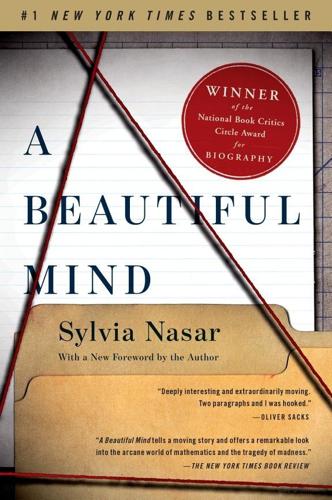
A Beautiful Mind
by
Sylvia Nasar
Published 11 Jun 1998
He gave up teaching when he went to the Institute in 1933 and gave up full-time research in 1955 to become a powerful member of the Atomic Energy Commission.10 He was one of the people who told Americans how to think about the bomb and the Russians, as well as how to think about the peaceful uses of atomic energy.11 An alleged model for Dr. Strangelove in the 1963 Stanley Kubrick film,12 he was a passionate Cold Warrior, advocating a first strike against Russia13 and defending nuclear testing.14 Twice married and wealthy, he loved expensive clothes, hard liquor, fast cars, and dirty jokes.15 He was a worka-holic, blunt and even cold at times.16 Ultimately he was hard to know; the standing joke around Princeton was that von Neumann was really an extraterrestrial who had learned how to imitate a human perfectly.17 In public, though, von Neumann exuded Hungarian charm and wit.
…
RAND may well have been the model for Isaac Asimov’s Foundation series, about a RANDlike organization full of hyper-rational social scientists — psychohistorians — who are supposed to save the galaxy from chaos.4 And Kahn and von Neumann, RAND’s most celebrated thinkers, were among the alleged models for Dr. Strangelove.5 Although its heyday lasted a decade or less, RAND’s way of looking at human conflict not only shaped America’s defense in the second half of the century but also made a deep and lasting impression on American social science. RAND had its roots in World War II, when the American military, for the first time in its history, had recruited legions of scientists, mathematicians, and economists and used them to help win the war.
…
L., 124 Dickinson, Emily, 323 Dictionary of Scientific Biography (Gillespie, ed.), 337 DiMaggio, Joe, 192 Diophantine equations, 45, 334 Dirichlet, Peter Gustave Lejeune, 141 Dix, Dorothea, 289 Dixit, Avinash, 97, 375, 385 Doherty, Robert, 40–41 Dostoevsky, Fyodor, 18 Douglas Aircraft, 106, 111, 113 Dresher, Melvin, 115, 119, 150 Dr. Strangelove, 80, 105 Duchane, Emma, 190, 196, 200–201, 202, 223 Alicia Nash’s apartment with, 262 Nash’s interest in, 317 Nash’s McLean commitment and, 255, 256, 257 and onset of Nash’s schizophrenia, 240, 242, 250, 251 Dudey, Marc, 350 duels, theory of, 121 Duffin, Richard, 41, 44–45, 46 Duke Journal of Mathematics, 318 Dynamics of Creation, The (Storr), 15 Dyson, Freeman, 20, 21, 221 Econometrica, 91, 120 Econometric Society, 20 Nash’s fellowship in, 354–55 economics: bargaining and, 88–91, 120, 129, 149–151, 360 see also game theory; Nobel Prize in economics Edgeworth, Francis Ysidro, 88, 89 Ehrlich, Phillip, 287 Eilenberg, Samuel, 68 Einstein, Albert, 12, 13, 15, 19, 41, 46, 50, 63, 79, 84, 87, 118, 216, 271, 308, 380 adolescence of, 35 Davis supported by, 271 and general theory of relativity, 52, 70, 86, 231, 380 on God, 66 go played by, 75 Heisenberg’s uncertainty principle critiqued by, 221 on intellectual isolation, 59 on Kaluza’s theory, 94 liberal views of, 14 Nash’s meeting with, 70–71, 94, 382 nuclear warning of, 56 on Princeton, 49, 50–51 recruited to IAS, 54–55 relativity papers of, 52, 70, 86 and special theory of relativity, 51–52, 70, 86 Swiss citizenship of, 272 Eisenhart, Luthor, 53, 388 Eisenhower, Dwight D., 110, 111, 140, 185, 217 elections of 1948, 49, 62 elections of 1952, 140 electroshock, 293 Eliot, T.

The Power of Glamour: Longing and the Art of Visual Persuasion
by
Virginia Postrel
Published 5 Nov 2013
Synchronization omits the trials and rehearsal that real coordination requires. It hides conflict and disguises the compromises necessary to achieve apparent harmony. It assumes goals that are not only shared but worthy. (In some of the most famous movie command centers, notably the war room in Dr. Strangelove [1964], effortless synchronization turns ominous.) These graceful visions remain pleasurable because discordant elements can be concealed in space or time. In an essay, the author Michael Chabon, whose work often explores themes of illusion, idealism, and escape, recounts a lesson one of his childhood religious-school teachers gave on the dangers of fantasy and escapism.
…
Blues” (song), 185–86 Dean, James, 18, 28 death charisma and, 118–19 immortality and, 146, 149–50 terrorism and, 220 at young age, 24, 101 DeFanti, Mark, 203 DeJean, Joan, 123 DelVecchio, Marina, 51 Demarchelier, Patrick, 120 DeMille, Cecil B., 175, 188 DeMille, William, 175 Democracity, at New York World’s Fair, 191 DePrince, Michaela, 3–4, 223 Detroit, 215 Devil in the White City, The (Larson), 159 Diana, Princess of Wales, 50, 50, 119, 243n31 DiBattista, Maria, 182 DiCaprio, Leonardo, 27, 27 Dickstein, Morris, 173 Diehl, Kay and Digby, 85 Dietrich, Marlene, 115, 121, 121, 131 Dinner at Eight (film), 184 Disney, 49, 195 “displaced meaning,” 41–45, 44, 48, 90, 144, 219 Doctorow, E. L., 192 Dolby, Thomas, 53 Dolce & Gabbana commercials, 217–18, 254n16 Doonan, Simon, 46–48, 125 Dos Equis beer commercials, 217 Dr. Faustus (Marlowe), 148, 150 Dr. Strangelove (film), 95 drag balls, 63–64 Drake, Alicia, 4, 68 Dream Worlds (Williams), 221 Dreiser, Theodore, 151–52, 154, 158–59, 160, 176 Duarte, Eva, 176 Duff-Gordon, Lady Lucy (Lucile), 156, 175, 247n51, 249n14 Duro Gloss coats, 204, 206 E Earhart, Amelia, 25, 33 Ebony magazine, 62, 222 Eddy, Art, 58 Edo, Japan, 150, 153, 155, 247n40 effortlessness, 79–80 eidolon, Helen of Troy as, 148 Eitner, Lorenz, 130, 244n2 Emerson, Ralph Waldo, 154 Endless Summer, The (film), 104, 195 entrepreneurship and startups, 73, 83, 104 Shanghai and, 245n10 entropy, glamour’s attempt to escape, 80–81, 98, 100 envy, Berger on glamour and, 31–32, 39 escape and transformation, 56, 57–70, 58, 58 channeled into personal fulfillment, 67–70 in Depression era, 171–74 emotions and object of glamour, 57–60 as heart of human culture, 60–61 as hope and spark of real-world change, 61–65 obscuring of difficulties, 69–70 vulnerability and revelation, 66–67 Euripides, 148, 150 F fame, 5, 63–64, 66, 141–42, 141, 144, 146, 149–50, 211, 220.
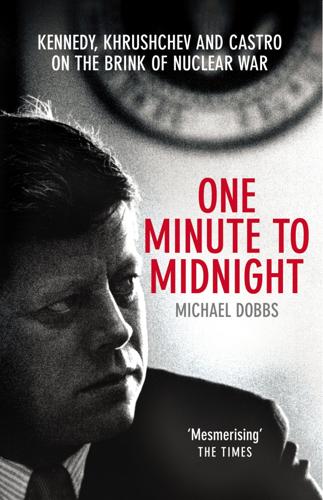
One Minute to Midnight: Kennedy, Khrushchev and Castro on the Brink of Nuclear War
by
Michael Dobbs
Published 3 Sep 2008
When a crew chief asked him to extinguish his ever present cigar to avoid igniting an explosion on board a fully fueled bomber, LeMay growled: "It wouldn't dare." Asked for a policy recommendation on Cuba, he replied simply: "Fry it." Soon after the missile crisis, LeMay would became the inspiration for Buck Turgidson, the out-of-control Air Force general in Stanley Kubrick's movie Dr. Strangelove. While respecting LeMay's abilities as a commander, other military leaders resented his empire-building tendencies. For LeMay, the Air Force could never have too many nuclear weapons. More weapons were always needed to guarantee the destruction of an ever-expanding list of targets. His bureaucratic rivals complained of "overkill."
…
Dmitri Yazov became Soviet defense minister in 1987 and led a failed coup against Soviet president Mikhail Gorbachev in August 1991. John Scali served as U.S. ambassador to the United Nations under President Nixon. Curtis LeMay was caricatured as the maniacal Air Force general Buck Turgidson in Dr. Strangelove. In 1968, he ran for vice president of the United States on a ticket headed by the segregationist George Wallace. Ernesto "Che" Guevara left Cuba in 1965 to pursue his dream of worldwide revolution. He was killed in the mountains of Bolivia by CIA-supported government forces in 1967. Robert McNamara remained secretary of defense until 1968.
…
dignidad (dignity), as Cuban value diktors Dillon, Douglas diplomacy: JFK's doubts about at United Nations unwritten rule of see also specific initiatives direction finding Directorio Revolucionario Estudiantil (DRE; Student Revolutionary Directory) Divnogorsk Dobrynin, Anatoly Feklisov proposal and JFK's letter delivered to RFK's meetings with Dominican Republic Donovan, Robert Doress, Irvin Dorticós, Osvaldo Dr. Strangelove (movie) Dubivko, Aleksei Dubovik, Vladimir Duck Butt Duluth Airport Dylan, Bob dysentery Eastern Europe EC-135 "Looking Glass" planes Ecker, William Egypt Eielson Air Force Base 82nd Airborne Division Eisenhower, Dwight D. JFK criticized by on Jupiter missiles Khrushchev's visit with U-2s and El Chico, Soviet military headquarters at Castro's visits to Oblizin at underground command post near elections, U.S.: of of of "Elimination by Illumination" scheme Elint (electronics intelligence) Ella, Hurricane Emerson, Ralph Waldo Enterprise, USS Escalante, Anibál Eskimos Esmeralda, Essence of Decision (Allison) Essex, USS Europe, MRBMs targeted on ExComm (Executive Committee of the National Security Council) difficulty of forging consensus in inner meetings of members of naval blockade and "eyeball to eyeball" moments F-80 Shooting Star F-100 Super Sabres F-101 fighter aircraft F-102 fighter-interceptors F-105 fighter aircraft F-106 fighter aircraft Farm, the FBI Feklisov, Aleksandr 55th Strategic Reconnaissance Wing Filipinas Finca Vigia Finland FIRE HOSE plan 1st Armored Division, U.S.
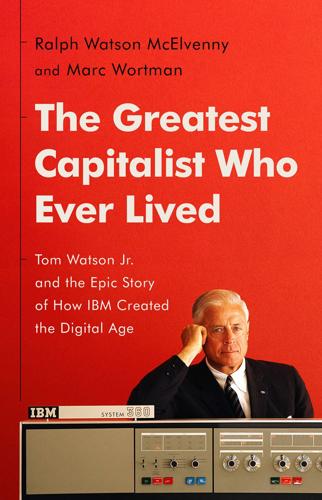
The Greatest Capitalist Who Ever Lived: Tom Watson Jr. And the Epic Story of How IBM Created the Digital Age
by
Ralph Watson McElvenny
and
Marc Wortman
Published 14 Oct 2023
Its users at IBM and elsewhere developed FORTRAN and other seminal programming languages for numeric computing that led to some of the earliest artificial-intelligence advances, from the first synthesized human speech and music to satellite orbital tracking and some of the first game-playing programs, including checkers and chess.23 In 1956, when the elderly T.J. watched the computer playing checkers against an IBM engineer prior to a first-ever televised broadcast of a human-versus-computer game, he predicted it would raise the price of IBM stock by fifteen points. It did.24 SAGE and other data-processing systems built for the military contributed immeasurably to the nation’s defense during the Cold War. But they also raised fears of computer-actuated war. Through films such as the 1964 dark comedy Dr. Strangelove, the company’s iconic “thinking machines” that promised to transform human existence for the better also became associated with a “doomsday” strategy of mutually assured destruction in the nuclear arms race with the Soviet Union. Computers could, like humans, misjudge data sources, inadvertently putting strategic weaponry on alert in response to false warnings of attack.
…
But in measured tones he explains that he has “never thought of them as anything more than a rather sophisticated tool” to eliminate laborious, “repetitive thinking.” He offers viewers his hope that, in the coming decades, computers would help solve America’s “immense social problems” and “get the United States on the right track.”48 But films such as Dr. Strangelove in 1964 and best-selling novels like 1962’s Fail-Safe (also a popular 1964 film) reflected and fueled public fears of dependence upon out-of-control thinking machines. IBM’s own powerful, disciplined corporate culture, while generating immense business success, also provoked dread that, like HAL 9000 (an obvious IBM reference with its shift of each letter to the one before it in the alphabet), the reasoning computer in 1968’s 2001: A Space Odyssey, someday the thinking machines would run amok.
…
The officer soberly concluded, “What we are really doing here is playing God.” That remark shook Watson, who, deeply disturbed by what he learned about the dangers of nuclear annihilation, suffered from nightmares during his period running the GAC.23 Watson even arranged a private screening for GAC members of Dr. Strangelove, a 1964 satire about a rogue US Air Force commander who orders a strategic attack on Russia, overcoming the many safeguards supposedly designed to prevent such a catastrophe. When Scowcroft objected to “‘show[ing] such an unrealistic picture to people who are seriously trying to understand nuclear weapons,’” Watson admitted aspects of the film were “a little far-fetched.”
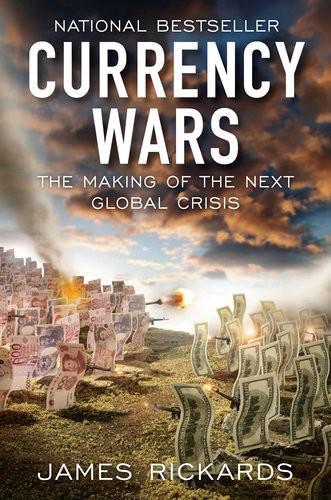
Currency Wars: The Making of the Next Gobal Crisis
by
James Rickards
Published 10 Nov 2011
Once inside, we cleared security, got our badges, dropped off our cell phones and headed upstairs. After months of meeting in seminar rooms and offices, we were being admitted to the Warfare Analysis Lab war room. The scene did not disappoint. Growing up in the Cold War, I routinely entertained visions of the war rooms used for nuclear war fighting from the classic films Dr. Strangelove and Fail-Safe. Now we were entering something similar, but would be fighting not with B-52s, but with currencies. The APL war room is large, with electronic battle stations and observation posts for about a hundred participants and observers. The rectangular room has four wall-sized screens at the front end and banks of smaller fifty-inch plasma video screens mounted on the walls along both sides to patch in additional participants from remote locations or to display additional graphics.
…
The brief started with some happy talk about continuing to work with China on a joint venture pipeline, but then veered into the announcement about demanding gold-backed currency for future energy shipments. An official summary of the war game prepared much later referred to this move as “aggressive” and “threatening,” but the immediate response was more in keeping with the absurd style of Dr. Strangelove. The white cell asked for time to caucus once the Russian presentation was complete. From their position at the center of the room, they made a ruling that the Russian currency move was “illegal” and would have to be struck from the game record. Steve and I were incredulous, as were Steve’s Russian teammates who had endorsed the idea.
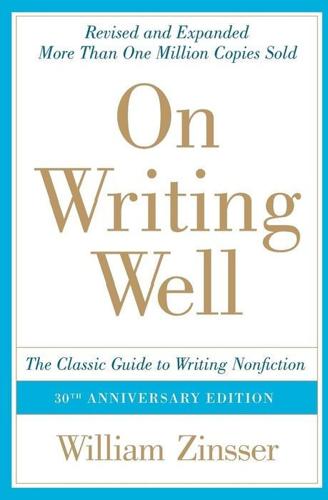
On Writing Well (30th Anniversary Edition)
by
William Zinsser
Published 1 Jan 1976
It’s an attempt to say important things in a special way that regular writers aren’t getting said in a regular way—or if they are, it’s so regular that nobody is reading it. One strong editorial cartoon is worth a hundred solemn editorials. One Doonesbury comic strip by Garry Trudeau is worth a thousand words of moralizing. One Catch–22 or Dr. Strangelove is more powerful than all the books and movies that try to show war “as it is.” Those two works of comic invention are still standard points of reference for anyone trying to warn us about the military mentality that could blow us all up tomorrow. Joseph Heller and Stanley Kubrick heightened the truth about war just enough to catch its lunacy, and we recognize it as lunacy.
…
W., 22, 222, 237 Bush, George W., 14, 237 Business writing, 165–77 Cab at the Door, A (Pritchett), 135, 285 Canby, Henry Seidel, 103 Canfield, Dorothy, 103 Capote, Truman, 98 Careful Writer, The (Bernstein), 40 Caro, Robert A., 98 Carson, Rachel, 98, 158 Carter, Jimmy, 43 Casablanca (film), 198 Catch-22 (Heller), 208 Child, Julia, 83 Christiansen, Donald, 160 Churchill, Winston, 62, 237 Clarity, 8–11, 165 editing for, 301 Clichés, 32–34, 234–35 in leads, 59 in travel writing, 117–18 Clines, Francis X., 255 Clinging to the Wreckage (Mortimer), 144 Clinton, Bill, 43 Clutter, 12–16 Colon, 72–73 Columnists, 205–6 Coming Into the Country (McPhee), 120–22 Compression, 163–64, 256–57, 261, 269 Computer, writing on, 88–89 Concept nouns, 75–76, 172 Concrete details, 119–20, 155–56 196 Condescension, 231, 233 Confidence, 19, 21–22, 29, 232, 243, 245, 247, 298 Contractions, 74 Control of humor, 211 of material, 51, 75 Conway, Jill Ker, 285 Coolidge, Calvin, 65 Correspondence business, 165–66 customer, 172–74 Creamer, Robert, 183 Credibility, 77 Criticism, 193–206 drama, 194 guidelines for, 195–98 humor in, 202 literary, 203–5 movies, 195, 198–200 music, 201–2 television, 200–201 Cross, Wilbur, 236, 238, 239–40 Cuomo, Mario, 237 Curiosity, 246–47, 250 Darwin, Charles, 158 “Dating Your Mom” (Frazier), 223–24 Davies, Paul, 158 Dead Sea Scrolls, 61–62 Dean, John, 12, 13 Definitiveness complex, 52 de Kooning (Stevens and Swan), 99 Delbanco, Andrew, 98 DeLillo, Don, 244 Dictation, 77–78 Dictionaries American Heritage, 38, 41 New World, 34 synonym, 34–35, 271 Third International, 40 Didion, Joan, 59–60, 96, 119–20 DiMaggio, Joe, 302–3 Doonesbury (comic strip), 208 Doughty, Charles, 274 Dr. Strangelove (film), 208 Drinking Life, A (Hamill), 135, 287 Dyson, Freeman, 158 Ecclesiastes, 166 Editing, 8–11, 83–87. See also Rewriting. Editors, 298–302 Education of Henry Adams, The (Adams), 139 Eggers, Dave, 243 Ego, 23, 134, 146 Eiseley, Loren, 157 Eisenhower, Dwight, 237 Elements of Style, The (White), x, 35 Eliot, T.

Thinking About It Only Makes It Worse: And Other Lessons From Modern Life
by
David Mitchell
Published 4 Nov 2014
But he knew it was vital to remember that the evil men who were jeopardising civilisation were also risible little twerps. Many second world war veterans were accustomed to joking about Hitler. Spike Milligan and his contemporaries founded a comic tradition of making fun of the Nazis which has given us Peter Sellers’s performance in Dr Strangelove, “The Germans” episode of Fawlty Towers, Dad’s Army, ’Allo ’Allo!, endless YouTube resubtitlings of Downfall, and Prince Harry’s party gear. Just because the wartime generation has largely gone, we mustn’t lose our comic nerve. While we must never forget the scale and severity of Hitler’s crimes, we will have lost something precious if we start taking him seriously
…
sketch of 1 closest we’ve come to electing a genocidal maniac, 1 and Iraq invasion 1, 2 Blatter, Sepp 1 Blears, Hazel 1 Bloom, Godfrey 1 Blumenthal, Heston 1 Boat Race 1 body weight 1 bottom-wiping 1 Bowers, Judge Peter 1, 2 Box of Delights, The 1 Boyle, Danny 1 Boyle, Frankie 1, 2, 3 Boyle, Susan 1 BP 1, 2 BPP 1, 2 BPPP no such thing Brady, Karren 1 “brainchild” 1 see also words, new, favourite and not so favourite Brand, Russell 1, 2 Branson, Richard 1, 2 Brazil 1 Brett, Jeremy 1 Bristow, Keith 1 Britain’s Next Top Model 1 British National Party (BNP) 1 British Rail 1, 2 British Retail Consortium 1 Brittin, Max 1 Brooker, Charlie 1 Brooks, Mel 1 Brown, Gordon 1, 2, 3, 4, 5 and Boyle’s health 1 Cable’s overrated joke concerning 1 Chilcott Inquiry set up by 1 crises in government of 1 election date confirmed by 1 Brown, Sarah 1 Brunel, Isambard Kingdom 1 Burley, Aiden, Nazi outfit hiring of 1 Burnham, Andy 1 Bush, George W. 1 and Iraq invasion 1 Butlin’s 1, 2 Byrne, Justin 1 Cable, Vince 1 Call the Midwife 1 Cambridge Union Society 1 Cameron, David 1, 2, 3, 4, 5, 6 appearance of 1 appearing to make an effort 1 “change” mantra of 1 and “nasty party” image 1 old Tory background of 1 and platitudes over policies 1 refusing to say anything positive about burglars 1 and UK’s military agreements with France 1 unfitness of, for government 1 Camilla, Duchess of Cornwall 1, 2 Campbell, Alastair 1 Carey, George, and use of the phrase “political correctness gone mad” 1 Carling Black Label, its contribution to world heritage 1 Carlyle, Robert, pants of 1 Carmichael, Laura 1 Carry On at Your Convenience 1 Carry On Up the Khyber 1 Cash in the Attic 1 Catherine, Duchess of Cambridge, filmed having sex (in my imagination) 1 Cavill, Henry 1, 2, 3 Cerf, Vinton 1 Chamberlain, Neville 1 change 1 as Cameron mantra 1 Charles II 1 Charles, Prince of Wales 1, 2 chefs, irritating nature of 1 Cheltenham Science Festival 1 Chilcott Inquiry 1 Chilcott, Sir John 1, 2 China 1 Christmas cards, and the industrialisation of good cheer 1 Chuckle Brothers, televised death of 1 Churchill, Winston 1, 2, 3, 4 Cif/Jif 1 Civil Nuclear Constabulary 1 Clarkson, Jeremy 1, 2 Cleese, John 1 Clegg, Nick 1, 2, 3 breaker of promises 1 and Chilcott Inquiry 1 in leadership debates 1 rowing machine of 1 Cock Jesus 1 Coe, Seb 1 Cole, Cheryl 1 Cole, Sir Henry 1 Comic Relief 1 Communications Data Bill 1, 2 conflict, media’s obsession with 1 Connery, Sean 1 Consignia 1 cookery programmes 1 Cookie Monster 1 Countdown 1, 2 Courage brewery 1 Courage, John, serendipitous name of 1 Coventry City FC 1 Cowboy Trap 1 Cowell, Simon 1 Cox, Dr Lynne 1 Coyote, Wile E. 1, 2 Craig, Daniel 1 credit crunch, see global financial crisis Crest 1 Crick, Francis 1 Crowe, Russell 1 Curtis, Richard 1 Dad’s Army 1 Daily Mail 1, 2, 3, 4 Daily Mirror 1, 2 Daily Planet 1 Daily Telegraph 1 Daly, Tess 1 Darling, Alistair 1 dating 1 via websites 1, 2 Davies, Toby 1 Davis, Paul 1 Dawkins, Richard 1 daytime television 1 de Francisco, Juan 1 de Mooi, CJ, fictional cookery of 1 De Niro, Robert 1, 2 Deepwater Horizon, oil spill in, see Gulf of Mexico Dennis, Hugh 1 Dent, Susie 1, 2 Dexter, Colin 1 Diamond, Bob 1 Disney 1, 2, 3 DNA 1 Doctor Who 1, 2, 3 Dr Strangelove 1 Doctors 1 dogs, dyed to look like other animals as solution to biodiversity crisis 1 Double Falsehood 1 Dowler, Milly 1 Downfall 1 Downton Abbey 1, terribleness and enjoyability of 1, 2 Duffy, Lisa 1 East Midlands, laudable self-loathing of 1 EasyJet 1, 2 Ebdon, Peter, similarity to Vladimir Putin 1 education: and Bibles in schools 1 and students’ complaints 1 and teachers’ pay 1, 2 teaching of history 1 universities 1 Edward II 1 Elizabeth II 1, 2, 3, 4, 5 diamond jubilee of 1, 2 Guardian article on 1, 2 “went bonkers” over corgis’ food 1 see also monarchy Ellison, Jane 1 Elms, Mark 1, 2 Emberg, Bella 1 emigrating and happiness 1 Empire of the Sun 1 Endeavour 1 England soccer team 1, 2 English Heritage 1 English Tourist Board, see Visit England Estinel, Martin 1 Eton College 1 Evans, Sir Richard 1 exercise, women’s attitude towards 1 Facebook: and anonymous messages 1 and food 1 fairytales 1 Fall and Rise of Reginald Perrin, The, remake of 1 Fallon, Michael 1 fan fiction 1 Fantastic Four, The 1 Farage, Nigel 1, 2, 3 and “nasty party” image 1 Farmer, Colin 1 fashion: anti- 1 invoking, as marketing 1 Fawlty Towers 1 Ferguson, Niall 1 Ferrari, Nick 1 Figes, Orlando 1, 2 Financial Services Authority 1, 2 Findus, horse in lasagnes of 1, 2 Fish, Michael 1, 2 fish stocks 1 fitness (and lack of) 1, 2 Flintoff, Andrew 1 Flintstones, The 1, 2 food: and advertising 1, 2 budget 1 cereals 1 horse, not beef 1 and Michelin 1 and neo-Nazis 1 and social media 1 football, and colour of strip 1 Forth Bridge 1 Fournier, Mark 1 Fowler, Steve 1 Fox, Emilia 1 France, UK’s military agreements with 1 Frasier 1, 2 Freegard, Siobhan 1 Freud, Matthew 1 Full Monty, The 1 G, Ali 1 Gaddafi, Col. 1 Gangnam Style 1 Gant, Charles 1 Garfield, Andrew 1 Gascoigne, Paul 1 Gauthier, Alexandre 1 gay people: and B&B owners 1 and football 1 Markovic’s insults against 1 and marriage 1 Silvester’s insults against 1 general elections: 1992 1 1997 1 2010: Brown confirms date of 1 crises preceding 1 DM’s ludicrous predictions concerning 1 and leaders’ wives 1 leadership debates preceding 1 UKIP manifesto for 1 Genesis, Book of 1 Germany: and Hitler salute 1 post-WW 1 2 Gingritch, Callista 1 Gingritch, Newt, meretricious shittiness of 1, 2 Girlguiding UK 1 Glass, Ira 1 global financial crisis 1, 2, 3, 4, 5 and bankers 1, 2 and silver linings 1 gold 1 Goldman Sachs 1, 2 Good Life restaurant 1 Google 1 Android OS of, new name for 1 “Don’t Be Evil” motto of 1 and poppies 1 tax avoidance by 1, 2 Google Street View 1 Goujon, Gilles 1 Gove, Michael 1, 2 and Bibles 1 and WW 1 grammar 1, 2 see also punctuation Grant, Hugh 1 Gray, Andy 1 Grayling, Chris 1 Great British Bake-Off, The 1 Great Expectations 1 Griffin, Nick, crowd-pleasing bankruptcy of 1 Griffiths, Helen 1 Gruffalo, The 1 Guardian 1, 2, 3, 4 DM slated on website of 1 Guides, see Girlguiding UK Guinness, Alec 1 Gulf of Mexico, oil spill in (Deepwater Horizon) 1, 2 Gyngell, Skye, annoyance at critical acclaim of 1 Hague, Fld Mshl Douglas 1 Halifax, Lord 1, 2, 3 Hall, Sir Peter 1 Hamill, Mark 1 Hamlet cigars 1 Hammond, Richard 1 Hare, David 1 Harris, Evan 1 Harry, Prince: party gear of 1 as TV-show idea 1 Harry Potter books/films 1 Hart, Miranda 1 hashtags 1 Hay Festival 1 Hayward, Tony 1 Heart Attack Grill 1 Heat 1 Henry IV of France 1 Henry VIII 1 Heroes 1 Heyhoe Flint, Rachael 1 Hill, Amanda 1 Hillsborough 1 history, teaching of 1 Hitler, Adolf 1 Tussauds likeness of 1 Hoddesdon 1 Hoffman, Dustin 1 Hollande, François, comic love life of 1 Holocaust Educational Trust 1 homelessness 1 Homes Under the Hammer 1 homophobia 1 horsemeat scandal, and why DM is glad it happened 1 Howe, Geoffrey 1 HS2 1 Huhne, Chris 1, 2 Humphrys, John 1, 2 Hunt, Jeremy 1, 2, 3 Hunt, Tristram 1 Hurley, Liz 1 Iceland (company) 1 Idle, Eric 1 Incredibles, The 1 India 1 Inspector Morse 1, 2 internet dating 1, 2 Iraq: invasion of 1 Chilcott Inquiry into 1 IT consultants, as TV-show idea 1 James Bond films 1, 2, 3 Casino Royale 1 Skyfall 1 Janner, Lord 1, 2 Jenkin, Bernard 1 Jif/Cif 1 Jodrell Bank 1 Johnson, Boris 1, 2, 3, 4, 5, 6 Jordan, Queen of 1 Jowell, Tessa 1, 2 Katz, Ian 1, 2 Kellogg’s 1 Kelly, Sir Christopher 1, 2 Kennedy, Charles 1 Kent, Clark 1 Richard Keys, inability to believe that women can understand the offside rule of 1 King, Ledley 1 King’s Speech, The 1 KitKat 1, 2 see also Google: Android OS of Lagerling, John 1 Land Girls 1 Lange, Steffen 1, 2 Langfield, Joanna 1 Leicester City FC 1 Leicester, University of 1 Lewis 1, 2, 3 Lidl 1 Lineker, Gary 1 Lion Bar, retail backlash against fashion industry orchestrated by 1 Liverpool FC 1 Lobdell, Scott 1 Logan, Gaby 1 London Fashion Week 1 Lords, House of, as TV-show idea 1 Louis XIV 1, 2 Louis XVI 1 Lucas, George 1, 2, 3, 4 Lucasfilm 1 Lumley, Joanna 1 Lygo, Carl 1 Lyons, Sir Michael 1 McCluskey, Len 1 McDonald’s 1, 2 McGregor, Ewan 1 Macmillan, Margaret, discomfort with Michael Gove’s admiration of 1 Macpherson, Elle 1 Madame Tussauds, horrible use of language, high entrance fee and general disappointing nature of 1 Madness of King George, The 1 Magic Roundabout, The 1 Magnetar 1, 2 Major, John 1, 2 Manchester United FC 1 Mandelson, Lord 1 Marathon/Snickers 1 Margaret Thatcher: The Long Walk to Finchley 1 marketing, see advertising and marketing Markovic, Vlatko 1 Martin, Steve 1 Massey, Sian 1 Mastermind 1 Matrix, The 1 media: BBC knocked by 1, 2 conflict-obsessed 1 Met Office 1 Michelin stars 1 Midas, King 1 Miliband, David 1, 2 Miliband, Ed 1, 2 and platitudes over policies 1 and presentation skills 1 on Shapps 1 and something-for-nothing culture 1 Miller, Maria 1 Milligan, Spike 1 Mind 1 Minder 1 Mr T 1 Mitchell, Andrew 1, 2 Mo 1 Molotov’s Magic Lantern (Polonsky) 1 Mona Lisa 1, 2 monarchy 1, 2 see also Elizabeth II money 1 as gold 1 Monocled Mutineer, The 1 Moore, Roger 1 Morgan, Nicky 1 Morrissey, Margaret 1 MPs: expenses fiddles of 1, 2, 3 salaries of 1 Mrs Brown 1 Mugabe, Robert, unfair aspersions cast on the punctuality of 1, 2 Mullin, Chris 1 Mumsnet 1 Muppet Show, The 1 Muppets, The 1 Murdoch, Rupert 1 Murphy, Eddie 1 Murray, Andy 1 My Family 1 Mystery Men 1 Napoleon I 1 National Crime Agency 1 National Federation of Fishermen’s Organisations, beef with Royal Mail of 1 National Health Service (NHS) 1 most efficient 1, 2 National Lottery 1 National Victims’ Association, Christmas party of 1 Nationwide 1 Nazis 1 and Cookie Monster 1 uniforms of 1, 2 neologisms, see words, new, favourite and not so favourite Nestlé 1 and powdered milk 1 Netmums 1 New Statesman 1 New York Times 1 News of the World 1 Newsnight 1 Nighy, Bill 1 No Ordinary Family 1 Noor, Queen 1 Northern Rock 1 “Not in My Front Yard” campaign 1 Obama, Barack 1, 2 inauguration of 1 Obama, Michelle 1 Observer 1, 2, 3 Office, The 1 offside rule 1 Oh!
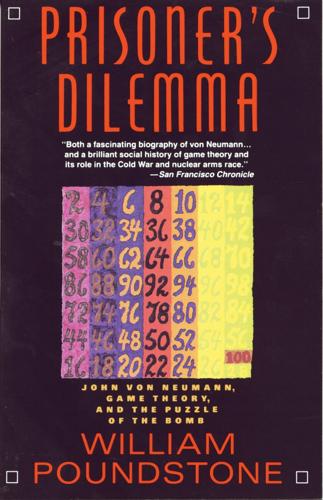
Prisoner's Dilemma: John Von Neumann, Game Theory, and the Puzzle of the Bomb
by
William Poundstone
Published 2 Jan 1993
The celebrity mathematician is almost a nonexistent species. Those few laypersons who recognize the name are most likely to place him as a pioneer of the electronic digital computer, or as one of the crowd of scientific luminaries who worked on the Manhattan Project. A few may recognize him as one of several alleged models for “Dr. Strangelove” of the 1963 Stanley Kubrick film. It was, at any rate, von Neumann who attended Atomic Energy Commission meetings in a wheelchair. The main body of von Neumann’s work, the work that early made his reputation for genius, lies in inaccessible realms of pure mathematics and mathematical physics.
…
Brereton, died of a heart attack in 1967 nine days after having undergone abdominal surgery for an undisclosed ailment. About two deaths in nine from cancer is presently average in the United States, so the reported deaths provide no evidence of a higher than usual cancer rate. 3. Was the wheelchair-bound von Neumann a model for the title character of Stanley Kubrick’s 1963 film Dr. Strangelove or: How I Learned to Stop Worrying and Love the Bomb? Strangelove, “Director of Weapons Research and Development” is confined to a wheelchair. He speaks of having commissioned a defense study from the “Bland Corporation.” As is often the case with satire, a number of models have been suggested (especially Werner von Braun and Edward Teller), and there is no reason to think the character was based on any specific individual.
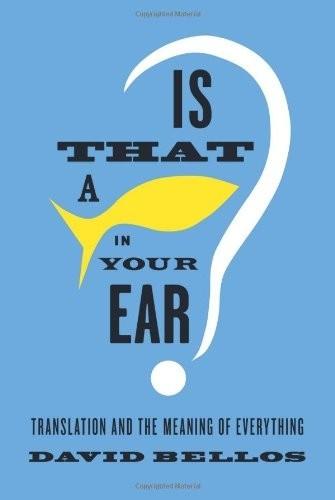
Is That a Fish in Your Ear?: Translation and the Meaning of Everything
by
David Bellos
Published 10 Oct 2011
What could represent “Russianness” or “Germanness” inside a work written in English? Conventional solutions to this conundrum are no more than that—cultural conventions, established within the English-language domain by historical contact, patterns of immigration, and popular entertainments such as Cold War dramas like Dr. Strangelove. But if we were to take d’Alembert’s recommendation as our guide, then we would try to make Kafka and Dostoyevsky sound like the foreigners that they surely were … by having them write English “embellished” with features not native to it. In German and Russian, of course, Kafka and Dostoyevsky, however unique their manners of expression may be, do not sound foreign to native readers of those languages.
…
Austro-Hungarian Empire Avatar (film) axioms: of effability; of grammaticality Azeri Babelfish Babel story Babylon bailo Balzac, Honoré de, Le Père Goriot Bar-Hillel, Yehoshua Bash, Matsuo Basque Batum Worker, The Baudelaire, Charles BBC Beckett, Samuel behavior, linguistic Belgium Bell, Anthea belles infidèles, les Bengali Benjamin, Walter Bergman, Ingmar Berlin Berman, Antoine Berne Convention Berr, Hélène Bible; Babel story; English; German; Hebrew; Spanish; translation bilingualism; dictionaries Bismarck, Otto von Bloomfield, Leonard book reviews book trade; growth of Borges, Jorge Luis Bosavi Breton Browning, Robert Buber, Martin Buddhism Buffon, Georges-Louis Leclerc, Comte de; “Discourse on Style,” Bulgakov, Mikhail, The Master and Margarita Byka, Vasil Byrne, Gabriel calque Cameron, James Camus, Albert, The Outsider cartoons Casanova, Pascale category term Catholicism Cawdrey, Robert; A Table Alphabeticall of hard usual English wordes … Celentano, Adriano Cervantes, Miguel de; Don Quixote Chabon, Michael, The Yiddish Policemen’s Union Champollion, Jean-François Chaplin, Charlie Chapman, George Charlemagne Chatterjee, Upamanyu, English, August Chaucer, Geoffrey cheval children; language acquisition China Chinese ; dictionaries ; poetry; shunkouliu; as UN language Chomsky, Noam; Syntactic Structures Christianity; missionaries chuchotage Churchill, Winston Chuvash Cicero Clifford, James CNN code; breakers; switching Coghill, Neville Colbert Report, The Cold War colonialism color terms Columbus, Christopher commentary, translation computer-aided translation (CAT) computer(s); Google Translate; translation concrete languages Condé, Maryse conference interpreting; simultaneous confidentiality agreements contact language context; meaning and Coptic copyright Council of Europe Coverdale, Miles cribs Crimean War Cuba cultural substitution cuneiform script Cyprian Czech Daghestani d’Alembert, Jean Dangerous Liaisons Danish Dante Danticat, Edwidge Dari Derrida, Jacques Descartes, René DG Translation dialect; translation as; variation dialogue Díaz, Junot Dickens, Charles diction, variety of dictionaries; bilingual; Chinese; French; general purpose; history of; multilingual; pocket; rhyme; size of; special purpose Dictionnaire de l’Académie Diderot, Denis, Encyclopédie diversity of language Doctor Zhivago (film) dog language Dostoyevsky, FyodorThe Brothers Karamazov; Crime and Punishment dragomania dragomans drama Dr. Strangelove (film) Dryden, John dubbing du Bellay, Joachim Duhamel, Marcel Dunbar, Robin Dutch Dzhabayev, Dzhambul education; teaching languages; university effects of translation; equivalent Egypt; hieroglyphs Elamite electronic media Eliot, T. S. Elizabeth I, Queen of England Emmerich, Michael emotional attachments English ; Bible; British; dictionaries; EU language parity and; foreign-soundingness and; identification of words; as language of science; literary translation and; phonology of; role in global translation; as a second language; subtitling into; as UN language equivalence; dynamic; formal equivalent effect Erasmus Eskimo Esperanto Estienne, Robert Estonian ethnicity, language as Etruscan etymology Europe; colonialism; EU language-parity rule; see also specific countries and languages European Court of Justice (ECJ) European Union (EU); establishment of; language-parity rule; simultaneous interpreting evidentials facing-page translation FAHQT faithful translation Farsi features of meaning felicity, conditions of fidelity figurative meaning Filene-Finlay Speech Translator film; Avatar as parable of translation; dubbing; equivalent effect; lectoring; meaning and; spots; subtitles; titles Finnish fish, see Babelfish Five Classics, The Flaubert, Gustave Folio foreignizing foreign-soundingness Foucault, Michel France; literary translators; seventeenth-century; World War II French ; dictionaries; EU language parity and; foreign-soundingness and; grammar; human rights terminology; role in global translation; sounds; as UN language Freud, Sigmund; copyright; German specificity of; The Interpretation of Dreams Frost, Robert Gaelic García Márquez, Gabriel Gary, Romain; Adieu Gary Cooper; Lady L; Mangeurs d’étoiles; White Dog Gascon Ge’ez Geneva Conventions genres Georgian Gerard of Cremona German ; Bible; EU language parity and; foreign-soundingness and; Freud and; human rights terminology; identification of words; role in global translation Germany; literary translators; Nazi; Nuremberg Trials; universities; World War II gibberish Gide, André Ginsberg, Allen globalization; computer translation; news translation and; translation and spread of international law global translation; Nuremberg Trials; spread of international law and; UN Goddard, Paulette Godin, Henri Google Translate (GT) Göring, Hermann Gorky, Maxim Gothic grammar; axiom of grammaticality; Basque; Bosavi; evidential; French; Hopi; Swedish graphic radicals graphic translation Graves, Robert Great Britain; variety of diction Great Escape, The (film) Great Eskimo Vocabulary Hoax Great Papuan Plateau Greece Greek ; identification of words; literature; teaching greetings grooming Guilleragues; The Letters of a Portuguese Nun habitual patterns of thought hand movement Hapsburg Empire Harris, Roy Harvill Press head (term) headlines Hebrew; Bible Hegel, Georg Wilhelm Friedrich Heidegger, Martin Hindi Hofstadter, Douglas Homer; Odyssey homme homonymy homophony hon’yaku Hopi Horace Höss, Rudolf Hoxha, Enver Hugo, Victor; Les Misérables human rights; terminology; translation and international law humor; translating Hungarian; identification of words Hungary Hurritic hypernym hyponym IBM Icelandic idiolect illiteracy immersion impacts, translation Index Translationum India Indian Indonesian ineffability Ingush interlingua International Labour Organization Internet; Google Translate Inter Press Service (IPS) interpreting; simultaneous intuition Inuit languages Ionesco, Eugène Iran Islam isolation Israel Istanbul Italian Italy It’s Complicated (film) Jackson, Robert H.
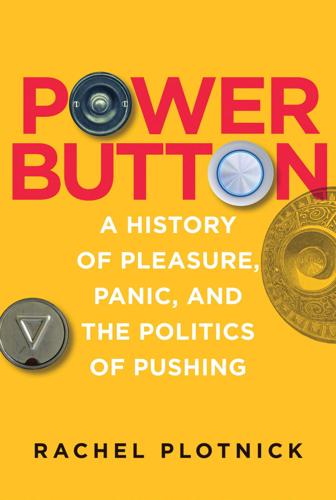
Power Button: A History of Pleasure, Panic, and the Politics of Pushing
by
Rachel Plotnick
Published 24 Sep 2018
By 1956, at the height of the Cold War, journalists told readers that although a push-button warfare scenario “sounds like a science fiction nightmare,” in fact it was “frighteningly real.”16 Politicians, reporters, filmmakers, and scientists injected the push-button icon with their greatest anxieties at this time period, littering cultural products from the film Dr. Strangelove to the pages of magazines with suggestions about the nation’s fate in a world controlled by buttons. Narratives in these forums worried about buttons’ imagined irrevocable nature, which dictated that, once pressed, the button presser could not turn back. Most stories about push-button warfare focused on conjecture and speculation, forecasting a future that never arrived; some called push-button warfare a “myth” and the purview of “calamity howlers,” whereas others sought to identify the exact day that inevitable war-by-button would arrive.17 The panic over such visions led to prominent figures such as architect Frank Lloyd Wright (1946) to bleakly conclude, “The push-button civilization over which we were gloating has suddenly become a terror.”18 Ethical quandaries about button pushing revealed that the way buttons presented choices to human beings—as “all or nothing” or cause and effect—could take a real psychological toll.
…
See also Switches; Communication Vending machines, xiv, 114–119, 126, 220 Edison, Thomas, 114–115 mischief, 116–117 self-service (see Labor) Warfare, 16, 98–101, 103, 237–239, 295n67, 295n71. See also Control armchair generals, 32, 228 (see also Managers) Big Red Button, xiii, 246, 255–256 Cold War, xix, 25, 98–99, 232–233, 237–238 Dr. Strangelove, 237 (see also Media representations) and morality, 101–103, 238 Trump, Donald, 255–256 (see also Gender; Bodies) US Navy (see Communication) Wiring bells, 26, 29–31, 34, 40 lighting, 9, 73, 141–142, 166, 209, 226–227, 232, 241, 305n26 Women housewives, 51–55, 69–70, 142–143, 200–201, 234–235, 260–261 and mere touch (see Touch; Labor) and sedentarism (see Sedentarism; Reachability) servants (see Servants) sexuality, 95, 97–98, 128 and spectacles (see World’s Fairs) and World’s Fairs, 81–83 Work.
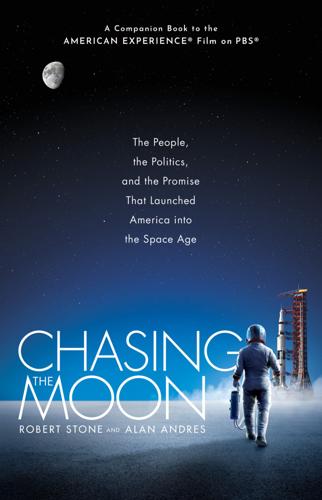
Chasing the Moon: The People, the Politics, and the Promise That Launched America Into the Space Age
by
Robert Stone
and
Alan Andres
Published 3 Jun 2019
When Scheer learned the book had been optioned, he tried to prevent NASA from offering any assistance, as the story’s plot relied upon the failure of existing technology and the drama was driven by the possibility of an astronaut’s death in space. As Scheer expressed in an internal memo, “It would be better for the agency’s standpoint if this picture was never made.” A far more promising film project was being planned under the direction of Stanley Kubrick, who had released Dr. Strangelove only weeks after Kennedy’s assassination. Scheer learned that Kubrick was collaborating with Arthur C. Clarke on an ambitious, optimistic epic about humanity’s destiny in space three decades hence. In the preceding year and a half, Clarke had partially recovered from his near-fatal case of polio, though he still suffered lingering weakness in his limbs.
…
As World War II and Korean combat veterans assumed positions of power, some influential works of art employed irony and dark humor to satirize and call attention to the underlying absurdity and hypocrisy of institutions, political pragmatism, and American culture in general. Joseph Heller’s Catch-22 (1961) and Stanley Kubrick’s Dr. Strangelove (1964) spoke to both a generation of experienced war veterans and their children—the first wave of the baby boom, who entered college during the early 1960s, energized by the idealism of the Kennedy era. During the Gemini years, the American space program was largely spared the biting satire inflicted on the Pentagon and other American institutions, with one powerful exception.
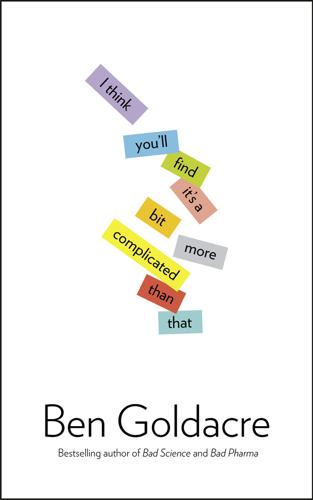
I Think You'll Find It's a Bit More Complicated Than That
by
Ben Goldacre
Published 22 Oct 2014
Foreign Substances in Your Precious Bodily Fluids Guardian, 9 February 2008 You’ll find fluoride in tea, beer and fish, which might sound like a balanced diet to you. This week the Health Secretary Alan Johnson announced a major new push for putting it in all tap water, with some very grand promises, and in the face of serious opposition. In Stanley Kubrick’s film Dr Strangelove, General Jack D. Ripper first developed his theories about environmental poisoning and bodily fluids when he experienced impotence, fatigue, and a pervasive sense of emptiness during the physical act of love. He instantly identified the cause: a communist plot to pollute our precious bodily fluids with fluoride.
…
Edwards 57–8 dental health, fluoride and 24 Department for Communities and Local Government xix, 153 Department for Education: Independent External Review for on improving use of evidence and data in schools, 2012 202n Department for Education and Employment: commissions research review on educational interventions in autism, 1998 325 Department of Health 23, 169, 176, 229, 365 DHA 343 diabetes 120 Diamond, Dr Michael 37–8 diarrhoea, handwashing/rehydration and 182, 186–7 ‘difference in differences’ 130–1 DNA: database xix, 162–5, 193; new techniques for measuring 135; muscular dystrophy and 121; ‘tracking-device’ 275–7 Do People Want Choice 171 Doing What Works (US government website for teachers) 214 Doll, Richard 22, 187 Doncaster Today 57 Dorset Echo 57 Doubleday 262 Down, John Langdon: ‘Observations on the Ethnic Classification of Idiots’ 141–2 Down’s syndrome: increase in live births as proof that we live in a more caring universe story xviii, 61–3; ‘Down Subjects and Oriental Population Share Several Specific Attitudes and Characteristics’ article, Medical Hypotheses xix, 139, 141–3, 144 Dowson, Dr Andrew 249 doxazosin 119–20 Dr Rath Health Foundation 388 Dr Strangelove (movie) 22–3 Drayson, Lord 331 Drug Dependency Units (DDUs) 231, 233, 234 Drug Enforcement Agency 232 ‘Drug Testing and Treatment Orders’ (DTTOs) 178–9 drugs, recreational xx, 219–44; British forces drug seizure figures in Afghanistan 221–4; drug-related deaths, government figures for 225–6; heroin on prescription 226–44; sentencing policy and 177–9 ‘Drugs: Protecting Families and Communities Action Plan 2008–11’ 226 du Sautoy, Marcus 194, 196 Dubowitz Neuromuscular Centre 121 Duchenne’s muscular dystrophy (DMD) 118–22 Duelfer Report 316 Duesberg, Peter 139, 140, 283 Dungeness 95, 381 Durham University 189 dystrophin 118–22 Eady, Mr Justice 250 early snarks xii, 387–98; artificial intelligence 394–5; Bad Science column manifesto 399–400; Ionic Hair Retexturising (IHR) 388–9; Nanniebots used to catch paedophiles 391–5; Oxygizer water 390–1; readers of Bad Science column spot pseudo-science 387–9 EDF 95–6 Edmunds, Jr, MD, Dr L.
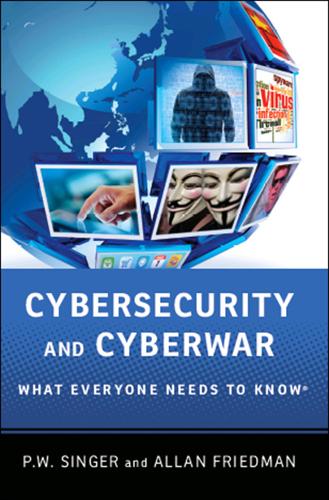
Cybersecurity: What Everyone Needs to Know
by
P. W. Singer
and
Allan Friedman
Published 3 Jan 2014
The possessors of the new technology see themselves as having a unique advantage but one that is fleeting, creating a “use it or lose it” mentality. It is also the period in which the technology and its consequences are least understood, especially by senior leaders. In the Cold War, for example, probably the scariest time was not the Cuban Missile Crisis, but the late 1940s and 1950s when the real-world versions of Dr. Strangelove were taken seriously, arguing that nuclear war was something that was not only survivable but winnable. This was a period that saw everything from General Douglas Macarthur’s 1951 demand to be given sole discretion to drop atomic bombs on mainland China to perhaps one of the most outrageous nuclear concepts of all, Project A-119.
…
This potential cyber-industrial complex now has vested interests in developing newer and better modes of both cyber defense and attack, which, of course, must go hand in hand, driving up the levels of threats and tensions in this space. Perhaps the more worrisome aspect has been the manner in which very real risks and threats in cybersecurity have sometimes been mischaracterized. In a study called “Loving the Cyber Bomb” (a play on the old Cold War movie Dr. Strangelove or How I Learned to Stop Worrying and Love the Bomb), cyber experts at George Mason University found extensive evidence of threat inflation in Washington, DC, cyber discussions, most frequently by those with political or profit incentives to hype the threats. As we’ve seen, such hype inflation ranges from the mischaracterization of unsophisticated attacks as war to full-blown falsehoods.

The Innovation Illusion: How So Little Is Created by So Many Working So Hard
by
Fredrik Erixon
and
Bjorn Weigel
Published 3 Oct 2016
The British economist John Maynard Keynes had previously expressed a similar sentiment, arguing that technological development would result in an abundance of leisure time as Westerners would only have to work 15 hours a week.8 Bellman went much further and predicted that his 2 percent scenario would happen within 25 years from the time of writing, and would be more likely to occur within 10 years.9 Futurist Herman Kahn – the founder of the Hudson Institute, and famous for inspiring Kubrick’s character of Dr. Strangelove – belonged to a moderate group that estimated that Western economies would move to a four-day working week and 13 weeks of vacation.10 It was all perceived to be very serious, especially as the age featured its own version of the “average is over” thesis, contending that everyone with just “average” performance would be demoted to permanently low economic expectations.
…
(i) cargo services and deregulation (i) see also air cargo services cash hoarding (corporate savings) (i), (ii), (iii), (iv), (v) catalytic converter technology (i) Central Europe, German-Central European supply chain (i), (ii) chemicals, and EU regulation (i), (ii) Chicago school of economics (i) Chili, and Cybersyn project (i) China and BRIC concept (i), (ii) exports from European Union (i) GDP (2014) (i), (ii) and globalization (i), (ii), (iii) R&D spending (i) sovereign wealth fund (i) Christensen, Clayton (i), (ii) Churchill, Winston (i) Clark, Gregory (i), (ii)n41 classical market liberalism (i) Clinton, Bill (i) Club des Chiffrephiles (i) Coase, Ronald (i), (ii), (iii), (iv), (v) Coca-Cola (i) Code of Federal Regulations (US) (i) cognition, mechanistic vs. organic (i) collaboration “noise” (i) Comin, Diego (i) command economies (i), (ii) command-and-control (i), (ii) community-generated content, and socialism (i) companies see big firms; firm boundaries; firms; multinational (global) companies competition and bureaucracy (i) and containerization (of global trade) (i) vs. contesting markets (i) and financial regulation (i) and firm boundaries (i), (ii) and geography of production (i) and globalization (i) life-or-death competition (i), (ii), (iii), (iv) and market concentration (i) and mergers and acquisitions (i) move of from countries to firms (i), (ii) and multinationals (i) oligopolistic (or monopolistic) competition (i) and planning machines (i) see also market contestability competitive forces concept (i) complexity “complex by design” capitalism (i) market complexity (i) see also regulatory complexity/uncertainty compliance officers (i) complicatedness index (Boston Consulting Group) (i) compound growth (i) Compustat, corporate cash holdings (i) computer technology/computerization and corporate managerialism (i) and knowledge obsolescence (i) and labor (i) and leisure (i) and market socialism (i) and production (i) and quantum dots/cadmium (i) see also digitalization; ICT (information and communications technology); information technology (IT); software technology Conference Board (economics consultancy) (i), (ii) consolidation (i), (ii) see also mergers and acquisitions Consumer Protection Act (US) (i) containerization (of global trade) (i) contestability see market contestability contracts (i) copying, and strategy (i), (ii) corporate borrowing and low investment growth (i) see also corporate net lending corporate control, and specialization (i) corporate failure see failure corporate globalism (i), (ii), (iii) corporate managerialism and bureaucracy (i), (ii), (iii), (iv), (v) and capitalism, decline of (i), (ii), (iii) corporate destruction and innovation: IBM (i); Microsoft (i), (ii); Nokia (i), (ii), (iii), (iv), (v) formula of failure (i) and globalist worldview (i) and globalization (i), (ii), (iii), (iv) managerial ideology on the rise (i), (ii) planning: planning machines (i), (ii), (iii); risk and uncertainty (i); strategy (i) regulation (i), (ii) regulation and compliance officers (i) Swedish managerialist culture (i), (ii) value vs. numbers (i) see also bureaucracy corporate medical research, and financial regulation (i) corporate net lending (i), (ii) see also corporate borrowing corporate politics (i), (ii), (iii), (iv) see also political world corporate savings (cash hoarding) (i), (ii), (iii), (iv), (v) corporate size and entrepreneurship (i) and globalization (i) and regulation (i) corporate social responsibility (CSR) (i) corporate socialism (i), (ii) corporate socialization (i) corporate valuations (i) costs production costs (i), (ii), (iii) sunk costs (i), (ii), (iii), (iv) transaction costs (i), (ii), (iii), (iv), (v), (vi) transmission costs (i), (ii), (iii) Cowen, Tyler (i) creative destruction fear of and political institutions (i) and globalization (i) and innovation (i), (ii), (iii), (iv), (v) and New Machine Age (i) and Nokia (i) and present-day capitalism (i) see also withering credit rating agencies (i), (ii), (iii) Credit Suisse, on stock markets (i) crony capitalism (i) cronyism (i), (ii), (iii), (iv) culture of experimentation (i), (ii) see also entrepreneurs; entrepreneurship culture of individualism (i) see also dissent; eccentricity; freedom customer loyalty (i) Cybersyn project (i) cyclical effects, and productivity (i) da Vinci, Leonardo see Leonardo da Vinci Darwinianism (i), (ii) Das, Gurcharan (i) data see recorded data (national accounts) data economy, and productivity (i) DAX 30 index (Germany) (i) de Blasio, Bill (i) debt and dividends/share buybacks vs. investment (i), (ii) and economic decline (i) vs. equity funding (i), (ii), (iii), (iv), (v), (vi) and retirement savings (i), (ii) decision-making probabilistic decision-making (i), (ii) and strategy (i) decoupling (productivity/incomes) thesis (i), (ii) deregulation case of air cargo services (FedEx) (i) and diffusion of innovations (i), (ii) OECD product market regulation (PMR) indicators (i), (ii) and reallocation of business (i) and regulatory accumulation (i) wave in 1980s–1990s (i), (ii) see also regulation; regulatory complexity/uncertainty Descartes, René (i) design (i) development vs. research (i), (ii) see also incremental development; R&D diffusion and deregulation (i), (ii) and globalization (i), (ii) and occupational licenses (i) and productivity (i) and R&D (i) “diffusion machine” (i), (ii), (iii) digital age and capitalism (i) and politics (i) digitalization and innovation (i) and leisure (i) and managerialism (i) and productivity growth (i) and regulation (i) and second unbundling of production (i) see also computer technology/computerization; ICT (information and communications technology); information technology (IT); “servicification” (or “servitization”) direct-to-consumer sales (i) dirigisme (France) (i) discriminate dynamism theory (i) dispersed ownership (i) dissent (i), (ii), (iii), (iv) see also culture of individualism; eccentricity diversification and investment (i), (ii) organizational (i), (ii) dividends (i), (ii), (iii), (iv), (v) DJs, and jobs and technology debate (i) dock labor, and containerization (of global trade) (i) Dodd-–Frank Act (US) (i), (ii), (iii), (iv) Dolly the Sheep (i) Dr. Strangelove character (i) driverless vehicles (i), (ii), (iii), (iv) drones, and regulation (i) Drucker, Peter (i), (ii) drugs see pharmaceutical sector dual class stock structures (i) Dutch disease (i) Dutch tulip mania (i) dynamism see discriminate dynamism theory; economic dynamism East Asia, trade and value chains (i) Ebenezer Scrooge character (i) eccentricity (i), (ii), (iii), (iv), (v) see also culture of individualism; dissent economic dynamism and capitalism (i), (ii), (iii) and innovation (i), (ii), (iii) and market contestability (i) economic growth compound growth (i) and productivity (i), (ii) and regulatory complexity/uncertainty (i) see also GDP (gross domestic product) Economic Policy Institute (Washington, DC) (i) The Economist on global corporations (i) on new technology and social dislocation (i) on pensioners vs. working-age households incomes (i) “Planet of the Phones” (i) on share buybacks (i) economy “bazaar economy” (Hans-Werner Sinn) (i) data economy (i) knowledge-based economy (i) “new economy” (i) and technology (i), (ii), (iii) see also economic dynamism; economic growth; financial economy; GDP (gross domestic product) EFAMA, on asset management industry (i) Einstein, Albert (i), (ii) electronic devices (i) electronic wallets (i) embedded liberalism (i) emerging markets (i), (ii), (iii), (iv), (v) employment protection legislation (i) see also labor; unemployment Energy Policy and Conservation Act (EPCA, US) (i) energy sector and antitrust laws (i) and innovation (i) and regulation (i), (ii) renewable/green energy: and regulation in Europe (i), (ii); and sunk costs (i) Engels, Friedrich, Communist Manifesto (Marx and Engels) (i), (ii) Enlightenment (i), (ii) Enron (i) entrepreneurs vs. bureaucrats (i), (ii) vs. managerialists (i) and passion vs. market complexity (i), (ii) Schumpeter on (i) tech entrepreneurs (i) see also entrepreneurship entrepreneurship aging trend (i), (ii) and capitalism (i), (ii) and dual class stock structures (i) and equity financing (i) and globalization (i), (ii) and innovation (i), (ii) and organizational diversification (i) vs. planning machines (i), (ii) and precautionary regulations (i) and size of firms (i) and strategy (i) and uncertainty (i) see also culture of experimentation; culture of individualism; entrepreneurs; start-ups equity vs. debt funding (i), (ii), (iii), (iv), (v), (vi), (vii) and institutional investors (i) and retirement savings (i), (ii) Ericsson (i), (ii) Ericsson, John (i) Europe asset management industry (i) big firms’ relative importance (i) capital expenditure (capex) (i), (ii)n39 corporate renewal levels (i) corporate savings (i) debt vs. equity financing (i) energy sector and antitrust laws (i) German-Central European supply chain (i) higher- vs. lower-income countries (i) labor, and tax (i) labor markets: low rates of flexibility (i); and lower productivity (i) mergers and acquisitions (i) pensions (i) productivity (i), (ii), (iii); total factor productivity (TFP) growth (i) R&D spending (i), (ii) regulation: compliance officers and Basel III (i); deregulation trend (i); index of regulatory freedom (i), (ii); index of regulatory trade barriers (i), (ii); medical devices (i); occupational/professional standards (i); technological platforms (i) services and globalization (i) trade: and big business (i); index of regulatory trade barriers (i), (ii); and value chains (i) see also eurozone; European Union European Food Safety Authority (EFSA) (i) European Union biofuels regulations (i) cadmium exemption issue (i), (ii) capitalist ownership and dual class stocks (i) chemicals regulations (i), (ii) exports to China (i) financial regulations (i), (ii); banks and Basel III rules (i), (ii) genetically modified organisms (GMOs) regulations (i), (ii), (iii) GM potato regulations (i) Leave campaign and older generation (UK) (i) nanotechnology regulations (i), (ii) precautionary principle (i) R&D scoreboards (i), (ii) Single Market (i) see also eurozone; Europe eurozone Germany and “sick man of the euro” label (i) pensions (i) see also Europe; European Union experimentation, culture of (i), (ii) see also entrepreneurs; entrepreneurship external capital markets (i), (ii), (iii), (iv), (v) Fabian Society (i) Facebook (i), (ii), (iii), (iv) failure failing companies and planning (i) formula of failure (i) and innovation process (i) Fairchild Semiconductor (i) FDI (foreign direct investment) (i), (ii), (iii) Federal Deposit Insurance Corporation (i) Federal Express (FedEx) (i), (ii) Feldstein, Martin (i) Fernald, John (i) fiduciary duties and laws (i) financial capitalism (i), (ii), (iii), (iv) see also financial economy financial crisis (2007) and aspirations (i) and financial regulations (i), (ii), (iii) and globalist worldview (i) and rich people vs. capitalists issue (i) and sovereign wealth funds (i) and stock markets (i) and Wall Street (i), (ii) see also Great Recession financial economy and gray capitalism (i), (ii), (iii) vs. real economy (i), (ii), (iii) financial institutions and financial regulations (i), (ii) and globalization (i) SIFIs (systemically important financial institutions) (i) see also banks financial regulations (i), (ii), (iii), (iv) financial sector growth of and productivity (i) financial services, and globalization (i) financial skills, vs. business-building skills (i) Financial Times on compliance officers (i) on French ban on Mercedes-Benz cars (i) Fink, Lawrence (i) Finland dependence on larger enterprises (i) Nokia story (i) firm boundaries and competition (i), (ii) and corporate managerialism (i), (ii), (iii), (iv), (v), (vi), (vii) and globalization (i) and innovation (i), (ii), (iii) and market concentration (i) and multinationals (i), (ii) and pharmaceutical sector (i) and R&D (i), (ii) and specialization (i), (ii), (iii), (iv), (v) see also firms firms entry-and-exit rates (i), (ii), (iii), (iv) high-growth firms (i) home-market firms vs. multinationals (i) interfirm vs. intrafirm trade (i) joint-stock companies (i), (ii) as logistics hubs (i), (ii) role of in the economy (i) start-ups (i), (ii), (iii), (iv), (v) unicorns (i) see also big firms; corporate size; firm boundaries; multinational (global) companies first-mover advantage (i) Food and Drug Administration (FDA, US) (i), (ii), (iii) food retailing, and globalization (i) Ford, Henry (i), (ii) Ford, Martin, The Rise of the Robots (i), (ii) foreign direct investment (FDI) (i), (ii), (iii) Fortune 500 companies (i) Foster, George (i) Foxconn (i) France ban on Mercedes-Benz cars (i) CAC 40 index (i) corporate renewal levels (i) dependence on larger enterprises (i) dirigisme (i) exports to China (i) and globalization (i) productivity, decline in and labor market rules (i) profit margins (i) public debt (i) R&D spending (i) regulation: index of regulatory freedom (i), (ii); index of regulatory trade barriers (i), (ii); medical devices (i); taxi services (i) trade: and big business (i); index of regulatory trade barriers (i), (ii) Fraser Institute, index of regulatory freedom (i), (ii) free-market capitalism (i) free speech, and academia (i) freedom (i), (ii), (iii) see also culture of individualism; dissent; eccentricity French Mississippi finance bubble (i) Frey, Carl Benedikt (i) Friedman, Milton (i) Fukuyama, Francis, The End of History and the Last Man (i) future, the (and how to prevent it) capitalist decline and pessimism (i) from corporate globalism to global corporatism (i) rise of regulatory uncertainty (i) “silver tsunami” for cash and pensions (i) state of Western economies and future imperfect (i) suggested steps to prevent the future: agency and economic history (i); boosting market contestability (i); nurturing culture of dissent and eccentricity (i); severing gray capital–corporate ownership link (i) Future Perfect, A (Micklethwait and Wooldridge) (i) G7 (Group of Seven) countries, labour productivity (i), (ii) Galbraith, John Kenneth, The New Industrial State (i), (ii), (iii), (iv), (v), (vi) Gallup, job satisfaction survey (i) Galston, William (i) Gates, Bill (i) GATT (General Agreement on Tariffs and Trade) (i) see also World Trade Organization (WTO) GDP (gross domestic product) and business investment (i), (ii), (iii) China’s (2014) (i), (ii) declining trend (i), (ii) and financial sector growth (i) GDP statistics issues (i) and global trade (i) and globalization (i) ICT hardware investment as share of (i), (ii) labor’s share of (i) and pensions (i) and R&D spending (i), (ii) and robots (i) Gekko character (Wall Street movie) (i) General Electric (GE) (i), (ii) generations boomer (or baby boomer) generation (i), (ii), (iii), (iv) The Clash of Generations (Kotlikoff and Burns) (i) EU Leave campaign and older generation (UK) (i) and income inequality (i) technology-frustrated generation (i) genetically modified (GM) potato, and EU regulation (i) genetically modified organisms (GMOs), and EU regulation (i), (ii), (iii) geographical zoning laws (i) Germany aging population (i) business investment declining trend (i) car industry: French ban on Mercedes-Benz cars (i); and value chains (i) corporate profit margins (1990–2014) (i), (ii), (iii), (iv) corporate renewal levels (i) DAX 30 index (i) dependence on larger enterprises (i) exports to China (i) German-Central European supply chain (i), (ii) and globalization (i), (ii), (iii), (iv) income inequality and generations (i) pensions (i) productivity: decline in and labor market rules (i); and wages (i) regulation: bureaucracy brake (i); deregulated vs. regulated sectors 148–9 index of regulatory freedom 151, (i); index of regulatory trade barriers 152, (i); medical devices (i); taxi services (i) “sick man of the euro” (i) trade: index of regulatory trade barriers (i), (ii); and value chains (i) Gerschenkron, Alexander (i), (ii) Gerstner, Louis (i) Ghosh, Shikhar (i) Gilder, George (i) global firms see multinational (global) companies global trade and containerization (i) expansion phases (i) and globalization, 2nd phase of (i) growth statistics (i) and market contestability (i) and multinationals (i), (ii) regionalization of Asia’s trade growth (i) regulatory trade barriers (i), (ii), (iii) see also mercantilism; protectionism; trade “Globalise or Fossilise!”

Text Analytics With Python: A Practical Real-World Approach to Gaining Actionable Insights From Your Data
by
Dipanjan Sarkar
Published 1 Dec 2016
Smith Goes to Washington, Annie Hall, Good Will Hunting, Tootsie, Network, Taxi Driver ======================================== Cluster 4 details: -------------------- Key features: [u'kill', u'soldier', u'men', u'army', u'war'] Movies in this cluster: The Shawshank Redemption, Schindler's List, Raging Bull, Casablanca, One Flew Over the Cuckoo's Nest, The Wizard of Oz, Lawrence of Arabia, On the Waterfront, Forrest Gump, Star Wars, The Bridge on the River Kwai, Dr. Strangelove or: How I Learned to Stop Worrying and Love the Bomb, Amadeus, The Lord of the Rings: The Return of the King, Gladiator, From Here to Eternity, Saving Private Ryan, Unforgiven, Raiders of the Lost Ark, Patton, Braveheart, The Good, the Bad and the Ugly, The Treasure of the Sierra Madre, Platoon, Dances with Wolves, The Deer Hunter, All Quiet on the Western Front, Shane, The Green Mile, Stagecoach ======================================== # visualize the clusters In [295]: plot_clusters(num_clusters=num_clusters, ...: feature_matrix=feature_matrix, ...: cluster_data=cluster_data, ...: movie_data=movie_data, ...: plot_size=(16,8)) The preceding output shows the key features for each cluster and the movies in each cluster, and you can also see the same in the visualization in Figure 6-4 (there is a lot in that figure—if the text appears too small, check out the kmeans_clustering.png file, available along with the code files for this chapter).
…
Smith Goes to Washington ======================================== Cluster 5 details: -------------------- Key features: [u'behind', u'city', u'father', u'appear', u'allow'] Movies in this cluster: Forrest Gump, Amadeus, Gladiator, Braveheart, The Exorcist, A Place in the Sun, Double Indemnity ======================================== Cluster 6 details: -------------------- Key features: [u'body', u'allow', u'although', u'city', u'break'] Movies in this cluster: Schindler's List, Gone with the Wind, Lawrence of Arabia, Star Wars, The Lord of the Rings: The Return of the King, From Here to Eternity, Raiders of the Lost Ark, The Best Years of Our Lives, The Deer Hunter, Stagecoach ======================================== Cluster 7 details: -------------------- Key features: [u'brother', u'bring', u'close', u'although', u'car'] Movies in this cluster: Gandhi, Unforgiven, To Kill a Mockingbird, The Good, the Bad and the Ugly, Butch Cassidy and the Sundance Kid, High Noon, Shane ======================================== Cluster 8 details: -------------------- Key features: [u'child', u'everyone', u'attempt', u'fall', u'face'] Movies in this cluster: Chinatown, Jaws, The African Queen, Mutiny on the Bounty ======================================== Cluster 9 details: -------------------- Key features: [u'continue', u'bring', u'daughter', u'break', u'allow'] Movies in this cluster: The Bridge on the River Kwai, Dr. Strangelove or: How I Learned to Stop Worrying and Love the Bomb, Apocalypse Now, Saving Private Ryan, Patton, Platoon, Dances with Wolves, All Quiet on the Western Front ======================================== Cluster 10 details: -------------------- Key features: [u'despite', u'drop', u'family', u'confront', u'drive'] Movies in this cluster: The Treasure of the Sierra Madre, City Lights, Midnight Cowboy ======================================== Cluster 11 details: -------------------- Key features: [u'discover', u'always', u'feel', u'city', u'act'] Movies in this cluster: Raging Bull, It Happened One Night, Rain Man, Rebel Without a Cause ======================================== Cluster 12 details: -------------------- Key features: [u'discuss', u'alone', u'drop', u'business', u'consider'] Movies in this cluster: Singin' in the Rain, An American in Paris, The Apartment, Annie Hall, Network ======================================== Cluster 13 details: -------------------- Key features: [u'due', u'final', u'day', u'ever', u'eventually'] Movies in this cluster: On the Waterfront, It's a Wonderful Life, Some Like It Hot, The French Connection, Fargo, Pulp Fiction, North by Northwest ======================================== Cluster 14 details: -------------------- Key features: [u'early', u'able', u'end', u'charge', u'allow'] Movies in this cluster: A Streetcar Named Desire, The King's Speech, Giant, The Grapes of Wrath ======================================== Cluster 15 details: -------------------- Key features: [u'enter', u'eventually', u'cut', u'accept', u'even'] Movies in this cluster: The Philadelphia Story, The Green Mile, American Graffiti ======================================== Cluster 16 details: -------------------- Key features: [u'far', u'allow', u'apartment', u'anything', u'car'] Movies in this cluster: Citizen Kane, Sunset Blvd., The Sound of Music, Out of Africa, Terms of Endearment, Wuthering Heights, Yankee Doodle Dandy ======================================== # visualize the clusters In [304]: plot_clusters(num_clusters=num_clusters, feature_matrix=feature_matrix, ...: cluster_data=cluster_data, movie_data=movie_data, ...: plot_size=(16,8)) The preceding outputs show the contents of the different clusters and their visualization.
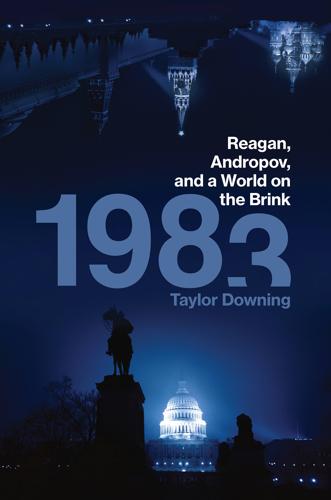
1983: Reagan, Andropov, and a World on the Brink
by
Taylor Downing
Published 23 Apr 2018
Towards the end of their visit they were ushered in to the command centre, a huge room where a vast illuminated map of the United States extended along one wall. Incoming missiles would be tracked and displayed on this electronic board. The visitors agreed it looked more like a movie set than a military command centre and no doubt there were many jokes about James Bond and Dr Strangelove, in which the War Room had a huge wall map just like at NORAD. The visitors talked with the NORAD commander General James Hill, and when Reagan asked him what would happen if the Soviets fired a missile at the United States, Hill explained that they could track its progress and project its exact point of impact.
…
Overall he argues the speed of the development of the Soviet atom bomb was remarkable. 7 The nuclear strategist was Herman Kahn in On Thermonuclear War. 8 Lawrence Freedman, The Evolution of Nuclear Strategy, p.235. 9 Jeremy Isaacs and Taylor Downing, Cold War, pp.161–83. 10 It was this scenario that Stanley Kubrick satirised in his black comedy movie Dr Strangelove, Or: How I Learned to Stop Worrying and Love the Bomb (1964) in which an American air base commander goes berserk and issues the go-codes for his B-52s to launch a nuclear attack on the Soviet Union. By the time the film came out this possibility had been closed off, allowing the US Air Force to claim that events depicted in the film could never happen. 11 Excellent accounts of the Cuban missile crisis can be found in Michael Dobbs, One Minute to Midnight; Michael Beschloss, Kennedy Versus Khrushchev; Robert Smith Thompson, The Missiles of October; and from the Soviet side Aleksandr Fursenko and Timothy Naftali, ‘One Hell of a Gamble’. 12 Freedman, The Evolution of Nuclear Strategy, p.245ff. 13 Ronald Reagan, An American Life, p.257 & p.13. 14 See the Acknowledgements for a more detailed outline of the making of the television documentary and the work of the National Security Archive. 15 Octopussy, directed by John Glen, produced by Albert Broccoli, written by George MacDonald Fraser, Michael G.

Mossad: The Greatest Missions of the Israeli Secret Service
by
Michael Bar-Zohar
and
Nissim Mishal
Published 1 Jan 2010
Keshavan, Outlook India, July 13, 1998 “Iran Part of Pakistan-China Nexus: Khan,” Chidanand Rajghatta, Indian Express, July 3, 1998 “Asylum Seeker’s Story Still Doubted,” Associated Press of Pakistan, July 3, 1998 “Articles About Defection—Pakistani Reveals Details of Nuclear Program, Seeks Asylum,” Robin Wright, Los Angeles Times, July 2, 1998 “Khan Job: Bush Spiked Probe of Pakistan’s Dr. Strangelove, BBC reported in 2001,” Greg Palast, Gregpalast.com, September 2, 2004 Various reports of the press conferences held by Dr. Iftikhar Khan Chauhdry on July 1, 1998, in the offices of Wildes & Weinberg, attorneys-at-law, 515 Madison Avenue, New York ISRAEL AND THE DEFECTION OF ASKARI AND AMIRI FROM IRAN “Former Iranian Defense Official Talks to Western Intelligence,” Daphna Linzer, Washington Post, March 8, 2007 “Mossad Implicated in Missing Defector Mystery,” Tim Butcher, Telegraph, March 9, 2007 “Defector Spied on Iran for Years,” by Uzi Mahanaymi, Sunday Times, March 11, 2007 “Iran Nuclear Scientist Defects to the U.S. in CIA ‘Intelligence Coup,’” Matthew Cole, ABC News, April 1, 2010 “Report: The Top Iranian Decided to Leave His Country and Defect to USA,” Yoav Stern, Haaretz, March 7, 2007 (H) “Contradicting Reports About the Defection of the Iranian General,” Yossi Melman, Haaretz, March 12, 2007 (H) “Report: Two Iranian Nuclear Scientists Defected Lately to the West,” Yossi Melman, Haaretz, October 7, 2009 (H) “Iran: The USA Is Involved in the Disappearance of Our Atomic Scientists,” Yossi Melman, Haaretz, October 8, 2009 (H) “Report: Uranium Scientist Who Disappeared in Saudi Arabia Defected to USA,” Reuters, March 31, 2010 (H) “The Nuclear Scientist Who Disappeared in Saudi Arabia Assists the CIA,” Israel Hayom, April 2, 2010 (H) DR.
…
IranWatch.org, June 18, 2007-August 28, 2008 NCRI—Press conference on Resistance in Iran, by Mohammad Mohadessin, Foreign Affairs Committee Chairman, on Fakhrizadeh: Full functions, address, phone numbers, IranWatch.org, November 17, 2004 “Iran Suspends Enrichment in Return for EU Pressure on Opposition,” Irannuclear.org, November 15, 2005 “Verbatim: Iranian Opposition Reveals Secret Nuclear Site in Tehran,” Iranfocus. com, November 19, 2004 “Iran Is Ready to Build an N-bomb, It’s Just Waiting for the Ayatollah’s Order,” James Hider, Richard Beeston in Tel Aviv, and Michael Evans, defense editor, Times (London), August 3, 2009 “Disclosing a major secret nuclear site under the Ministry of Defense,” NCRI, Weapons of Mass Destruction newsletter, November 17, 2004 “Ministry of Defense Continues Secret Work on Laser Enrichment Program,” Irannuclear.org, February 12, 2006 “Half Sigma: How Much Does a Nuclear Bomb Have to Weigh?” Half Sigma.com, September 29, 2009 Fakhri Zadeh—Dr. Strangelove, seeker 401, wordpress.com SECRET OPERATIONS IN IRAN “U.S. Working to Sabotage Iran’s Nuke Program,” Scott Conroy, Article written by Sheila MacVicar and Ashley Velie with Amy Guttman, May 23, 2007 Article plus report on the CBS Evening News “Report: Israel Secretly Sabotaging Iran’s Nuclear Program (Using Assassins, Sabotage, Double Agents and Front Companies),” Daily Telegraph, quoted by YNET, February 17, 2009 (H) “Western Sabotage Undermines Iran Nuclear Drive: Experts,” France 24, International News, AFP, April 13, 2010 “Iranian Nuclear Scientist ‘Assassinated by Mossad,’” Sara Baxter, Times (London), February 4, 2007 “Bush Authorizes New Covert Action Against Iran,” ABC News, May 22, 2007 “Jitters Over Iran Blast Highlight Tensions,” World News on MSNBC, Associated Press, February 16, 2005 “Massive Explosion in Parchin Missile Site of the Guard Corps,” Foreign Affairs Committee of the National Council of Resistance of Iran, November 14, 2007 MPG’s Bushehr branch video of Petrochemical plant explosion [in Bushehr Province], MPG, Bushehr Branch, Marzeporgohar.org, August 15, 2009 “U.S.
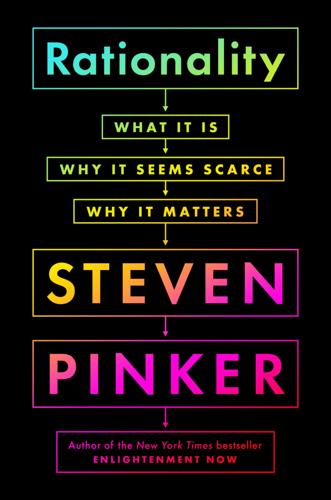
Rationality: What It Is, Why It Seems Scarce, Why It Matters
by
Steven Pinker
Published 14 Oct 2021
We can advertise that we are incapable of rationally choosing someone better because we never rationally chose that person in the first place—our love was involuntary, irrational, and elicited by the person’s unique, idiosyncratic, irreplaceable qualities.32 I can’t help falling in love with you. I’m crazy for you. I like the way you walk, I like the way you talk. The paradoxical rationality of irrational emotion is endlessly thought-provoking and has inspired the plots of tragedies, Westerns, war movies, mafia flicks, spy thrillers, and the Cold War classics Fail Safe and Dr. Strangelove. But nowhere was the logic of illogic more pithily stated than in the 1941 film noir The Maltese Falcon, when detective Sam Spade dares Kasper Gutman’s henchmen to kill him, knowing they need him to find the jewel-encrusted falcon. Gutman replies: That’s an attitude, sir, that calls for the most delicate judgment on both sides, because as you know, sir, in the heat of action men are likely to forget where their best interests lie, and let their emotions carry them away.33 Taboo Can certain thoughts be not just strategically compromising but evil to think?
…
See Rebel Without a Cause death, 196, 197, 304 death penalty, 221, 294, 311, 333 deductive logic, 73–84, 95–100, 102, 108–9 deep learning networks biases perpetuated by, 107, 165 the brain compared to, 107–9 definition, 102 error back-propagation and, 105–6 hidden layers of neurons in, 105–7 intuition as demystified by, 107–8 logical inference distinguished from, 107 terms for, 102 two-layer networks, 103–5 De Freitas, Julian, 343n46 demagogues, 125, 126 democracy checks and balances in, 41, 316, 317 corrosion of truth as undermining, 309 data as a public good and, 119 education and information access predicts, 330 and peace, 88, 264, 266, 269–72, 327 presumption of innocence in, 218 and risk literacy, importance of, 171 and science, trust in, 145 Trump and threats to, 126, 130–31, 284, 313 Democratic Party and Democrats COVID-19 conspiracy theories involving, 283 expressive rationality and, 298 politically motivated numeracy and, 292–94 See also left and right (political); politics Dennett, Daniel, 231, 302 denying the antecedent, 83, 294 denying the consequent, 80–81 deontic logic, 84 dependence among events conjunctions and, 128–31, 137 defined via conditional probability, 137 falsely assuming, 131 the “hot hand” in basketball and, 131–32 the judicial system and, 129–30 selection of events and, 132 voter fraud claims and, 130–31 depression, 276–77, 276, 280 Derrida, Jacques, 90 Descartes, René, 40 deterministic systems, 114 Dick, Philip K., 298 dieter’s fallacy, 101 digital media ideals of, 316 truth-serving measures needed by, 314, 316–17 Wikipedia, 316 See also media; social media Dilbert cartoons, 91, 112–13, 112, 117 DiMaggio, Joe, 147–48 discounting the future, 47–56, 320 discrimination, forbidden base rates and, 163–66 disenchantment of the world (Weber), 303 disjunction of events, probability of, 128, 132–34 disjunctions (or), definition, 77 disjunctive addition, 81 disjunctive syllogism, 81 distributions, statistical, 203–5 bell curve (normal or Gaussian), 204–5 bimodal, 204 fat-tailed, 204–5 Ditto, Peter, 293–94, 297 DNA as forensic technique, 216 domestic violence, 138–39 Dostoevsky, Fyodor, 289 Douglass, Frederic, 338–39 dread risk, 122 dreams, 13, 304 Dr. Strangelove (film), 61 drug war, 84 dualism, mind-body, 304 Dubner, Stephen, 266 Duck Soup (film), 294–95 ecological rationality, 16, 95–98, 153, 214, 246, 313–14 economics, 62–64, 173–74, 265, 322 education benefits of college education, 264 college admissions, 262, 263, 266–67, 294 curricula teaching rationality, 314–15 democratic values as predicted by, 330 mission of, 43, 93 randomized controlled trials and, 265 standardized testing, 262 statistical competence as priority in, 171 See also academia; science—education; universities Einstein, Albert, 86, 90, 111, 113 Eliot, George, 73 Elizabeth II, 303 Emerson, Ralph Waldo, 82 emotions appeal to (informal fallacy), 92 availability bias and, 120 emotional threats, 60 Escalation games and, 238 expected utility and, 179, 181–83, 190–92 goals of reasoning and, 45, 46–47, 344n11 paradoxical tactics and, 44–45, 344n11 Tit for Tat strategy, 241–42, 243–44 See also goals—time-frame conflicts empathy, 230, 338 empirical propositions, 94–95 endogeneity, 263 Enlightenment abolitionist movement of, 335–36 AI seen as threat to, 207 argument against criminalization of homosexuality, 333–34 argument against cruel punishment, 332–33 argument against cruelty to animals, 334–35 digital media and ideal of, 316 feminism, 336–37 and mythology zone vs. reality, 303 universal realism as creed of, 301 entertainment conspiracy theories as, 303, 308 gambling as, 183 the mythology zone as, 306–7, 309 paradoxical tactics depicted in, 61–62 the paranormal as, 305 political discourse as, 303 enthymemes, 85 environment, 63, 191, 242–43, 244 See also climate change epidemiology, 257, 259–60, 270 epiphenomena.

Werner Herzog - a Guide for the Perplexed: Conversations With Paul Cronin
by
Paul Cronin
Published 4 Aug 2014
You cretins are all wrong.” You should have heard the tornado of disgust. The German press found the film to be a dangerous attack on everyone’s decency, though it received tremendous reviews around the world. After all, I’m hardly the first filmmaker to show this kind of stylisation on screen. Kubrick’s Dr Strangelove, with its beautifully blossoming atomic explosions, is one of the most painful films I have ever seen. Sitting here twenty years later I would dare an assumption: if I showed Lessons of Darkness to audiences at the Berlin Film Festival today, they would like it. There were criticisms about you not identifying Kuwait.
…
But though cinema and politics do occasionally meet, film isn’t the right soil for political activity. Someone with a microphone or a rifle has always been a more powerful way of effecting change, though we shouldn’t dismiss a handful of great films with a solid political core, like The Battle of Algiers, Dr Strangelove and Salt of the Earth. I’m not on any kind of mission. If I had one, I would be a missionary. After watching eight minutes of unedited footage, I knew that Joshua Oppenheimer’s surreal The Act of Killing, about the genocide in Indonesia that started in 1965, was an unprecedented work, more than just a piece of political agitation.
…
(Bruno Schleinstein): background, 1, 2, 3, 4; casting, 1; character, 1, 2, 3, 4; death, 1; The Enigma of Kaspar Hauser, 1, 2, 3, 4, 5; name, 1, 2; quality as an actor, 1, 2; relationship with Herzog, 1, 2, 3, 4, 5, 6; Stroszek, 1, 2, 3, 4, 5, 6, 7, 8 Bruno the Black (Eisholz), 1 Brutalisation of Franz Blum, The (Driest), 1 Brutus, 1 Buba and Buka, 1 Bubb, Les, 1 Büchner, Georg, 1, 2, 3, 4, 5, 6, 7, 8, 9 Bulgakov, Mikhail, 1 Bundesfilmpreis, 1, 2 Buñuel, Luis, 1, 2, 3 Burden of Dreams (Blank), 1, 2, 3, 4, 5, 6, 7 Burkett, Delbert, 1 Burkett, Jason, 1, 2, 3, 4 Burkett, Melyssa, 1, 2 Busoni, Ferruccio, 1 Cage, Nicolas, 1, 2, 3 California, 1, 2, 3, 4 Cameron, James, 1 Cameroon, 1, 2, 3 Camus, Albert, 1 Cannes Film Festival, 1, 2, 3, 4, 5, 6, 7, 8, 9, 10 Caravaggio, 1 Cardinale, Claudia, 1, 2, 3, 4 Carissimi, Giacomo, 1 Carl Hanser Verlag, 1, 2 Carl Mayer Award, 1, 2 Carnac, 1, 2 Carney, Ray, 1 Caruso, Enrico, 1, 2, 3, 4 Casablanca (Curtiz), 1 Cave of Forgotten Dreams: access to cave, 1, 2; crocodiles, 1; filming in 1D, 2, 3; landscape, 1; music, 1; paintings, 1, 2; Palaeolithic hunting, 1; smells, 1; soundtrack, 1; vision of prehistory, 1, 2; voiceover, 1 Ceauşescu, Nicolae, 1 Central African Republic, 1, 2, 3, 4 Cerro Torre, 1, 2 Chandler, Raymond, 1 Chaplin, Charlie, 1 Charlemagne, 1 charreadas, 1 Chatwin, Bruce: dying, 1; on Aborigine singing, 1; on Herzog, 1, 2n; on travelling, 1; relationship with Herzog, 1; writings, 1, 2, 3, 4n Chauvet-Pont-d’Arc cave, 1 Cheers, 1 Chevalier, Maurice, 1 Chiarini, Claude, 1 Christianity: Bells from the Deep, 1; capital punishment, 1; Creation story, 1; early, 1; Icelandic, 1; iconography, 1; Jesus Christ, 1, 2, 3, 4, 5, 6; The Lord and the Laden, 1; Pilgrimage, 1, 2; relics, 1; televangelist, 1; varieties of, 1, 2 Chronicle of Anna Magdalena Bach, The (Straub), 1 Chumack, Alan, 1 Churchill, Winston, 1 CIA (Central Intelligence Agency), 1, 2, 3, 4 Ciconia, Johannes, 1 Cine Nõvo, 1 cinéma-vérité, 1, 2, 3, 4, 5 Cinémathèque Française, 1, 2 Clemente, Jean, 1 Close-up (Kiarostami), 1 Clottes, Jean, 1 Clovis, King, 1 Cobra Verde, 1, 2, 3, 4, 5, 6 Codax, Martim, 1, 2 Codex Florentino, 1, 2, 3 Codex Regius, 1, 2 Codex Telleriano-Remensis, 1 Cole, Joe, 1 Collected Works of Billy the Kid, The (Ondaatje), 1 Commynes, Philippe de, 1 Conrad, Joseph, 1, 2, 3, 4, 5 Cooper, Gary, 1, 2 Copernicus, 1 Coppola, Francis, 1 Corman, Roger, 1 Coronation Mass (Mozart), 1 Cortés, Hernán, 1, 2, 3, 4 Couperin, François, 1 Crete, 1, 2, 3, 4, 5 Cruise, Tom, 1, 2 Cuénod, Hugues, 1 da Silva, Francisco Manoel, 1, 2, 3 Dahomey as It Is (Skertchly), 1 Dalai Lama, 1, 2 Danilov, Viktor, 1 Dante, 1, 2 Dark Glow of the Mountains, The, 1, 2, 3, 4, 5 Davies, Jeremy, 1 Death for Five Voices, 1, 2 Delft, 1, 2 Dengler, Dieter, 1, 2, 3, 4, 5, 6, 7, 8 Deutsche Kinemathek Museum für Film und Fernsehen (Berlin), 1 deuxième souffle, Le (Melville), 1 Dibble, Charles, 1, 2 DiCaprio, Leonardo, 1 Diehl, Roger, 1 Dinkelsbühl, 1n Dirty Harry (Siegel), 1 Dr Strangelove (Kubrick), 1 Doktor Faust (Busoni), 1 Domingo, Plácido, 1, 2 Dorrington, Graham, 1, 2, 3, 4, 5, 6 dos Santos, Nelson Pereira, 1 Dourif, Brad, 1, 2 Dovzhenko, Alexander, 1 Dreyer, Carl Theodor, 1, 2 Driest, Burkhard, 1 Dürer, Albrecht, 1 Dylan, Bob, 1 Earth (Dovzhenko), 1 Eastwood, Clint, 1 Eccentric Private Theatre of the Maharaja of Udaipur, The, 1 Echoes from a Sombre Empire, 1, 2 Eddas, 1, 2 Edols, Michael, 1 Eika Katappa (Schroeter), 1, 2 Einstein, Albert, 1, 2, 3, 4 Eisenstein, Sergei, 1, 2 Eisholz, Lutz, 1 Eisner, Lotte, 1, 2, 3, 4, 5, 6, 7, 8, 9, 10 Elephant Man, The (Lynch), 1 Emshwiller, Ed, 1 Encounters at the End of the World, 1, 2, 3, 4, 5, 6, 7, 8, 9 Enfant sauvage, L’ (Truffaut), 1 English National Opera, 1 Enigma of Kaspar Hauser, The: Bruno S. in, 1, 2, 3, 4; budget, 1; cameraman, 1, 2; character of Kaspar Hauser, 1, 2, 3, 4, 5; chickens in, 1, 2; death scene, 1, 2; distribution, 1; dream sequences, 1; editing, 1; elements of science fiction, 1; extras, 1; filming, 1, 2; German Romantic tradition, 1; music, 1, 2; opening, 1, 2; preproduction, 1; release, 1; story, 1, 2; title, 1; watching, 1, 2 Eraserhead (Lynch), 1 Escape from Laos (Dengler), 1, 2 Euripides, 1, 2, 3 Even Dwarfs Started Small: animals in, 1; cameraman, 1; characters, 1, 2; chickens, 1; compared to Freaks, 1; dwarfs in, 1; editing, 1; filming, 1, 2, 3, 4, 5; humour, 1, 2; influence, 1, 2; influences on, 1, 2; landscape, 1; music, 1; nightmarish, 1; politics, 1, 2; responses to, 1; screenplay, 1; setting, 1; sound, 1 Fabius Maximus, 1 Faerie Queene, The (Spenser), 1 Fährer, Else, 1 Fallico, Dr Franc, 1 Fanck, Arnold, 1 Farouk, King of Egypt, 1 Fassbinder, Rainer Werner, 1, 2, 3, 4 Fata Morgana: cameraman, 1, 2, 3, 4; editing, 1; elements of science fiction, 1, 2, 3, 4; filming, 1, 2, 3, 4; filming problems, 1, 2, 3, 4, 5, 6; influences on, 1, 2; landscape, 1, 2, 3; mirages, 1; music, 1, 2, 3, 4; opening sequence, 1; people in, 1, 2, 3; release, 1; responses to, 1, 2, 3; voiceover, 1 Faulkner, William, 1, 2 Faust (Goethe), 1 Fellini, Federico, 1, 2 Ferrara, Abel, 1 Film as a Subversive Art (Vogel), 1 Film/Fernsehen Abkommen, 1 Film Lessons, 1, 2, 3; “Orientation in Film,” 1 film magazines, 1 film schools, 1, 2, 3, 4, 5, 6, 7 Filmverlag der Autoren, 1 films about filmmakers, 1 Finkelstein, William, 1, 2 Finnegans Wake (Joyce), 1 Firdusi, 1 Fischer, Tony, 1 Fitzcarrald, Carlos Fermín, 1, 2 Fitzcarraldo: bell-tower sequence, 1; budget, 1, 2; Burden of Dreams, 1, 2; see also Burden of Dreams; casting, 1, 2, 3; character of Fitzcarraldo, 1, 2, 3; controversies, 1, 2, 3, 4, 5; filming, 1, 2, 3, 4, 5, 6; filming problems, 1, 2, 3, 4, 5, 6, 7, 8, 9, 10, 11; Herzog’s journals, 1, 2, 3; independent production, 1; Indians in, 1, 2, 3, 4, 5, 6, 7; Kinski in, 1, 2, 3, 4; landscape, 1; language, 1; music, 1, 2; opening, 1; origins, 1; pre-production, 1, 2, 3; responses to, 1, 2, 3, 4, 5, 6; script, 1, 2, 3; story, 1, 2; travelling in, 1 Flatow, Ira, 1 Fleischmann, Peter, 1, 2, 3, 4 Flying Doctors of East Africa, The, 1, 2, 3, 4 Ford, John, 1 Foreman, George, 1 Français vus par … Les Gauloises, Les, 1, 2 Franklin family, 1, 2 Freaks (Browning), 1 Freyse, Gunther, 1 Fricke, Florian (Popol Vuh): death, 1; friendship with Herzog, 1, 2, 3, 4, 5; music, 1; Popol Vuh, 1, 2; roles, 1, 2; view of Herzog, 1 Friedrich, Caspar David, 1, 2, 3, 4, 5 From One Second to the Next, 1, 2, 3 Galileo, 1, 2 Galileo space probe, 1, 2 Gallardo, Alberto, 1 Game in the Sand, 1 García Márquez, Gabriel, 1 Gargantua and Pantagruel (Rabelais), 1 Gasherbrum, 1 Gates of Heaven (Morris), 1 Gein, Ed, 1 Genghis Khan, 1 genius, concept of, 1, 2, 3 Georgics (Virgil), 1, 2 German cinema, 1, 2, 3, 4, 5, 6, 7, 8; see also New German Cinema German culture, 1, 2, 3, 4, 5 German expressionism, 1 German language, 1, 2, 3, 4 German reunification, 1 Gert, Valeska, 1 Geschichten vom Kübelkind (Reitz), 1 Gesualdo, Carlo, 1, 2, 3, 4 Getty, Paul, 1 Ghana, 1, 2, 3, 4 Gibson, Mel, 1 Gierke, Henning von, 1 Giovanna d’Arco (Verdi), 1 Glowacz, Stefan, 1, 2 Godard, Jean-Luc, 1, 2 God’s Angry Man, 1 Goebbels, Joseph, 1 Goethe, Johann von, 1, 2 Golder, Herb: career, 1, 2n; Invincible, 1; memories of Herzog, 1, 2, 3; My Son, My Son, 1; on Herzog on Herzog, 1; relationship with Herzog, 1; “Shooting on the Lam,” 1, 2 Goldsmith, Michael, 1, 2, 3 Goldwyn, Sam, 1 Gospel According to St Matthew, The (Pasolini), 1 Gounod, Charles, 1 Goya, Francisco, 1, 2, 3, 4 Grand, The (Penn), 1 Grass, Günter, 1, 2 Graves, Robert, 1 Grayson, Jerry, 1 Great Ecstasy of Woodcarver Steiner, The, 1, 2, 3, 4, 5, 6 Greenberg, Alan, 1 Grenzstationen (TV series), 1 Griffith, D.

Accessory to War: The Unspoken Alliance Between Astrophysics and the Military
by
Neil Degrasse Tyson
and
Avis Lang
Published 10 Sep 2018
“As a deterrent,” warns the report, “the possibility of poisoning one’s own homeland should give a rational actor more reason not to employ such weapons.164 An optimist might contend that nobody except a rational actor would ever be permitted to make such decisions, but anybody who has watched the 1964 movie masterpiece Dr. Strangelove or witnessed the rampant irrationality of the 2016 US presidential campaign is unlikely to agree. Joan Johnson-Freese, analyzing what would induce countries without space assets to acquire them, argues that the combined existing, imminent, and projected US space capabilities would make it effectively not only “unassailable and able to impose its will virtually without question” but also capable, if it chose, to undertake “highly intrusive forms of coercion . . . without the burdens of occupation.”
…
A clearinghouse for responsible information on directed-energy technologies for mostly military but also civilian use is Wave Front: The Directed Energy Newsletter, published by DEPS, the Directed Energy Professional Society, www.deps.org/DEPSpages/newsletter.html. (All accessed Apr. 22, 2017.) 25.Preston et al., Space Weapons Earth Wars, 128. 26.The futurist Herman Kahn (Dr. Strangelove) used this phrase as a book title in 1962 and again in 1985. 27.In 1946 the Air Force was still the Army Air Force, and LeMay was its R & D director, but the National Security Act of 1947 created the Air Force as an independent branch. In 1948 LeMay became the first commander of Strategic Air Command.
…
Clarke and, 394n Canadian satellite, 353 collision of, 3, 4 Defense Satellite Communication System, 501n during Eisenhower era, 278–79, 501n International Telecommunications Satellite Organization (Intelsat), 340, 501n use in Gulf War, 340–41, 517n compass card (wind rose), 77, 78 compass (magnetic), development, 75–78 Comprehensive Nuclear Test Ban Treaty (CTBT, 1996), 313–14, 508n Comte, Auguste, 147–48 concave lenses, 110, 129, 442n Concerning the More Certain Fundamentals of Astrology (Kepler), 49 Conduct of the Persian Gulf War, 341–42 Congress, United States Cox Committee, 374–76 Democratic Congresses support of wars in twentieth century, 10–11, 410n Republican Congress support of Iraq War, 11 use of military force authorized by, 10–11, 410n conjunction in February 1953 BC, 43 conscription of nonmilitary organizations, 322, 329–30 Convento de Cristo, Portugal, 80 convex lenses, 110, 129 Cook, James, 91, 92, 97, 130, 441n “Cooperation in Space” agreement of 1972, 357, 521n Copernicus, Nicolaus, 49, 440n Copernicus satellite system (EU), 160, 329 copper, 69–70, 432–33n Cordesman, Anthony H., 347–48 Corker, Bob, 530n Cornwall, England, 70, 71, 439n Corona missions, 158–59, 278, 458n CORONA (KH-1) satellites, 204–5, 228, 500n Corporation for Public Broadcasting, 289 Cosgrove, Denis, 89 Cosimo II de’ Medici, 53, 442–43n Cosmic Discovery (Harwit), 151 cosmic microwave background, 171, 199, 399 cosmic rays, 6, 214, 218 counterspace, 236, 237, 322, 373, 393–94, 478–79nn, 531n Counterspace Operations: Air Force Doctrine Document, 322 Courier communication satellite, 278 Course on Positive Philosophy (Comte), 147–48 Covault, Craig, 471n Cox Committee, 374–75 Cromwell, Seymour, 55 cruise missiles, 18, 332, 346 Cuban Missile Crisis, 273, 497n cuckoos, 65 Cumings, Bruce, 314 Curiosity rover, 242, 371, 389 Curran, Joan, 195 Curtis, Heber D., 131, 134, 453n cyberspace, paired with space, 235, 236, 308, 319, 321 cyberwar, 235 da Costa, Emilia Viotti, 83 da Gama, Vasco, 81 Daguerre, Louis-Jacques-Mandé, 141, 142, 143, 456n daguerreotypes, 141, 142–44, 148, 456n Darius the Great, 119 Darwin, Charles, 97 d’Aurillac, Gerbert, 101, 441n da Vinci, Leonardo, 240 Davis, Jefferson, 124 dazzle camouflage, 172, 173–74, 259 dead reckoning, 77, 82, 86 Dean, Patrick, 292 “death rays,” 243–45 Dee, John, 106–7 Deep Impact mission, 207–8 Deep Impact (movie), 255 deep space, collaboration in, 398 de-escalation in space, focus on, 397, 531–32n Defense Advanced Research Projects Agency (DARPA), 21, 154, 338–39, 345 Defense Meteorological Satellite Program (DMSP), 158, 341–42, 501–2n Defense Satellite Communication System, 501n defense share, 452–53n Defense Support Program satellites, 158, 341 Democritus, 169 Descartes, René, 444n detection defined, 183–84 exoplanets, 175, 399 gamma rays, 199, 213–18 Hubble Space Telescope, detection story, 227–33 infrared light, 169–70, 199, 219–25 Jodrell Bank, detection story, 209–13 survival and conquest and, 171–72 X-rays, 180, 213, 225–27 deterrence diplomacy and, 312–15 and first use as option, 308, 309 through military strength, 305–6, 311–12, 316 by NATO, 305–6, 309–10 nuclear arsenals and, 237, 308, 309, 311–12 space weaponry and, 260, 299–300, 312 Dias, Bartolomeu, 81 differentiation, 384–85 Dingell, John, 418–19n diplomacy deterrence and, 312–15 Outer Space Treaty and, 274, 313, 382, 503n space diplomacy, 260–61, 312–13, 531n directed-energy weapons, 240–41, 242 see also lasers Dismantling the Empire (Johnson), 35 Dobrynin, Anatoly F., 292 Doel, Ronald E., 223 Dollond, John, 111, 130, 131 Dollond, Peter, 111, 130 Dolman, Everett C., 280–81, 330, 489n Doomsday Clock, 310–11 Dos Passos, John, 161 double concave lenses, 129 double convex lenses, 129 Dowd, Maureen, 36 Draper, John William, 144 Dr. Strangelove (movie), 300 Duffner, Robert W., 152–53 Dyna-Soar spaceplane, 279 Earth-observation satellites, see remote-sensing satellites Eastman Dry Plate and Film Company, 144 Eastman Kodak, 203, 205 Ebertin, Elsbeth, 57–58, 61 Echo communication satellite, 278 eclipses and ancient astronomy, 44–49, 423–24n cycle of lunar eclipses, 56 daguerreotype of solar eclipse, 144 effects on history, 45–49 evidence of Earth’s slowing rotation, 46 Eddington, Arthur, 400–401 Edison, Thomas Alva, 220 education in science and engineering decline in US share of degrees, 22, 31 reaction to Sputnik launch, 270, 490n Egypt ancient astronomy, 39, 40, 42 early ships, 68, 432n Nabta Playa, 42 pyramids at Giza, 42 solar calendar with 365 days, 40, 422–23n Einstein, Albert, 182, 215, 218 Eisenhower, Dwight D.

The Extreme Centre: A Warning
by
Tariq Ali
Published 22 Jan 2015
The historian Toby Abse described what followed in graphic terms: The day after the M5S senators put themselves in the vanguard of parliamentary anti-racism, taking the initiative out of the hands of the PD and SEL, they found themselves the object of a thunderous denunciation by Beppe Grillo and Gianroberto Casaleggio (the co-founder of the M5S, who taught Grillo everything he knows about the internet), on Grillo’s official blog. The duo angrily explained: ‘The M5S was not born to create Dr Strangeloves in parliament without control.’ They continued: ‘If we had proposed the measure during the general election campaign, the M5S would have obtained the percentages of a telephone prefix’, inferring that almost all of their voters were not only racist, but saw immigration as the primary issue, which is hardly credible, even if a sizeable chunk of the M5S’s northern electorate may have been drawn from disillusioned supporters of the Lega Nord, known as leghisti.

Culture and Prosperity: The Truth About Markets - Why Some Nations Are Rich but Most Remain Poor
by
John Kay
Published 24 May 2004
Von Neumann, born in Hungary, was one of the geniuses of his age. 19 At eighteen he was studying for three different degrees in different subjects at different universities in different countries. After making fundamental contributions to mathematics and quantum physics, he turned his attention briefly to economics, which he found "a million miles away from an advanced science." 20 Von Neumann became head of the U.S. Atomic Energy Commission-and the inspiration for Dr. Strangelove-before dying at the age of fifty-three. John Nash was author of the principal solution concept in game theory-the Nash equilibrium-but his productive career was ended by schizophrenia. His health partially restored, he was awarded the Nobel Prize in 1994. 21 Nash was played by Russell Crowe in an Oscar-winning film of his life, A Beautiful Mind.
…
Cambridge, Mass. and London: MIT Press. ---. 2002. Globalization and Its Discontents. London: Penguin. Stone, R 1986. "Nobel Memorial Lecture 1984: The Accounts of Society." journal of Applied Econometrics 1 (1) Ganuary): 5-28. Story, J. 2003. China: The Race to Market. London: FT Prentice Hall. Strathern, P. 2001. Dr Strangelove's Game: A Brief History of Economic Genius. London: Hamish Hamilton. Stringer, C., and C. Gamble. 1993. In Search of the Neanderthals: Solving the Puzzle of Human Origins. London: Thames & Hudson. Sulston,]., and G. Ferry. 2002. The Common Thread: A Story ofScience> Politics> Ethics and the Human Genome.
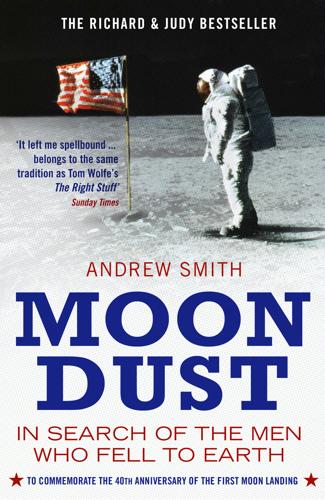
Moondust: In Search of the Men Who Fell to Earth
by
Andrew Smith
Published 3 Apr 2006
In the Fifties he became a powerful advocate of space exploration, never shy of tweaking Americans’ fear of Soviet domination in this exotic new realm, even fronting a kids’ TV series on the subject for Walt Disney (notoriously no liberal himself). Apollo could not have happened without him and he is the only person of whom this might be said. His best biographer will point out to me that Stanley Kubrick used to get tetchy when people assumed the mad German adviser Peter Sellers played in his Cold War masterpiece, Dr. Strangelove, to have been based on Henry Kissinger. The only German with the ear of a president when the film was being made in 1963 was von Braun. Even at this stage, though, as I crane my neck to gape at his work, I’m aware that history books have begun to be rewritten on the subject of von Braun. His V-2 rocket had been made with European slave labour in caves under the spectacular Harz Mountains of central Germany, but von Braun was always allowed to deny any involvement in, or even knowledge of, these crimes.
…
He’s talking about how things can become so familiar that you look right at them without really seeing them, when he says: “And as Kubrick actually suggested in his last film, when that happens you’ve got your ‘Eyes Wide Shut.’ ” Kubrick again! Like a character from Dr. Seuss, he just keeps coming back. There was von Braun and Dr. Strangelove, 2001 and Nixon and the shuttle (and Apollo 16 Command Module Pilot Ken Mattingly drifting solo with his Strauss waltzes from the movie, having seen it six times). There was Also Sprach Zarathustra absolutely bloody everywhere, Michael Collins revealing that he called his simulator instructor “HAL” and the story Ed Mitchell told about one of his young daughters being introduced to Henry Kissinger and Kirk Douglas at the White House, only to blurt to the actor: “I didn’t like you in Spartacus,” which Kubrick directed.
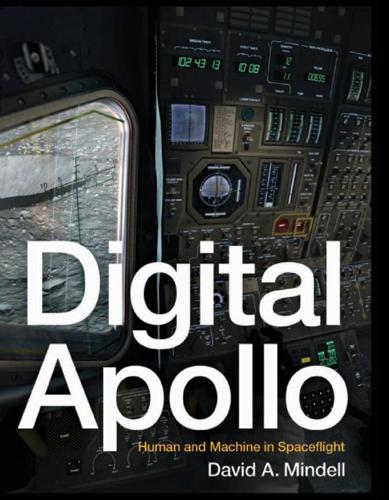
Digital Apollo: Human and Machine in Spaceflight
by
David A. Mindell
Published 3 Apr 2008
Commentators worried about the phenomenon of ‘‘deskilling’’ as computerized machine tools transformed work on the factory floor.20 In his speeches and writings, for example, Martin Luther King frequently mentioned automation as a cause of the social displacements he was seeking to redress. Even NASA director James Webb suggested that the jobs generated by the Apollo program would help mollify unemployment created by automation. The Apollo years spanned the release of Stanley Kubrick’s Dr. Strangelove (1964), about an automated Soviet machine that triggers the end of the world, and his 2001: A Space Odyssey (1968), in which an intelligent computer murders American astronauts. Also during Apollo, Jacques Ellul’s book The Technological Society (published in 1965 in English) challenged the increasing dominance of ‘‘technique’’ in human culture.
…
(Dick), 13 Convair, 29, 74, 92 Doolittle, James ‘‘Jimmy,’’ 17, 24–25, 96, 110 Conway, Erik, 24 Doppler signals, 138, 200–201 Cooper, George, 31–32 Douglas Aircraft, 29 Cooper, Gordon, 137–138 Drake, Hubert, 91, 210 Cooper-Harper rating scale, 31–32, 186 Copps, Ed, 160–161 Draper, Charles Stark, 75 computers and, 161, 169, 177–178 Core ropes, 154–157 guidance systems and, 96, 107, 110 Core-transistor logic, 125–126 pilot role and 25–28 CORONA, 151 volunteers for lunar mission, 107–108 Cosmonauts, 88–90, 95–96 Dr. Strangelove (Kubrick), 12 Crew Exploration Vehicle, 266 Dryden, Hugh, 102, 47 Crockett, Davy, 12 Dryden Flight Research Center, 44, 266 Crossfield, Scott Johnsville tests and, 73 Duke, Charlie Apollo 11 and, 218, 222–226 pilot role and, 80 X-15 and, 43, 49–51, 58, 61, 63 Cunningham, Walter, 177, 264 Apollo 16 and, 250, 255 Duncan, Robert ‘‘Cliff,’’ 139, 212–213 Dyna-Soar program, 68, 70–73 Curtiss Jenny, 10 Curtiss-Wright, 30 Eagle lunar module Cybernetics, 15, 36, 40 Aldrin and, 217–232 Cybernetics (Wiener), 36 Armstrong and, 217–232 BURNBABY and, 218 Damping, 58–61, 79, 81 computer alarms and, 221–232 Datamation magazine, 232 critical nature of landing, 7–8 Dead stick landing, 48 DELTAH and, 221, 223, 229, 232 Death Star, 15 DSKY unit and, 218, 223, 229–231 Decision points, 103 extra velocity of, 220–221 DELTAH, 201, 221, 223, 229, 232, 237 fuel issues and, 223 Descent propulsion system (DPS), 190 Design.
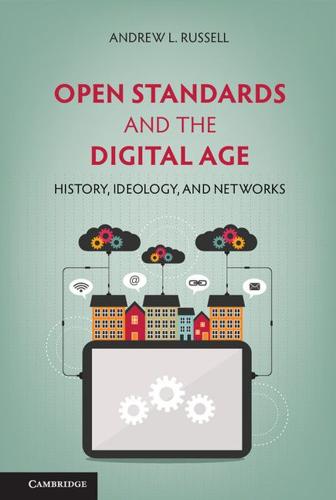
Open Standards and the Digital Age: History, Ideology, and Networks (Cambridge Studies in the Emergence of Global Enterprise)
by
Andrew L. Russell
Published 27 Apr 2014
These impulses were specific to the telephone and computer industries, but they also shared expectations and assumptions toward technology, political economy, and control with broader swaths of American society. Historians such as Paul Edwards, Ted Friedman, and Fred Turner have analyzed, more than I have attempted to do here, the close links between counterculture ideals and skepticism toward unrestrained technological power. They point to films such as Desk Set (1957), Dr. Strangelove (1964), 2001: A Space Odyssey (1968), Blade Runner (1982), and The Terminator (1984) as well as books such as Herbert Marcuse’s One Dimensional Man (1964), E. F. Schumacher’s Small Is Beautiful (1973), and Ted Nelson’s Computer Lib/Dream Machines (1974) as indicators of an emerging critical approach to capitalist technology.
…
(magazine) 216 Conference of Industrial Executives 87 ConnectionLess Network Protocol (CLNP) 249–252, 256 Consensus standards 267–271 Consolidated Gas Company of New York 87 Consortia 271–278 Control Data Corporation 145 The Control Revolution (Shapiro) 3 Cooke, Morris 58–59, 93 Coonley, Howard 91–92 Corbett, Laurence 118–119 Cornell University 105 Corporation for National Research Initiatives (CNRI) 242 “Council of elders,” 200–201, 239, 241, 258–259 Critchley, T.A. 226 Critique 278–280 of Bell System 131–132, 133 of centralized control 5–6, 157–160 history of information networks as 263–264, 265 of IBM 131–132 Crocker, Steve 168, 169–170, 187 Crompton, R.E.B. 39–40 Cronon, William 26 Curran, Alex 173–174 Cyclades Arpanet, rivalry with 183–186, 187, 193, 194 background 163–164 generally 170, 173–174, 180, 198, 240–241, 249 INWG and 182 overview 270 packet-switching 176 Pouzin and 190–193 Cyert, Richard 11 Cypser, R.J. 226 Dalal, Yogen 183 Datagram service 177–178, 179, 180, 197–198 Datapac 176 Daugherty, Harry M. 83 Davies, Donald 167, 170–171, 174, 201–202 Day, John 192, 195, 212, 218–219, 223, 227–228, 270–271 DDX-1 (network) 176 Deal of the Century (Coll) 158 De Blasi, Joseph 217–218 DeButts, John 141–142 De facto standards 266–267 Defense Department Advanced Research Projects Agency (ARPA) see Advanced Research Projects Agency (ARPA) Arpanet, role in 163, 164 Bell System and 136–137 Information Processing Techniques Office (IPTO) 165–166, 188 Internet, role in 200–201 TCP/IP in 237 TP-4 protocol in 238 Defining openness 2 de Gaulle, Charles 162 De jure standards 18–19 Delaware & Hudson Company 87 Des Jardins, Richard 207, 209, 222, 244 Desk Set (film) 157 Déspres, Rémi 174, 178, 179, 187, 192, 193, 197 de Tocqueville, Alexis 25, 27, 42, 59 Digital Electronics Corporation 145 Digital Equipment Corporation 164, 176, 198, 207, 249 Dijkstra, Edsger 213 Dow Chemical 209 Downey, Gregory 38 Dr. Strangelove (film) 157 Drake, William 274 Dudley, Charles Benjamin 53–56, 57, 71, 105, 275, 280 Durgin, A.W. 84 Dynamic Host Control Protocol (DHCP) 256 Edwards, Paul 157 Eisenhower, Dwight D. 137, 164 Electrical engineering standards 47–52 Electrical measurement 38–41 Electrical Standards Committee 38, 39 The Elements of Networking Style (Padlipsky) 243 Elie, Michel 182–183, 184 Emmons, William F. 209 Encyclopedia Americana 110 Engineering industry American system and 41–45 Bell System 104–114 openness and 12 standardization in 44–45 Engineering standards AESC see American Engineering Standards Committee (AESC)) AIEE 47–52 American system and 41–45 ASA see American Standards Association (ASA) ASME 45–47 ASTM 53–56 electrical engineering 47–52 formal rules and procedures of committees 56–57 functions of committees 57 interested parties in committees 56 materials testing 52–56 mechanical engineering 45–47 overview 25–27, 56–57 reasons for committees 56 standardization of 44–45 Environmental Protection Agency 18–19 EPSS (network) 176 Esselbach, Ernst 38–39 European Computer Manufacturers Association (ECMA) 210, 221 European Informatics Network 170, 187 European Telecommunications Standards Institute 271 European Union 277 Exchange Carriers Standards Association (ECSA) 158–159 Federal Communications Commission Bell System and 130, 132, 138, 141–142, 158 computer industry and 138–139, 140–141, 158–159 Computer Inquiry 138–141 creation of 133 de jure standards 18–19 generally 142–143 IBM and 132, 146 Internet and 261 maximum separation standard 181 Notice of Inquiry on the Regulatory & Policy Problems Presented by the Interdependence of Computer and Communications Services & Facilities 138–139 Report on the Investigation of the Telephone Industry 135–136 telecommunications spectrum, authority over 133–135 Federal Specifications Board 84 Federated American Engineering Societies 82, 108 First International Conference of Computer Communications 170 First International Conference on Information Processing 148 Ford, Henry 81 Foreign policy and openness 8 FORTRAN 155 Fortune (magazine) 260 Foucault, Michel 5 France centralization of computer industry in 162, 201 IBM and 162, 163–164, 201 Franklin Institute for the Promotion of the Mechanic Arts 42–43, 266 Free software 15 Frey, John P. 78 Friedman, Ted 157 Friedman, Thomas 3 Fritz, W.
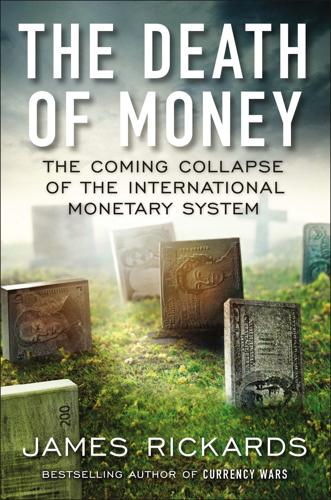
The Death of Money: The Coming Collapse of the International Monetary System
by
James Rickards
Published 7 Apr 2014
Andy Marshall’s Air-Sea Battle is deterred by China’s weapons of wealth destruction. Perhaps the greatest financial threat is that these scenarios might play out by accident. In the mid-1960s, at the height of Cold War hysteria about nuclear attacks and Mutual Assured Destruction, two films, Fail-Safe and Dr. Strangelove, dealt with nuclear-war-fighting scenarios between the United States and the Soviet Union. As portrayed in these films, neither side wanted war, but it was launched nonetheless due to computer glitches and actions of rogue officers. Capital markets today are anything but fail-safe. In fact, they are increasingly failure-prone, as the Knight Capital incident and the curious May 6, 2010, flash crash demonstrate.
…
-Iran financial war and, 56, 57 Warlord Period, 91 Warring States period, 90 China Daily, 52 China Investment Corporation (CIC), 51 China National Petroleum Corporation, 97 China Petrochemical Corporation (SINOPEC), 97 China Railway Corporation, 255 China State Shipbuilding Corporation, 97 China Telecom, 97 Churchill, Winston, 116, 223 Citibank, 28, 30–31, 262 Citigroup, 196 civilizational collapses, 5 Clinton, Bill, 210 cluster paradigm, 192–93, 194, 198 CNN, 36, 37 codetermination, 123–24 Cohen, David, 54 Coinage Act of 1792, 217 Cold War, 46, 231 collapse civilizational, 5 financial, 265–67 of international monetary system, 5 market, 11–12 warning signs of, 295–98 collateral swaps, 188 College of Europe, 116 commodities, 217 Communist Dynasty, 90, 91–92 complexity theory, 6, 269–70 financial collapse and, 265–67 market collapse and, 11–12 phase transitions in, 172, 265, 289–90 computational complexity theory, 71 confidence, in U.S. dollar, 253–56, 291 confirmation bias, 26 continuity of government operations, 63 contract theory of money (contractism), 165–67, 169 corporate tax rates, 122 correlations, 4–5 Cosco, 133 Counter-Reformation, 115 credit, in premoney economies, 255 creditism, 168–69 credit risk, 218 criticality, 270 Croatia, 136 Croseus, King, 217 “Crunch Time: Fiscal Crises and the Role of Monetary Policy” (Mishkin), 286–87 Crusades, 115 currency war, 159 cyberattacks, 59–60 cyclical downturns, 197–98 Cyprus, 200, 290 Dam, Kenneth W., 209–10 Da Silva, Tekoa, 236 Davoudi, Parviz, 151 “Day After, The” (Ambinder), 63 debasement, of money, 172 debt, 171–80, 290–91 Federal Reserve monetary policy’s relation to, 176–77, 180–89 Federal Reserve Notes as, 167 monetization of, 287–88 sustainable, 171–72, 176–80 tests for acceptable government spending, 173–76 of United States, 171–73 Debt-Deflation Theory of Great Depressions, The (Fisher), 246–47 debt-to-GDP ratio, 159–60, 173 deflation, impact of, 9, 258–59 of Japan, 159, 259, 261 of United Kingdom, 159 of United States, 159, 173, 259 defensive aspects of financial war, 46 deficits, 172–73, 176–80 deflation, 9–11, 76–83, 243–52, 256–64 banking system, impact on, 9, 259 Bernanke’s response to, 76, 77 Chinese imports and, 76 debt-to-GDP ratio and, 9, 258–59 deleveraging after housing market collapse and, 76–77 government debt repayment and, 9, 258 Greenspan’s response to, 76 versus inflation, in depression of 2007 to present, 243–52, 260, 290–91 in Japan, 160–61, 260–62, 264 post-2000 deflationary bias, 76 SDR issuance to prevent, 213–14 tax collection and, 9, 259–60 unemployment and, 77 De Gasperi, Alcide, 116 degree distribution, 265–66 de Léry, Jean, 115 deleveraging, 76–77, 246 DeMint, Jim, 205 Democrats, 175–76, 179, 180, 294 Deng Xiaoping, 93, 97 depressions defined, 244 deflation in, 246–47 Great Depression, 84, 85, 125–26, 155, 221–22, 223–24, 234, 244, 245 Long Depression, in Japan, 160 of 1920, 246–47 regime uncertainty and, 125–26 2007 to present, 3, 76, 87, 126, 197, 243–52, 260, 290–91 derivatives, 80–81 gold as not constituting, 217–18 mortgage-related, 290 risk posed by, 11–12 size of positions in, 11 Deutsche Bank, 32–33 Deutsche Bundesbank, 232 devaluations, 158, 200 of dollar, U.S., 1, 10–11, 235 Gold Bloc devaluations, 222 Great Depression and, 223 digital currencies, 254 dollar, U.S., 161 alternatives to, 254 Beijing Consensus and, 120–21 confidence in, 253–56, 291 contract theory of, 165–67, 169 deflation as threat to, 9–11 demise of, potential paths of, 292–95 devaluation of, 1, 10–11, 235 financial war as threat to, 6–7 geopolitical threats to, 12–13 gold convertibility abandoned, in 1971, 1, 2, 5, 209, 220, 235, 285 inflation as threat to, 7–9 King Dollar (sound-dollar) policy, 118, 176–77, 210, 211 loss of confidence in, in 1970s, 1–2, 5 market collapse as threat to, 11–12 MARKINT as means of detecting attacks on, 40 pegging to, effect of, 155 SDRs as potential reserve currency replacement for, 211–14, 292–93 threats to, 5–13 Volcker’s efforts to save, 2 Washington Consensus and, 118–20 dollar index in 1978, 1, 253–54 in 1995, 2, 253–54 in 2011, 2–3, 253–54 in 2013, 253–54 SDR issuance and weakness in, 210–11 Dr. Strangelove (film), 63 Draghi, Mario, 172, 211, 236 Dubai, 55, 58, 128, 153 Dubai World collapse, 128, 153 Duncan, Richard, 168 earmarked accounts, in gold, 276 easy-money policy of Federal Reserve, 3–4, 157–59, 260, 262, 264 exporting of inflation through exchange rate mechanism and, 75, 155 unintended consequences of, 78–83 weak response to, in liquidity trap, 247 wealth effect and, 72, 73 Economic Advisory Recovery Board, 252–53 Economist, The, 43–44, 134 Egypt, 156 Eichengreen, Barry, 207, 242 Einhard, 113 Eisenhower, Dwight, 174–75 electronic barter market, 254–55 El-Erian, Mohamed, 289 enemy hedge fund scenario, 47–51 equilibrium models, 4, 62 Estonia.

Vertical: The City From Satellites to Bunkers
by
Stephen Graham
Published 8 Nov 2016
George Collins, New York: Princeton Architectural Press, 2004 [1975], p. 46. 4Claude Parenti and Paul Virilio, The Function of the Oblique, London: Architecture Association, 1966. 5Eric Sepp, ‘Deeply Buried Facilities: Implications for Military Operations’, Occasional Paper No. 14, Center for Strategy and Technology, Air War College, Air University, Maxwell-Gunter Air Force Base, Montgomery, Alabama, 2000. 6Donald Heilig, ‘Subterranean Warfare: A Counter to US Airpower’, Air University, Maxwell-Gunter Air Force Base, Montgomery, Alabama, 2000. 7See Tom Vanderbilt, Survival City: Adventures Among the Ruins of Atomic America, New York: Princeton Architectural Press, 2002. 8John Norgard, Michael Wicks and Randy Musselman, ‘Deep Ground Penetrating Radar (GPR) WIPD-D Models of Buried Sub-Surface Radiators’, paper presented at Wireless Communication and Applied Computational Electromagnetics, IEEE/ACES International Conference, Honolulu, 2005. 9Quoted in Tom Squitieri, ‘Bush Pushes for Next Generation of Nukes’, USA Today, 7 June 2003. 10Michael Dudas, ‘Bedrock Prime: How Can the United States Best Address the Need to Achieve Dominance within the Subterranean Domain?’, thesis, US Army Command and General Staff College, Fort Leavenworth, Kans., 2012. 11This situation also brings to mind the legendary ‘mine-shaft gap’ scene in Stanley Kubrick’s superb Cold War satire Dr Strangelove (1964). In this scene, US generals, deep in their control room bunker, fantasise about living blissfully in deep mine-shafts after a global nuclear holocaust, procreating a new society with beautiful women. The mood changes, though, when General Buck Turgidson (played by George Scott) starts worrying that the Soviets – doing the same in their own bunkers – would keep some nuclear weapons after Armageddon to attack US mine-shafts: the so-called ‘mine shaft gap’. 12Katie Drummond, ‘With DARPA’s “Transparent Earth”, Underground Doesn’t Mean out of Sight’, Wired, 2 September, 2010. 13Cited in Drummond, ‘Underground Doesn’t Mean out of Sight’. 14Clay Dillow, ‘On DARPA’s List: A Real-Time, 3D Picture of the Earth beneath Our Feet’, Popular Science, 2 September 2010. 15Greg Duckworth, ‘The Enemy Beneath: Finding and Monitoring Unimproved Underground Facilities’, Special Projects Office, Defense Advanced Research Projects Agency, Washington, DC, 2005. 16Michel Chossudovsky, ‘“The Mother of All Bombs” (MOAB) Slated to Be Used against Iran’, Global Research, 3 May 2013, available at globalresearch.ca. 17Julian Borger, ‘The Truth about Israel’s Secret Nuclear Arsenal’, Guardian, 15 January 2014. 18Cited in Hans M.
…
H., 384 Dillon, Brian, 359 Discovery Channel, 61, 267 Divided We Stand: A Biography of New York’s World Trade Center (Darton), 172–3 Doctor, Vikram, 208 Dolman, Everett, 38 Doppelmayr cable car, 126 Dorrian, Mark, 49 Douhet, Giulio, 54, 66 Dovey, Kim, 152 Dresden, 59, 62 Drones+ smartphone app, 91 ‘Drone Survival Guide,’ 90–1 Dr Strangelove (film), 343n11 Dubai, ix–xvi, 143, 150, 157, 266–8, 271–2, 299–301, 373–5, 374, 377–8, 380–1 Duckworth, Greg, 345 Dudas, Michael, 343 Dukmasova, Maya, 184–5 Durrheim, Ray, 381–2 Dwivedi, Sharada, 207 Dyos, Harold, 324n8 Dzhokhar Tsarnaev, 109–10 Earth Penetrator Weapon (EPW), 346 Ecuador, 117 Edgeworth, Matt, 291 Edinburgh, Scotland, 325n11 Efford, Clive, 272 Eko Atlantic island, 303–4 Elden, Stuart, 4 Emaar, 377 Emel, Jody, 366 Emirates Global Aluminium (EGA), 377 Empire State Building, 99, 142, 156–7, 197–9, 279, 291, 382 Engels, Friedrich, 318 Engineers’ Club, 124 England, 35–6, 288–90, 296, 355 Enola Gay, 59–60 Environmental Protection Agency (EPA), 249, 376–7 Estorick Collection, 52 Europe, 189, 225, 250, 258, 265, 292, 316 Europort, 296 Evans, Brad, 273 Fabrizi, Mariabruna, 180 Fairclough, Graham, 356–7 Faltemier, Tim, 88–9 Fast, Omar, 77 Federal Aviation Administration, 200 Federally Administered Tribal Areas in Pakistan (FATA), 67 Federation Island, 302 Feigenbaum, Anna, 275n102, 276 Ferris, Hugh, 220 Field Operations, 312 ‘Field Station 83’, 36 Finoki, Bryan, 348–9 First Gulf War, xiii, 61 5,000 Feet Is the Best (film), 77 Fleet River, 324 Florida, 297 Flusty, Steven, 230 Fogarty-Valenzuela, Benjamin, 192, 209–10 Folha de S.

Apocalypse Never: Why Environmental Alarmism Hurts Us All
by
Michael Shellenberger
Published 28 Jun 2020
It was then that the U.S. government discovered the Soviets had transferred missiles to Cuba. President John F. Kennedy demanded that Soviet Premier Nikita Khrushchev remove the missiles and imposed a U.S. naval blockade. During the crisis, Air Force colonel Curtis LeMay, who would be lampooned a little more than a year later in Stanley Kubrick’s Dr. Strangelove, pressured Kennedy to bomb Cuba. “We don’t have any choice but direct military action,” said LeMay. “I see no other solution.” Kennedy rejected LeMay’s advice. The president and Khrushchev instead agreed that the United States would remove its missiles from Turkey, at a later date, in exchange for the Soviets removing their missiles from Cuba.
…
See Congo Denial of Death, The (Becker), 268–69 Depression and climate alarmism, 22, 265, 268, 269 Der Spiegel, 180, 185, 192, 198 Desalination, 241 Diabetes, 132–33 Diablo Canyon Power Plant, 157, 167, 170, 188, 210, 217, 219, 242, 280, 284 DiCaprio, Leonardo, 2, 27, 222 Diet-heart hypothesis, 132–33, 140 Dinh, Hinh, 103–5, 227–28 Disgust sensitivity and meat consumption, 135 Disney, Walt, 156 Displacement, 162 Dr. Strangelove (film), 172 Doerr, John, 217, 218–19 “Do no harm” principle, 76 Dowie, Mark, 74 Downcycling, 48–49 Drake, Edwin, 111 Drax Power Station, 192 Dry cask storage, 152 Durbin, Dick, 207 Dutton, Andrea, 4 Earth Day, 266 Earth First!, 267 Eating Animals (Foer), 126, 129, 130, 131, 135, 136, 137, 143 Ebell, Myron, 200–201 Echuya Batwa, 74 Eco-anxiety, 22 Ecological economics, 243–44 Economic development, 8, 61, 64, 76, 238, 260, 275–76 in Amazon rainforest, 31, 32, 38–41, 42–43 in the Congo, 16–19, 70–72 fires and, 21 manufacturing ladder, 102–5 manufacturing progress, 89–92, 95–97 power of wealth, 95–99 sustainable development, 226, 227, 229, 238, 249 Economic modeling, 114 Ecotourism, 76 Ehrlich, Paul, 237, 238–40, 242, 243, 244 Einstein, Albert, 174 Eisenhower, Dwight D., 157–60, 174 Atoms for Peace Speech, 159–60 Electric cars, 218 Electricity, 226–29.
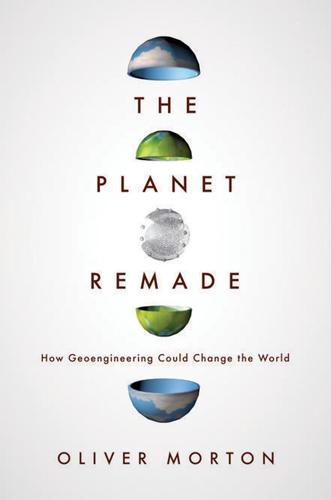
The Planet Remade: How Geoengineering Could Change the World
by
Oliver Morton
Published 26 Sep 2015
One of the problems faced by those who see nuclear energy as a vital part of the response to climate change is that many of those most worried about climate catastrophe have a similar fear – in some way, possibly, the same fear – of nuclear technology. Geoengineering taps into the same well of concern. Climate geoengineering does not require nuclear technology, much less nuclear bombs. But it cries out for being imagined as just the same sort of assumption of godlike power. It is easily read as embodying a Dr Strangelove sensibility and an I-am-become-death-the-destroyer-of-worlds hubris; as being bewitched by a silver-arrows-through-the-stratosphere technocratic ambition in just the way that the Strategic Air Command was; as being deaf to – or scornful of – the voices of the masses it claims to protect, and whose lives it holds at risk.
…
– www.look-up.org.uk (accessed May 23rd 2015) Singarayer, Joy et al. (2011) ‘Late Holocene Methane Rise Caused by Orbitally Controlled Increase in Tropical Sources’ Nature 470 82–85 Smil, Vaclav (2001) Enriching the Earth: Fritz Haber, Carl Bosch and the Transformation of World Food Production MIT Press Smil, Vaclav (2008) Energy in Nature and Society: General Energetics of Complex Systems MIT Press Smith, P. D. (2007) Doomsday Men: The Real Dr Strangelove and the Dream of the Superweapon Allen Lane Socolow et al. (2011) ‘Direct Air Capture of CO2 with Chemicals: A Technology Assessment for the APS Panel on Public Affairs’ American Physical Society Soddy, Frederick (1909) The Interpretation of Radium and the Structure of the Atom John Murray Soden, Brian J. et al. (2002) ‘Global Cooling After the Eruption of Mount Pinatubo: A Test of Climate Feedback by Water Vapour’ Science 296 726–730 Solomon, Susan (1999) ‘Stratospheric Ozone Depletion: A Review of Concepts and History’ Reviews of Geophysics 37 275–316 Solomon, Susan et al. (2009) ‘Irreversible Climate Change Due to Carbon Dioxide Emissions’ PNAS 106 1704–1709 Stone, Robert (dir) (2013) Pandora’s Promise (documentary film) Robert Stone Productions – see www.pandoraspromise.com Streets, David G. et al. (2013) ‘Radiative Forcing Due to Major Aerosol Emitting Sectors in China and India’ Geophysical Research Letters 40 4409–4414 Strong, Aaron et al. (2009) ‘Ocean Fertilization: Time to Move On’ Nature 461 347–348 Sutton, Mark A. et al. (2011) The European Nitrogen Assessment: Sources, Effects and Policy Perspectives Cambridge University Press Tansley, Arthur G. (1935) ‘The Use and Abuse of Vegetational Concepts and Terms’ Ecology 16 284–307 Taylor, Nicholas (1973) ‘The Awful Sublimity of the Victorian City: Its Aesthetic and Architectural Origins’ in The Victorian City: Images and Realities, Volume 2 ed Harold James Dyos and Michael Wolff, Taylor and Francis Teller, Edward, Wood, Lowell and Hyde, Ron (1997) ‘Global Warming and Ice Ages: 1.

Predator: The Secret Origins of the Drone Revolution
by
Richard Whittle
Published 15 Sep 2014
Grimes graduated in 1959—or, as he liked to put it, before the Ivy League school “got wacky” by making course grades optional and banning ROTC from its Providence, Rhode Island, campus. In the Air Force, Grimes was trained as a navigator, then became an electronic warfare officer with the 348th Bombardment Squadron at Westover Air Force Base, in south central Massachusetts. His unit’s mission was straight out of Dr. Strangelove, Stanley Kubrick’s 1964 satire of Cold War logic. Under the Strategic Air Command’s massive retaliation strategy, Grimes and his fellow B-52 Stratofortress long-range nuclear bomber crew members remained on twenty-four-hour alert for a week at a time. Their aircraft, fueled and ready, sat on a nearby runway, while they lived underground in a shelter nicknamed the Mole Hole, ready to fly off and nuke the Soviet Union at a moment’s notice if so ordered.
…
Dewey (crew member) “Digital Signal Processing” (Raduenz) Dominick, Peter Don’t Ask, Don’t Tell Dotan, Ezra “Beban” Doucet, Lyse Douglas, Donald Douglas A-4 Skyhawk Dragon Eye drones (unmanned, remote-control aircraft, RPVs; unmanned aerial vehicles, UAVs). See also Hellfire Predator; Predator; WILD Predator; and other specific models Blue expands into early, and problems early pilotless planes and early reconnaissance flight endurance of Karem designs new nano-drones revolution in Smithsonian exhibit target Dr. Strangelove (film) drug war Dusseault, Christopher East Germany Edwards Air Force Base Eglin Air Force Base Egypt Ehrhard, Thomas P. Eielson Air Force Base 11th Reconnaissance Squadron (Black Owls) El Mirage airfield Empire State Building End of History, The (Fukuyama) “Endurance Unmanned Aerial Vehicle (UAV) Program” (Deutch-Rutherford memo) Enduring Freedom, Operation European Command European Union Executive Orders Exposition Internationale, L’ F-4D Phantom F-5 Tiger F6F Hellcat F-14 Tomcat F-15 Eagle F-15E Strike Eagle F-16 F-16C Fighting Falcons F-18 F-22 Raptor F-100F Super Sabre F-117 stealth fighter F/A-18 fighter-bombers Federal Aviation Administration (FAA) Federal Bureau of Investigation (FBI) 15th Reconnaissance Squadron 53rd Test and Evaluation Group 56th Rescue Squadron Firebees Fireflys 1st Armored Division 555th Tactical Fighter Squadron Flynn, Cathal Fogleman, Ronald Ford, Gerald Fort Belvoir Fort Huachuca Fort Irwin Forty-Four ball (AN/AAS-44 V) forward air controller (FAC) Foscue, Greg Fossum, Robert Franks, Tommy free-flight World Championships Front Burner (Lippold) Frontier Systems Fry, Scott Fukuyama, Francis Fulcher, Tim Garmabak Ghar camp Gates Learjet GBU-12s General Atomics (formerly GA Technologies) 11th RS and Blues buy Forty-Four ball and Gnat 750 and Karem quits Leading Systems buyout and Predator forerunner and Predator name reused by General Dynamics Germany Gersten, Peter Ghengis (pilot) Gibaldi, Rich Gibbons, James A.
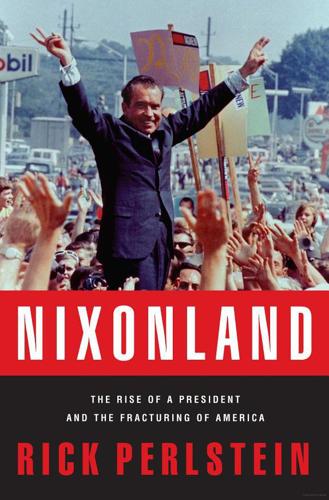
Nixonland: The Rise of a President and the Fracturing of America
by
Rick Perlstein
Published 1 Jan 2008
Secretary, what happens if we continue the policy you’ve outlined…this continued gradual escalation until the other side capitulates…up to and including nuclear war, and the other side doesn’t capitulate?” Rusk leaned back, hissed forth a stream of tobacco smoke, and solemnly replied, “Well, somebody’s going to get hurt.” Here, before their eyes, was the maniacal air force general Buck Turgid-son from Dr. Strangelove. The room drew silent, their thoughts as one: My God, the secretary of state is crazy. The madness was not hard to spot, if you chose to spot it. The problem was facing the wrath of all those decent Americans who didn’t want to face that their government was mad. Bobby Kennedy once made the mistake of candor: he said Prime Minister Ky lacked popular support.
…
In 1966, when Kuchel endorsed Brown for governor over Reagan and became one of only three Republicans to vote against Everett Dirksen’s school prayer amendment, conservatives floated the name of John Wayne as a challenger. Then they started talking about General Curtis LeMay, an inspiration for Dr. Strangelove. It all seemed like a bad joke. “The state gets twenty-five percent of its gross product from the federal government,” an L.A. power broker pointed out when asked whether California Republicans were crazy enough to turn out a Senate whip with eighteen years of seniority. “Conservative businessmen are realists.
…
Usually Humphrey appeared with the vice-presidential seal and flag. Usually Humphrey was introduced as the vice president. Not this time. This time, he was introduced as the “Democratic candidate for president.” Hubert Humphrey had reclaimed his pecker. On October 9, he ran an ad during a network showing of Dr. Strangelove that took up where LBJ’s “Daisy” ad of 1964 had left off: it argued against Nixon’s position that the nuclear nonproliferation treaty should be delayed by showing an exploding mushroom cloud. Another ad showed Nixon speaking without any sound for twelve seconds, then a voice-over: “Mr. Nixon’s silence on the issue of Vietnam has become an issue in itself.”
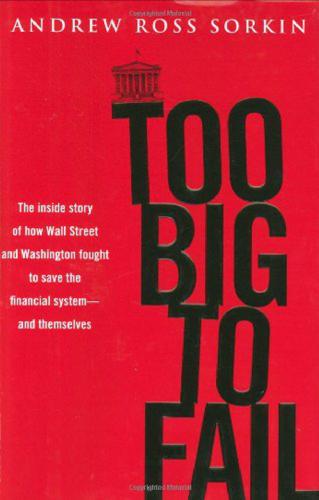
Too big to fail: the inside story of how Wall Street and Washington fought to save the financial system from crisis--and themselves
by
Andrew Ross Sorkin
Published 15 Oct 2009
It was the AIG unit that had been placed on probation for thirteen months—AIG Financial Products Corp., or FP for short—that became Ground Zero for the financial shenanigans that would nearly destroy the company. FP had been created in 1987, the product of a remarkable deal between Greenberg and Howard Sosin, a finance scholar from Bell Labs who became known as the “Dr. Strangelove of Derivatives.” A great deal of money can be made from derivatives, which are, in simplest terms, financial instruments that are based on some underlying asset, such as residential mortgages, to weather conditions. Like the bomb that ended the film Dr. Strangelove, derivatives could, and did, blow up; Warren Buffett called them weapons of mass destruction. Sosin had been at Drexel Burnham Lambert, Michael Milken’s ill-fated junk bond operation, but left before that Beverly Hills-based powerhouse folded amid an epoch-defining scandal that drove it into bankruptcy in 1990.
…
American International Group, Inc., Litigation Release No. 18985, November 30, 2004. See http://www.sec. gov/litigation/litreleases/lr18985.htm. deferred-prosecution agreements: Pamela H. Bucy, “Trends in Corporate Criminal Prosecutions Symposium: Corporate Criminality: Legal, Ethical, and Managerial Implications,” American Criminal Law Review, September 22, 2007. “Dr. Strangelove of Derivatives”: Lynnley Browning, “AIG’s House of Cards,” Portfolio, September 28, 2008. Warren Buffett called them weapons of mass destruction: In the past he had referred to them as “time bombs” and “financial weapons of mass destruction.” Clare Gascoigne, “A Two-Faced Form of Investment—the Culture of Derivatives,” Financial Times, May 3, 2003.
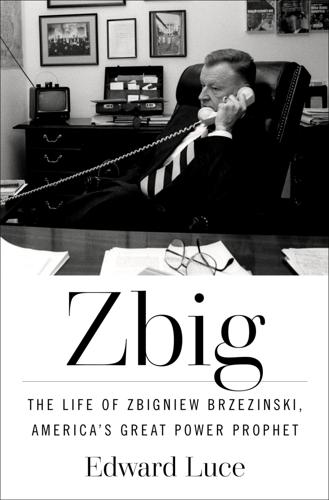
Zbig: The Life of Zbigniew Brzezinski, America's Great Power Prophet
by
Edward Luce
Published 13 May 2025
Coming at the moment it did and in the way that it was conducted, the seminar was a rite of passage for Brzezinski. His new rival, Kissinger, canceled his attendance after Nixon had tapped him on the shoulder forty-eight hours before it started. Kissinger did, however, make it to the closing dinner, where, according to one reporter, he gave his “inadvertent imitation of Peter Sellers doing Dr. Strangelove.”4 Brzezinski’s bitterest clash was with a member of his own generation, Hoffmann, with whom he was rapidly falling out. That was not their first dispute. Hoffmann had published a rare negative review of Brzezinski’s 1965 book, Alternative to Partition.5 Building bridges was tilting at windmills, he argued; the Warsaw Pact would not be fooled by Brzezinski’s transparent seduction.
…
Brzezinski’s nickname among the Georgians was “Woody Woodpecker,” based on his resemblance to the cartoon character with his chiseled nose and crew-cut swept-forward hair. He disliked the moniker. In retaliation, Brzezinski called Hamilton Jordan, leader of the Georgia pack, and Carter’s most trusted political advisor, “Porky Pig.” To humor Brzezinski, Jordan changed his nickname to “Dr. Strangelove,” which he cherished.32 That night, the Harrimans toasted Brzezinski’s birthday with champagne.33 In the previous three months, he had been able to make only two fleeting visits to Muska and the children in New Jersey. Carter, who was infamously censorious about nonmarital living arrangements among his younger Georgia staff, liked to tease Brzezinski about his bachelor existence.
…
Over the coming weeks, Carter dispatched Brzezinski to give hawkish foreign policy speeches in key states. Jordan, in turn, was devoting most of his time to trying to get the US hostages released from Iran—donning wigs and fake mustaches to meet shadowy intermediaries in Panama and Paris. “We ought to swap jobs, Dr. Strangelove,” Jordan joked. “Could I use nuclear weapons in the presidential campaign?” Brzezinski replied.131 The next Brzezinski-Vance showdown was over Pakistan. The NSC realized that comparing Soviet woes in Afghanistan to America’s Vietnam disaster was not at all helpful to its cause. State was using the analogy to argue that the Soviets had blundered terribly and would now learn their lesson, much as the Americans had in Vietnam.
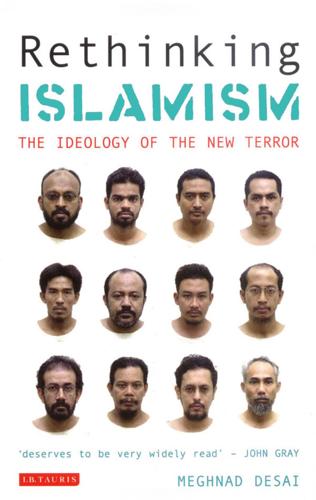
Rethinking Islamism: The Ideology of the New Terror
by
Meghnad Desai
Published 25 Apr 2008
. In the Communist empireinEasternEurope,andintheUSSRitself,collapsed. It did so without a shot being fired by its enemies, without the awesome nuclear arsenal on both sides of the Cold War being alerted, let alone used. The nightmare scenario of the Cold War –theDrStrangelovefantasy–didnotrealiseitself. YetwhatfollowedwasnoteternalpeaceorevenaNewWorld Order, as was much prophesied by the victors of the Cold War. Within a decade of the Wall disappearing, there was new talk of Armageddon.Theworldfacedanewthreat,anew‘clashofcivilisations’,whichwasuniqueandevenmoredangerous.

The Precipice: Existential Risk and the Future of Humanity
by
Toby Ord
Published 24 Mar 2020
J. (1959). “Speculations on Perceptrons and Other Automata.” Research Lecture, RC-115. IBM, Yorktown Heights, New York, June 2. —(1970). “Some Future Social Repercussions of Computers.” International Journal of Environmental Studies, 1(1–4), 67–79. Goodchild, P. (2004). Edward Teller, the Real Dr. Strangelove. Harvard University Press. Goodfellow, I. J., et al. (2014). Generative Adversarial Networks. ArXiv, https://arxiv.org/abs/1406.2661. Goodhart, C. (1975). “Problems of Monetary Management: The U.K. Experience,” in Papers in Monetary Economics. Reserve Bank of Australia. Gorbachev, M., and Hertsgaard, M.
…
This significantly exceeds current stockpiles of around 9,000 deployed warheads, which have an average yield considerably below one megaton. 32 Such a “doomsday device” was first suggested by Leo Szilard in 1950 and its strategic implications were more fully developed by Herman Kahn (Bethe et al., 1950). A cobalt bomb (or similar salted weapon) plays a major role in the plots of On the Beach and Dr. Strangelove, taking nuclear war in both cases from a global catastrophe to an extinction threat. The greatest obstacle to destroying all of humanity with such a weapon is ensuring that lethal radiation is distributed evenly across the Earth, particularly when taking into account shelters, weather and oceans.
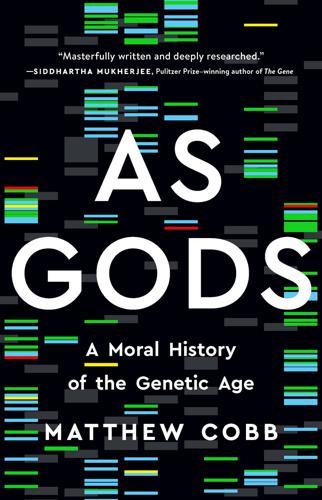
As Gods: A Moral History of the Genetic Age
by
Matthew Cobb
Published 15 Nov 2022
The FBI’s Weapons of Mass Destruction Directorate took a particular interest in the new approach and meetings took place between US and UK scientists and security experts in a variety of locations – according to one participant ‘some were like a set for Yes, Minister and others were like a set for Dr Strangelove’.74 There were worries that the decreasing price of DNA synthesisers – machines that can create bespoke DNA sequences – would put them into the hands of hobbyists, who might accidentally misuse them, or terrorists, for whom misuse would be the sole intention.75 Synthetic biology advocates such as George Church took the potential dangers of the new approach very seriously and there were calls for DNA synthesisers to be internationally registered and for users to have an obligation to report what they were studying.
…
For example, leading gene-drive researchers have published a code of ethics for gene-drive research.12 This is a step forward, but they are still not thinking hard enough about the implications of their work and above all about how and why the public should actively have a say in whether such research goes ahead. This is even more true of those working on gain-of-function manipulation of pathogens. All of the scientists involved are well-meaning – there are no Dr Strangeloves or Victor Frankensteins in their ranks – but they need to pay more attention to the social implications of what they do. Although Asilomar rejected the idea of discussing the ethical or social aspects of genetic engineering, its very existence as an example of self-regulation, together with the myths that eventually grew around it, created the expectation that genetic engineering and its associated technologies would take social responsibility seriously.
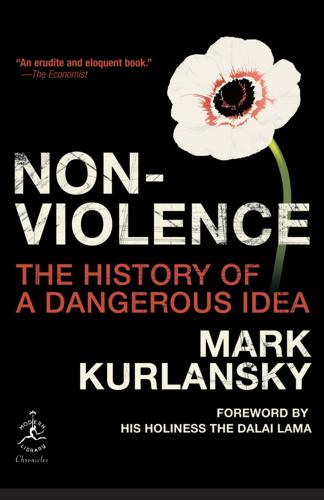
Nonviolence: The History of a Dangerous Idea
by
Mark Kurlansky
Published 7 Apr 2008
While governments were playing out their Cold War, young people in both blocs were having their ideas shaped as they were being taught to crouch under their school desks, which someone somewhere had decided would be the one safe place for them in the event of a nuclear World War III. Some films, such as Stanley Kubrick's 1964 Dr. Strangelove, or: How I Learned to Stop Worrying and Love the Bomb, and Stanley Kramer's 1959 On the Beach, as well as Nevil Shute's 1957 novel on which the Kramer film was based, presented the antinuclear argument, while a barrage of westerns of the same period taught that it wasn't good to fight but that when the bad guy comes to town, a man has to pick up a gun.

Epigenetics: How Environment Shapes Our Genes
by
Richard C. Francis
Published 14 May 2012
I remember watching a film on the experiments as an undergraduate and feeling both enthralled and repulsed, for certainly by today’s standards, Harlow’s experiments seemed to cross an ethical line in his treatment of his subjects. Harlow himself did not come across as a particularly sympathetic figure but as an almost Dr. Strangelove caricature of an experimental psychologist. But the claims of his most outspoken detractors—that his sometimes sadistic seeming experiments yielded nothing of scientific value—are complete nonsense. Harlow’s initial experiments were designed to address a fundamental question about the mother-infant bond from the infant’s perspective: is it sustained by the sustenance the infant receives (initially milk), or by some other, less obviously life sustaining qualities that the mother has to offer?

Turing's Cathedral
by
George Dyson
Published 6 Mar 2012
His limp, from losing most of a foot to a Munich streetcar in 1928, had grown more pronounced, just as memories of his Hungarian youth had become more vivid as his later memories were beginning to fade. “I remember the bridges, the beautiful bridges,” he says of Budapest.22 Although Teller served (with von Neumann and German rocket pioneer Wernher von Braun) as one of the models for the composite title character in Stanley Kubrick’s cold war masterpiece Dr. Strangelove, nuclear weapons in the hands of Teller are, to me, less terrifying than they are in the hands of a new generation of nuclear weaponeers who have never witnessed an atmospheric test firsthand. Teller assumed that I had come to ask him about the Teller-Ulam invention, and provided a lengthy account of the genesis of the hydrogen bomb, and of the fission implosion-explosion required to get the thermonuclear fuel to ignite.
…
deuterium, 1.1, 11.1, 11.2, 11.3, 11.4 differential analyzer, 5.1, 5.2, 14.1 differential equations, 4.1, 9.1, 9.2 as difference equations digital universe “artificially created universe,” (1953) estimated magnitude of explosion of, prf.1, 1.1, 1.2, 8.1, 11.1, 16.1, 17.1, 17.2 size of, in 1953 as third kingdom of mathematics digital vs. analog, 1.1, 1.2, 5.1, 12.1, 14.1 Dirac, Paul A. M. (1902–1984), 3.1, 4.1, 4.2 “The Distribution of Wars in Time” (Richardson, 1944) DNA (deoxyribonucleic acid), 1.1, 8.1, 11.1, 12.1, 12.2, 12.3, 12.4, 17.1 Dodd, Paul A. Doermann, August (Gus) Donaldson, Lauren dreaming brain, activity of Dr. Strangelove (Kubrick) Dutch East India Company “The Dynamics of Long Waves in a Baroclinic Westerly Current” (Charney, 1946) Dyson, Freeman, ack.1, 8.1, 11.1, 13.1, 14.1, 16.1 on Bigelow on von Neumann, 3.1, 18.1 Earle, Edward Mead Eckart, Carl Henry (1902–1973) Eckert, John Presper (1919–1995), 5.1, 5.2, 7.1, 7.2, 8.1, 9.1, 18.1, 18.2 on stored-program computing on von Neumann ECP (Electronic Computer Project, IAS), prf.1, ack.1, 1.1, 2.1, 5.1, 7.1 beginnings of, 5.1, 5.2, 6.1, 7.1, 9.1 building for funding of, prf.1, ack.1, 1.1, 5.1, 7.1, 14.1 and housing shortage, 6.1, 8.1 and hydrogen bomb, 10.1, 10.2, 11.1, 12.1, 16.1, 18.1 opposition to, 5.1, 5.2, 7.1, 8.1, 9.1, 14.1, 14.2, 18.1 termination of, 14.1, 16.1, 18.1 see also IAS computer (MANIAC); numerical weather prediction EDSAC (Electronic Delay Storage Automatic Calculator) EDVAC (Electronic Discrete Variable Automatic Computer), 5.1, 8.1, 8.2, 9.1, 13.1, 13.2 Eidgenössische Technische Hochschule (ETH), 4.1, 4.2 Einstein, Albert (1879–1955), 1.1, 3.1, 4.1, 5.1, 6.1, 6.2, 6.3, 6.4, 12.1, 18.1, 18.2 appointed to IAS (1933) diet his hi-fi system, 1.1, 7.1, 18.1 on nuclear weapons, 1.1, 5.1, 6.1, 10.1, 11.1 on Princeton on sublimity of Nature’s law Eisenhower, Dwight D., 11.1, 11.2, 14.1 Electronic Control Company (Eckert and Mauchly), 5.1, 7.1, 8.1, 18.1 security investigation of “Electronic Computing Device” (Rajchman, 1943) “Electronic Diff.
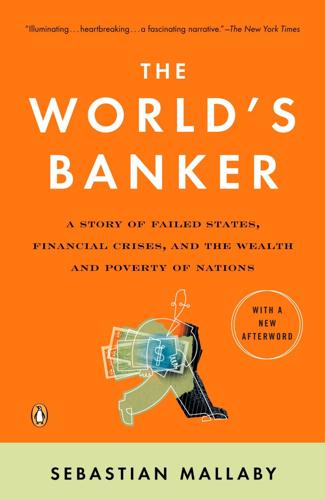
The World's Banker: A Story of Failed States, Financial Crises, and the Wealth and Poverty of Nations
by
Sebastian Mallaby
Published 24 Apr 2006
He had begun his career as an academic political scientist and had straddled academia and policy making ever since; the same combination of theory and practice defined the Bank’s professional culture. Wolfowitz had spent the Clinton years running the School of Advanced International Studies at Johns Hopkins University, whose graduate program had trained scores of World Bank officials. The image of Wolfowitz as an unfeeling Dr. Strangelove was totally unfair. He could be painfully honest with himself about the human cost of his decisions: Since the start of the Iraq fighting, he had made a point of spending Friday nights at Fran O’Brien’s Stadium Steakhouse in northwest Washington, D.C., where wounded servicemen, some missing legs or arms, gathered to enjoy a brief break from rehabilitation at the Walter Reed military hospital.
…
After Cornell, Wolfowitz joined the graduate program in political science at the University of Chicago. The faculty was famous as the home of Strauss, and Wolfowitz took two courses from him. But the biggest influence on Wolfowitz at Chicago was Albert Wohlstetter, a strategist of nuclear warfare who was one of the models for Dr. Strangelove in Stanley Kubrick’s Cold War satire. Wohlstetter built on the conservative outlook imparted by Bloom and added a practical twist. He schooled Wolfowitz in the details of Soviet nuclear capacity, emphasizing the scale of the threat and hence the danger of disarmament. Equipped with Wohlstetter’s teaching and political connections, Wolfowitz soon found his way to the corridors of Washington.

Extreme Money: Masters of the Universe and the Cult of Risk
by
Satyajit Das
Published 14 Oct 2011
In the 1950s, Herman Kahn, a strategist at the RAND Corporation, and Ian Harold Brown, a risk analyst, proposed a doomsday machine. It consisted of a computer linked to a stockpile of hydrogen bombs, programmed to detonate them and bathe the planet in nuclear fallout at the signal of an impending nuclear attack from another nation. In Stanley Kubrick’s film Dr Strangelove or: How I Learned to Stop Worrying and Love the Bomb, there is speculation about whether the Russians possess this technology. Currently, the doomsday clock reads around 5 minutes to midnight. In 2008, as the global financial crisis gripped the world, the financial equivalent of the doomsday machine—an unstable system of money and unsustainable levels of debt—reached midnight and imploded.
…
See also exotic products AIG, 230-234 arbitrage, 242 central banks, 281-282 deconstruction, 235-236 first-to-default (FtD) swaps, 220-221 Harvard case studies, 214-215 hedging, 216-217 Italy, 215-216 Jerome Kerviel, 226-230 managing risk, 124 markets, 235, 334 municipal bonds, 211-214 price movements, 210-211 risk, 218-219 design of, 225 Fiat, 222-223 Greece, 223, 225 sale of to ordinary investors, 332-333 sovereign debt, 236-238 TARDIS trades, 217-218 TOBs (tender option bonds), 222 Derman, Emanuel, 309 Derrida, Jacques, 236 Descartes, René, 228 Detroit, 42 Deutsche Bank, 79, 195, 272, 312 Devaney, John, 255 di Lampedusa, Giuseppe, 353 digitals, 211 Dillion Read, 201 Dimon, Jamie, 283, 290 dinars, 21 Diners Club, 71 Dirac, Paul, 104 dirty bombs, 26 disaster capitalism, 342 discrete time intervals, 121 dismal science, 102-104 dispersion swaps, 255 distressed debt trading, 242 distributions, normal, 126 diversification, 122-124 dividends, 119 Dixon, Geoff, 156 documentation requirements, 181 DOG (debt overburdened group), 161 dollars American, 21-22, 28, 87 aussies, 21 kiwis, 21 Zimbabwe, 23 domain knowledge, 64 domestic corporate profits, United States, 276 Dominion Bond Rating Service, 283 doomsday clock, 34 Dorgan, Bryan, 67 Douglas, Michael, 167, 310 Dow 36,000, 99 Dow 40,000: Strategies for Profiting from the Greatest Bull Market in History, 97 Dow 100,000, 97 Dow Jones Industrial Average (DJIA), 89, 97, 126 Dr. Doom, 95 Dr. Strangelove or How I Learned to Stop Worrying and Love the Bomb, 35 Drexel Burnham Lambert, 140, 230 Drexel Harriman Ripley, 144 Drexel system, 151-152 Druckenmiller, Stanley, 261 Drucker, Peter, 63 drunk trading, 40 Dubai International Financial Centre (DIFC), 82-83 Dublin as a financial center, 83 Duncan, Richard, 235 Dunninger, Karl, 355 Duquesne Capital Management, 261 Durand, David, 116, 119 DVT (deep vein thrombosis), 166 Dynamite Prize in Economics, 304 E early return of capital, 156 earnings General Electric (GE), 61 loans, 70 Eastern Europe, reintegration of after fall of Berlin Wall, 295 Eaton Leonard LBOs, 150 eBay, 345 Ebbers, Bernie, 54 economic growth, risk, 295-296 economic rents, 276-277 economics, definition of, 102 Economics of Happiness, The, 364 Economist, The, 62, 77, 327 Edens, Wesley R., 239 education, finance careers, 308-313 bonuses, 317-318 compensation, 313-320 efficient market hypothesis (EMH), 118, 303 Ehrenreich, Barbara, 186 Einarsson, Sigurdur, 275 Einhorn, David, 256, 259, 274 Einstein, Albert, 90, 126, 128 Eisenhower, Dwight D., 294 El-Dorado economics, 84-85 Electric & Musical Industries, 157 Elias, David, 97 Elie Wiesel Foundation for Humanity, 313 Eliot, T.S., 321 Ellis, Bret Easton, 313 embedded loss leverage, 193 EMEA Trading in Local Currency, 318 emerging markets, 124 EMI Group, 157, 162 emotional market hypothesis, 303 Emperor Franz Joseph I, 163 employee benefits, 47 energy, 251 engineering, financial, 55-57 engineers, financial, 308 Engle, Louis, 131 Enron, 49, 55-56, 154, 283, 307, 313 Enron, 288, 307, 328 Enterprise Fund, 145 equilibrium, markets, 327 equities, 55 equity, 119 long-short funds, 240-242 private, 155, 164 failures, 162-163 infrastructure, 158 public sector services, 161 tranches, 170, 192 Equity Office Properties, 155 Ernst & Young, 244 EU (European Union), stabilization funds, 354 Eurex, 227 European debt crisis, 357-359 euros, 21 event-driven funds, 242 Ewing, J.R., 147 ex ante (expected risk), 246 ex post (based on actual risk), 246 excess spreads, 169 exchanges, money, 23-24 Exor, 222 exotic products, 73-74 expensive capital, reduction of, 75 expiry, 120 exploding ARMs, 183 exploitation, 38 exports from China, 85 exposure to catastrophic weather events, 251 F Fair Isaacs Corporation, 181 fallen angels, 144 falsifying financial statements, 289-291 Fan, Henry, 218 Fannie Mae, 339 fascism, 29 fat tails, 126 fata morgana, 130-131 Faust, 36 FCIC testimony, Alan Greenspan, 304-305 Fear of Flying, 73 fear of loss of status, 43 FEB Trucking, 150 Federal Home Loan Mortgage Corporation (FHLMC or Freddie Mac), 180 Federal Housing Administration (FHA), 179 Federal National Mortgage Association (FNMA or Fannie Mae), 179 Federal Reserve, 97, 316 Federated Department Stores, 150 fees consulting, 316 derivatives, 215 hedge funds, 245 leveraged buyouts (LBOs), 141-143 Feldstein, Martin, 316 Ferguson, Charles, 316 Ferguson, Niall, 87, 156 Ferguson, Nicholas, 163 Ferris Bueller’s Day Off, 65 Fiat S.P.A.
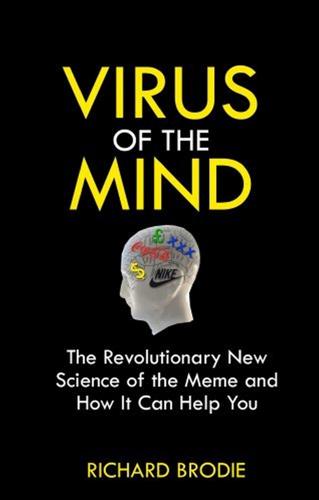
Virus of the Mind
by
Richard Brodie
Published 4 Jun 2009
Those proteins, in turn, control the various chemical reactions that chart the course of a cell’s life: a time to store sugars, a time to manufacture oxygen, a time to split, a time to die. The virus’s sneaky tactics are like the insane 41 virus of the mind officer’s orders to the bomber squadron in Dr. Strangelove to launch an unprovoked attack on Moscow: the cell, or bomber crew, just obeys its new instructions and off it goes. One of the instructions that the virus gives is to manufacture more viruses and in some way spread them to other hosts. This particular instruction is essential or the virus would quickly die out.

Collider
by
Paul Halpern
Published 3 Aug 2009
Deep Down Things: The Breathtaking Beauty of Particle Physics (Baltimore: Johns Hopkins University Press, 2004). Segrè, Emilio. Enrico Fermi, Physicist (Chicago: University of Chicago Press, 1970). Sessler, Andrew, and Edmund Wilson. Engines of Discovery: A Century of Particle Accelerators (Singapore: World Scientific, 2007). Smith, P. D. Doomsday Men: The Real Dr. Strangelove and the Dream of the Superweapon (New York: St. Martin’s Press, 2007). Snow, C. P. The Physicists: A Generation That Changed the World (London: Papermac, 1982). ‘T Hooft, Gerard. In Search of the Ultimate Building Blocks (New York: Cambridge University Press, 1997). Thomson, J. J. Recollections and Reflections (New York: Arno Press, 1975).
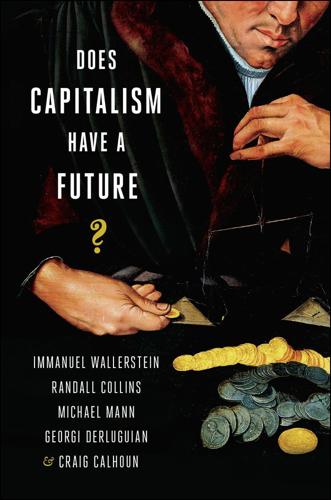
Does Capitalism Have a Future?
by
Immanuel Wallerstein
,
Randall Collins
,
Michael Mann
,
Georgi Derluguian
,
Craig Calhoun
,
Stephen Hoye
and
Audible Studios
Published 15 Nov 2013
No doubt there are some who would like to get their hands on nuclear weapons (as well as on chemical and biological weapons) and use them. The limited ability of many states to protect such weapons from seizure or purchase may facilitate their acquisition by nonstate actors. And the possibility of a rogue state agent, the Dr. Strangelove of fiction, is never to be ruled out. It is quite possible that the world will weather the global transition without any of these catastrophes occurring. But it is also possible that it will not. A lot will depend on what will be the new political structures and how soon they can emerge. Conceivably such new structures will take the kinds of measures that can reduce, even eliminate, the likelihood of global disasters.
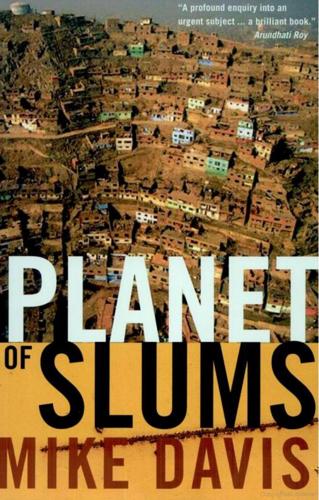
Planet of Slums
by
Mike Davis
Published 1 Mar 2006
Our recent military history is punctuated with city names — Tuzla, Mogadishu, Los Angeles [!], Beirut, Panama City, Hue, Saigon, Santo Domingo — but these encounters have been but a prologue, with the real drama still to come."8 To help develop a larger conceptual framework for MOUT, military planners turned in the 1990s to Dr. Strangelove's old alma mater, the Santa Monica-based RAND Corporation. RAND, a nonprofit think tank established by the Air Force in 1948, was notorious for wargaming nuclear Armageddon in the 1950s and for helping to strategize the Vietnam War in the 1960s. These days RAND does cities: its researchers ponder urban crime statistics, inner-city public health, and the privatization of public education.

When the Air Hits Your Brain: Tales From Neurosurgery
by
Frank Vertosick
Published 1 Jan 1996
“What do you expect to find?” I asked. “His films are normal.” “I don’t know,” Gary answered, “a disc rupture, a clot, maybe. But we have to look.” In tense situations, Gary’s flippant facade was jettisoned, exposing a tenacious and humorless professional beneath. He reminded me of the bomber pilot from the movie Dr. Strangelove, a buffoonish bumpkin until he receives his orders to deliver a hydrogen bomb on Moscow, at which time he is transformed into a fanatic and competent cold warrior. We returned to the trauma room and Gary explained the myelogram test to Billy. As we were leaving to head upstairs to radiology, Billy called out: “Doc…” Gary returned to the bedside.
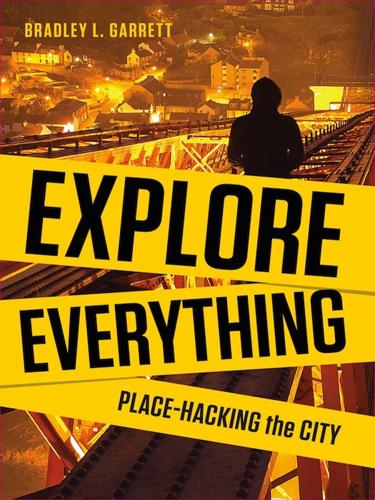
Explore Everything
by
Bradley Garrett
Published 7 Oct 2013
Garrett, Alison Hess, Ellie Miles and Terri Moreau, ‘London’s Olympic Waterscape: Capturing Transition’, International Journal of Heritage Studies 19: 2 (2013). 12 Friedrich Nietzsche, The Use and Abuse of History (New York: Cosimo Classics, 2006), p. 21. 13 Brian Dillon, ‘Decline and Fall’, Freize Magazine 130 (April 2010). 14 Ninjalicious, ‘The End Is Nigh, but I’m Probing On’, Infiltration (1997). 15 Paul Dobraszczyk, ‘Petrified Ruin: Chernobyl, Pripyat and the Death of the City’, City: Analysis of Urban Trends, Culture, Theory, Policy, Action 14: 4 (2010), p. 372; Susan Sontag, ‘The Imagination of Disaster’, in Sean Redmond, Liquid Metal: The Science Fiction Film Reader (New York: Wallflower Press, 2005), p. 52. 16 Dobraszczyk, ‘Petrified Ruin’; Mike Davis, Dead Cities, and Other Tales (New York: New Press, 2004). 17 W.G. Sebald and Michael Hulse, The Rings of Saturn (New York: New Directions, 2002). See also Robert Macfarlane’s film Untrue Island, at guardian.co.uk/books/video/2012/jul/09/robert-macfarlane-untrue-island-orford-ness-video. 18 Jonathan Veitch, ‘Dr Strangelove’s Cabinet of Wonder: Sifting through the Atomic Ruins at the Nevada Test Site’, in Julia Hell and Andreas Schönle, eds, Ruins of Modernity (London: Duke University Press, 2010). 19 RomanyWG, Beauty in Decay II: Urbex (Durham, NC: Carpet Bombing Culture, 2012). 20 Raymond Kurzweil, The Singularity Is Near (New York: Penguin, 2006). 21 Christopher Lasch, The Culture of Narcissism (New York: Norton, 1991); Kai T.
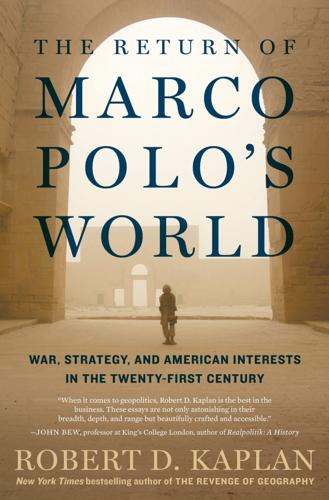
The Return of Marco Polo's World: War, Strategy, and American Interests in the Twenty-First Century
by
Robert D. Kaplan
Published 6 Mar 2018
What kept that prison yard from expanding was mainly the projection of American power, in the form of military divisions armed with nuclear weapons. That such weapons were never used did not mean they were unnecessary. Quite the opposite, in fact: The men who planned Armageddon, far from being the Dr. Strangeloves satirized by Hollywood, were precisely the people who kept the peace. Many Baby Boomers, who lived through the Cold War but who have no personal memory of World War II, artificially separate these two conflicts. But for Kissinger, a Holocaust refugee and U.S. Army intelligence officer in occupied Germany; for General Creighton Abrams, a tank commander under George Patton in World War II and the commander of American forces in Vietnam from 1968 onward; and for General Maxwell Taylor, who parachuted into Nazi-occupied France and was later the U.S. ambassador to South Vietnam, the Cold War was a continuation of the Second World War.
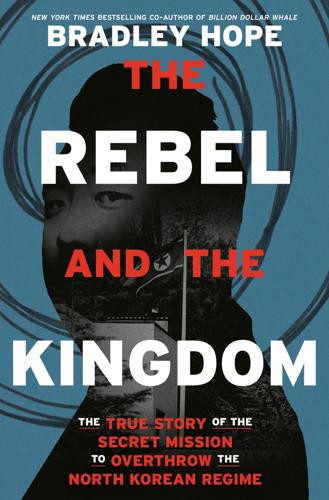
The Rebel and the Kingdom: The True Story of the Secret Mission to Overthrow the North Korean Regime
by
Bradley Hope
Published 1 Nov 2022
However, no topic sent chills through the ranks of the National Security Council and foreign policy establishment more than his hot-and-cold approach to North Korea. For most of the veteran foreign policy hands, that Trump thought he could make a difference on such a long-running, sensitive, seemingly intractable issue was a nightmare that reminded them of the Stanley Kubrick film Dr. Strangelove. One of the last transition meetings between the administration of Barack Obama and the incoming Trump team was dedicated to conveying just how perilous the North Korea problem had become. In the eyes of Obama, it was the single greatest danger posed to the United States, as the outgoing president confided to Trump in a one-on-one meeting at the White House in November 2016.
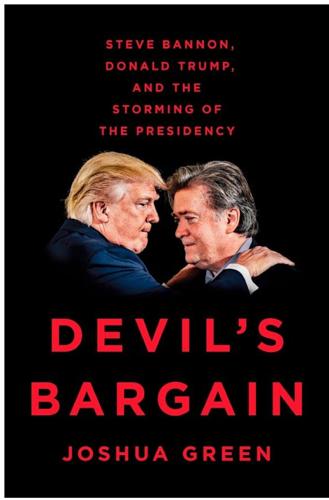
Devil's Bargain: Steve Bannon, Donald Trump, and the Storming of the Presidency
by
Joshua Green
Published 17 Jul 2017
Even on his best days, these Republicans agreed, Trump was never more than a hairsbreadth from blowing himself up and taking out the party with him. No one who had encountered Bannon or Breitbart doubted for a moment that he would encourage Trump’s worst tendencies. He was a human hand grenade, an Internet-era update of the Slim Pickens character in Dr. Strangelove who rides the bomb like a rodeo bull, whoopin’ and hollerin’ all the way to nuclear annihilation. As one of his Breitbart News employees admiringly put it, “If there’s an explosion or a fire somewhere, Steve is probably nearby with some matches.” But Trump, a honey badger himself, saw plenty to like.

How Much Is Enough?: Money and the Good Life
by
Robert Skidelsky
and
Edward Skidelsky
Published 18 Jun 2012
For the philosophers of sexual utopia, the serpent in the Garden was not capitalism as such but technology. Theodore Roszak talked of “technocratic totalitarianism.”47 The specific indulgence of its insanity was the nuclear arms race, which threatened to kill off the world just as it was on the point of regaining paradise. Dr. Strangelove is this nightmare’s classic filmic encapsulation. Technology, though, was Janus-faced, for it had also liberated man—or at least North American man—from poverty. As Charles Reich put it: The crucial point is that technology has made possible that “change in human nature” which has been sought so long but could not come into existence while scarcity stood in the way.

New Dark Age: Technology and the End of the Future
by
James Bridle
Published 18 Jun 2018
Four-storey ‘direction centres’ were installed in twenty-seven command-and-control stations across the United States, and their twin terminals – one for operation, one for backup – included a light gun for designating targets (resembling the Nintendo ‘Zapper’) and ashtrays integrated into the console. SAGE is best memorialised in the vast, paranoid aesthetic of Cold War computing systems, from Dr. Strangelove in 1964 to WarGames, the 1983 blockbuster that told the story of a computer intelligence unable to distinguish between reality and simulation, and famous for its concluding line: ‘the only winning move is not to play.’ In order to make such a complex system work, 7,000 IBM engineers were employed to write the largest single computer programme ever created, and 25,000 dedicated phone lines were laid to connect the various locations.23 Despite this, SAGE is best known for its bloopers: leaving training tapes running so that follow-on shifts mistook simulation data for actual missile attacks, or designating flocks of migrating birds as incoming Soviet bomber fleets.

The Authoritarians
by
Robert Altemeyer
Published 2 Jan 2007
Some of the NATO teams were composed entirely of low RWA students, and other NATO teams were stocked entirely with highs. (We experimenters secretly played the Warsaw Pact.) The simulation began with a couple of ambiguous moves by the Warsaw Pact, such as holding military exercises earlier than anticipated, and withdrawing divisions to rear areas (possibly for rest, or--as Dr. Strangelove might argue--possibly for redeployment for an attack). The NATO teams could respond with nonthreatening or threatening moves of varying magnitudes. But if they made threats, the Warsaw pact responded with twice as much threat in return, and the NATO team would reap what it had sown as an escalation of aggressive moves would likely result.

The Future Was Now: Madmen, Mavericks, and the Epic Sci-Fi Summer Of 1982
by
Chris Nashawaty
Godzilla, a monster movie born in Tokyo, became a haunting reminder of the cost of leveling two Japanese cities to radioactive dust. In the ’60s, the Cuban missile crisis, the metastasizing war in Vietnam, and the echoing peal of gunshots at Dallas’s Dealey Plaza, the Ambassador Hotel in LA, and the Lorraine Motel in Memphis seemed to find their way on-screen, dressed in sci-fi drag, in such world-gone-mad films as Dr. Strangelove, Planet of the Apes, and Night of the Living Dead. And in the first half of the ’70s, Charlton Heston would become a one-man postapocalyptic wrecking crew in The Omega Man and Soylent Green. Whatever form these stories took, it was clear—at least to Miller—that the end of the world as we know it was never far from our thoughts.
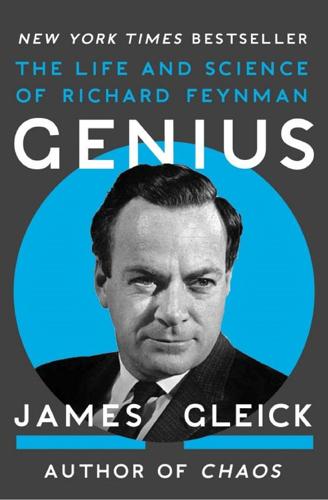
Genius: The Life and Science of Richard Feynman
by
James Gleick
Published 1 Jan 1992
The images of Trinity—the spindly hundred-foot tower waiting to be vaporized, the jackrabbits found shredded a half-mile from the blast, the desert sand fused to a bright jade-green glaze—came to presage the central horror of an age. We have hindsight. We know what followed: the blooding of the scientists, the loss of innocence—Hiroshima, Dr. Strangelove, throw weights, radwaste, Mutual Assured Destruction. The irony is built in. At first, though, ground zero stood for nothing but what it was, a mirrored surface, mildly radioactive, where earlier had stood a tower of steel. Richard Feynman, still not much more than a boy, wrote, “It is a wonderful sight from the air to see the green area with the crater at the center in the brown desert.”
…
S., 236 beta decay, 272, 309, 330–39 Bethe, Hans, 53, 176–78, 216, 233, 255–59, 287, 386 background, 166–67, 289 consulting, 223 at Cornell, 204–5, 226–28, 269–70, 277, 278, 293–94 and Dyson, 235, 238–39, 266–67 and Feynman, 165–66, 169, 184, 212, 241, 249, 262, 296 as genius, 322 Lamb shift calculation, 239–40, 251–52 at Los Alamos, 165–69, 171, 173, 180, 198, 202–3 mental arithmetic, 14–15, 175–77 Nobel Prize, 377 nuclear physics, 80, 167 physical intuition, 166–67, 305 prewar research, 138 renormalization, 239–40, 252 Schwinger and, 216 Bethe, Henry, 241 Bethe, Rose, 202, 289 Bethe-Feynman formula, 6, 168 Bhagavad Gita, 155 Bhopal chemical disaster, 416 bikini, 339 bird watching, 28–29, 308, 388 Birge, Raymond T., 85, 184, 204 Bjorken, James D., 393–94 black hole, 93, 353 Blake, William, 318 Block, Martin, 333, 335 Bohr, Aage, 258 Bohr, Niels, 5, 10, 15, 41, 130, 243–44, 279–80, 292 atomic model, 38, 71–72, 99, 242 complementarity, 40, 54, 247 criticism of Feynman, 8, 226, 258 as genius, 322 liquid-drop model, 95, 139 at Los Alamos, 8, 257 Nobel Prize, 376 at Pocono, 5, 8, 255–58 Wheeler and, 93–95 Bondi, Hermann, 125–26 bootstrap model, 369–70 Boscovich, Ruggiero, 39 Boyle, Robert, 38–39 Braun, Wernher von, 414 Brazil appeal to Americans, 278 Feynman in, 278, 282–87, 337, 341 physics in, 278, 283–84 Brewster’s Law, 283 Bridgman, Percy, 101 Broglie, Louis de, 73 Bronk, Detlev W., 383–84 Brookhaven National Laboratory for Nuclear Research, 53, 209 Cahn, Judah, 219–21 calculating, mental, 9–10, 33–36, 175–78, 328–29 calculating machines, 83, 124, 138, 176, 179–82, 355 California Institute of Technology, 281–82 Atheneum, 388 cafeteria, 12, 388 cosmic ray research, 81, 253 Einstein at, 281 Engineering and Science, 355–56 Feynman at, 277–78, 282–83, 293–94, 311, 338, 340–41, 349, 357–63, 379, 398, 404, 406–7, 412, 435, 437 Gell-Mann at, 311, 338, 340–41, 407 genetics, 349–51 government financing, 386, 406 growth of, 277, 281–82 Kellogg Radiation Laboratory, 282 liquid helium experiments, 302 nuclear physics, 281 physics colloquium, 404 physics teaching, 12, 277, 295, 357–63, 404–405 Physics X, 12, 398, 417 women at, 412 California, University of, at Berkeley, 53, 85, 130, 136, 141, 143, 163, 166, 184, 204, 209, 210, 216, 255–56 Cambridge University, 53, 159, 166, 236, 238, 315, 317 Case, Kenneth, 270–72, 282 Catskill Mountains (New York), 28 causality, 7, 40, 54, 70–72, 109, 112, 243, 365–66, 371 Cedarhurst (New York), 20–21, 23, 26, 45, 151 Centro Brasileiro de Pesquisas Fisicas, 278, 283–84 “Century of Progress” (1933 World’s Fair), 40–42 CERN (European Center for Nuclear Research), 381, 383 Challenger (space shuttle), 11, 145, 415–28 background, 425 investigating commission, 416–17 launch, 415–16 O-rings, 418–23, 427–28 risk assessment, 427–28 Chandrasekhar, Subrahmanyan, 316 chaos, 119, 182, 360, 430–31, 435–36 Character of Physical Law, 13, 364–71 Chaucer, 235 chemistry, 38–39, 67, 79, 86–90, 99, 264 quantum, 40, 87 Chicago, University of, 10, 41, 141, 146, 157–58, 161, 164, 282, 309, 386 honorary degree offer, 384 recruiting of Feynman, 294 Christian Century, 207 Citizen Kane (Welles), 236 City College of New York, 48, 215 clouds, 22, 80–81, 154 Cobb, Ty, 327 Cohn, David L., 192 n Coleman, Sidney, 10 n, 323–24, 389, 405 color (light), 130, 131, 321, 357, 362 color (particle property), 229, 387, 390, 402–3, 432 Columbia Grammar and Preparatory School (New York), 307, 309 Columbia University, 49, 144, 180, 252, 267, 309, 334, 337, 384 Rabi at, 53, 91, 232, 234 Schwinger at, 215–16 Commerce, Department of, United States, 296 complementarity, 40, 54 Compton, Karl, 55, 94, 138 computing, 6, 175–82, 329, 348, 354–55, 435 analog, 137 ENIAC, 182 Condon, Edward, 54–55 consciousness, 68–69, 123–24, 243, 321, 431 continental drift, 321 Cook, Richard, 423–24 Coolidge, Albert Sprague, 85 Cooper, Leon, 303 Copyright Office, United States, 328 Coriolis force, 37 Cornell University, 3, 53, 123 Bethe at, 53, 80, 166, 225–27, 238, 277 Dyson at, 7, 238–39 Feynman at, 10, 204, 214–22, 225–27, 263, 277–78, 286, 288, 293–94, 365 postwar growth, 210–12, 221 women at, 212 cosmic rays, 81–82, 98, 114, 168, 215, 253, 304, 332 cosmology, 112–14, 123–26, 293, 353–54 Crease, Robert, 433–34 n Crick, Francis, 349, 351, 382 current algebra, 328, 338, 393 Cutler, Monarch, 82–83 Cvitanović, Predrag, 279–80 n cyclotron, 95–96, 107–8, 136, 160, 210–11, 305–6 Daghlian, Harry, 196 Darwin, Charles, 207 Dawes, Rufus C, 41 Day, Edmund Ezra, 210 Delbrück, Max, 293, 340, 349 Depression, 41, 46, 53, 55, 77, 281, 308 Descartes, René, 58–59, 67–68 diffusion, 79, 80, 171–75, 182, 249 and entropy, 119 in uranium separation, 139–40, 144 DiMaggio, Joe, 328 Dirac, Paul Adrien Maurice antimatter, 122, 253 at Cambridge, 53–54, 166, 236 Feynman and, 7, 184, 226, 228–29, 437 as genius, 43–44, 322 history of quantum mechanics, 72–73 Lagrangian in quantum mechanics, 128–29, 131–32, 226 parity and, 334 at Pocono, 5, 7, 255–58 The Principles of Quantum Mechanics, 56, 76, 99–100, 260 religion and, 58 renormalization and, 347–49 Schwinger and, 48–49 Slater and, 53–54 Dirac equation, 5, 73, 229–30, 234, 261–62, 336–38 discovery, 284, 313–14, 321 individual vs. multiple, 329 myths of, 279, 315, 380 DNA, 14, 293, 349–351, 355, 386 Dr. Strangelove (Kubrick), 156 Don Juan, 319 Double Helix, The (Watson), 386 DuBridge, Lee, 295, 415 Duff, William, 313 Dyson, Freeman J., 298 background, 235–38 at Cornell, 235, 238 Feynman and, 3–4, 7, 240–41, 244, 249–51, 262–66, 273, 323, 368, 424 genius and, 317, 320–21, 323, 328 Nobel Prize, 377–78 Oppenheimer and, 269–70 quantum electrodynamics, 239–40, 252, 259, 263, 266–72, 274, 279–80, 307, 309, 348, 367 Schwinger and, 261, 266–68, 271 Dyson, George, 235, 267 Dyson, Mildred, 235–36 Dyson graph, 269, 273 earthquake science, 281–82 Eastman, George, 55 Eddington, Arthur, 52, 75, 109, 433 Edgerton, Harold, 77 Edison, Thomas Alva, 40–44, 54–55, 319–20, 329 Einstein, Albert, 5, 9–10, 45, 54, 56, 70, 112, 120, 123, 129, 209, 244, 264, 281, 324, 386, 433–34 atomic bomb, 136 Bohr and, 40 brain, 311–12 ether, 18, 101–2 Feynman and, 98, 115, 117, 118–19, 257 legend, 41–44, 311–13, 320–22, 326 Nobel Prize, 375–77 photoelectric effect, 71, 377 on Princeton, 97 on quantum mechanics, 40, 45, 215, 243, 347 relativity, 42–43, 71, 72, 255, 329, 351–52, 365, 368, 375, 429–30 religion and, 58, 372 retirement, 118–19 Einstein Award, 295–96, 343, 378–79 Eisenhower, Dwight D., 296, 297, 340 electric light, 319, 329 electricity, 320 electron, 4, 5, 33, 71–73, 79, 86, 114, 122–23, 127, 231–32, 283, 306 -electron interaction, 48–49, 273 -neutron interaction, 270–71 -photon interaction, 241–42, 246 -positron interaction, 253–54 -proton interaction, 391–95 in beta decay, 335–37 magnetic moment, 251–52 reality of, 375 self-energy, 99–102, 109–12, 239–40, 251–52, 256, 273–75, 380 in solids, 88–90, 349 spin, 229–31, 239 two-slit experiment, 247–48, 250, 366 electron microscope, 38, 355 electroweak theory, 431 Encyclopaedia Britannica, 25, 38, 49, 286, 354–55 energy, 31, 38–39 conservation of, 60, 88, 139, 330, 360–61 force vs., 87–89, 226 gravity waves and, 352 infinite, 49, 99, 253 kinetic and potential, 60–61, 121 mass and, 4, 42 negative, 122, 253 quantum mechanics and, 71–72, 74, 127 textbooks and, 398 Engineering and Science, 355–56 ENIAC, 182 entropy, 355, 362–63, 435 Erhard, Werner, 405–6 Esalen Institute, 407 est Foundation, 405 ether, 18, 42, 48, 101 Ethical Culture School (New York), 24, 159 Euclid, 34, 41, 121 evolution, 31–32, 208, 332 exclusion principle, 6–7, 255, 258 explanation, 357, 364–75 Explorer satellites, 415–16 Far Rockaway (New York), 20–24, 45–49, 64, 98, 126, 191, 409 Temple Israel, 219, 296 Far Rockaway High School, 30–36, 60–61, 302 Young People’s Socialist League, 296 Faraday, Michael, 101 Faulkner, William, 380 Faust (Goethe), 52, 66, 208, 236 Federal Bureau of Investigation, 296–97 Fermat, Pierre de, 57–58, 61, 250 Fermat’s last theorem, 267 Fermi, Enrico, 305, 309 calculating ability, 175 death, 294 Feynman and, 282–83 as genius, 322 “lightness of approach,” 166–67 nuclear reactor, 146, 157, 161 nuclear research, 79, 95, 173 at Pocono, 5, 255–57 Schwinger and, 216 at Trinity, 155, 203 Fermi-Dirac statistics, 399 Fermi interaction, see weak interaction Feynman, Anne (paternal grandmother), 24 Feynman, Arline Greenbaum (first wife), 45–46, 64–65, 67, 69, 91, 116–17, 146, 184–88, 206, 212–14, 221–22, 264, 287, 289, 290, 343, 409–10 illness, 117, 126–27, 134–35, 149–51, 159–60, 170, 191–96, 200–202 marriage, 149–51 Feynman, Carl (son), 346, 378, 396–98, 405, 409, 435 Feynman, Gweneth Howarth (third wife), 340–47, 353, 378, 401–2, 405, 408, 426, 438 Feynman, Henry Phillips (brother), 25–26, 46, 221 Feynman, Joan (sister), 16, 19, 26–27, 30, 40–42, 46, 64, 135, 194–95, 202, 220–21, 335–36, 438 Feynman, Louis (paternal grandfather), 24 Feynman, Lucille (née Phillips, mother), 15, 19, 23, 24–26, 27–28, 32, 40–42, 46, 115, 149–51, 156, 159, 169, 182–83, 201, 213–14, 220–21, 263, 293, 346, 378–79, 397 Feynman, Mary Louise (second wife), see Bell, Mary Louise Feynman, Melville (father), 22, 24–26, 27–31, 40–42, 46, 68, 91, 126, 133, 149–51, 169, 176, 186, 214, 219–22, 242, 379, 388, 410 Feynman, Michelle (daughter), 346, 396–98, 401, 408, 437 Feynman, Richard Phillips “aggressive dopiness,” 405 ambition, 34, 170, 265–66 atomic bomb and, 3, 6, 11, 15, 140, 153–205, 213, 216, 218, 224–25, 263–64, 417 awards, 295–96, 343, 375–86 beaches and, 21–22, 283–87, 339, 401 beauty and, 13, 373, 435 birth, 25 books, 11–13 The Character of Physical Law, 13, 364–71 The Feynman Lectures on Physics, 12, 21–22, 37–38, 145, 357–64, 407, 435–36 Photon-Hadron Interactions, 395 QED: The Strange Theory of Light and Matter, 13 Quantum Electrodynamics, 12 Surely You’re Joking, Mr.
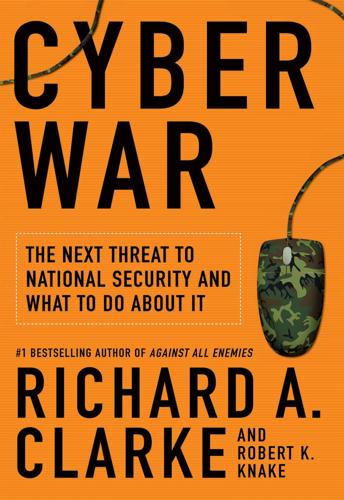
Cyber War: The Next Threat to National Security and What to Do About It
by
Richard A. Clarke
and
Robert Knake
Published 15 Dec 2010
In May 2008, the Senate Armed Services Committee criticized the initiative’s secrecy in a public report, with the comment that “it is difficult to conceive how the United States could promulgate a meaningful deterrence doctrine if every aspect of our capabilities and operational concepts is classified.” Reading that, I could not help but think of Dr. Strangelove when, in the movie of the same name, he berates the Soviet Ambassador for Moscow’s keeping the existence of its nuclear-deterrent Doomsday Machine a secret: “Of course, the whole point of a Doomsday Machine is lost if you keep it a secret! Why didn’t you tell the world?” The reason we are keeping our cyber deterrence strategy secret is probably that we do not have a good one.
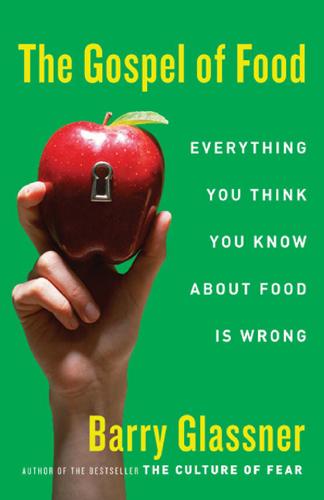
The Gospel of Food: Everything You Think You Know About Food Is Wrong
by
Barry Glassner
Published 15 Feb 2007
When Americans see that word on a food package or in an advertisement, 86 percent of us assume the food is safe, according to a survey conducted by the National Consumers League. We consider anything labeled “natural” to be a pure and healthful gift bestowed by a benevolent Mother Nature. Tell us that something is “artificial,” on the other hand, and we imagine toxic concoctions contrived by venal Dr. Strangeloves. That we think this way is understandable considering all the lethal chemicals, from nerve gas to DDT, created in laboratories over the past century, and the images of pristine landscapes in advertisements for natural foods. Those ads portray nature as gentle, clean, and restorative. The lethal aspects of nature—things like hurricanes, earthquakes, tornadoes, and the HIV virus—never appear in them.5 The absurdity of this conceit is not missed by people in the food business.
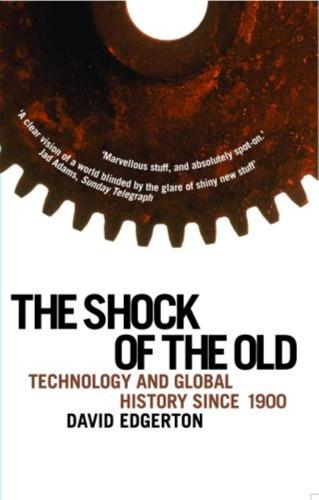
The Shock of the Old: Technology and Global History Since 1900
by
David Edgerton
Published 7 Dec 2006
Wells wrote of the First World War: ‘First the Zeppelin and then the bombing aeroplane carried war over and past the front to an ever-increasing area of civilian activities beyond. The old distinction maintained in civilised warfare between the civilian and the combatant population disappeared.’6 The atomic bomb, the great glory of civilian academic science, went further still – and led to a new kind of war or non-war directed by civilian Dr Strangeloves. 18. Total, global, civilian war. A terrified baby screams, following the Japanese aerial bombardment of the Shanghai South railway station, 28 August 1937. Change in the military, and in war, is seen as driven by civil factors from outside the military. The military, if they are ascribed an ideology at all, are labelled ‘militarists’ a term which implies backwardness, even in fighting wars.
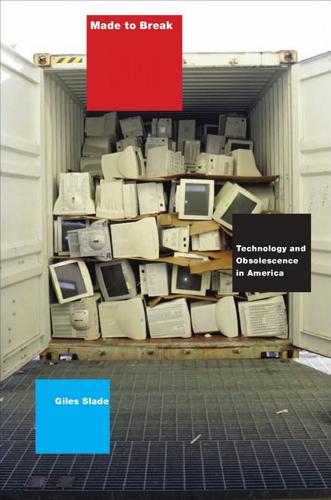
Made to Break: Technology and Obsolescence in America
by
Giles Slade
Published 14 Apr 2006
In the mid 1960s he joined the Hudson Institute and became a colleague of Herman Kahn, himself a cold war original who had “thought about the unthinkable” and put it all down in his chillingly popular analysis,On Thermonuclear War (1961). Kahn was one of two men who inspired Stanley Kubrick’s character Dr. Strangelove in the fil of the same name (the other was Edward Teller). After Nixon became president in 1969, Weiss joined the White House’s Council on International Economic Policy. Having few friends with whom he was truly intimate and trusting, he compartmentalized many aspects of his life.The students he mentored in evening classes at Georgetown University were later surprised to learn that he had been working at the White House for the National Security Council.
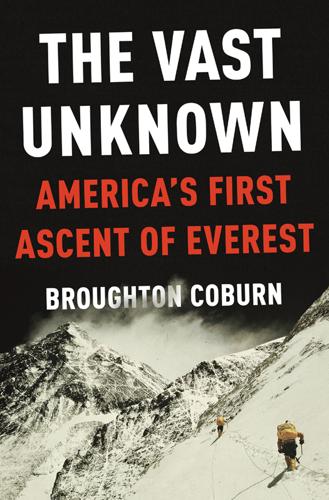
The Vast Unknown: America's First Ascent of Everest
by
Broughton Coburn
Published 29 Apr 2013
LeMay, a National Geographic Society trustee, had extended the air force’s support and some funding to the Everest expedition, and he was curious about Bishop’s views on that part of the world. Specifically, he wanted to hear more about the view from its highest point, looking north. But it wasn’t the scenery that intrigued him. LeMay, the reputed inspiration for General Buck Turgidson—George C. Scott’s unforgettable role in Dr. Strangelove—was a ringleader of America’s missile program. He was increasingly nervous about China’s developments in nuclear warfare and technology, a blind spot in U.S. intelligence. The CIA was aware that China was building a nuclear test facility at Lop Nur, a ten-thousand-square-kilometer dry lake bed a few hundred miles north of the Himalaya.
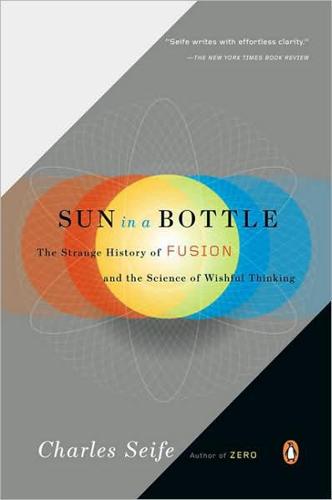
Sun in a Bottle: The Strange History of Fusion and the Science of Wishful Thinking
by
Charles Seife
Published 27 Oct 2009
Science 274 (6 December 1996): 1600. Glanz, James, and Andrew Lawler. “Planning a Future Without ITER.” Science 279 (2 January 1998): 20-21. Goncharov, G. A. “American and Soviet H-Bomb Development Programmes: Historical Background.” Physics-Uspekhi 39 (1996): 1033-44. Goodchild, Peter. Edward Teller: The Real Dr. Strangelove. Cambridge, MA: Harvard University Press, 2004. Gorman, J. G., I. G. Brown, G. Lisitano, and J. Orens. “New Model for Plasma Confinement Times at Stellarators.” Physical Review Letters 22 (6 January 1969): 16-20. Groves, Leslie R. Now It Can Be Told. New York: Da Capo, 1983. Hagerman, D. C., and J.
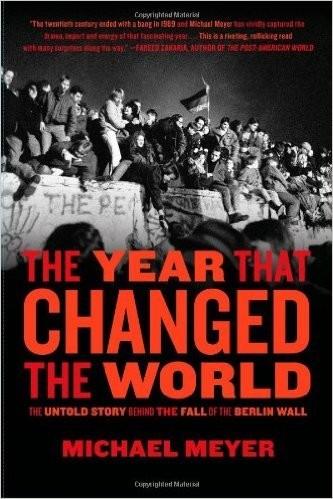
The Year That Changed the World: The Untold Story Behind the Fall of the Berlin Wall
by
Michael Meyer
Published 7 Sep 2009
Everyone knew about the nuclear button, the “hotline” between Washington and Moscow, the briefcase, aka the football, the satchel of nuclear codes that to this day accompanies the president everywhere. The Cold War was hip: James Bond, The Third Man, Graham Greene, John le Carré, Tom Clancy. It was the stuff of pop-culture thrillers and avant-garde films: Z, State of Siege, Dr. Strangelove. It wasn’t enough to be merely American. The best and the brightest were all-American—patriots, not pinkos. The Cold War was counterculture, too. The Generation Gap. The antiwar activists of the Vietnam era. Rock ’n’ roll grew up as a protest song against the Cold War. We told ourselves that we won it.
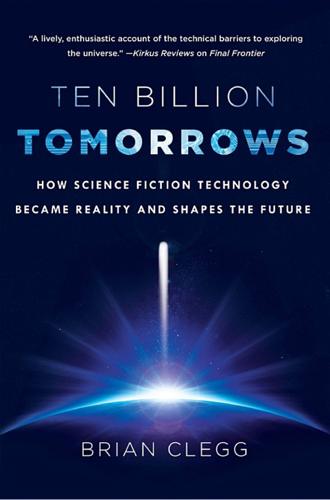
Ten Billion Tomorrows: How Science Fiction Technology Became Reality and Shapes the Future
by
Brian Clegg
Published 8 Dec 2015
Because of politics and fear (and our frustrating lack of ability to create superheroes), the real nuclear world has been very different—but we are at long last getting close to possibility of generating energy from nuclear fusion, the power source of the Sun, and take radiotherapy for granted as part of our medical kit bag. Unlike Dr. Strangelove, we might not have learned to love the bomb, but we have an uneasy truce with nuclear power. But it is a fragile truce, as demonstrated by Germany’s withdrawal from electricity generation by nuclear power after the disaster at the Fukushima plant caused by the tsunami in 2011. Even though that accident happened under conditions that could never occur in Germany, and resulted in no deaths, the Germans were prepared to abandon our best current means of generating energy without greenhouse gas emissions.

Who Is Rich?
by
Matthew Klam
Published 3 Jul 2017
The article more generally assailed our disastrous record of regime change and our role in unleashing extremism. Adam wanted my illustration to connect a possible GOP White House with the neocon wackos hoping to get back into power to pave the Middle East. Big oil, American exceptionalism, party of war. In the sketch Adam picked to go to final, Romney rode a bomb toward Iran, Dr. Strangelove–style, dressed like a Mormon door knocker. I could be happy working as a magazine illustrator. Cartooning, on the other hand, was lonely and difficult, and it savaged my personal life. Mainstream critics loved to talk about a new golden age of comics, and there was more money around and plenty of good work jumping the barriers, but a semiautobiographical story told in arty-farty black-and-white panels of a heterosexual white guy, contemporary daddy under stress, needed a reason for being, a plot, a hook.
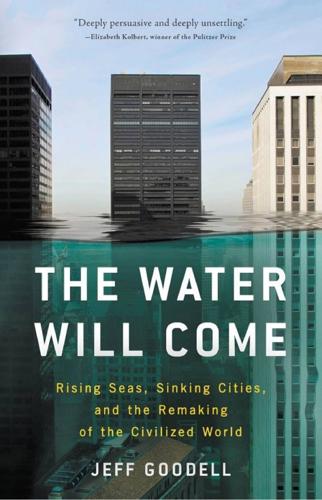
The Water Will Come: Rising Seas, Sinking Cities, and the Remaking of the Civilized World
by
Jeff Goodell
Published 23 Oct 2017
After his tour of the Norfolk base, I joined Secretary Kerry on the flight back to Joint Base Andrews near Washington, DC. The plane, a government-issue refurbished 757 that he shared with other top Obama administration officials, was nowhere near as posh as Air Force One. In fact, Kerry’s compartment had a real Dr. Strangelove feel to it, with a metal desk bolted to the floor and an old (presumably very secure) desk phone. As we talked, Kerry took his coat off and picked at a bowl of fresh fruit, his voice hoarse after a long day. He looked exhausted, his face more drawn than usual—talking with him, it was hard not to feel the weight of the world.

Stealth
by
Peter Westwick
Published 22 Nov 2019
A subset of American fascination with the technological sublime, from intercontinental railroads to moon landings, this tendency often led to dazzling displays of engineering virtuosity, and Stealth was just the latest in this long line.17 Technological spectacles cannot dazzle, however, if they are kept under wraps. As the fictional Dr. Strangelove said of the Soviets’ famous Doomsday Machine, “The whole point… is lost, if you keep it a secret!” In this sense the leaks about Stealth, and the press conference, served an important purpose, one Brown and Perry discussed at the time.18 There is no evidence to suggest that the US revealed Stealth’s existence as part of a campaign to frighten the Soviets (or that the technology itself was part of a sting operation, as some partisans would later claim about Reagan’s Strategic Defense Initiative, also known as Star Wars).

Wired for War: The Robotics Revolution and Conflict in the 21st Century
by
P. W. Singer
Published 1 Jan 2010
It not only predicts and influences the future, but nothing may prepare us better to assess the consequences of a new technology than a field whose very essence is to ask questions about the moral, ethical, and societal dilemmas that new technologies might provoke. As Donna Shirley explains, “Science fiction says ‘what if?’ So, it doesn’t say how exactly you can build the bomb. Instead, it says, if you build this bomb, you are going to get Dr. Strangelove.” [NINE] THE REFUSENIKS: THE ROBOTICISTS WHO JUST SAY NO Never let your sense of morals get in the way of doing what’s right. — ISAAC ASIMOV Illah Nourbakhsh is an associate professor of robotics in the Robotics Institute at Carnegie Mellon University. He is also the military robotics world’s worst nightmare, the scientist who learned to say, “No, thank you.”
…
But soon the men who had made the bomb were shut out of the decisions on how and when to use it, mainly because they wanted limits placed on its military applications. Ultimately, Oppenheimer was forced out of the project, in favor of the more hawkish Edward Teller, the “father of the H-Bomb,” and the inspiration for Peter Sellers’s Dr. Strangelove. Even with their more authoritarian system (where saying no had much worse consequences), the Soviets had similar problems with refusenik scientists. The brilliant physicist Andrei Sakharov was the designer of their first hydrogen bomb. He went on to become an advocate for nuclear disarmament, for which the dissident won the Nobel Peace Prize and was put in prison.
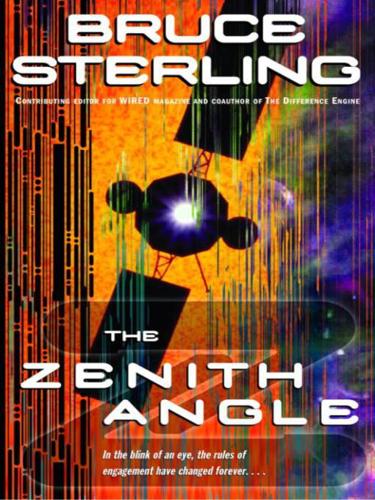
The Zenith Angle
by
Bruce Sterling
Published 27 Apr 2004
They had never breathed a word about the giant warren lurking beneath them. The Vault had huge steel blast doors and its own coal-fired power plant. The coal plant doubled as the Vault’s crematorium, in case anyone died of A-bomb radiation injuries. All the telephones were red plastic with rotary dials, straight off the set of Kubrick’s Dr. Strangelove. The biggest open space in the Vault was a small gym, so the last men on earth wouldn’t go completely bats with jail fever. Van spent a lot of time in the Vault’s gym. He’d become a workout addict in the grim celibacy of Dottie’s absence. His neglected hacker’s body yelled out for attention: decent food, sex, sleep, a long vacation.
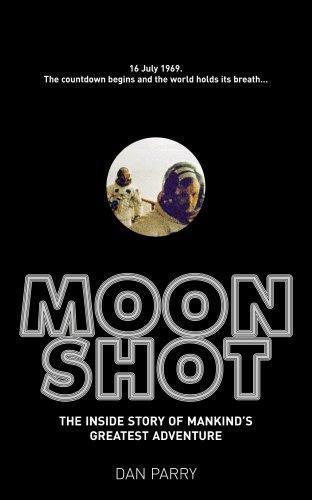
Moonshot: The Inside Story of Mankind's Greatest Adventure
by
Dan Parry
Published 22 Jun 2009
During the January briefing sessions, it was suggested that a small vehicle should be launched into orbit where it should rendezvous with other rockets which would supply it with the fuel for the return trip to the Moon (no existing booster could carry the whole lot into space in one go). This idea, known as earth orbit rendezvous (or EOR), was supported by Dr Wernher von Braun, a rocket engineer from Germany, caricatured by Peter Sellers in the film Dr Strangelove. Von Braun came to be fascinated by the prospect of space travel during his teenage years, and later pursued his interest in rocket engines by designing missiles for the German army during the 1930s. A shrewd political operator, von Braun found it expedient to join first the Nazi party and then the SS, while developing what became the V-2 rocket.7 He also permitted the use of slave labour.
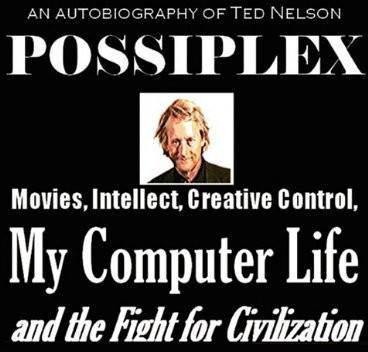
Possiplex
by
Ted Nelson
Published 2 Jan 2010
(Since I worried constantly about World War III, I found this remark somewhat reassuring.) Schelling also gave me a copy of a pocket novel called Red Alert by Peter George, which he said Kubrick was working from-- it was the closest thing to the way a nuclear war might start. Those deliberations of Kubrick, Schelling, Peter George and Terry Southern led to the film “Dr. Strangelove”, which I consider the greatest movie of all time. === 1961 (I was 23) 1961: The shock insight crossing Cambridge Common In a famous incident, Bertrand Russell was walking along tossing a tobacco tin in his hand, and while the tobacco tin was in midair, it occurred to him: ‘My god, the ontological proof is valid!’
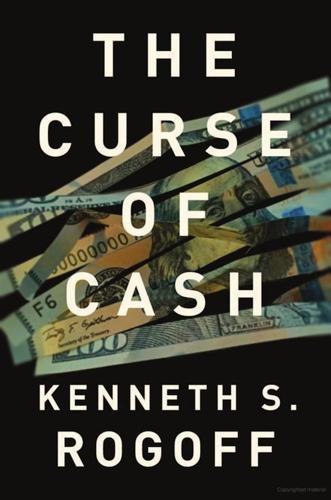
The Curse of Cash
by
Kenneth S Rogoff
Published 29 Aug 2016
When I worked as a young economist at the Board of Governors of the Federal Reserve in the early 1980s, I remember being bemused one day when a few select top officials and governors participated in a mock nuclear attack evacuation. I believe the helicopters were whisking away the Fed’s officials to deep caves in West Virginia, where, in principle, they could continue to keep the nation’s currency system operating. Honestly, it was straight out of Dr. Strangelove. We lowly peons were supposed to follow the instructions in the back of our phone books, which, as I recall, said something along the lines of “hide under your desk and avert your eyes from flashes of bright light.” With all due respect, in such a catastrophe, I sincerely doubt knowing that the head of the Federal Reserve is safe in a cave in West Virginia will make me feel better about having the $60 in my pocket, even if my desk protected me.

Extreme Rambling: Walking Israel's Separation Barrier. For Fun.
by
Mark Thomas
Published 13 Apr 2011
I share my life as a professor for almost the last forty-one years and, at the same time in the Israeli army that I am teaching in the National Defence College, I’m teaching in the Staff and Command College. I am often visiting West Point and other military academies all over the world.’ But for all his qualifications, after an hour in his company I can safely say Soffer is essentially a cross between a cab driver and Dr Strangelove. He peers from behind his dark sunglasses and rails in florid description not normally heard in academia, against all and sundry. In his heavy European accent, he rasps that Israel is a ‘paradise’, that Arabs are ‘flooding in’ and are good for little but ‘tahini and hummus’, the settler leaders are ‘ego maniacs’, their ideas ‘idiotic’, and don’t get him started on Tel Aviv.
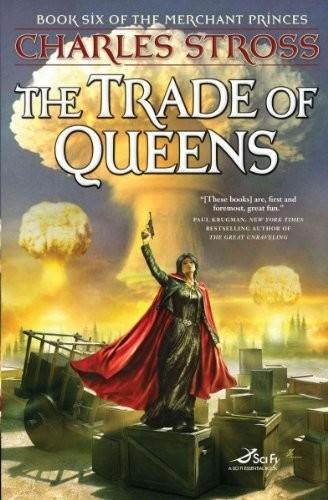
The Trade of Queens
by
Charles Stross
Published 16 Mar 2010
Then the surreal speech by the new president, preposterous claims that had no place in a real-world briefing; he'd thought WARBUCKS was mad for half an hour, until the chairman of the Joint Chiefs came on-screen on CNN, gloomily confirming that the rabbit hole the new president had jumped down was in fact not a rabbit hole at all, but a giant looming cypher like an alien black monolith suddenly arrived in the middle of the national landscape— And then the India-Pakistan war, and its attendant horrors, and the other lesser reality excursions—the Israeli nuclear strike on Bushehr, the riots and massacres in Iraq, China's ballistic nuclear submarine putting to sea with warheads loaded and the tense standoff in the Formosa Strait—and then the looking-glass world had shattered, breaking out of its frame: the PAPUA Act, arrests of radicals and cells of suspected parallel-universe sympathizers, slower initiatives to bring forward a national biometric identity database, frightening rumors about the military tribunals at Guantanamo that had so abruptly dropped out of the headlines— One day, after a couple of apocalyptic weeks, Agent Judt wasn't there anymore. And when a couple of days later the president had his third and fatal heart attack and there was a new president, one who spoke of known unknowns and unknown unknowns and seemed to think Dr. Strangelove was an aspirational role model, there was a new reality on the ground. The country had gone mad, Steve thought, traumatized and whiplashed by meaningless attacks: 9/11 and strange religious fanatics in the Middle East had been bad enough, but what was coming next? Flying saucers on the White House lawn?

The Uninhabitable Earth: Life After Warming
by
David Wallace-Wells
Published 19 Feb 2019
You wouldn’t have to do much in rewrites to Independence Day to reboot it as cli-fi. But, in the place of aliens, who would its heroes be fighting against? Ourselves? Villainy was easier to grasp in stories depicting the prospect of nuclear Armageddon, the intuitive analogy to climate change, which ruled American culture for a generation. That was the whole cartoon of Dr. Strangelove—that the fate of the world sat in the hands of a few insane people; if it all blew up, we’d know exactly who to blame. That moral clarity was not Stanley Kubrick’s, or a projection of his nihilism, but something like the opposite: conventional wisdom about geopolitics in the then-adolescent nuclear age.
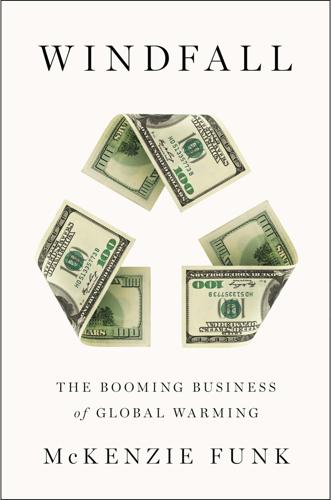
Windfall: The Booming Business of Global Warming
by
Mckenzie Funk
Published 22 Jan 2014
It was a brainchild of the astrophysicist Lowell Wood, Myhrvold’s longtime friend and an associate at IV, who had developed and led the Star Wars program at the Lawrence Livermore National Laboratory (LLNL). The tie-dye-wearing Wood was a protégé of the LLNL’s co-founder Edward Teller, the “father of the hydrogen bomb” who tested his wares in the Marshall Islands and was an inspiration for the character Dr. Strangelove. Wood and Teller had been fellows at the Hoover Institution, the libertarian-conservative think tank housed at Stanford University. In the 1990s, Wood and Teller were among the first to seriously study planet-scale engineering to reverse climate change, which has come to be known as geoengineering.
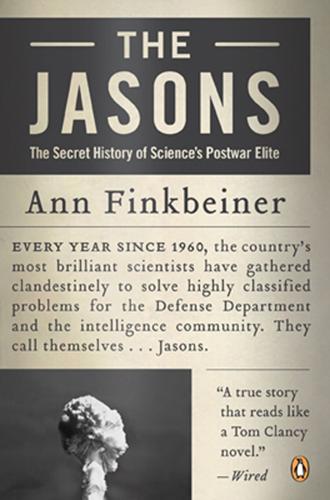
The Jasons: The Secret History of Science's Postwar Elite
by
Ann Finkbeiner
Published 26 Mar 2007
He was credited with convincing President Ronald Reagan to launch the Strategic Defense Initiative, which physicists, impugning its basis in reality, called Star Wars. Teller, physicists thought, could ignore any physics that contradicted his own political beliefs; in fact, they thought he used physics to further his beliefs; they thought he was the original Dr. Strangelove. Because Teller’s reputation was so bad for so long not only among physicists but also among the general public, and because American citizens are aware that theirs was the first country to have built the bomb and the only one to have used it, I wonder whether Edward Teller, whatever else he was, might also have been our collective scapegoat.
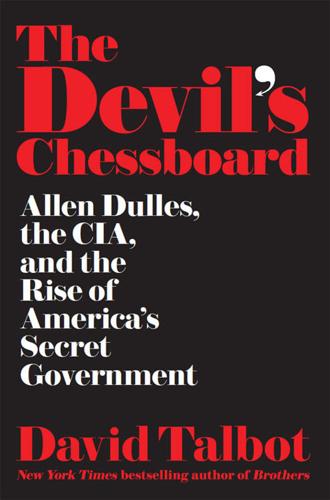
The Devil's Chessboard: Allen Dulles, the CIA, and the Rise of America's Secret Government
by
David Talbot
Published 5 Sep 2016
The German spy chief’s pathological fear and hatred of Russia, which had its roots in Hitler’s Third Reich, meshed smoothly with the Dulles brothers’ anti-Soviet absolutism. In fact, the Dulles policy of massive nuclear retaliation bore a disturbing resemblance to the Nazis’ exterminationist philosophy—a link that would be darkly satirized in Stanley Kubrick’s 1964 film Dr. Strangelove, with its Führer-saluting doomsday scientist. No other cultural artifact of the period captures so perfectly the absurd morbidity of the Cold War, and its Wagnerian lust for oblivion. We live “in an age in which war is a paramount activity of man,” Gehlen announced in his memoir, “with the total annihilation of the enemy as its primary aim.”
…
Douglas, 3, 170, 199, 364, 371, 377, 379–80, 441, 549, 551, 560, 583–85 Dillon, Phyllis, 551 Dillon investment bank, 146 DiMaggio, Joe, 267 DiMaggio, Tom, 267 DINA (Chilean Gestapo), 106 Directorio Revolucionario Estudiantil (DRE), 540–41 Division D, 470–71 Doctor Zhivago (Pasternak), 434 Dolce Vita, La (film), 116 Dollmann, Eugen, 85–86, 92, 94–109, 112–16 Dominican Republic, 248, 316–28 Dongo, Italy, 75 Donovan, Robert J., 576–77, 585 Donovan, William “Wild Bill,” 17–18, 21, 35, 67, 67–69, 132, 144–46, 508, 552 Doolittle, James H., 249 Doolittle Report, 249 Dos Passos, John, 432 Douglas, Helen Gahagan, 172 Douglas, William O., 23–25 Douglass, James W., 9 Drain, Richard, 394–97 Dr. Strangelove, 278 Duke, Doris, 319 Dulles, Allen Welsh (AWD). See also Central Intelligence Agency affairs and, 16, 121–22, 135, 236 affair with Mary Bancroft, 119–22, 128–36, 139–39, 595–96 Angleton and, 97, 333–37, 619–20 anti-Castro network and, 454–55, 462 anti-Communism and, 54, 190, 365–66 anti-JFK actions of, post-retirement, 7, 456–62 anti-Semitism and, 45–46 Artichoke and, 291 assassinations and, 203, 248 Bay of Pigs and, 1–2, 5–7, 369–70, 393–412, 449–50, 496, 601 Bruce-Lovett report and, 251 Bundy and, 373 Castro and, 340–41, 345–47, 351 CFR and, 69–70, 145, 550 Chancellor interview of, 485–86, 550 childhood of, 37–40 children’s relationship with, 127, 136 CIA creation and, 145–46 CIA cultural wars and, 330 CIA headed by, 4–5, 93, 193, 203–5, 210, 297 as CIA number two man, 186–87 CIA oversight and, 249–50, 336 Clover’s relationship with, 119–20, 125–30, 139–40, 358–59 Columbia University and, 326 crimes of, 10 Dallas trip of October 1963, 487–88, 539 daughter Joan and, 125, 126, 136–40 daughter Toddie and, 125 death of, 314, 602, 616–17, 619 de Gaulle and, 414–17, 422–23 democracy and, 3–4 de Mohrenschildt and, 530 Dillon and, 551 Donovan and, 17–18, 21, 144–45 Doolittle Report and, 249 Dulles-Jackson-Correa Committee and, 147 election of 1948 and, 145–48 election of 1952 and, 203–4 election of 1960 and, 162, 367–70 European delegation of 1947 and, 160 executive actions and, 549–51 “Farm” and, 546–47 FDR and, 4–5, 21, 23, 25 Fields and Splinter Factor and, 143–44, 150–58 finances of, 82–83, 304 Galíndez and, 323–29 Garrison and, 596–97, 614–15 Gehlen and, 269–71, 274–86, 615 global politics and, 4 Guatemala and, 238, 251–66 Harvey and, 469–70 health problems and, 592–93, 615 Himmler peace feelers and, 77 Hitler and, 20, 334 Holocaust and, 33, 46–47, 50–57 Howard Hunt and, 449–50, 505, 509 Ike and, 5, 193, 200, 243, 247–51, 365–67, 553 Iran and, 138, 228–42 Italy and, 147, 467–68 JFD’s death and, 364–66 JFD’s relationship with, 209–12, 216, 249 JFK and, 1–8, 90, 356–60, 367–76, 387, 399–408, 438–43, 449–50, 467–68 JFK assassination and, 8–9, 503–5, 528–30, 545–51, 560, 564, 568–75, 586 JFK fires, 5, 284, 407–8, 424–28, 441–42 John and, 279–80 Jung and, 121–22, 133 Kirkpatrick Report and, 409–11 Kronthal and, 297–300 LBJ and, 493–94, 503–4, 572, 585 legacy of, 9–11, 617 Luce and, 236–37 Lumumba and, 377–83, 386, 389 Maheu and, 324–26 Malaxa and, 186–91 marries Martha Clover Todd, 4, 122–25 Marshall Plan and, 160 McCarthy and, 205, 209, 215–24, 226 media and, 431–32, 442–43, 597–98 mind control and, 287–91, 304–7, 614–15 National Committee for a Free Europe and, 148–49 National Security Medal, 426 Nazis and, 15, 18, 20–21, 23, 26–36 Nazi double agent Gisevius and, 134 Nazi funds and, 28, 148, 162 Nazi intelligence and, 269 Nazi peace feelers and, 30–36, 77 Nazi ratlines and, 4–5, 69–70, 73–93, 97–98, 112–13, 115 Nixon and, 160–63, 165, 168–71, 173, 176, 179, 185–93, 368–70, 402–3, 615–16 Nuremberg trials and, 57, 67–70 “Old Man” nickname, 144 OPC and, 148–40 OSS and, 16, 21, 144, 157–58 Oswald and, 520, 522, 524, 581–84 Paine and, 536–39, 543–545 personality of, 9, 38–41, 120, 122, 125–26, 135–36, 139–40 Phleger and, 165 Pius XII and, 97 post-resignation reign of, 7, 428, 443, 447–50, 454–58 postwar Europe and, 54, 97 postwar Germany and, 29, 69–70 power elite and, 68, 195, 197–99, 358–59, 551 psychological warfare and, 54 publishes Craft of Intelligence, 484–87 publishes Great Spy Stories, 615–16 publishes memoir Secret Surrender, 406, 593, 601–2 Republican primary campaign of 1938 and, 352–53 RFK and, 369, 606, 610, 613–15 Rockefellers and, 551–54 Schlesinger and, 431–34, 438–43, 600–602 secret power of, 3, 9–10 Sierra meeting of April 1963, 7–8 sister Eleanor and, 38–39 sister Nataline and, 39 son Allen Jr. and, 125, 300–307, 310–15, 356 Sullivan and Cromwell and, 3–4, 82–83, 144–45 Sunrise and, 76–94, 97–98, 109, 113–14, 116 Switzerland and, 18, 25–28, 52–54, 127–29 Taylor Committee and, 408–9 Third World plan and, 422 Trujillo and, 323–28 Truman and, 5, 97, 146–50, 569–72 Turkey and, 45–46 U-2 and, 366, 370, 401 UCLA and, 587–89 underground homosexual network and, 132–33 United Fruit and, 260 USSR and, 4–5, 146 U.S.

Clan Corporate
by
Stross, Charles
Published 28 Aug 2006
All the buildings seemed to have razor-wire fences around them and gigantic white domes sprouting from their roofs. A head popped out from around a corner. “This way, please.” Herz led the group as they filed through the door, informatively labeled room 2b8020. Behind the door, Mike blinked with a moment of déjà vu, a flashback to the movie Dr. Strangelove. A doughnut-shaped conference table surrounded by rose-colored chairs filled the floor at the near end of the room, but at the other end a series of raised platforms supported a small lecture theater of seats for an audience. Large multimedia screens filled the wall opposite. “If you’d all take seats in the auditorium, please?”
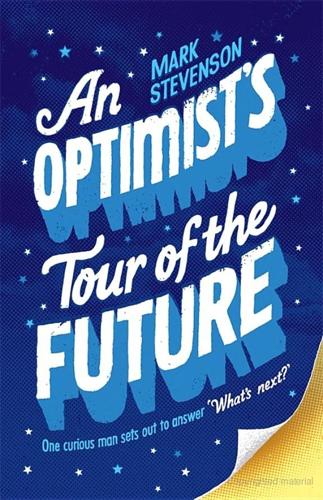
An Optimist's Tour of the Future
by
Mark Stevenson
Published 4 Dec 2010
Sure, I would welcome a cure for Huntington’s disease, and giving sight to the formerly blind seems only fair for those who want it. But I’m less sure about builtin night vision for soldiers. Gasoline without digging up fossil fuels? Bring it on! Then again, surely there’s a whole new class of biological weapons in the chest too? Suddenly my mind conjures up a strange mix of Dr Strangelove and 28 Days Later. George is in the middle of the wasteland, decimated by rampant genetically engineered bugs that have destroyed the biosphere, leaving only him and the man who does movie voice-overs alive. ‘If only he’d known …’ he says, as the sun sets on a dead world. I’m also reminded of my chat with Nick Bostrom in Oxford.
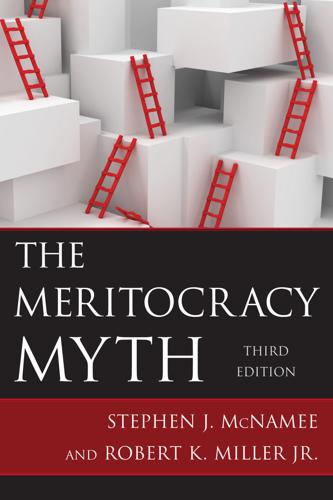
The Meritocracy Myth
by
Stephen J. McNamee
Published 17 Jul 2013
The media have contributed to the stereotyping of people with disabilities, often treating them with a mixture of pity and fear. For example, some nationwide charity telethons have unwittingly contributed to negative images of the disabled as being childlike, dependent, and nonproductive. In literature and film, evil characters with disabilities—Captain Hook, Dr. Strangelove, and Freddy Krueger—sometimes imply that disability is a punishment for evil. In short, the stigmas attached to disability and the discrimination imposed on people with disabilities are widely institutionalized and often become a greater handicap than the disability itself. World War II and the Korean, Vietnam, Gulf, Iraq, and Afghanistan wars have produced thousands of disabled veterans.
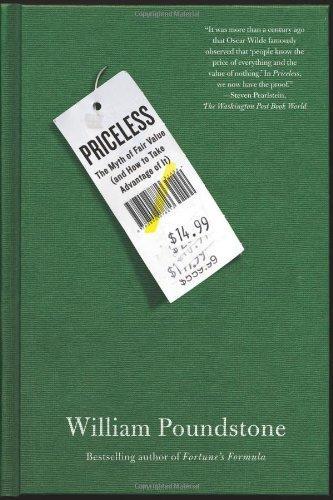
Priceless: The Myth of Fair Value (And How to Take Advantage of It)
by
William Poundstone
Published 1 Jan 2010
Edwards later claimed that landing the Air Force job was the most fortunate thing that ever happened to him. It exposed him to a constant stream of decision-making problems. Edwards once visited NORAD, the nuclear defense command center in Colorado Springs. He was curious to see how some of the world’s most momentous decisions got made. Edwards was ushered into the command center, dominated by a Dr. Strangelove map displaying military information collected from distant early warning radar and ships at sea. In those pre-Google days, the volume of real-time information was mesmerizing. Edwards asked the officer escorting him what was done with all that information. His escort pointed to a red telephone, apparently a direct line to the White House.

Lonely Planet's Best of USA
by
Lonely Planet
Classic American Films Western High Noon (1952), Fred Zinnemann The Searchers (1956), John Ford Musical 42nd Street (1933), Lloyd Bacon Singin’ in the Rain (1952), Stanley Donen and Gene Kelly Gangster The Maltese Falcon (1941), John Huston The Godfather trilogy (1972–90), Francis Ford Coppola Goodfellas (1990), Martin Scorsese Pulp Fiction (1994), Quentin Tarantino Drama Gone with the Wind (1939), Victor Fleming Citizen Kane (1941), Orson Welles Rear Window (1954), Alfred Hitchcock Rocky (1976), John Avildsen Comedy The Gold Rush (1925), Charlie Chaplin Some Like It Hot (1959), Billy Wilder Dr Strangelove (1964), Stanley Kubrick Annie Hall (1977), Woody Allen Survival Guide DIRECTORY A–Z Accommodations Customs Regulations Climate Discount Cards Food Electricity Gay & Lesbian Travellers Health Insurance Internet Access Legal Matters Money Opening Hours Public Holidays Safe Travel Telephone Time Tourist Information Travellers with Disabilities Visas Volunteering Women Travellers TRANSPORT Getting There & Away Getting Around FRANCESCO RICCARDO IACOMINO / GETTY IMAGES © Directory A–Z Accommodations For all but the cheapest places and the slowest seasons, reservations are advised.
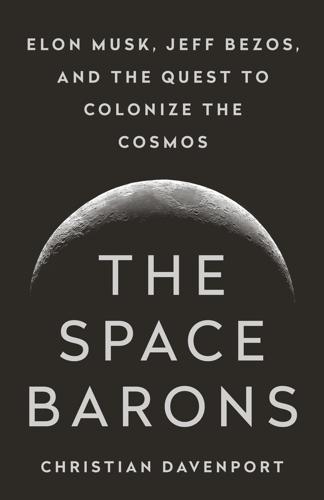
The Space Barons: Elon Musk, Jeff Bezos, and the Quest to Colonize the Cosmos
by
Christian Davenport
Published 20 Mar 2018
Thankfully, after studying it for years, the astronomers were able to get a more accurate read of the arc of Apophis’s orbit and determined, to their great relief, that though it would still streak closely by in 2029, it would not hit Earth seven years later. So, no worries for now. Even if it remained an unlikely event, NASA still deemed it important to monitor the cosmos for danger. There’s even a specific staff assigned to the task, called the Planetary Defense Coordination Office. It sounds like something out of Dr. Strangelove, but it finds and catalogs about 1,500 new near-Earth objects a year, each of which could cause extensive damage if they were to hit Earth. In the history of the galaxy, the human race has been around for a tiny fraction of time, a mere blink. Life and the rare gift of consciousness did not come with a guarantee that it would continue forever.

Brotopia: Breaking Up the Boys' Club of Silicon Valley
by
Emily Chang
Published 6 Feb 2018
In 2007, then CEO Eric Schmidt apparently dated tech publicist Marcy Simon, while she was doing marketing work for Google. Then, in the long, hot summer of 2013, executive chairman Eric Schmidt was outed by the Daily Mail, a U.K. tabloid, as having had numerous extra marital affairs with younger women, including a female television personality who gave him the nickname “Dr. Strangelove.” Valleywag, a tech industry gossip blog, followed up with a story claiming that Schmidt’s New York apartment was a love nest that had been soundproofed. A month later, news broke that Brin, then forty, was having an affair with a junior employee on his Google Glass team named Amanda Rosenberg.

The AI Economy: Work, Wealth and Welfare in the Robot Age
by
Roger Bootle
Published 4 Sep 2019
Stanislav Petrov was sacked for disobeying orders and lived the rest of his life in drab obscurity. (That was the Soviet Union for you.) Could we imagine entrusting the sort of judgment that Petrov made to some form of AI? This conjures up the scenario depicted in the now very old but still rewarding film Dr. Strangelove, starring Peter Sellers, in which, once the USA has embarked on a nuclear attack, it is impossible to stop it from going ahead. The system takes over and will not respond to attempted human intervention. Further problems Safety concerns and issues about legal liability pose serious obstacles.
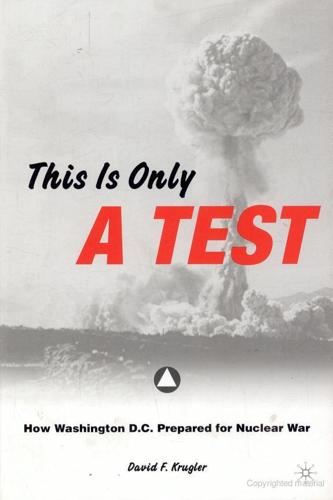
This Is Only a Test: How Washington D.C. Prepared for Nuclear War
by
David F. Krugler
Published 2 Jan 2006
In November 1949, a 22 kiloton bomb “detonated” 1,800 feet above the city; on June 29, 1950, two bombs exploded, one near the Capitol, the other above 11th Street SE, killing 80,000 residents and injuring 64,000; on December 12, 1952, the targets were downtown Washington and the Pentagon; downtown again on June 15, 1955; and on May 6, 1958, one-megaton bombs hit Andrews Air Force Base and National Airport. Picture these fictional detonations as the montage that ends the film Dr. Strangelove, a morbid ballet of nuclear explosions proving T.S. Eliot wrong.3 During the 1950s, such mock attacks were an annual event in Washington, making it the most bombed city in the Cold War American imagination.4 Why? *** Washington’s status as the nation’s capital was the first reason. Note that the Joint Chiefs totted up casualties for federal workers, not city residents; among the former were senior administrative personnel, both military and civilian, essential to mobilizing the nation’s population, resources, and economy for war.
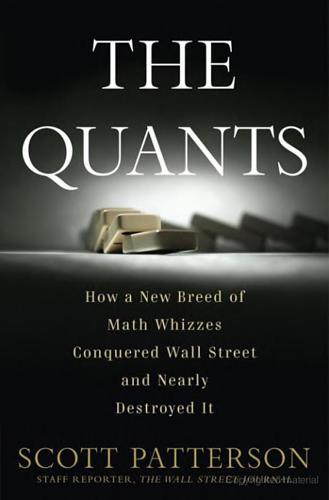
The Quants
by
Scott Patterson
Published 2 Feb 2010
“Bubble Logic: Or, How to Learn to Stop Worrying and Love the Bull” is a quant’s cri de coeur, Asness’s protest against the insanity of prices ascribed to dot-com stocks such as Theglobe. The stock market’s price-to-earnings ratio hit 44 in June 2000—more than doubling in just five years and triple the long-term average. The title’s nod to Stanley Kubrick’s black-humor satire of the Cold War, Dr. Strangelove, or, How I Learned to Stop Worrying and Love the Bomb, gives a clue to Asness’s dark mood as he banged away at “Bubble Logic” late at night from the confines of AQR’s offices near Rockefeller Center (the fund later moved to Greenwich, Connecticut). The bubble was about as welcome to Asness as an atomic bomb.

The Upstarts: How Uber, Airbnb, and the Killer Companies of the New Silicon Valley Are Changing the World
by
Brad Stone
Published 30 Jan 2017
They installed a light-dappled atrium with a twelve-hundred-square-foot vertical “green wall,” made up of hundreds of plants spanning three floors, and outfitted a dozen conference rooms to look like Airbnb listings in Milan, Paris, Denmark, and elsewhere. Another conference room was modeled after the founder’s original apartment on Rausch Street, while a larger meeting space was converted into an exact replica of the war room in the Stanley Kubrick film Dr. Strangelove, complete with a circular table under a ring of Cold War–era overhead lighting. No expense was spared in Airbnb’s new office. There were pricey aluminum Emeco chairs, gold-plated tableware from a local ceramics boutique, and a gourmet kitchen that served three meals a day, seven days a week.
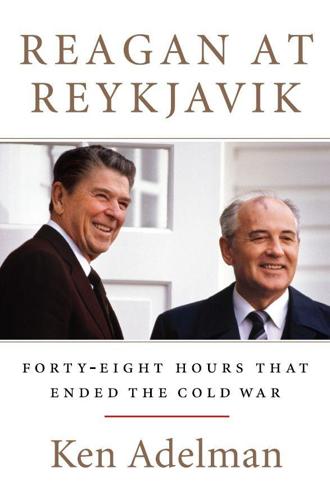
Reagan at Reykjavik: Forty-Eight Hours That Ended the Cold War
by
Ken Adelman
Published 5 May 2014
He was given the usual VIP dog and pony show and heard what thousands before him had heard. Yet he saw things differently. Visitors to NORAD walked through gigantic steel doors, some five feet thick, to access the granite core of Cheyenne Mountain. After touring the facility, Reagan was led into something out of Dr. Strangelove, a room with massive screens on the walls to track Soviet ballistic missiles that might have been launched. The NORAD brass was accustomed to visitors then leaving wowed. Yet Reagan began leaving perplexed. So he stopped and asked the commanding general, James Hill, just what would happen if those big panels ever did light up.
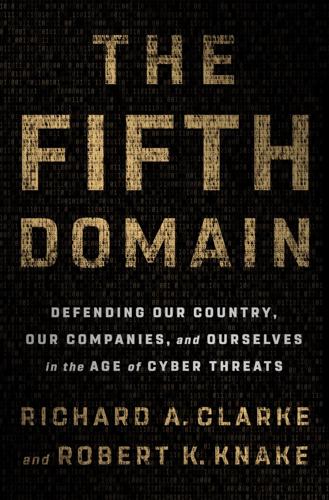
The Fifth Domain: Defending Our Country, Our Companies, and Ourselves in the Age of Cyber Threats
by
Richard A. Clarke
and
Robert K. Knake
Published 15 Jul 2019
And maybe deterrence will work, and maybe we can secure the existing grid with retrofits, but it would be nice to have a plan B in case deterrence fails and we cannot get all of the power companies to secure their networks. We don’t really have a plan B today, and that contributes to crisis instability. There is probably greater uncertainty on our part about what destruction they can do to us than there is uncertainty on their part about that same question. As Dr. Strangelove might have said, “Vee need to close the uncertainty gap.” We can do that by stepping up our cyber defenses on the power grid and causing the Russians and others to be uncertain what the effect would be if they tried a major attack. What would a plan B look like? It would be a secure, segmented, diverse-source microgrid (SSDM) program, with some microgrids completely federally funded and some built with incentives from the federal government.
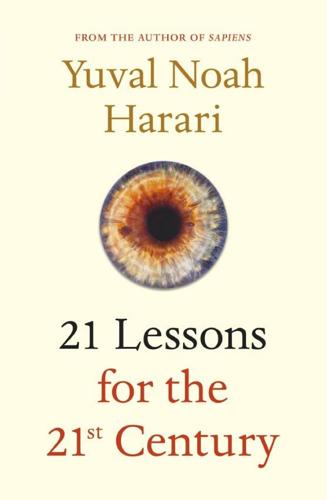
21 Lessons for the 21st Century
by
Yuval Noah Harari
Published 29 Aug 2018
Russia and the USA have recently embarked on a new nuclear arms race, developing novel doomsday machines that threaten to undo the hard-won gains of the last decades and bring us back to the brink of nuclear annihilation.4 Meanwhile the public have learned to stop worrying and love the bomb (as suggested in Dr Strangelove), or have just forgotten about its existence. Thus the Brexit debate in Britain – a major nuclear power – revolved mainly around questions of economics and immigration, while the vital contribution of the EU to European and global peace has largely been ignored. After centuries of terrible bloodshed, French, Germans, Italians and Britons have finally built a mechanism that ensures continental harmony – only to have the British public throw a spanner into the miracle machine.

Website Optimization
by
Andrew B. King
Published 15 Mar 2008
In this section, we will establish a working vocabulary in the metrics that impact load times. We will show how to baseline your pages using the best tools available today, and we will leave you with some advice in managing the numbers. Keeping Score I mean, he'll see everything, he'll…he'll see the Big Board! —George C. Scott in Dr. Strangelove One thing you'll take away from this section is that you need to keep score. You need a big board to point to. Maintain a tracking spreadsheet or scorecard. This lets you effectively manage the progress of your changes. You can then do some competitive analysis and see how much you have improved.

Digital Disconnect: How Capitalism Is Turning the Internet Against Democracy
by
Robert W. McChesney
Published 5 Mar 2013
And we’ve broken faith with some of the best advice the founders ever gave us.207 In the last decade, federal spending on intelligence has ballooned some 250 percent to around $100 billion annually, though most of the intelligence budgets are secret, so the best one can do is guess. The national security state has gone places Stanley Kubrick and Terry Southern could have barely imagined when they wrote the screenplay for Dr. Strangelove. In 1995 the government classified 5.6 million documents; in 2011 it classified 92 million documents. Or consider this: in 1996 the government declassified (i.e., made public) 196 million pages of documents; in 2011 it declassified just under 27 million pages. The U.S. government spends, by conservative estimate, $13 billion annually to make and keep secret government information.208 As Fareed Zakaria puts it: Since September 11, 2001, the U.S. government has created or reconfigured at least 263 organizations to tackle some aspect of the war on terror.
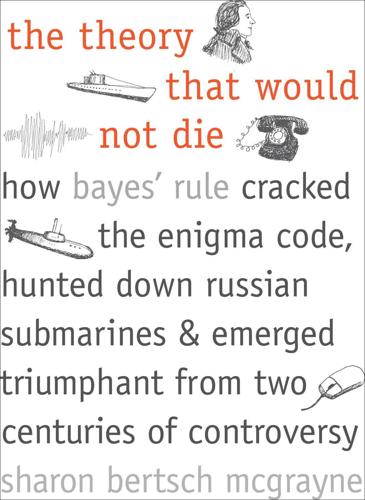
The Theory That Would Not Die: How Bayes' Rule Cracked the Enigma Code, Hunted Down Russian Submarines, and Emerged Triumphant From Two Centuries of Controversy
by
Sharon Bertsch McGrayne
Published 16 May 2011
LeMay had directed the fire-bombing of Japanese cities during the Second World War, his ghostwritten autobiography would propose bombing the Vietnamese “back into the Stone Age” in the mid-1960s, and he was the model for “Buck” Turgidson, the insanely warlike, cigar-chomping general played by George C. Scott in the film Dr. Strangelove. Iklé described LeMay’s attitude about nuclear weapons as one of “injudicious pugnacity.”18 But the general surprised him. The day after RAND presented its report in Washington, LeMay asked for a copy. Iklé said LeMay later issued a “blizzard” of orders, among others calling for the two-man rule and coded locks.

Machines of Loving Grace: The Quest for Common Ground Between Humans and Robots
by
John Markoff
Published 24 Aug 2015
During a crucial period from 1975 to 1985, artificial intelligence research was overwhelmingly funded by the Defense Department. Some of the nation’s most notable computer scientists—including Winograd—had started to worry about the increasing involvement of the military in computing technology R & D. For a generation who had grown up watching the movie Dr. Strangelove, the Reagan administration Star Wars antimissile program seemed like dangerous brinkmanship. It was at least a part of Winograd’s moral background and was clearly part of the intellectual backdrop during the time when he decided to leave the field he had helped to create. Winograd was a self-described “child of the ’60s,”18 and during the crucial years when he turned away from AI, he simultaneously played a key role in building a national organization of computer scientists, led by researchers at Xerox PARC and Stanford, who had become alarmed at the Star Wars weapons buildup.

Merchants' War
by
Stross, Charles
Published 30 Sep 2007
And it wasn't as if some prankster had tried to draw attention to the lockup: quite the opposite, in fact. "Like hell. That thing had fins like a fifty-six Caddy. I swear I was expecting to see Slim Pickens riding it down..." Don poured a dose of evil-looking coffee into a cup and passed it to her. "Think it'll go off?" "Not now," Judith said with a confidence she didn't feel. "Dr. Strangelove and his merry men are going over it with their stethoscopes." There was a chair in front of one of the panels of blinkenlights and she sat down on it. "But something about this whole setup feels wrong." Her earphone bleeped, breaking her out of the introspective haze. "Yes?" she asked, keying the throat pickup.

The Long History of the Future: Why Tomorrow's Technology Still Isn't Here
by
Nicole Kobie
Published 3 Jul 2024
‘What’s more, arson occurred primarily in already burned-out, abandoned buildings – after all, it made more sense to torch a building without rent-paying tenants than one that had at least some revenue coming in.’7 He didn’t necessarily invent everything, but took on smart ideas like a steel bar called a Halligan that made it easy to get into buildings, eye shields for helmets, a U-pipe for getting water into high-rises, and a jaws-of-life-style saw. He also helped develop an infrared system for spotting fire in walls.8 A few facts about RAND: yes, it does stand for ‘R and D’ – as in, research and development; additionally, it was the model for the BLAND Corporation in Dr Strangelove, and is widely considered to be the first think tank.9 Shannon Mattern notes in her book A City Is Not a Computer that the word ‘dashboard’ was first used in 1846 in reference to a board at the front of carriages that kept mud from being kicked into the cab by horses. It didn’t begin to mean a display screen until 1990, though did refer to speedometers and other car dials before then.10 Adam Greenfield in Against the Smart City notes one thing the Cybersyn project did get right: it not only included the rights of citizens to be stakeholders in decision-making, but acknowledged that the control system belonged to el pueblo – the people – and that they should have access to it.
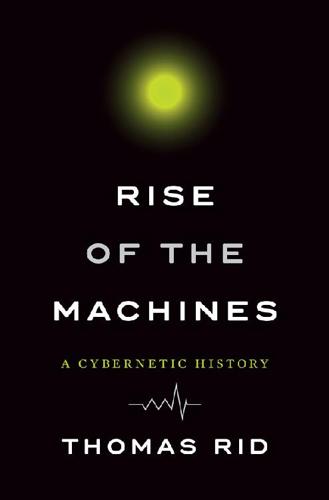
Rise of the Machines: A Cybernetic History
by
Thomas Rid
Published 27 Jun 2016
The US Air Force’s response to the Soviet bomber threat was theSemi-Automatic Ground Environment (SAGE), which logged the course, speed, altitude, and location of all aircraft flying over North America at any given moment. The first sector at McGuire Air Force Base near Trenton, New Jersey, became operational in July 1958. One of SAGE’s many innovations was the light gun, a new input device and ancestor of the touch screen. SAGE was an inspiration for science fiction; the war room in Stanley Kubrik’s Dr. Strangelove is one example. The interior of SAGE Combat Center CC-01 at Hancock Field, New York. Fear of push-button war and of losing labor to machines was ripein the 1950s, as Leslie Illingworth’s “Friend or Foe?” cartoon in theJune 29, 1955, issue of Punch magazine intimates. Copyright Punch Limited.
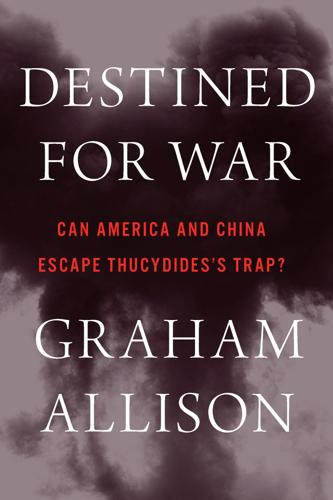
Destined for War: America, China, and Thucydides's Trap
by
Graham Allison
Published 29 May 2017
Hacking a military target, for example, could inadvertently disable a system used by a medical or financial complex. While American cyber commanders repeatedly affirm that in cyber offense, the US has the biggest rocks, they also acknowledge that the US lives in the glassiest house. In the 1960s, futurist Herman Kahn (one of the Cold War strategists parodied by Peter Sellers’s movie character Dr. Strangelove) proposed a 44-rung escalation ladder from “subcrisis maneuvering” up to full-scale nuclear war.27 Kahn’s first rung was the “ostensible crisis”—the spark. He explained that in a crisis, two powers would rarely proceed methodically and incrementally up the ladder. Background conditions and accelerants could cause them to skip rungs.
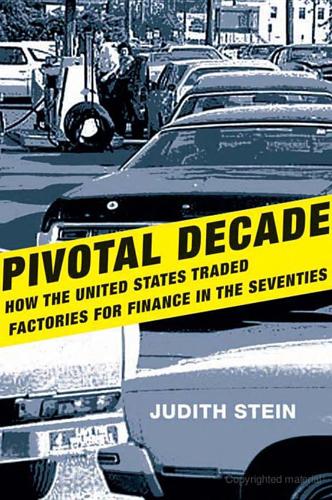
Pivotal Decade: How the United States Traded Factories for Finance in the Seventies
by
Judith Stein
Published 30 Apr 2010
He shrewdly embraced FDR, Truman, and Kennedy, claiming that, between him and Carter, he was the real Democrat. Both men did well at the October 28 presidential debate, but Carter needed to demonstrate that Reagan was a frightful warmonger. A Carter aide admitted, “Since he [Reagan] didn’t walk out on stage and act like Dr. Strangelove, it was a boost [for Reagan].”161 For his part, Reagan simply asked the electorate whether the people and the country were better of than they were four years ago.162 The media make most elections horse races at the very end, but the results of November 4 were never in doubt. Reagan’s victory was substantial.
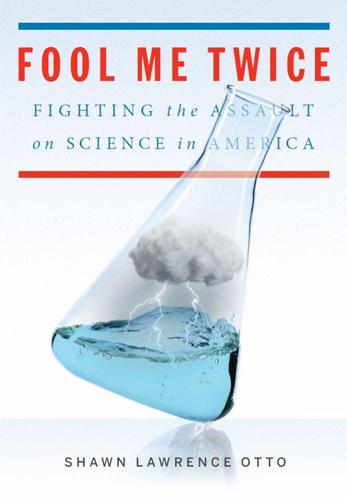
Fool Me Twice: Fighting the Assault on Science in America
by
Shawn Lawrence Otto
Published 10 Oct 2011
“But just to keep things in balance there is a widespread feeling among our young people that no one over 30 understands them.”14 These baby boomers, feeling powerless, needed an outlet for their anger and moral distrust of the older generation, so they adopted the protest songs of folk music. Singer-songwriter Bob Dylan became an overnight sensation, the “poet to a generation.”15 Satire became a dominant cultural art form, lampooning all kinds of authority for its hypocrisy and failure. The Graduate, Catch-22, One Flew Over the Cuckoo’s Nest, MAD magazine, Dr. Strangelove, Saturday Night Live, and many other satirical cultural touchstones were fueled by rage against the dominant culture. The hilarious, humanitarian, childlike but darkly pessimistic novels of Kurt Vonnegut Jr. became runaway hits. In 1970, Vonnegut gave a commencement address at Vermont’s Bennington College in which he famously said, “Everything is going to become unimaginably worse and never get better again.”16 He cautioned the baby boomers that “we would be a lot safer if the Government would take its money out of science and put it into astrology and the reading of palms.
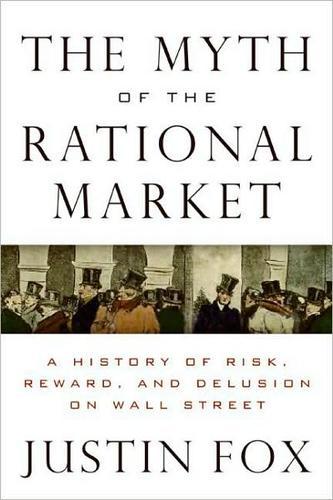
The Myth of the Rational Market: A History of Risk, Reward, and Delusion on Wall Street
by
Justin Fox
Published 29 May 2009
He helped plan the Battle of the Atlantic, design the atomic bomb, and invent the computer. In the late 1950s, dying of bone cancer likely brought on by witnessing one too many atomic test blasts, he peddled his doctrine of nuclear brinksmanship while rolling his wheelchair down the halls of power in Washington—providing at least part of the inspiration for Stanley Kubrick’s Dr. Strangelove. In the world of economists, von Neumann played the role of alien from a vastly more advanced species, alighting briefly to share his knowledge. A paper he wrote in the early 1930s on the mathematics of economic equilibrium utterly reshaped discussion of the subject.5 The intellectual revolution unleashed by the paper he wrote about poker strategy in 1928 may have been even more significant.
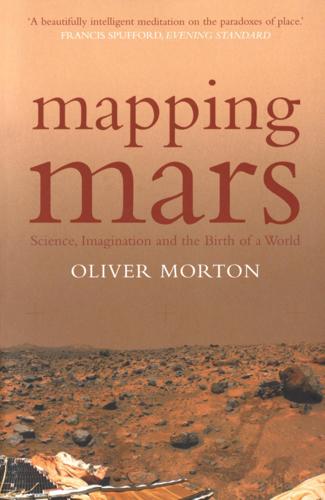
Mapping Mars: Science, Imagination and the Birth of a World
by
Oliver Morton
Published 15 Feb 2003
Simply heating the surface and waiting is not an option: Because the rocks are cold and heat takes a long time to diffuse, it would take more than a million years for the top two miles of the planet to thaw out, and a large part of the water is probably a fair bit deeper than that. The only way of melting that water that we can easily imagine is through the use of nuclear explosives in numbers that would make Dr. Strangelove quail—vast fallout-free hydrogen bombs made from Mars’s reasonably copious supplies of deuterium. According to Martyn Fogg’s authoritative book Terraforming: Engineering Planetary Environments, something between a hundred million megatons and ten billion megatons of nuclear explosives would be required to release a serious ocean if it were frozen solid (if it were liquid under a cap of ice, things get much easier).* While we’re on the subject, nuclear explosives might also help with the nitrogen.
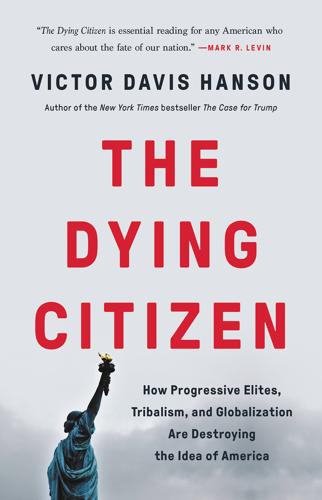
The Dying Citizen: How Progressive Elites, Tribalism, and Globalization Are Destroying the Idea of America
by
Victor Davis Hanson
Published 15 Nov 2021
Comey seemed to have little clue that a constitutional republic cannot function when its highest law enforcement officers simply will not or cannot answer simple questions under oath about their own purportedly illegal conduct.41 As unelected bureaucrats, those in the military-intelligence complex often show little appreciation of elected officials—much less realization that they themselves are appointed fixtures of the state. The deep state gains legitimacy only through appointment, while elected officials do so only through the voters. In popular American mythology, far-fetched stories of military coups, rogue officers, and revolts are common and often subjects of Hollywood movies like Seven Days in May, Dr. Strangelove, The Rock, and Taps—perhaps because heretofore such attempts have been rare or nearly nonexistent in the history of the American republic and are not periodic dangers. It is an American conceit that “tin-horn dictators” in Latin America who take power through coups and “strongmen” in the Arab world who assassinate their way to power or rig elections reflect extraconstitutional agendas impossible in the United States.

Surveillance Valley: The Rise of the Military-Digital Complex
by
Yasha Levine
Published 6 Feb 2018
Igloo White was like a giant wireless alarm system that spanned hundreds of miles of jungle. As the US Air Force explained: “We are, in effect, bugging the battlefield.”50 John T. Halliday, a retired air force pilot, described the Igloo White operation center in Thailand in his memoir. “Remember those huge electronic boards from the movie Dr. Strangelove that showed Russian bombers headed for the U.S. and ours headed at them?” he wrote. “Well, Task Force Alpha is a lot like that except with real-time displays in full color, three stories tall—it’s the whole goddamned Ho Chi Minh Trail in full, living color.”51 Halliday was part of a team that flew nighttime bombing raids over the Ho Chi Minh Trail, targeting supply convoys on the basis of intel provided by this electronic fence.
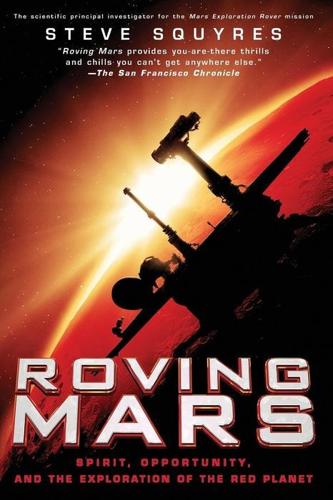
Roving Mars: Spirit, Opportunity, and the Exploration of the Red Planet
by
Steven Squyres
Published 2 Aug 2005
It seemed like an elegant concept: a tiny two-stage solid rocket that could boost a spacecraft the size of a coconut into orbit around Mars. It was called the Mini-MAV. When you put the whole scheme together it went something like this: In 2003, a big three-legged lander would carry our rover and a Mini-MAV to Mars, with the rover astride the Mini-MAV like Slim Pickens on the bomb in the scene at the end of Dr. Strangelove. We’d land on Mars, drive down some ramps, pick up rock samples, drive back up the ramps, stuff the samples into the coconut-sized spacecraft at the top of the Mini-MAV, drive back down the ramps again, and hide behind a rock so we wouldn’t get toasted. Then the Mini-MAV would be cranked up to a vertical position and fired, smoking the lander but launching the coconut into orbit around Mars.
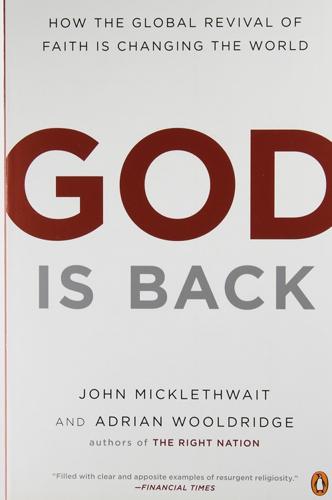
God Is Back: How the Global Revival of Faith Is Changing the World
by
John Micklethwait
and
Adrian Wooldridge
Published 31 Mar 2009
Bush was in the White House, explained the general, because “God put him there.” Who was America fighting against? Hardly Osama bin Laden or Saddam Hussein. America was in “a battle for our soul”—and the enemy was “a guy called Satan.” Boykin was hardly a marginal figure, a retired military man who had accidentally engaged in a mind-meld with Dr. Strangelove. He was deputy undersecretary of defense intelligence, one of the leaders of the hunt for bin Laden. Nor was this a momentary lapse. When he led the failed Black Hawk raid on Mogadishu in 1993, Boykin claimed that he “could feel the presence of evil . . . in a place that has rejected God.” He frequently argued that America was destined for victory in the war against Islam because “our God” is bigger than “their God.”17 And when Boykin’s speaking tour became a matter of controversy, the administration stuck by him.
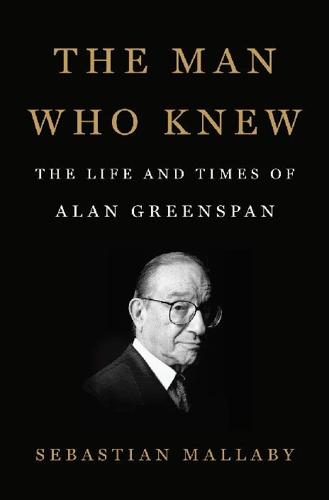
The Man Who Knew: The Life and Times of Alan Greenspan
by
Sebastian Mallaby
Published 10 Oct 2016
I will tell you that if the 2 percent inflation figure gets out of this room, it is going to create more problems for us than I think any of you might anticipate.” The previous summer, Greenspan had marked the opening of the Fed’s new boardroom by casting himself as a James Bond villain. Now he had unwittingly recalled another classic movie. In Stanley Kubrick’s cold-war parody, Dr. Strangelove, a Germanic wheelchair-bound defense scientist propels himself alarmingly toward the camera and lays out the logic of nuclear deterrence: “Ze whole point of ze Doomsday Machine is lost if you keep it a secret!” Of course, the same doomsday logic holds for inflation targets: just as world-destroying weapons deter enemies only if their existence is well publicized, so an inflation target will work better if the public knows about it.
…
“But if we give no information about our future intentions, then somehow or another the market has to make an assumption or come to some conclusion about what our policy is going to be. The presumption, therefore, is that we are so bad at giving information that we better leave it to the market to draw information from nothing. I don’t want to be that pessimistic.” Bernanke’s logic was irrefutable: he had exposed the Dr. Strangelove quality of Greenspan’s unannounced inflation target. Whether the Fed should focus exclusively on inflation was doubtful, given the disruptive power of financial bubbles. But if the Fed decided to target inflation, it would be better off saying so. Early in Greenspan’s tenure, Don Kohn had headed off an early call for inflation targeting, declaring, “It’s what we do more than what we say—read our actions rather than our lips.”52 Now, however, Kohn acknowledged Bernanke’s point.
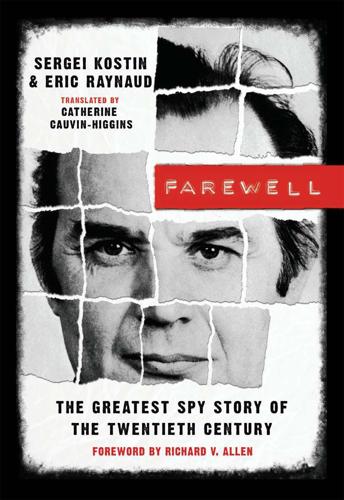
Farewell
by
Sergei Kostin
and
Eric Raynaud
Published 14 Apr 2011
He even received the French Legion of Honor for his collaboration in a joint venture with General Electric and SNECMA, leading to the development of the CFM56 aircraft engines that would equip the first Airbus airplanes.6 In the mid-sixties, Gus Weiss joined the Hudson Institute, where he met Richard Allen. He worked in collaboration with Professor Hermann Kahn, the thermonuclear war theoretician, also known to have inspired the Dr. Strangelove character in Stanley Kubrick’s movie. At the NSC, this even earned him the nickname of “Dr. Strangeweiss,” which could not bother this man known for his strong sense of humor and for practicing self-derision occasionally. True, Gus Weiss could seem strange, mostly because of his physical appearance.

The Complete Thyroid Book
by
Kenneth Ain
and
M. Sara Rosenthal
Published 1 Mar 2005
“Fluoride Caused My Thyroid Cancer” We discuss environmental factors likely to have caused many thyroid cancers in Chapter 9. However, the fluoride rumor keeps resurfacing. For the record, fluoride does not cause thyroid cancer. There is not one shred of evidence demonstrating this. The diatribe on fluoride has ranged from maniacal ideas regarding Russian agents (such as those found in the famous movie Dr. Strangelove) to current attempts to overgeneralize from inapplicable experiments and claim causation for all of the world’s ills. It’s important to note many countries without fluoridation have thyroid cancer rates as high as North America. “A Low-Iodine Diet Means No Sodium, So Labels That Say ‘Low Sodium’ Are Fine” Sodium (Na) is a metal.

From Counterculture to Cyberculture: Stewart Brand, the Whole Earth Network, and the Rise of Digital Utopianism
by
Fred Turner
Published 31 Aug 2006
These included his infamous scenarios for nuclear Armageddon, in which he tried to convince policymakers that nuclear warfare was a real possibility and one for which they should prepare, and his equally wellknown visions for America in the year 2000.19 On the one hand, Kahn’s work on nuclear war seemed to many to be the epitome of American technocratic hubris. Even today, many remember Kahn primarily as the model for Stanley Kubrick’s Dr. Strangelove. Rather than acknowledge the utter futility of a nuclear war, Kahn seemed to revel in planning for its aftermath. He once told a reporter, “We [scenario writers] take God’s view. The President’s view. Big. Aerial. Global. Galactic. Ethereal. Spatial. Overall. Megalomania is the standard occupational hazard.”

Cities Under Siege: The New Military Urbanism
by
Stephen Graham
Published 30 Oct 2009
He added the USAF needed to ‘destroy … every work of man in North Vietnam’. Despite the waning fashionability of the modernization theories, its dark shadow, demodernization theory remains as popular as ever among the US military. Le Mayesque and Rostowian imperatives have tripped as well from the lips of many a Dr. Strangelove-style US politician, US Air Force commander and hawkish US commentator since the 1960s. Influential celebrant of neoliberal globalization Thomas Friedman, for example, deployed such arguments as NATO cranked up its bombing campaign against Serbia in 1999. Picking up a variety of historic dates that could mirror the post-bombing future of Serbian society, Friedman urged that the movements and mobilities sustaining life in Serbian cities be brought to a grinding halt.
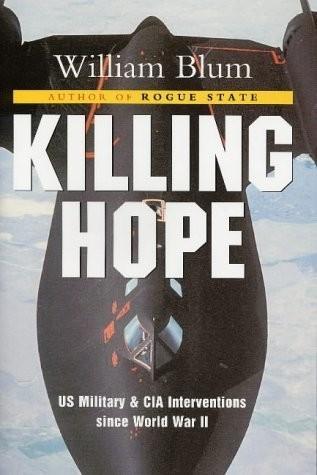
Killing Hope: Us Military and Cia Interventions Since World War 2
by
William Blum
Published 15 Jan 2003
The CIA had its own military capabilities, including its own air force; for all intents and purposes, its own foreign service with, indeed, its own foreign policy, though never at cross-purposes with fundamental US cold-war, anti-communist ideology and goals. 148 Seemingly without fear of exposure or condemnation, the Agency felt free to carry out sundry Dr. Strangelove experiments involving control of the human mind and all manner of biochemical weapons, including the release of huge amounts of bacteria into the air in the United States which resulted in much illness and a number of deaths. It was all very heady stuff for the officers of the CIA, playing their men's games with their boys' toys.
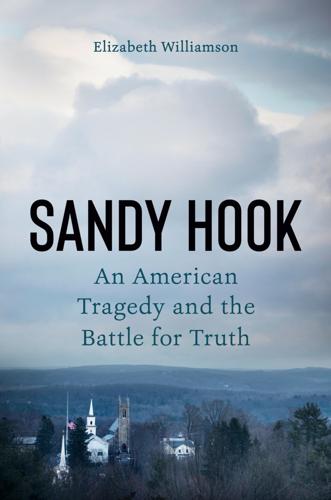
Sandy Hook: An American Tragedy and the Battle for Truth
by
Elizabeth Williamson
Published 8 Mar 2022
He’d wash it down with beer or vodka, wiping his mouth on the back of a thick hand. Josh Owens is a stocky man with shaggy hair and beard and heavy-lidded eyes that make him look thoughtful, or sad. He first heard about Alex Jones as a teenager, talking with a buddy about the scene in Stanley Kubrick’s Dr. Strangelove in which Sterling Hayden, as the deranged Brigadier General Jack D. Ripper, tells Peter Sellers’s Group Captain Lionel Mandrake that water fluoridation “is the most monstrously conceived and dangerous communist plot we’ve ever had to face.” Owens’s friend recommended Owens check out Alex Jones, who made similar claims.

Consumed: How Markets Corrupt Children, Infantilize Adults, and Swallow Citizens Whole
by
Benjamin R. Barber
Published 1 Jan 2007
These were all films that helped define Hollywood filmmaking at its best in terms of excellence and entertainment but also with respect to the breaking of taboos and the assuming of a social agenda. Other studios made risky political films such as the nuclear-winter nightmare On the Beach (five survivors contemplate the aftermath of nuclear war) and sardonic black Armageddon comedies like Peter Sellers’s Dr. Strangelove (directed by Stanley Kubrick). A handful of bankable stars including Robert Redford and Warren Beatty used the fame and fortune they acquired from acting to develop film projects that pressed Hollywood’s tolerance for politically and culturally transgressive films—notably, Warren Beatty’s Reds (a semidocumentary narrative history of early Communism) and his more recent satire on congressional hypocrisy called Bulworth.

The Matter of the Heart: A History of the Heart in Eleven Operations
by
Thomas Morris
Published 31 May 2017
METRONOMES AND NUCLEAR REACTORS Stockholm, 8 October 1958 On 6 April 1964, while in Los Angeles filming the Billy Wilder comedy Kiss Me, Stupid, Peter Sellers had a massive heart attack and was rushed to hospital. At the age of thirty-eight the British actor was one of the biggest stars in Hollywood: Dr Strangelove, the film that would earn him his first Oscar nomination, had just been released, and his surprise marriage to Britt Ekland a few weeks earlier meant that his name was seldom out of the gossip columns. When he arrived at Cedars of Lebanon Hospital, Sellers was still conscious and his condition appeared relatively stable, but over the next twenty-four hours he suffered eight cardiac arrests.

Evil Geniuses: The Unmaking of America: A Recent History
by
Kurt Andersen
Published 14 Sep 2020
In 1964 the Oxford mathematician and AI expert who was about to advise Stanley Kubrick on creating HAL for 2001: A Space Odyssey wrote that although “this point is made…seldom outside of science fiction,” in fact “the first ultraintelligent machine is the last invention that man need ever make,” raising the “possibility that the human race will become redundant.” But then in 1967 Herman Kahn, an inspiration for the title character in Kubrick’s previous movie, Dr. Strangelove, said not to worry, keep loving the new—automation would lead in no time to four-day workweeks and three months of vacation for everybody. And to the utopian youth of the late 1960s, computer-generated ultra-prosperity looked sweet: if work would soon become unnecessary, conventional ambition could be abandoned.

Fancy Bear Goes Phishing: The Dark History of the Information Age, in Five Extraordinary Hacks
by
Scott J. Shapiro
The press pursued this darker theme by wondering whether a person with a computer, telephone, and modem—perhaps even a teenager—could hack into military computers and start World War III. All three major television networks featured the movie on their nightly broadcasts. ABC News opened their report by comparing WarGames to Stanley Kubrick’s Cold War comedy, Dr. Strangelove. Far from being a toy for bored suburban teenagers, the internet, the report suggested, was a doomsday weapon capable of starting nuclear Armageddon. In an effort to reassure the public, NORAD spokesperson General Thomas Brandt told ABC News that computer errors as portrayed in the film could not occur.
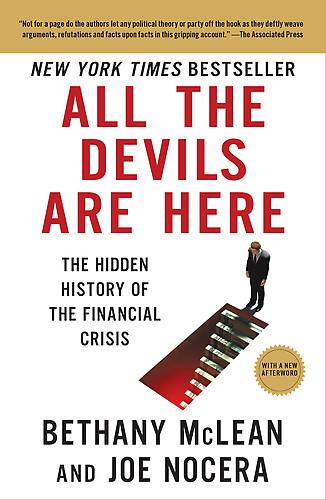
All the Devils Are Here
by
Bethany McLean
Published 19 Oct 2010
Eventually, though, the big boys at Goldman Sachs and J.P. Morgan would come out with their own version of the FP product, at which point the profit margins would be squeezed and FP would move on to something even more exotic. Sosin’s propensity for pushing the edge of the derivative envelope caused the Wall Street Journal to label him the “Dr. Strangelove of derivatives.” The other thing that traders noticed was that Hank Greenberg was simply not part of their lives. Elsewhere in the company, Greenberg had no compunction about calling a midlevel manager in some division somewhere to find an answer to a question he had. That never happened at FP.
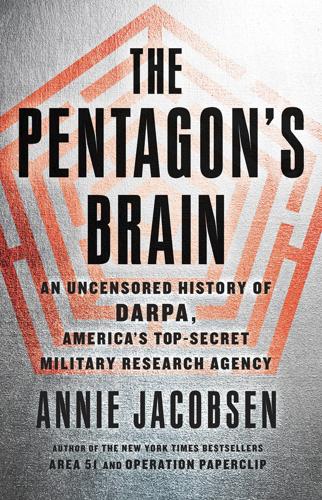
The Pentagon's Brain: An Uncensored History of DARPA, America's Top-Secret Military Research Agency
by
Annie Jacobsen
Published 14 Sep 2015
Free Will and the Science of the Brain. New York: HarperCollins, 2011. Gezari, Vanessa M. The Tender Soldier: A True Story of War and Sacrifice. New York: Simon & Schuster, 2013. Gilbert, Daniel. Stumbling on Happiness. New York: Alfred A. Knopf, 2006. Goodchild, Peter. Edward Teller: The Real Dr. Strangelove. Cambridge: Harvard University Press, 2004. Gouré, Leon. Civil Defense in the Soviet Union. Westport, CT: Greenwood Press, 1986. Gravel, Mike. The Pentagon Papers: Gravel Edition. Volume 4. Boston: Beacon Press, 1971. Green, Tom. Bright Boys. Natick, MA: A. K. Peters, 2010. Hafner, Katie, and Matthew Lyon.
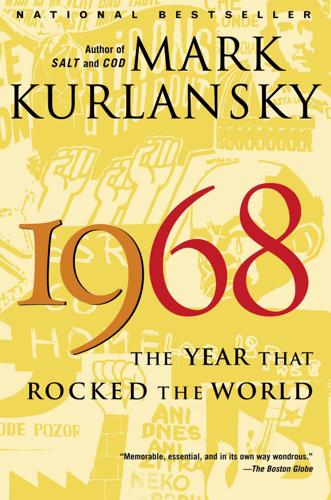
1968: The Year That Rocked the World
by
Mark Kurlansky
Published 30 Dec 2003
Not only were hordes of television and print media planning to be there, but writers were coming, too. Playwright Arthur Miller was a Connecticut delegate for McCarthy. Esquire magazine commissioned articles from William Burroughs, Norman Mailer, and Jean Genet. Terry Southern, who had written the screenplay of the antinuclear classic Dr. Strangelove, was there, as was poet and pacifist Robert Lowell. And of course Allen Ginsberg was there, half as poet, half as activist, mostly trying to spread inner peace and spirituality through the repetition of long, deep tones: “Om . . .” A mayor other than Daley might have recognized that bottled pressure explodes and made provisions for a demonstration that some said might involve as many as a million people.
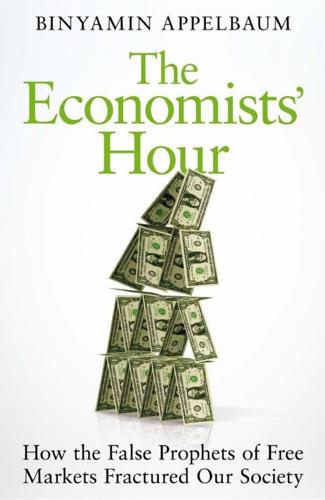
The Economists' Hour: How the False Prophets of Free Markets Fractured Our Society
by
Binyamin Appelbaum
Published 4 Sep 2019
Schelling’s studies of Cold War dynamics led him to suggest to the Kennedy administration that it should establish a hotline with the Kremlin to limit the chances of miscommunication. His expertise also brought the movie director Stanley Kubrick to Schelling’s home outside Boston. The two men spent a long day in 1962 discussing the plot of Kubrick’s black comedy Dr. Strangelove. And, in 1965, it led the Brookings Institution to invite Schelling to contribute a paper on the vexing problem of valuing human life. The practical issue confronting policy makers, Schelling said, was how much to spend on problems that posed relatively small risks to large numbers of people, like the threat of disease, traffic accidents, or pollution.
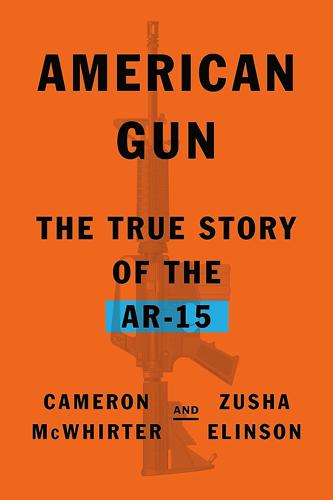
American Gun: The True Story of the AR-15
by
Cameron McWhirter
and
Zusha Elinson
Published 25 Sep 2023
In 1954, Life wrote a glowing profile of “the Toughest Cop of the Western World,” and relayed an anecdote of LeMay going on a mission with one of his bombing crews. When the pilot asked the general to put out his lit cigar because it could cause the plane to explode, LeMay purportedly replied, “It wouldn’t dare!” Many liberals loathed LeMay’s gargantuan bravado. In Stanley Kubrick’s 1964 film Dr. Strangelove, the crazed Air Force Brigadier General Jack D. Ripper, modeled on LeMay, set off a nuclear war. Boutelle couldn’t have connected with a better insider at the air force. He worked the connection often, arranging dinners and trips with the general, including a Louisiana fishing expedition. Those also invited included Vice President Richard Nixon and James Shepley, chief of Time-Life’s influential Washington Bureau.

Aerotropolis
by
John D. Kasarda
and
Greg Lindsay
Published 2 Jan 2009
Lakewood, the “Levittown of the West,” was a Douglas factory town. Lockheed assembled its wide-body TriStar in Burbank, once it had finished the U-2 and SR-71 spy planes. The aerospace industry pollinated everything it touched. CalTech didn’t emerge as a rival to MIT until the army endowed its Jet Propulsion Laboratory. Over in Santa Monica, the Dr. Strangeloves of RAND plot-ted to win thermonuclear war in between rounds of margaritas. By 1960, Ford A. Carpenter’s prediction of a Detroit-of-the-air had come to fruition, as a full third of Southern California’s jobs were directly or indirectly related to aerospace, earning it the nickname the “Warfare State.”
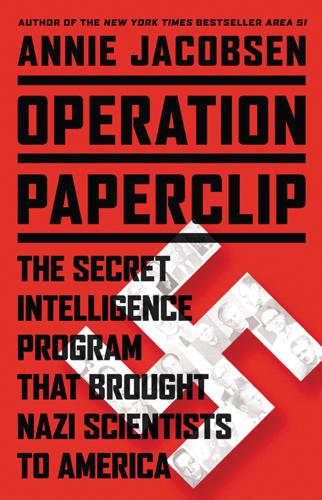
Operation Paperclip: The Secret Intelligence Program That Brought Nazi Scientists to America
by
Annie Jacobsen
Published 11 Feb 2014
One night, before an Apollo mission, von Braun stormed out of a press conference after a reporter asked him if he could guarantee that the rocket would not hit London. Tom Lehrer wrote a song famously satirizing von Braun: “ ‘Once the rockets are up, who cares where they come down? That’s not my department,’ says Wernher von Braun.” Filmmaker Stanley Kubrick created a von Braun–inspired character in his black comedy Dr. Strangelove, in which a mad scientist famously gets out of a wheelchair and cries, “Mein Führer, I can walk!” But in 1963, in East Berlin, a popular author and lawyer named Julius Mader wrote a book called The Secret of Huntsville: The True Career of Rocket Baron Wernher von Braun. On the dust jacket there was a drawing of von Braun wearing a black SS-Sturmbannführer’s uniform.
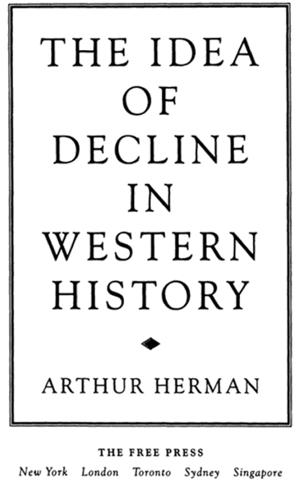
The Idea of Decline in Western History
by
Arthur Herman
Published 8 Jan 1997
* The same hypercivilized species reappears in Aldous Huxley’s Brave New World, with its Alphas and Betas ruling over the proletarian Gammas, Deltas, and Epsilons. * This scenario, too, would become a favorite motif for science fiction writers: the atomic weapon as modern man’s “sorcerer’s apprentice,” returning him to a savage, primordial state, both as wielder of that power in films such as Dr. Strangelove and as its victim, as in The Planet of the Apes, A Canticle for Liebowitz, A Clockwork Orange, and many others. * Toffler’s phrase not only reminds us of Walter Benjamin’s view of technological society. It is also reminiscent of the discussion of “shell shock” during the First World War as a form of degenerative disease
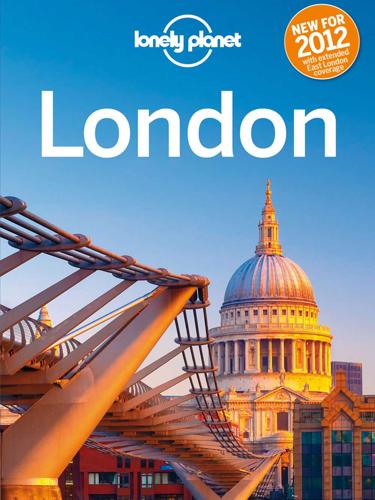
Lonely Planet London
by
Lonely Planet
Published 22 Apr 2012
In business for decades, loyal customers swear by it and the knowledgeable booksellers spill forth with well-read pointers. Limelight Movie Art Film Posters Offline map Google map ( 7751 5584; www.limelightmovieart.com; 313 King’s Rd SW3; 11.30am-6pm Mon-Sat; Sloane Sq or South Kensington) This fantastic shop is ideal for collectors of vintage film memorabilia, or merely nostalgic browsers. A framed Dr Strangelove (£850) would look good on anyone’s wall, or there’s 1979’s Alien (£475), Dr No (£385, unframed) and many, many more. Conran Shop Design Offline map Google map ( 7589 7401; Michelin House, 81 Fulham Rd SW3; 10am-6pm Mon, Tue & Fri, to 7pm Wed & Thu, to 6.30pm Sat, noon-6pm Sun; South Kensington) Located within iconic Michelin House, this splendid design shop constantly rewards visits with ideas, from chic canvases of literary first editions, quirky gifts for the kids, lovely deco-style furniture, trendy minimalist wristwatches and much more.
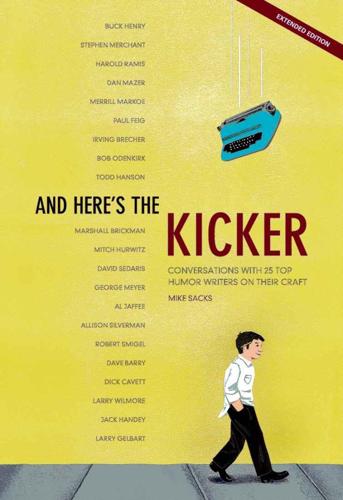
And Here's the Kicker: Conversations with 21 Top Humor Writers on Their Craft
by
Mike Sacks
Published 8 Jul 2009
I remember [the film director and screenwriter] James Toback trying to perform some push-ups and running out of steam. The restaurant's owner, Elaine Kaufman, said, “Put a broad under him.” You knew Terry Southern quite well, didn't you? We were good friends, particularly in his late years. Do you think Terry's contribution was important to Dr. Strangelove? Stanley Ku-brick claimed that Terry's role wasn't as significant as many people imagined. I would trust Terry's account in this area. He was always collaborating and getting into awful squabbles about credits. He was a generous man and easily taken advantage of — picked apart, really — by the wolves.
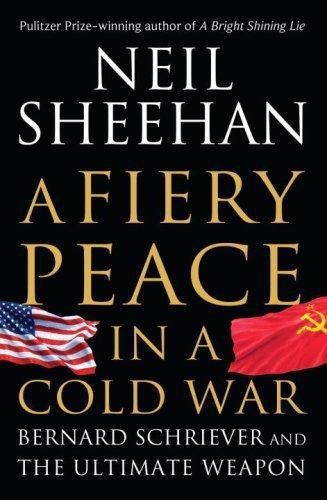
A Fiery Peace in a Cold War: Bernard Schriever and the Ultimate Weapon
by
Neil Sheehan
Published 21 Sep 2009
BOMBER LEADER He would be remembered as the crazed general who wanted to bomb the people of North Vietnam “back into the Stone Age,” as the crank who ran for vice president on the 1968 presidential ticket of George Wallace, the racist from Alabama, and as the inspiration for General Jack D. Ripper in Stanley Kubrick’s film Dr. Strangelove. But in earlier years there had been a great deal more to Curtis Emerson LeMay. He had been the greatest leader of bomber aircraft in the history of American aviation until his judgment was warped by the advent of nuclear weapons and the fear and fervor of the Cold War. He looked the grim part of a bomber commander.
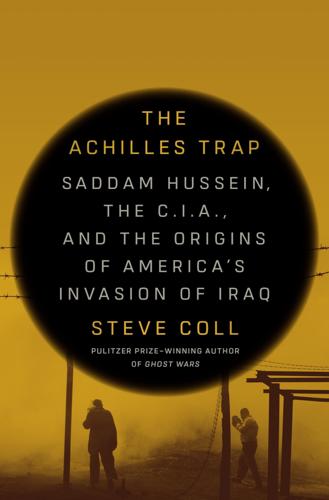
The Achilles Trap: Saddam Hussein, the C.I.A., and the Origins of America's Invasion of Iraq
by
Steve Coll
Published 27 Feb 2024
Saddam had hidden his biological weapons, suggesting that he might be more interested in keeping his options open than in classical deterrence. In any event, it is difficult to deter enemies by developing a terrible weapon if your adversaries do not know for certain that you possess such a weapon. As Dr. Strangelove tells the Soviet ambassador in the filmmaker Stanley Kubrick’s classic satire about nuclear deterrence, “Of course, the whole point of a Doomsday Machine is lost if you keep it a secret!” The circularity of Iraq’s deception had become a whirlpool, spinning Ekéus and his team around and around, forcing them to consider at an almost metaphysical level what could be known and not known in Saddam Hussein’s Iraq.
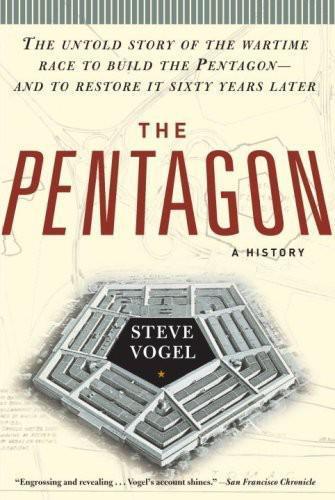
The Pentagon: A History
by
Steve Vogel
Published 26 May 2008
A private elevator took McNamara down to the National Military Command Center, which had opened only three weeks earlier; it was an initiative he and his team of analytical “whiz kids” had taken to establish worldwide command and control at the Pentagon. The Joint War Room had been rebuilt and combined with reconnaissance, intelligence, and communications facilities. The timing had proven fortuitous. A fanciful version of the Pentagon war room, depicted two years later in Stanley Kubrick’s film Dr. Strangelove, or: How I Learned to Stop Worrying and Love the Bomb, would cement a crazed image of the place in the minds of millions around the world. The reality was strange enough. Sitting at a large oval-shaped brown table in the green-carpeted main conference room, McNamara and the joint chiefs could routinely speak by secure telephone with major field commanders.
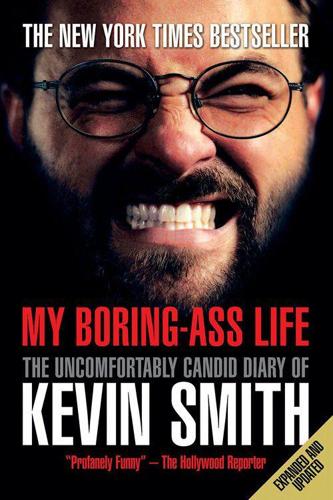
My Boring-Ass Life: The Uncomfortably Candid Diary of Kevin Smith
by
Kevin Smith
Published 24 Sep 2007
It’s been about two years since I read the script, but even so, I don’t recognize any of what’s going on. Based on that, I start reading the new draft of the script. Turns out Richard’s given the script a complete overhaul. What was once a film that played like a cross between Pulp Fiction and Short Cuts is now a quasi-sci-fi epic that plays like a cross between Dr. Strangelove and Donnie Darko. Whereas the previous draft was set in a recognizable world, this version’s set in the not-too-distant future, after a second terrorist attack on the US. Neither film is better than the other; both are pretty brilliant. This version, however, is more inscrutable — more Darko.

The Age of Wonder
by
Richard Holmes
Published 15 Jan 2008
♣ This benign and eccentric image defined the Victorian ideal of the scientist, just as the later faintly surreal images of Albert Einstein-riding a bicycle or putting his tongue out-defined the twentieth-century one. The current images of Stephen Hawking, brilliant but paralysed and gargoyle-like in his wheelchair, perhaps better express the uncertainty of contemporary attitudes to science. The wheelchair itself takes us back to Dr Strangelove, but also eventually returns us to Sir Joseph Banks, rolling briskly into one of his scientific breakfasts in Soho Square, keen to meet his next young protégé and launch a new project ‘for the Benefit of all mankind’. Epilogue I was fifty-four when I gave my first lecture at the Royal Institution, Albemarle Street.

This Changes Everything: Capitalism vs. The Climate
by
Naomi Klein
Published 15 Sep 2014
During the Cold War, U.S. physicists imagined weakening the nation’s enemies by stealthily manipulating rainfall patterns, whether by causing droughts or by generating targeted storms that would turn a critical supply route into a flooded mess, as was attempted during the Vietnam War.10 So it’s little wonder that mainstream climate scientists have, until quite recently, shied away from even discussing geoengineering. In addition to the Dr. Strangelove baggage, there was a widespread fear of creating a climate moral hazard. Just as bankers take greater risks when they know governments will bail them out, the fear was that the mere suggestion of an emergency techno-fix—however dubious and distant—would feed the dangerous but prevalent belief that we can keep ramping up our emissions for another couple of decades.
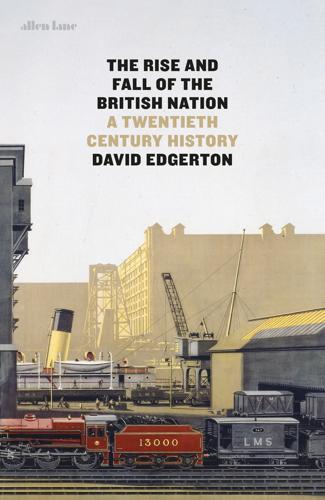
The Rise and Fall of the British Nation: A Twentieth-Century History
by
David Edgerton
Published 27 Jun 2018
What could be achieved is shown by the work of US directors working in the United Kingdom. The blacklisted Joseph Losey made the cool and dark The Servant (1963) and Accident (1967) (both with Dirk Bogarde, and both adapted for the screen by Harold Pinter), and Stanley Kubrick made the immortal Dr Strangelove (1963). The Bond films were manufactured by British crews in British studios but were American/Canadian productions for a global market. One way out of the seeming conundrum of historically unprecedented creative activity combined with disappointing economic performance is to explain away what is seen as a paradox of high innovation and low growth.
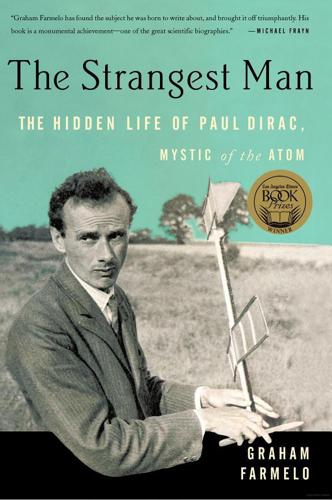
The Strangest Man: The Hidden Life of Paul Dirac, Mystic of the Atom
by
Graham Farmelo
Published 24 Aug 2009
The tension dropped on 28 October, when the Soviets agreed to remove the missiles in return for concessions from the Americans; it seemed to many – including Dirac, watching the crisis unfold on his television in Princeton and possibly wondering whether he was about to see his third world war – that humanity had been lucky to survive. The planet seemed to be at the mercy of its Dr Strangeloves. Bohr lived just long enough to see the Cuban missile crisis. Three weeks later, after Sunday lunch at home with his wife Margrethe, he went upstairs for a nap and died of heart failure. In a letter of condolence to Margrethe, Dirac said that he was ‘excessively sorry’ to hear of ‘the loss of one of my closest friends’ and recalled his first stay with the Bohrs in Copenhagen in 1926: ‘I was greatly impressed by the wisdom that Niels showed, not only in physics but in all branches of human thought.
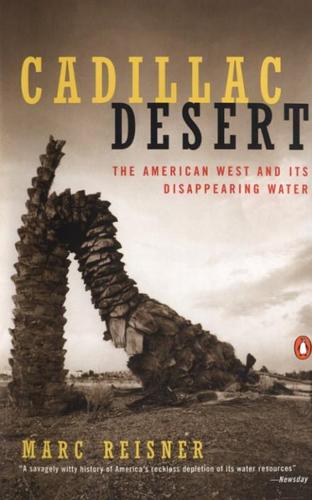
Cadillac Desert
by
Marc Reisner
Published 1 Jan 1986
Dallas Creek Project (feasibility data). U.S. Bureau of Reclamation (undated). Dallas Creek Project. U.S. Department of the Interior, Water Projects Review, April 1977. Dams in Grand Canyon—A Necessary Evil? Sierra Club, August 1965. “Debate Roils over Utah’s Troubled Waters.” High Country News, April 4, 1980. “Dr. Strangelove Builds in the Desert.” Maricopa Audubon Society, 1976. “Dolores Project.” Private papers of Roger Morrison. Dolores Project (feasibility data). U.S. Bureau of Reclamation (undated). “The Echo of Echo Park.” Colorado River Water Conservation District, Glenwood Springs, Colorado, July 1981.
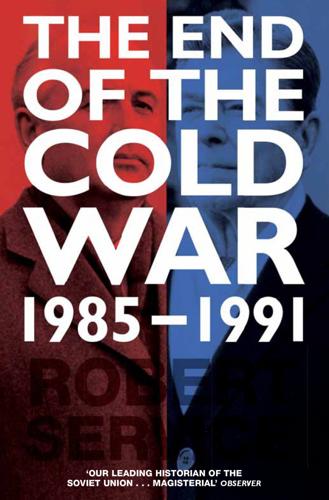
The End of the Cold War: 1985-1991
by
Robert Service
Published 7 Oct 2015
They subsidized client states and sought to control them in their own interests. When forecasting the inevitable demise of the rival superpower, they predicted that all manner of evil would vanish from the earth on that joyous day. At the same time they knew very well – and Stanley Kubrick’s 1964 film Dr Strangelove made it vividly clear – that any small miscalculation could lead to the firing of nuclear missiles which would produce a planetary disaster. Despite every technological advance, mistakes could much too easily still occur along the chain of surveillance. The political leaders with responsibility for war and peace depended on their counter-espionage agencies and alarm systems for information about whether the other side was about to get their retaliation in first.

Lonely Planet Morocco (Travel Guide)
by
Lonely Planet
,
Paul Clammer
and
Paula Hardy
Published 1 Jul 2014
Museo Militar MUSEUM OFFLINE MAP GOOGLE MAP ( 0952 68 55 87; 10am-2pm Tue-Sun) The history of the Spanish protectorate is dominated by military history, and this museum is the one place where you can feel the grand sweep of that violent drama, with martial music playing in the background. Don’t miss the antique photographs room, where biplanes, legionnaires and Berber horsemen all fuse into a dreamy adventure novel, or the ‘do not touch the cannonballs’ sign, which is straight from Dr Strangelove . New Town Construction of the new part of town, west of the fortress, began at the end of the 19th century. Laid out by Gaudí-disciple Don Enrique Nieto, Melilla is considered by some to be Spain’s ‘second modernist city’, after Barcelona. The highlight is Plaza de España, with the lovely facade of the Palacio de Asamblea facing Parque Hernández.

The Age of Surveillance Capitalism
by
Shoshana Zuboff
Published 15 Jan 2019
In his 1967 book The Year 2000 the hyper-rational wunderkind futurist Herman Kahn anticipated many of the capabilities that Varian now assigns to the new extraction/execution architecture.55 Kahn was no shrinking violet. He was rumored to be director Stanley Kubrick’s model for the title character in Dr. Strangelove, and he was well-known for arguing that nuclear war is both “winnable” and “survivable.” Yet it was Kahn who foresaw innovations such as Varian’s vehicular monitoring system and characterized them as “a twenty-first century nightmare.” Among his many technology-oriented insights, Kahn foresaw automated computer systems that track all vehicular movements and also listen to and record conversations with all the capability available for high-speed scan and search.
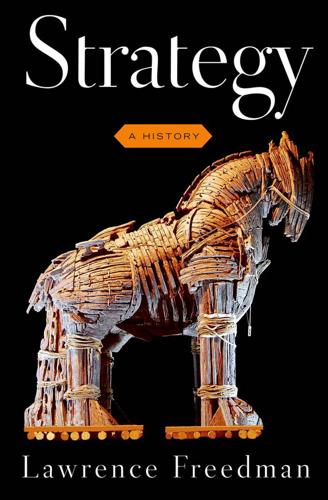
Strategy: A History
by
Lawrence Freedman
Published 31 Oct 2013
He was one of a number of figures in and around RAND during the 1950s—including Bernard Brodie, Albert Wohlstetter, and Herman Kahn—who despite their differences contributed to a developing framework for thinking about these weapons that acknowledged their horrific novelty yet tried to describe their strategic possibilities. At the time, Kahn—ebullient and provocative, and one possible model for Stanley Kubrik’s Dr. Strangelove—was the best known. His book On Thermonuclear War forged a link with Clausewitz, at least in its title, although his biographer doubted whether he had ever even done more than skimmed Clausewitz: “He never showed a smidgen of interest in any strategic theorist.”7 Wohlstetter described his prose as “dictated through a public address system.”8 He was nuclear strategy’s “first celebrity,” with his “physical mass and somewhat geeky cast” confirming myths that the ultimate war would be the product of the imaginings of “mad geniuses.”
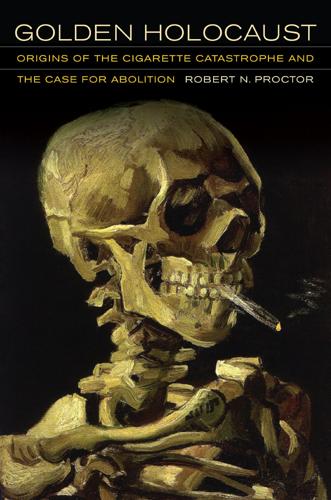
Golden Holocaust: Origins of the Cigarette Catastrophe and the Case for Abolition
by
Robert N. Proctor
Published 28 Feb 2012
Comparisons to the recent fluoridation flap became fashionable, with at least one newspaper, the Cincinnati Enquirer, refusing to crusade “on either side” given the lingering taint from that scandal, where “groundless fears” had tipped the scales of public opinion. (Paranoid conservatives had warned of a communist plot to poison the nation’s water supply—by adding fluoride to prevent tooth decay—prompting ridicule from progressives and mockery in films such as Stanley Kubrick’s Dr. Strangelove.) This same paper recalled a time when tobacco had been linked with leprosy, a “fantastic and baseless rumor that spread across the country like a prairie fire.” Some fun was also made of the fact that tobacco had once been blamed for tuberculosis—which from today’s vantage point turns out not to have been so crazy.
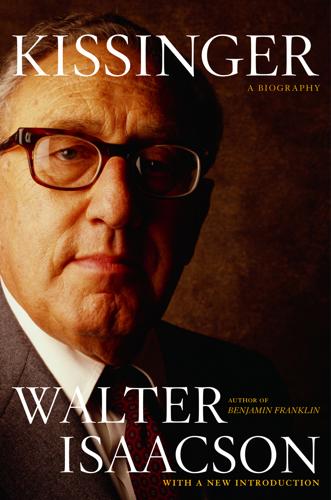
Kissinger: A Biography
by
Walter Isaacson
Published 26 Sep 2005
“Okay,” answered Ehrlichman, “but what if they knock out something of ours?” “Then it could escalate.” “How far?” “Well,” said Kissinger, “it could go nuclear.” It was not the sort of scenario to bandy about, especially in front of Ehrlichman, who already had his fears that Kissinger reminded him a little too much of Dr. Strangelove. The word soon floated around the White House that Kissinger was suggesting the possibility of a nuclear option.39 Frustrated by the bureaucracy’s mushiness, Kissinger told Halperin that they had to prepare a memo to the president. “That’s what we’re doing,” said Halperin. “No,” replied Kissinger, “I mean a serious one.

The Better Angels of Our Nature: Why Violence Has Declined
by
Steven Pinker
Published 24 Sep 2012
Unlike the major artworks deploring World War I, which appeared more than a decade after it was over, popular art in the 1960s condemned the nuclear arms race and the Vietnam War in real time. Antiwar advocacy was woven into prime-time television programs (such as The Smothers Brothers Comedy Hour and M*A*S*H) and many popular films and songs: Catch-22 • Fail-Safe • Dr. Strangelove • Hearts and Minds • FTA • How I Won the War • Johnny Got His Gun • King of Hearts • M*A*S*H • Oh! What a Lovely War • Slaughterhouse-Five “Alice’s Restaurant” • “Blowin’ in the Wind” • “Cruel War” • “Eve of Destruction” • “Feel Like I’m Fixin’ to Die Rag” • “Give Peace a Chance” • “Happy Xmas (War Is Over)” • “I Ain’t Marchin’ Anymore” • “If I Had a Hammer” • “Imagine” • “It’s a Hard Rain’s a Gonna Fall” • “Last Night I Had the Strangest Dream” • “Machine Gun” • “Masters of War” • “Sky Pilot” • “Three-Five-Zero-Zero” • “Turn!
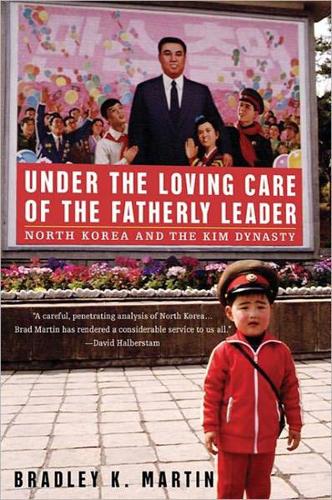
Under the Loving Care of the Fatherly Leader: North Korea and the Kim Dynasty
by
Bradley K. Martin
Published 14 Oct 2004
He failed to buy Hwang’s argument, believing that fighting American and South Korean soldiers was one thing; massacring civilians, quite another. He kept silent, though—“It’s hard to voice your opinion,” he said—and had no idea how many of his comrades agreed with the officer. Lt. Col. Hwang, who from Lee’s description sounded to me like Pyongyang’s version of Dr. Strangelove, was “one of the North Koreans most intensely loyal to Kim Il-sung,” Lee said. “He graduated from three universities and is a very important person in the development of nuclear and chemical weapons in North Korea. The development wouldn’t take place without him. Kim Jong-il during his birthday celebration personally thanked Hwang and gave him a commendation.”

Germany Travel Guide
by
Lonely Planet
Dokumentationsstätte Regierungsbunker HISTORIC SITE (Government Bunker Documentation Site; 917 10; www.regbu.de; adult/child €8/3.50; 10am-5pm Wed, Sat, Sun & holidays early Mar–mid-Nov, closed mid-Nov–early Mar) During the Cold War, there was no vast, top-secret bunker complex bored into the hillside 500m up the slope from the Museum Roemervilla – at least not officially. Since 2008, though, you can see the truth for yourself – at a 200m section of the nuclear-proof ‘Emergency Seat of the Constitutional Organs of the Federal Republic of Germany’, rechristened (in inimitable bureaucratese) as the Dokumentationsstätte Regierungsbunker. There’s a real Dr Strangelove quality to what comforts the bureaucrats thought would be good to have at hand as the world ended. BAD NEUENAHR The focal point of Bad Neuenahr, bisected by the Ahr, is the stately Kurhaus, an art nouveau structure built in 1903; next door is the casino. The nearby riverbanks are great for strolling.

Engineering Security
by
Peter Gutmann
As soon as this became popular enough to make a difference the spammers adapted their mailers to handle it and the defenders had to start looking for a new trick that would stem the flood until the 141 The fact that this protective measure exists is rarely publicised, which makes it about as useful a deterrent as the secret doomsday device in Dr. Strangelove. Passwords on the Server 611 spammers adapted again [320]. I once spent some time analysing a large amount of SSH traffic from a honeypot in an attempt to find any type of behaviour-based defence that could be used to filter out the attacks but found that for every defensive measure applied there was a relatively trivial change that could be made to the attack strategy that would quite effectively sidestep it.
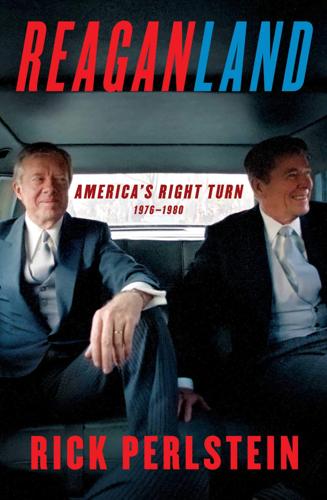
Reaganland: America's Right Turn 1976-1980
by
Rick Perlstein
Published 17 Aug 2020
He predicted that “as early as next year and at least by 1981” America could expect an ultimatum: surrender or suffer a nuclear exchange. Because the Soviets believed “that if there was such a nuclear exchange, they could destroy us and we couldn’t destroy them.” None of this was remotely true. He sounded like a character in Dr. Strangelove. And John Sears was terrified he could sound like that again, only with the national news cameras running, on any given day. * * * HOW NARROW WAS THAT NEEDLE Sears hoped to thread? Take a peek behind the curtain. One of the campaign-in-formation’s strategic initiatives went by the acronym PTWWT.

Europe: A History
by
Norman Davies
Published 1 Jan 1996
Each side possessed the kilotonnes to destroy the planet many times over; neither side could possibly use them. Advocates of the nuclear deterrent believed strongly that their point was being made. Their opponents—who could only speak fieely in the West—believed with equal passion that the military planners, like Dr Strangelove, had gone mad. But the Pax atomica held. With some slight delay, the political rhythms of the Cold War usually followed military developments. Tensions were highest in the late 1950s, since both sides could pursue their cause with convictions unsullied by failure. They reached their peak in the Cuban missile crisis of October 1962.

USA Travel Guide
by
Lonely, Planet
Around Omaha If you see large military planes drifting across the sky slowly, they’re likely headed for one of Omaha’s large military air bases. Strategic Air & Space Museum MUSEUM (www.strategicairandspace.com; I-80 exit 426, Ashland; adult/child $12/6; 10am-5pm, closed Wed winter) After WWII Omaha’s Offutt Air Force Base was home to the US Air Force Strategic Air Command, the force of nuclear bombers detailed in Stanley Kubrick’s Dr Strangelove. This legacy is documented at this cavernous museum, which boasts a huge collection of bombers, from the B-52 to the B-17. Don’t expect exhibits looking at the wider implications of bombing. It’s 30 miles southwest of Omaha, well within the kill radius of a 1-megaton bomb. Lincoln Home to the historic Haymarket District and a lively bar scene thanks to the huge downtown campus of the University of Nebraska, Lincoln makes a good overnight stop.